August 2023 Current Affairs
Project ‘AMBER’
In News: Recently, The Ministry of Skill Development and Entrepreneurship (MSDE), in partnership with Generation India Foundation (GIF) and Amazon Web Services India Private Limited (AWS India), is implementing project AMBER to provide cloud skills training to 1,500 learners.
About:
- PROJECT AMBER (Accelerated Mission for Better Employment and Retention) is a joint initiative of the National Skill Development Corporation (NSDC) and Generation India Foundation (GIF) under the aegis of the Ministry of Skill Development and Entrepreneurship (MSDE).
- This project is co-funded by MSDE (under the SANKALP programme) and private philanthropy and aims to train 30,000 youth, 50% of whom will be women trainees.
Key Features
-
- As part of this collaboration, the learners take part in AWS (re/Start), a workforce development program for unemployed and underemployed individuals.
- It covers fundamental AWS cloud skills as well as practical career tips, including resume writing and interview preparation.
- Through real-world scenario-based exercises, labs, and coursework, learners are trained in multiple technologies, including Linux, Python, networking, security, and relational databases.
- The program also covers the cost for learners to take the AWS Cloud Practitioner Certification exam, an industry-recognized credential that validates their cloud skills and knowledge and connects the participants with job interview opportunities in cloud or IT with local employers.
|
SANKALP Programme |
|
Right To Repair - Edukemy Current Affairs
In News: Apple’s surpise U-turn on its stand against the “righ to repair“ is significant as it was one of several tech giants that opposed the idea of allowing consumers to fix their own damaged devices.
About:
- The Right to Repair refers to government legislation that is intended to allow consumers the ability to repair and modify their own consumer electronic devices, where otherwise the manufacturer of such devices requires the consumer to use only their offered services.
- The idea originally originated from the USA where the Motor Vehicle Owners’ Right to Repair Act 2012, required the manufacturers to provide the necessary documents and information to allow anyone to repair their vehicles.
- Previously, MeitY launched a pilot project on Electronics Repair Services Outsourcing (ERSO) to make India a Global Repair Capital.
- The sectors identified for the right to repair include: farming equipment, mobile phones/tablets, consumer durables, and automobiles/automobile equipment.
- The right to repair has been recognized in many countries across the globe, including the USA, UK, and European Union.
Khanan Prahari to Combat Illegal Coal Mining
In News: Union government releases Khanan Prahari App to curb illegal Coal Mining through public participation
About Khanan Prahari to Combat Illegal Coal Mining
- The Ministry of Coal has recently introduced the Khanan Prahari app to foster public engagement to combat illegal coal mining.
- The mobile app will enable citizens to report illegal coal mining incidents using geo-tagged images and textual information.
- The corresponding web portal has been developed in collaboration with Bhaskaracharya Institute of Space Application & Geoinformatics and CMPDI.
- Illegal coal mining threatens the environment, miners' safety, traditional subsistence, and national economy.
- It will help in promoting E-Governance via Space Tech with the government employing space technology for transparent anti-illegal mining efforts.
- Government will also launch Khanan Prahari app to empower citizens to contribute to the fight against illegal coal mining.
- The app aims to encourage public involvement by reporting illegal mining while ensuring confidentiality of user’s identity ensuring privacy and security.
- Through the app users will be able to report illegal mining via photos and comments, geotagged through GPS.
- Complainants will receive a unique complaint number, allowing them to monitor their reports' progress.
- Overall, the Coal Mine Surveillance and Management System (CMSMS) and Khanan Prahari app will help in recognizing the importance of involving citizens in combating illegal mining.
Missing Public Information on RTI Online Portal
In News: Recently, the Union government’s RTI Online portal has experienced data loss, including past applications and responses, highlighting challenges in maintaining accountability under the RTI Act. The portal is currently undergoing maintenance to restore the missing archival data.
Right to Information (RTI) Act, 2005:
- It is a legislative framework enacted in 2005 that empowers Indian citizens to access information held by public authorities.
- This act aims to promote transparency, accountability, and participation in government processes.
- The RTI Act is derived from the Article 19(1)(a) of the Constitution of India, which guarantees the freedom of speech and expression. In Raj Narain vs the State of Uttar Pradesh case, the Supreme Court ruled that Right to information will be treated as a fundamental right under article 19.
- In normal course, information to an applicant is to be supplied within 30 days from the receipt of application by the public authority.
- If information sought concerns the life or liberty of a person, it shall be supplied within 48 hours.
- Section 8(1) lists exemptions, including matters of national security, but information can be disclosed if public interest outweighs harm.
- The Public Information Officer (PIO) acts as a liaison between citizens seeking information and government entities holding the information, central to the Act’s implementation.
- If a request is denied or unsatisfactory, citizens can appeal to the First Appellate Authority within the same authority. Further appeals can be made to Central or State Information Commissions.
Concerns associated with RTI in India:
- Backlog and Delays: With over 3 lakh pending complaints or appeals in various information commissions, the system is grappling with a substantial backlog, delaying timely responses.
- Vacancies in Key Positions: A notable shortage of Information Commissioners (ICs) and State Information Commissioners (SICs) hampers the smooth functioning of the RTI mechanism.
- Misuse and Frivolous Requests: The Act is sometimes exploited for personal or vexatious motives, causing inefficiency, resource wastage, and undermining genuine public interest.
- Misapplication of Exemptions: While the Act provides exemptions to safeguard sensitive information, these exemptions have been misused to reject valid requests, potentially infringing on transparency.
- Conflict with Data Protection: Emerging data protection and privacy laws have created a complex interplay between RTI rights and individual privacy, raising concerns about hierarchy and conflicts.
Way Forward:
- Open Data Ecosystem: Establish a comprehensive open data platform that provides government datasets in user-friendly formats, reducing the need for RTIs and enabling better analysis by citizens, researchers, and journalists.
- Blockchain Technology: Explore the use of blockchain for maintaining an unalterable and transparent record of government actions and RTI-related decisions, ensuring accountability and preventing data manipulation.
- Transparency Index: Develop a transparency rating system for public authorities based on their responsiveness to RTI requests, fostering competition and encouraging improved accountability standards.
National Judicial Data Grid - Edukemy Current Affairs
In News: Recently, the National Judicial Data Grid (NJDG), implemented under eCourts project has gained significant attention for its role in revolutionizing the judicial proceedings in India.
National Judicial Data Grid:
- National Judicial Data Grid (NJDG) is a database of orders, judgments and case details of 18,735 District & Subordinate Courts and High Courts. It has been created as an online platform under the eCourts Project.
- Data is updated on a near real-time basis by the connected District and Taluka courts. It provides data relating to judicial proceedings/decisions of all computerized district and subordinate courts of the country.
- All High Courts have also joined the NJDG through web services, providing easy access facility to the litigant public.
Important Features of NJDG:
- NJDG provides an Open Application Programming Interface (API) to Central & State Governments and is aligned with the National Data Sharing and Accessibility Policy (NDSAP).
- This API offers streamlined access to NJDG data using designated departmental IDs and access keys.
- This feature is intended for institutional litigants to evaluate and monitor cases, with plans to extend access to non-institutional litigants in the future.
Significance:
- NJDG works as a monitoring tool to identify, manage & reduce pendency of cases.
- It helps to provide timely inputs for making policy decisions to reduce delays in disposing of cases and helps in reducing case pendency.
- It also facilitates better monitoring of court performance and systemic bottlenecks, and, thus, serves as an efficient resource management tool.
- To track cases related to land disputes, Land Records data of 26 States have been linked with NJDG.
International Recognition:
- The World Bank has praised the National Judicial Data Grid in the Ease of Doing Business report for 2018.
- It has said that the grid has made it possible to generate case management reports, thereby making it easier to enforce contracts.
Khelo India initiative - Edukemy Current Affairs
In News: Recently, Union Minister of Youth Affairs and Sports inaugurated 33 Khelo India centres in the State of Rajasthan at the Sawai Mansingh Stadium in Jaipur.
About:
- Khelo India initiative/Scheme was introduced by the Indian government in 2017 to give a platform to grassroots athletes and build sports infrastructure across India, resulting in turning India into a sporting nation.
- The Khelo India Scheme is the flagship Central Sector Scheme of the Ministry of Youth Affairs & Sports.
- It encompasses the:
- Khelo India Youth Games (KIYG) (commenced 2018): Annual national competition for youngsters representing states.
- Khelo India University Games (KIUG) (commenced 2020): Showcases university students’ talent in sports.
- Khelo India Winter Games (Commenced 2020): Promotes winter sports in India.
- Part of the Khelo India State Centres of Excellence (KISCE) scheme: It aims to enhance sports infrastructure by supporting existing training facilities. It provides financial aid, staff, equipment, and resources at the grassroots level.
More About the News:
- National Center of Excellence with a dedicated sports science centre will be set up in Rajasthan along with an additional 18 Khelo India centres, thus taking the total number of Khelo India centres in the State to 51.
- Future competitions will be organised between Khelo India Centers while the Coaching the Coaches programme will also be extended to the Khelo India Center Coaches as well and the KIC coaches will be trained by getting them attached to national & international coaches.
Bharat New Car Assessment Programme
In News: Recently, the Ministry of Road Transport and Highways, Government of India, has introduced the Bharat New Car Assessment Programme (Bharat NCAP).
Bharat New Car Assessment Programme (Bharat NCAP):
- Vehicles, particularly passenger cars, will be subjected to rigorous crash testing procedures, and based on their performance, they will be assigned a safety rating ranging from one to five stars.
- The program aims to provide consumers with a tool for comparing the crash safety of different motor vehicles available in the market.
- Manufacturers can voluntarily submit their cars for testing according to Automotive Industry Standard (AIS) 197.
- Based on the test results, vehicles will be assigned star ratings for both Adult Occupants (AOP) and Child Occupants (COP) safety.
- The programme is applicable to passenger vehicles with not more than eight seats in addition to the driver’s seat with gross vehicle weight not exceeding 3,500 kgs.
Test Procedure and Parameters:
- The test procedure involves Frontal Offset Test, Side Impact Test and Pole-Side Impact Test.
- Bharat NCAP evaluates vehicles based on three crucial parameters:
- Adult Occupant Protection: This parameter assesses the level of protection a vehicle offers to adult passengers in the event of a crash.
- Child Occupant Protection: This parameter gauges a vehicle's effectiveness in safeguarding young passengers during collisions.
- Safety Assist Technologies: Modern vehicles are equipped with a range of safety assist technologies. This parameter examines the presence and effectiveness of these technologies in preventing accidents or minimizing their impact.
Evolution of Bharat NCAP:
- The Bharat NCAP draws inspiration from the Global NCAP, a project initiated by the U.K.-based NGO Towards Zero Foundation.
- The Global NCAP acts as a collaborative platform for new car assessment programs worldwide including countries such as the U.S. which has the world’s oldest crash testing regime since 1978.
- Over the years, India's testing protocols have evolved, with more than 50 crash test results published for the Indian market. Tata achieved India's first 5-star car rating in 2018.
Challenges to Bharat NCAP:
- Diverse Road Conditions: India's road infrastructure varies greatly, from congested urban roads to poorly maintained rural highways. Different road conditions can impact the way vehicles behave during crashes.
- Affordability and Market Dynamics: A substantial portion of the Indian population seeks budget-friendly vehicles, which might pose a challenge for manufacturers in implementing advanced safety features.
- Variety of Vehicles: Designing crash tests that effectively evaluate safety across this diversity, from compact cars to SUVs, requires thorough consideration of different vehicle dynamics.
Way Forward:
- There is a need to establish safety research and development hubs for India specific conditions in collaboration with academic institutions and manufacturers.
- There is a need to collaborate with local artists to create safety-themed public art installations near accident-prone areas that can raise awareness about the importance of safe driving.
- Insurance companies can assign a safety score to each vehicle model based on its NCAP rating. This safety score can be displayed prominently on advertisements and dealerships, making safety a focal point of consumer decisions.
Renouncing Indian citizenship - Edukemy Current Affairs
In News: A growing number of Indians are opting to surrender their passports, eventually renouncing their citizenship. Last month, the Central government told Parliament that more than 15 lakh Indians had relinquished their citizenship in the past decade, including around 87,000 this year, with most headed to the United States of America.
Statistics of Renouncing Citizenship:
- Over 17.5 lakh Indians have given up their citizenship in the past decade, with many heading to the United States.
- High-net-worth individuals are also leaving India (through investment migration), with around 6,500 expected to move out this year, making it the second-highest net outflow globally after China.
- The USA remains the most preferred destination, followed by Canada, Australia, and the UK.
- The MEA estimated the number of Indian nationals living abroad to be around 1.2 crore in 2021.
- Currently, India has the largest emigrant population in the world. It is the top origin country with nearly 1.8 crore people living outside their homeland, according to the World Migration Report 2022.

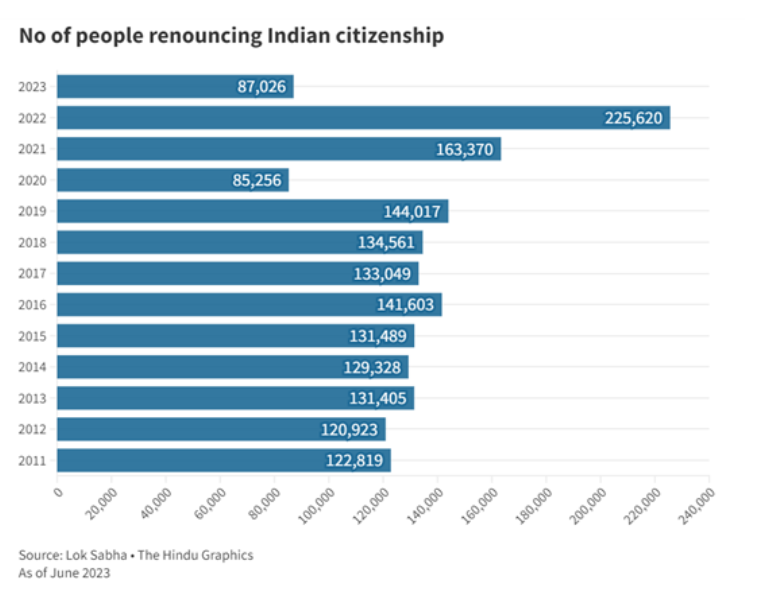
Reasons for renouncing citizenship:
- Better Economic Opportunities: Seeking improved job prospects and higher income abroad.
- Improved Social Security: Looking for better healthcare, education, and social welfare benefits in the new country.
- Lifestyle Considerations: Pursuing a better quality of life, safety, and overall living standards.
- Friendly Tax Legislation: Opting for countries with favourable tax laws and reduced financial burdens.
- Education Opportunities: Accessing higher education and specialized programs is not available in the home country.
- Ease of Mobility: Obtaining a passport that allows visa-free travel to more destinations globally.
- Political Stability: Escaping political instability, conflict, or governance issues in the home country.
- Investment and Business Opportunities: Exploring entrepreneurial ventures or investment opportunities abroad.
Indian Citizenship:
- Citizenship is the legal and social relationship between an individual and a state, signifying full membership and allegiance to that state.
- The Citizenship Act of 1955 prescribes five ways of acquiring citizenship, viz, birth, descent, registration, naturalisation and incorporation of territory.
- Renouncing Indian Citizenship:
- Voluntary Renunciation: An Indian citizen of full age and capacity can relinquish citizenship through their will. When an individual gives up citizenship, minor children also lose Indian citizenship but can regain it at 18.
- By Termination: If a person becomes a citizen of another country, Indian citizenship automatically ends, except during war.
- Deprivation by Government: Government can terminate citizenship if a citizen:
- Disrespects the Constitution
- Acquired citizenship through fraud
- Illegally traded or communicated with the enemy during war
- Is sentenced to over 2 years in prison within 5 years of registration or naturalization
- Lives outside India for 7 consecutive years
Polity Monthly Current Affairs - August 2023
In News: Recently, the G20 Pandemic Fund has approved a $25 million proposal from India’s Department of Animal Husbandry & Dairying, Ministry of Fisheries, Animal Husbandry & Dairying (DAHD).
About:
- The proposal focuses on “Animal Health Security Strengthening in India for Pandemic Preparedness and Response.”
G20 Pandemic Fund
- The G20 Pandemic Fund was established under Indonesia’s G20 Presidency.
- Purpose: To finance critical investments to strengthen pandemic prevention, preparedness, and response capacities at national, regional, and global levels, focusing on low- and middle-income countries.
The key components of the approved proposal include:
- strengthening disease surveillance and early warning systems,
- expanding the laboratory network,
- improving interoperable data systems,
- enhancing capacity for data analytics and risk communication,
- fortifying health security for transboundary animal diseases, and
- facilitating regional cooperation through cross-border collaboration.
Significance:
- The Pandemic Fund will not only bring additional, dedicated resources for pandemic prevention, preparedness, and response. It will also incentivize increased investments, enhance coordination among partners, and serve as a platform for advocacy.
- The project’s impact aims to decrease the risk of pathogens crossing from animals (both domesticated and wildlife) to humans, thereby safeguarding the health, nutrition, and livelihoods of vulnerable populations.
Implementing entity:
- The project will be implemented in collaboration with the Asian Development Bank (ADB) as the lead implementing entity with the World Bank and the Food and Agriculture Organization (FAO).
Ninth Commonwealth Parliamentary Association
In News: Recently, the Ninth Commonwealth Parliamentary Association (CPA) India Region Conference took place in Udaipur, India, and was inaugurated by Lok Sabha Speaker.
About:
Ninth Commonwealth Parliamentary Association (CPA):
- Theme: Strengthening Democracy and Good Governance in the Digital Age.
- The conference brought together Presiding Officers from 23 states and union territories, as well as Members of Parliament and Members of the Legislative Assembly of Rajasthan.
- The discussions focused on various aspects of parliamentary democracy and the need for the effective functioning of legislatures in addressing societal challenges and fostering democratic values.
Commonwealth Parliamentary Association (CPA): -
- Founded in 1911 as the Empire Parliamentary Association (EPA) with administration by the UK Branch, the CPA adopted its current name in 1948 to reflect its evolving ties with the Commonwealth.
- It is an association to serve the Parliamentarians of the Commonwealth Countries.
- Objective: to promote closer understanding and cooperation for common purposes between those engaged in the Parliamentary form of Countries of the Commonwealth.
- Mission: to promote knowledge of the constitutional, legislative, economic, social, and cultural aspects of parliamentary democracy, with particular reference to the countries of the Commonwealth.
- It provides the machinery for regular consultation and exchange of ideas and information among members of Commonwealth Parliaments.
- HQ: London, UK.
PM-DevINE and NESIDS Schemes - Edukemy Current Affairs
In News: Ministry of Development of North-East Region (MDoNER) issues revised guidelines to align PM-DevINE and NESIDS Schemes with intended directives to optimize its impact.
About PM-DevINE and NESIDS Schemes:
- The Prime Minister’s Development Initiative for North Eastern Region (PM-DevINE) is a fully funded government scheme to support development of North-east region.
- It was introduced in 2022-23 Union Budget to support infrastructure and social projects in the North-Eastern region of India.
- Key highlights: The scheme supports North-East infrastructure
- aligned with PM GatiShakti, generating livelihoods and addressing sector gaps.
- It covers eight North Eastern states: Arunachal Pradesh, Assam, Manipur, Meghalaya, Mizoram, Nagaland, Sikkim, and Tripura.
- It is overseen by MDoNER for project selection, approval, and monitoring with State Governments, NEC, and Central Ministries/agencies.
- It has an Empowered Inter-Ministerial Committee (EIMC) chaired by Secretary of Ministry of Development of North Eastern Region which meets at least once every three months.
- EMIC assesses initial project proposals, recommends project selection, evaluates final project proposals, monitors progress, proposes O&M mechanisms, and addresses implementation challenges.
- It also has a State Level Empowered Committee (SLEC) led by Chief Secretary, with Secretary of Planning as Convenor to review, prioritizes monitor implementation and proposes modifications.
- It has an approved outlay of 6600 crore for 2022-23 to 2025-26 with an initial allocation of Rs. 1,500 crores for FY 2022-23.
- North East Special Infrastructure Development Scheme (NESIDS)
- It was launched in 2017 with an objective to develop infrastructure in North Eastern states.
- It focuses on physical infrastructure like roads, bridges, power projects and provides financial assistance for various infrastructure projects.
- It is implemented through NEC or Central Ministries/agencies while the projects are identified and prioritized by North Eastern states through Empowered Inter-Ministerial Committee (EIMC).
- Overall, these revised guidelines will go a long way to enhance development in North-East India and will align with overarching goals of the region's sustainable growth.
Representation of People Act: Section 8(4) and the Lily Thomas Case
In News: Rahul Gandhi was disqualified on being convicted and sentenced to two years imprisonment in a 2019 defamation case. The disqualification was instant because of the Supreme Court of India’s judgment in Lily Thomas vs Union of India (2013).
Provisions for disqualification of a Member of Parliament:
- Article 102: It specifies that a person shall be disqualified for contesting elections and being a Member of Parliament under certain conditions mentioned as following:
- Holding an office of profit
- Being of unsound mind or insolvent
- Not being a citizen of India
- It also authorizes Parliament to make law determining conditions of disqualifications.
- The Representation of the People Act, 1951:
- It provides that a person will be disqualified if convicted and sentenced to imprisonment for two years or more.
- Section 8(1): It provides the offences punishable under the Representation of People Act, 1951.
- Section 8(2): It provides for the conviction of member in the offences related to hoarding or profiteering, adulteration of food or drugs, and any provision of the Dowry Prohibition Act.
- Section 8(3): It says that a person convicted of any offense other than those mentioned in the other two clauses, and sentenced to not less than two years shall be disqualified from the date of conviction, decided by the President under Article 103. However, it doesn’t directly say they’re disqualified instantly.
- Section 8(4): It has exempted sitting members from instant disqualification for three months to enable them to appeal against the conviction. This clause was struck down as ultra vires in the Lily Thomas vs Union of India, 2013.
Lily Thomas vs Union of India, 2013:
- The Supreme Court removed Section 8(4) because Parliament can’t treat lawmakers who are found guilty differently. This is because Article 102(1) says lawmakers and candidates should be treated the same way.
- However, when it comes to treating them differently, the Constitution actually allows it. Article 103 says that for current lawmakers, the President will decide if they should be disqualified under Article 102(1).
Rahul Gandhi Case:
- The Supreme Court stayed the conviction: It did not express any opinion on the question of whether a stay of conviction is also necessary or on suspending the disqualification.
- The Court observed, if the period of imprisonment was less by one day the disqualification would not have occurred.
- Lok Sabha Secretariat cannot declare disqualified without referring the case to the President under Article 103 for a declaration. The power is vested in the President under Article 103.
Way Forward:
- The issue of instant disqualification needs to be addressed urgently as it may affect the career of legislators.
- The judgment in Lily Thomas has not resulted in any perceptible qualitative change in the criminal proclivity of politicians. Politicians belonging to the powerful ruling dispensation at a particular time are be able to get a conviction stayed within a few hours, thus saving themselves from instant disqualification.
- Section 8(4) needs to be restored and protected constitutionally in order to protect the careers of India’s legislators from abrupt convulsions caused by court orders which are given, in the words of the Supreme Court, “without any application of mind”.
- The law on criminal defamation needs an urgent review. Countries such as the United Kingdom and the United States have scrapped it.
Piped Water Connection - Edukemy Current Affairs
In News: Government releases key data and initiatives on piped water coverage in rural India
About Piped Water Connection
India has achieved a significant milestone in its efforts to provide clean water to rural households, with two out of every three rural households now having access to piped water connections.
In this regard, Government of India has previously launched “Jal Jeevan Mission” to connect all 194.2 million rural households in India with tap water connections by the end of 2024.
Key highlights:
- Nearly 128.5 million or 66.80% of the total rural households have functional water tap connections which was only 17% or 32.3 million at the launch of the mission in 2019.
- As per government records, nearly 55% of Scheduled Tribe rural households have been connected under the mission.
- The mission has created direct and indirect employment in rural areas and has potential of creating approximately 1,47,55,980 person-years of employment during the five-year implementation period.
- The mission intends to eliminate the burden of fetching water from distant sources for rural households.
- At present, women spend 40 minutes (one way) in Jharkhand, 33 min in Bihar, 24 min in rural Maharashtra, and 38 min in Uttar Pradesh for fetching water.
- The mission's future efforts will prioritize expediting the installation of water infrastructure in lagging states and aspirational districts.
- It will allocate 30% weightage for challenging terrains and 10% for populations in SC/ST dominated areas when distributing funds to ensure coverage.
- It will integrate international partnerships such as collaborations with United Nations Office for Project Services (UNOPS) and the Denmark government to support the Jal Jeevan Mission.
- While household connections are crucial, ensuring the long-term sustainability of water sources for consistent availability is a challenge.
- Overall, the Jal Jeevan Mission's progress in providing piped water connections is a significant step toward improving water accessibility and reducing the burden on rural communities.
Suspensions of Members of Parliament (MPs)
In News: Recently, one of the MPs (Member of Parliament) of the Rajya Sabha has been suspended for “violating” the directives of the chair.
Process of Suspension of MPs:
- The role and duty of the Presiding Officer — Speaker of Lok Sabha and Chairman of Rajya Sabha is to maintain order so that the House can function smoothly.
- To ensure that proceedings are conducted in the proper manner, the Speaker/ Chairman is empowered to force a member to withdraw from the House.
- Process and rules followed in Lok Sabha:
- Under Lok Sabha Rule 373, the Speaker has the authority to instruct a member to leave the House immediately.
- On the Non-compliance of the instruction, the chair names members causing disruptions under Rule 374.
- Government introduces suspension motion. The motion seeks approval of the House. If passed, the member is suspended.
- Process and rules followed in Rajya Sabha:
- Chair identifies disruptive members under Rule 256.
- A suspension motion was presented to the House. The motion requires House approval. On approval, the member is suspended.
- The House may, however, by another motion, terminate the suspension.
Implications of Suspending Members from India’s Parliament:
- Suspended members can’t participate, potentially hampering legislative activities.
- Suspended members cannot enter the chamber or attend the meetings of the committees.
- S/he will not be eligible to give notice for discussion or submission.
- S/he loses the right to get a reply to his questions.
Way Forward:
- It is difficult to deal with planned parliamentary offenses and deliberate disturbances for publicity or political reasons.
- Opposition members should play a constructive role in Parliament and they should be allowed to put forward their views and express themselves in a dignified manner.
- There is a need to strike a balance between deliberate disruption and raising the important issue.
Gaps in Registration of Births and Deaths (RBD) Amendment Act
In News: Recently, the Registration of Births and Deaths (Amendment) Bill, 2023 has been passed by Parliament and has got the assent of the President of India.
Significant provisions of the Bill:
- The Bill makes it compulsory that the Registrar General of India maintains a national level database of births and deaths.
- The Chief Registrar of births and deaths in every State is required to maintain a State-level database of registered births and deaths ‘using the portal approved by the Registrar General of India’.
- These databases will provide information to update the National Population Register, the Aadhaar database, electoral rolls, ration card, passport, and other databases at the national level, as may be notified.
- The amendments mandate that for all deaths within medical institutions, a cause of death certificate must be forwarded to the Registrar of Births and Deaths. A copy should be provided to the closest relative.
- In cases of deaths that transpire outside of hospitals, the medical practitioner who attended to the deceased during their recent illness is responsible for issuing this certificate.
- In the case of birth, the amendments provide for collecting the Aadhaar number of the parents. Nothing is mentioned about the Aadhaar number of the deceased.
Issues with the Bill:
- Missing Deceased: Nothing is mentioned about the Aadhaar number of the deceased.
- Amendments Required by the Notified Database Accessing Authorities: If they require access to information from this database, it requires amendment in the laws.
- Listing a few databases for consideration by Parliament and leaving future additions to the government is undermining the supremacy of Parliament.
Issues with the provision related to medical practitioners issuing death certificates:
- The attending medical practitioner might not always have arrived at a definite diagnosis before the person’s passing.
- The forms used for mentioning the cause of death are in conformity with the World Health Organization recommendations while the AYUSH (Ayurveda, Yoga and Naturopathy, Unani, Siddha, Sowa Rigpa and Homoeopathy) systems of medicine are non-classifiable under the International Classification of Diseases.
- If a person undergoing treatment dies from an entirely different cause outside of a medical facility in the absence of the attending medical practitioner, then how can the practitioner be expected to issue a certificate of cause of death in such cases.
- Under natural calamities or accidents, the families of missing persons would have to wait for seven years to request for a certificate that says ‘presumed dead’.
PM e-Bus Sewa scheme - Edukemy Current Affairs
In News: Recently, The Indian Cabinet has approved the "PM-eBus Sewa" scheme, aiming to bolster city bus operations by introducing 10,000 Electric Buses through a Public-Private Partnership (PPP) model.
About:
- The scheme aims to introduce 10,000 electric buses (e-buses) in city bus services across India and enhance urban infrastructure for green mobility.
- The scheme will be implemented in two segments:
- Segment A: Augmenting City Bus Services (169 cities):
- In 169 cities (selected through challenge mode for cities with a population of 3-40 lakhs), 10,000 e-buses will be deployed through a public-private partnership (PPP) model.
- For cities with less than 5 lakh population: 50 e-buses
- For cities with 20-40 lakh population: 150 e-buses
- Segment B: Green Urban Mobility Initiatives (181 cities):
- In 181 cities, infrastructure will be upgraded to support green urban mobility initiatives.
- Behind-the-meter power infrastructure like substations will be created.
- Segment A: Augmenting City Bus Services (169 cities):
- The scheme will support bus operations for a duration of 10 years.
- Financial Allocation: Central government will provide ₹20,000 crore in subsidies.
- States or cities will be responsible for running the e-bus services and making payments to the bus operators.
- Significance: The scheme aims to generate 45,000 to 55,000 jobs and reduce noise, air pollution, and carbon emissions.
Global Initiative on Digital Health
In News: India and the World Health Organization (WHO) are set to launch the Global Initiative on Digital Health during the ongoing G-20 summit in Gandhinagar, Gujarat.
About:
- The initiative is aimed at data convergence, interface of health platforms and investments in the digital health space around the globe.
- The summit also focuses on establishing an interim Medical Countermeasure (MCM) network to respond effectively to health emergencies.
- Significance:
- It has been envisaged to have a convergent approach that breaks the silos and ensures that existing and ongoing digital health efforts can be made accessible under one umbrella.
- It will include an investment tracker, an ask tracker (to understand who needs what kind of products and services) and a library of existing digital health platforms.
- It will aid in universal health convergence and improve healthcare service delivery. The initiative has also found funding from global partners.
- More Information: The summit additionally seeks to launch a Climate and Health Initiative in collaboration with the Asian Development Bank, along with a patient and healthcare workforce mobility portal.
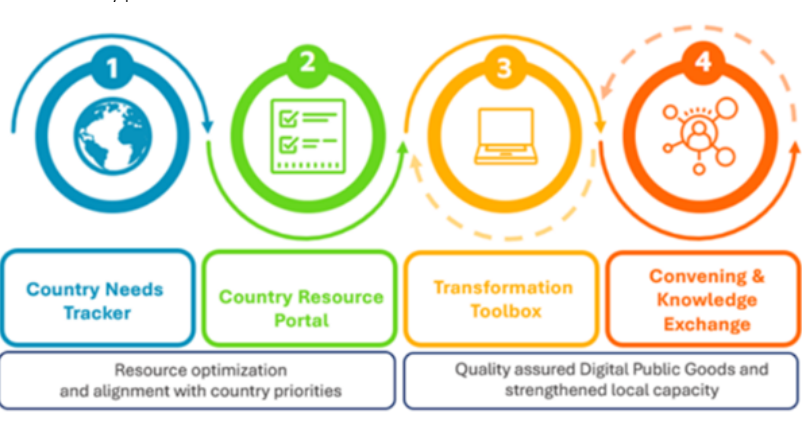
SC guidelines for eliminating gender stereotypes
In News: Supreme Court releases landmark guidelines for eliminating Gender Stereotypes in Legal language and Judgments
About SC guidelines for eliminating gender stereotypes
- Supreme Court of India has recently released a new SC Handbook in an attempt to remove Gender Stereotypes from the Law.
- It is aimed at combating gender stereotypes in legal language besides promoting just and equitable society.
- Gender-unjust terms are prevalent in Indian courts which puts negative impact on judicial assessments, especially in sexual violence cases.
- Over the years, false assumptions based on clothing and sexual history has led to development of gender stereotypical language in judgments, orders, and court pleadings.
- The handbook has identified problematic phrases such as career woman, fallen woman, faithful wife, eve-teasing, hermaphrodite.
- It has suggested correct terms: woman, woman, wife, street sexual harassment, intersex
- Predetermined stereotypes conflict with duty to decide cases impartially and affects unbiased judicial decision-making.
- Assumptions about women's character based on clothing and sexual history not only impacts on judicial assessment but also diminishes importance of consent in sexual relationships
- Language plays crucial role in conveying legal values and intentions as use of language reflects judge's interpretation of the law and societal perception
- It has power to recognize or diminish human dignity for example of Code of Civil Procedure amendment from "pauper" to "indigent".
- The handbook addresses stereotypes about women's emotional nature, decision-making and rejects notion that gender influences rational thought capacity
- Overall, The SC handbook seeks to eliminate gender stereotypes in legal languages besides aiming for language that aligns with constitutional ethos and promotes unbiased legal decision-making.
The CEC and Other ECs Bill - 2023
In News: Recently, the Government has introduced a bill in the Rajya Sabha aiming to alter the process of appointing the Chief Election Commissioner (CEC) and Election Commissioners (ECs).
Provisions for appointment of CEC and ECs:
- According to Article 324(2), the appointment of the CEC and other Election Commissioners shall be made by the President, subject to the provisions of any law made on that behalf by Parliament.
- Since no parliamentary law was enacted as prescribed by Article 324 of the Constitution, the Supreme Court (SC) in March 2023 ruled that CEC and ECs will be appointed by the President of India on the advice of a Committee consisting of the Prime Minister, and Leader of Opposition in the Lok Sabha, and the Chief Justice of India until a law is enacted by Parliament on their appointments.
- Before the Supreme Court ruling of March 2023, the CEC and ECs were appointed by the President on the recommendation of the government.
Key features of the Bill:
- The Selection Committee will consist of the Prime Minister as Chairperson, the Leader of the Opposition in Lok Sabha, and a Union Cabinet Minister nominated by the Prime Minister as member.
- If the Leader of Opposition in Lok Sabha has not been recognised, the leader of the single largest opposition party in Lok Sabha will assume the role.
- It proposes the establishment of a Search Committee to prepare a panel of five persons for consideration for the positions of CEC and ECs. The Search Committee will be headed by the Cabinet Secretary and will also include two members not below the rank of Secretary who have knowledge and experience in matters related to elections.
- The proposed Bill repeals the Election Commission (Conditions of Service of Election Commissioners and Transaction of Business) Act, 1991. The business of the Election Commission will be governed by the new Act once it is passed.
- The 1991 Act provides that the salary of the ECs will be equal to that of a Supreme Court judge. The Bill provides that salary, allowance, and service conditions of the CEC and other ECs will be the same as that of the Cabinet Secretary.
- The Bill maintains the provision that the business of the Election Commission should be transacted unanimously whenever possible. In case of a difference of opinion, the majority's view will prevail.
Major Issues with the Bill:
- The committee consists of the Prime Minister, the nominated Cabinet Minister, and the Leader of the Opposition. This potentially gives the Executive dominance in appointments, undermining the independence of the Election Commission.
- The Bill replaces the Chief Justice of India with a nominated Cabinet Minister in the appointment process. This reduces judicial representation in the committee and might affect impartiality.
- The Bill allows the Selection Committee to choose anyone from outside the shortlisted candidates, undermining the purpose of the shortlisting process.
- The proposed changes may have implications for the autonomy and functioning of the ECI.
Pradhan Mantri Uchchatar Shiksha Abhiyan (PM-USHA) scheme
In News: Fourteen States and Union Territories, including Kerala, Tamil Nadu, and West Bengal, have not yet signed a crucial Memorandum of Understanding (MoU) with the Union Education Ministry to implement the National Education Policy (NEP) as part of the Pradhan Mantri Uchchatar Shiksha Abhiyan (PM-USHA) scheme.
About:
- RUSA (Rashtriya Uchchatar Shiksha Abhiyan) Scheme has been renamed as “Pradhan Mantri Uchchatar Shiksha Abhiyan (PM-USHA)” in June 2023 in light of National Education Policy.
- RUSA, as a Centrally Sponsored Scheme launched in October 2013, aiming at providing strategic funding to higher education institutions throughout the country.
- Objective:
- Enhance quality in higher education institutions, ensure compliance with norms and accreditation standards, foster governance and academic reforms, and encourage research and innovation.
- It focuses on:
- Equity Access and inclusion in higher education
- Developing Quality Teaching & Learning processes,
- Accreditation of Non-Accredited Institutions and improving accreditation.
- ICT – based Digital Infrastructure.
- Enhancing Employability through Multidisciplinary.
- Key Features:
- MERU (Multidisciplinary Education and Research University) Transformation: Rs 100 crore support to each of 35 state universities for multi-disciplinary education and research.
- Model Degree Colleges establishment
- Grants for Strengthening Universities
- Targeting remote, LWE-affected, aspirational, and low Gross Enrolment Ration regions.
- Aid to state government for gender inclusion, equity, and ICT-based employability skills.
More Information:
- PM-USHA scheme mandates that States implement the National Education Policy in order to avail funds worth almost ₹13,000 crore for the next three years. Also, 40% of the fund has to be arranged by States themselves. States argue they don’t have funds for bringing in NEP-related changes.
Representation of People Act: Section 8(4) & Lily Thomas
In News: Rahul Gandhi was disqualified on being convicted and sentenced to two years imprisonment in a 2019 defamation case. The disqualification was instant because of the Supreme Court of India’s judgment in Lily Thomas vs Union of India (2013).
Provisions for disqualification of a Member of Parliament:
- Article 102: It specifies that a person shall be disqualified for contesting elections and being a Member of Parliament under certain conditions mentioned as following:
- Holding an office of profit
- Being of unsound mind or insolvent
- Not being a citizen of India
- It also authorizes Parliament to make law determining conditions of disqualifications.
- The Representation of the People Act, 1951:
- It provides that a person will be disqualified if convicted and sentenced to imprisonment for two years or more.
- Section 8(1): It provides the offences punishable under the Representation of People Act, 1951.
- Section 8(2): It provides for the conviction of member in the offences related to hoarding or profiteering, adulteration of food or drugs, and any provision of the Dowry Prohibition Act.
- Section 8(3): It says that a person convicted of any offense other than those mentioned in the other two clauses, and sentenced to not less than two years shall be disqualified from the date of conviction, decided by the President under Article 103. However, it doesn’t directly say they’re disqualified instantly.
- Section 8(4): It has exempted sitting members from instant disqualification for three months to enable them to appeal against the conviction. This clause was struck down as ultra vires in the Lily Thomas vs Union of India, 2013.
Lily Thomas vs Union of India, 2013:
- The Supreme Court removed Section 8(4) because Parliament can’t treat lawmakers who are found guilty differently. This is because Article 102(1) says lawmakers and candidates should be treated the same way.
- However, when it comes to treating them differently, the Constitution actually allows it. Article 103 says that for current lawmakers, the President will decide if they should be disqualified under Article 102(1).
Rahul Gandhi Case:
- The Supreme Court stayed the conviction: It did not express any opinion on the question of whether a stay of conviction is also necessary or on suspending the disqualification.
- The Court observed, if the period of imprisonment was less by one day the disqualification would not have occurred.
- Lok Sabha Secretariat cannot declare disqualified without referring the case to the President under Article 103 for a declaration. The power is vested in the President under Article 103.
Way Forward:
- The issue of instant disqualification needs to be addressed urgently as it may affect the career of legislators.
- The judgment in Lily Thomas has not resulted in any perceptible qualitative change in the criminal proclivity of politicians. Politicians belonging to the powerful ruling dispensation at a particular time are be able to get a conviction stayed within a few hours, thus saving themselves from instant disqualification.
- Section 8(4) needs to be restored and protected constitutionally in order to protect the careers of India’s legislators from abrupt convulsions caused by court orders which are given, in the words of the Supreme Court, “without any application of mind”.
- The law on criminal defamation needs an urgent review. Countries such as the United Kingdom and the United States have scrapped it.
Piped Water Connection - Edukemy Current Affairs
In News: Government releases key data and initiatives on piped water coverage in rural India
About Piped Water Connection
India has achieved a significant milestone in its efforts to provide clean water to rural households, with two out of every three rural households now having access to piped water connections.
In this regard, Government of India has previously launched “Jal Jeevan Mission” to connect all 194.2 million rural households in India with tap water connections by the end of 2024.
Key highlights:
- Nearly 128.5 million or 66.80% of the total rural households have functional water tap connections which was only 17% or 32.3 million at the launch of the mission in 2019.
- As per government records, nearly 55% of Scheduled Tribe rural households have been connected under the mission.
- The mission has created direct and indirect employment in rural areas and has potential of creating approximately 1,47,55,980 person-years of employment during the five-year implementation period.
- The mission intends to eliminate the burden of fetching water from distant sources for rural households.
- At present, women spend 40 minutes (one way) in Jharkhand, 33 min in Bihar, 24 min in rural Maharashtra, and 38 min in Uttar Pradesh for fetching water.
- The mission's future efforts will prioritize expediting the installation of water infrastructure in lagging states and aspirational districts.
- It will allocate 30% weightage for challenging terrains and 10% for populations in SC/ST dominated areas when distributing funds to ensure coverage.
- It will integrate international partnerships such as collaborations with United Nations Office for Project Services (UNOPS) and the Denmark government to support the Jal Jeevan Mission.
- While household connections are crucial, ensuring the long-term sustainability of water sources for consistent availability is a challenge.
- Overall, the Jal Jeevan Mission's progress in providing piped water connections is a significant step toward improving water accessibility and reducing the burden on rural communities.
Suspensions of Members of Parliament (MPs)
In News: Recently, one of the MPs (Member of Parliament) of the Rajya Sabha has been suspended for “violating” the directives of the chair.
Process of Suspension of MPs:
- The role and duty of the Presiding Officer — Speaker of Lok Sabha and Chairman of Rajya Sabha is to maintain order so that the House can function smoothly.
- To ensure that proceedings are conducted in the proper manner, the Speaker/ Chairman is empowered to force a member to withdraw from the House.
- Process and rules followed in Lok Sabha:
- Under Lok Sabha Rule 373, the Speaker has the authority to instruct a member to leave the House immediately.
- On the Non-compliance of the instruction, the chair names members causing disruptions under Rule 374.
- Government introduces suspension motion. The motion seeks approval of the House. If passed, the member is suspended.
- Process and rules followed in Rajya Sabha:
- Chair identifies disruptive members under Rule 256.
- A suspension motion was presented to the House. The motion requires House approval. On approval, the member is suspended.
- The House may, however, by another motion, terminate the suspension.
Implications of Suspending Members from India’s Parliament:
- Suspended members can’t participate, potentially hampering legislative activities.
- Suspended members cannot enter the chamber or attend the meetings of the committees.
- S/he will not be eligible to give notice for discussion or submission.
- S/he loses the right to get a reply to his questions.
Way Forward:
- It is difficult to deal with planned parliamentary offenses and deliberate disturbances for publicity or political reasons.
- Opposition members should play a constructive role in Parliament and they should be allowed to put forward their views and express themselves in a dignified manner.
- There is a need to strike a balance between deliberate disruption and raising the important issue.
Gaps in Registration of Births and Deaths (RBD) Amendment Act
In News: Recently, the Registration of Births and Deaths (Amendment) Bill, 2023 has been passed by Parliament and has got the assent of the President of India.
Significant provisions of the Bill:
- The Bill makes it compulsory that the Registrar General of India maintains a national level database of births and deaths.
- The Chief Registrar of births and deaths in every State is required to maintain a State-level database of registered births and deaths ‘using the portal approved by the Registrar General of India’.
- These databases will provide information to update the National Population Register, the Aadhaar database, electoral rolls, ration card, passport, and other databases at the national level, as may be notified.
- The amendments mandate that for all deaths within medical institutions, a cause of death certificate must be forwarded to the Registrar of Births and Deaths. A copy should be provided to the closest relative.
- In cases of deaths that transpire outside of hospitals, the medical practitioner who attended to the deceased during their recent illness is responsible for issuing this certificate.
- In the case of birth, the amendments provide for collecting the Aadhaar number of the parents. Nothing is mentioned about the Aadhaar number of the deceased.
Issues with the Bill:
- Missing Deceased: Nothing is mentioned about the Aadhaar number of the deceased.
- Amendments Required by the Notified Database Accessing Authorities: If they require access to information from this database, it requires amendment in the laws.
- Listing a few databases for consideration by Parliament and leaving future additions to the government is undermining the supremacy of Parliament.
Issues with the provision related to medical practitioners issuing death certificates:
- The attending medical practitioner might not always have arrived at a definite diagnosis before the person’s passing.
- The forms used for mentioning the cause of death are in conformity with the World Health Organization recommendations while the AYUSH (Ayurveda, Yoga and Naturopathy, Unani, Siddha, Sowa Rigpa and Homoeopathy) systems of medicine are non-classifiable under the International Classification of Diseases.
- If a person undergoing treatment dies from an entirely different cause outside of a medical facility in the absence of the attending medical practitioner, then how can the practitioner be expected to issue a certificate of cause of death in such cases.
- Under natural calamities or accidents, the families of missing persons would have to wait for seven years to request for a certificate that says ‘presumed dead’.
PM e-Bus Sewa scheme - Edukemy Current Affairs
In News: Recently, The Indian Cabinet has approved the "PM-eBus Sewa" scheme, aiming to bolster city bus operations by introducing 10,000 Electric Buses through a Public-Private Partnership (PPP) model.
About:
- The scheme aims to introduce 10,000 electric buses (e-buses) in city bus services across India and enhance urban infrastructure for green mobility.
- The scheme will be implemented in two segments:
- Segment A: Augmenting City Bus Services (169 cities):
- In 169 cities (selected through challenge mode for cities with a population of 3-40 lakhs), 10,000 e-buses will be deployed through a public-private partnership (PPP) model.
- For cities with less than 5 lakh population: 50 e-buses
- For cities with 20-40 lakh population: 150 e-buses
- Segment B: Green Urban Mobility Initiatives (181 cities):
- In 181 cities, infrastructure will be upgraded to support green urban mobility initiatives.
- Behind-the-meter power infrastructure like substations will be created.
- Segment A: Augmenting City Bus Services (169 cities):
- The scheme will support bus operations for a duration of 10 years.
- Financial Allocation: Central government will provide ₹20,000 crore in subsidies.
- States or cities will be responsible for running the e-bus services and making payments to the bus operators.
- Significance: The scheme aims to generate 45,000 to 55,000 jobs and reduce noise, air pollution, and carbon emissions.
Global Initiative on Digital Health
In News: India and the World Health Organization (WHO) are set to launch the Global Initiative on Digital Health during the ongoing G-20 summit in Gandhinagar, Gujarat.
About:
- The initiative is aimed at data convergence, interface of health platforms and investments in the digital health space around the globe.
- The summit also focuses on establishing an interim Medical Countermeasure (MCM) network to respond effectively to health emergencies.
- Significance:
- It has been envisaged to have a convergent approach that breaks the silos and ensures that existing and ongoing digital health efforts can be made accessible under one umbrella.
- It will include an investment tracker, an ask tracker (to understand who needs what kind of products and services) and a library of existing digital health platforms.
- It will aid in universal health convergence and improve healthcare service delivery. The initiative has also found funding from global partners.
- More Information: The summit additionally seeks to launch a Climate and Health Initiative in collaboration with the Asian Development Bank, along with a patient and healthcare workforce mobility portal.

SC guidelines for eliminating gender stereotypes
In News: Supreme Court releases landmark guidelines for eliminating Gender Stereotypes in Legal language and Judgments
About SC guidelines for eliminating gender stereotypes
- Supreme Court of India has recently released a new SC Handbook in an attempt to remove Gender Stereotypes from the Law.
- It is aimed at combating gender stereotypes in legal language besides promoting just and equitable society.
- Gender-unjust terms are prevalent in Indian courts which puts negative impact on judicial assessments, especially in sexual violence cases.
- Over the years, false assumptions based on clothing and sexual history has led to development of gender stereotypical language in judgments, orders, and court pleadings.
- The handbook has identified problematic phrases such as career woman, fallen woman, faithful wife, eve-teasing, hermaphrodite.
- It has suggested correct terms: woman, woman, wife, street sexual harassment, intersex
- Predetermined stereotypes conflict with duty to decide cases impartially and affects unbiased judicial decision-making.
- Assumptions about women's character based on clothing and sexual history not only impacts on judicial assessment but also diminishes importance of consent in sexual relationships
- Language plays crucial role in conveying legal values and intentions as use of language reflects judge's interpretation of the law and societal perception
- It has power to recognize or diminish human dignity for example of Code of Civil Procedure amendment from "pauper" to "indigent".
- The handbook addresses stereotypes about women's emotional nature, decision-making and rejects notion that gender influences rational thought capacity
- Overall, The SC handbook seeks to eliminate gender stereotypes in legal languages besides aiming for language that aligns with constitutional ethos and promotes unbiased legal decision-making.
The CEC and Other ECs Bill, 2023
In News: Recently, the Government has introduced a bill in the Rajya Sabha aiming to alter the process of appointing the Chief Election Commissioner (CEC) and Election Commissioners (ECs).
Provisions for appointment of CEC and ECs:
- According to Article 324(2), the appointment of the CEC and other Election Commissioners shall be made by the President, subject to the provisions of any law made on that behalf by Parliament.
- Since no parliamentary law was enacted as prescribed by Article 324 of the Constitution, the Supreme Court (SC) in March 2023 ruled that CEC and ECs will be appointed by the President of India on the advice of a Committee consisting of the Prime Minister, and Leader of Opposition in the Lok Sabha, and the Chief Justice of India until a law is enacted by Parliament on their appointments.
- Before the Supreme Court ruling of March 2023, the CEC and ECs were appointed by the President on the recommendation of the government.
Key features of the Bill:
- The Selection Committee will consist of the Prime Minister as Chairperson, the Leader of the Opposition in Lok Sabha, and a Union Cabinet Minister nominated by the Prime Minister as member.
- If the Leader of Opposition in Lok Sabha has not been recognised, the leader of the single largest opposition party in Lok Sabha will assume the role.
- It proposes the establishment of a Search Committee to prepare a panel of five persons for consideration for the positions of CEC and ECs. The Search Committee will be headed by the Cabinet Secretary and will also include two members not below the rank of Secretary who have knowledge and experience in matters related to elections.
- The proposed Bill repeals the Election Commission (Conditions of Service of Election Commissioners and Transaction of Business) Act, 1991. The business of the Election Commission will be governed by the new Act once it is passed.
- The 1991 Act provides that the salary of the ECs will be equal to that of a Supreme Court judge. The Bill provides that salary, allowance, and service conditions of the CEC and other ECs will be the same as that of the Cabinet Secretary.
- The Bill maintains the provision that the business of the Election Commission should be transacted unanimously whenever possible. In case of a difference of opinion, the majority's view will prevail.
Major Issues with the Bill:
- The committee consists of the Prime Minister, the nominated Cabinet Minister, and the Leader of the Opposition. This potentially gives the Executive dominance in appointments, undermining the independence of the Election Commission.
- The Bill replaces the Chief Justice of India with a nominated Cabinet Minister in the appointment process. This reduces judicial representation in the committee and might affect impartiality.
- The Bill allows the Selection Committee to choose anyone from outside the shortlisted candidates, undermining the purpose of the shortlisting process.
- The proposed changes may have implications for the autonomy and functioning of the ECI.
Pradhan Mantri Uchchatar Shiksha Abhiyan (PM-USHA) scheme
In News: Fourteen States and Union Territories, including Kerala, Tamil Nadu, and West Bengal, have not yet signed a crucial Memorandum of Understanding (MoU) with the Union Education Ministry to implement the National Education Policy (NEP) as part of the Pradhan Mantri Uchchatar Shiksha Abhiyan (PM-USHA) scheme.
About:
- RUSA (Rashtriya Uchchatar Shiksha Abhiyan) Scheme has been renamed as “Pradhan Mantri Uchchatar Shiksha Abhiyan (PM-USHA)” in June 2023 in light of National Education Policy.
- RUSA, as a Centrally Sponsored Scheme launched in October 2013, aiming at providing strategic funding to higher education institutions throughout the country.
- Objective:
- Enhance quality in higher education institutions, ensure compliance with norms and accreditation standards, foster governance and academic reforms, and encourage research and innovation.
- It focuses on:
- Equity Access and inclusion in higher education
- Developing Quality Teaching & Learning processes,
- Accreditation of Non-Accredited Institutions and improving accreditation.
- ICT – based Digital Infrastructure.
- Enhancing Employability through Multidisciplinary.
- Key Features:
- MERU (Multidisciplinary Education and Research University) Transformation: Rs 100 crore support to each of 35 state universities for multi-disciplinary education and research.
- Model Degree Colleges establishment
- Grants for Strengthening Universities
- Targeting remote, LWE-affected, aspirational, and low Gross Enrolment Ration regions.
- Aid to state government for gender inclusion, equity, and ICT-based employability skills.
More Information:
- PM-USHA scheme mandates that States implement the National Education Policy in order to avail funds worth almost ₹13,000 crore for the next three years. Also, 40% of the fund has to be arranged by States themselves. States argue they don’t have funds for bringing in NEP-related changes.
Impact of the Data Protection Bill on the RTI Act
In News: Recently passed Digital Personal Data Protection Bill in India has raised concerns among privacy experts due to its potential impact on the landmark right to information (RTI) law.
Major Provisions of the Digital Personal Data Protection Bill (DPDP) 2022:
- It aims at regulating the collection, storage, and processing of personal data.
- The law has been framed based on the recommendation of the committee led by Justice B N Srikrishna.
- Personal data is any data by which or in relation to which an individual can be identified E.g., Name, address
- Individual consent is required for collection and Processing. Individuals also have the right to withdraw consent and demand the erasure of data.
- Major outlines of the bill:
- Usage of personal data must be lawful, fair, and transparent.
- Personal data should be used only for its intended purposes.
- Data minimization is emphasized.
- Data accuracy during collection is crucial.
- Personal data shouldn’t be stored indefinitely; limited storage duration is mandated.
- Safeguards must prevent unauthorized data collection or processing.
- Accountability lies with the entity determining data processing purpose and means.
- The bill permits cross-border data transfer to specified countries with strong data security measures, where the Indian government can access Indians’ data. This is a departure from the previous bill, which mandated local data storage requirements.
- Entities lacking “reasonable security safeguards” against data breaches face fines of up to Rs 250 crore. The proposed Data Protection Board could levy penalties of up to ₹500 crore for substantial non-compliance.
- The bill mandates providing non-personal data to the government when demanded.
How DPDP Bill impacts the Right to Information (RTI) Act:
- The new data protection law changes a provision in the RTI Act to exempt “personal information” from being disclosed. This affects information sought under the RTI law.
- The new law introduces a blanket ban on personal information, making it difficult to access information even if it relates to public activities or larger public interest.
- Activists and experts are concerned that the change will reduce transparency and hinder the ability to access information.
- While the change doesn’t affect the provision allowing access if public interest outweighs the harm, it shifts the burden to individuals seeking information to prove its public interest.
- Officials are expected to deny more RTI requests using the personal information exemption, affecting the availability of crucial information.
NMC Med Practitioner Conduct Regs 2023
In News: Doctors have been protesting against one of the provisions of the new guidelines on Professional Conduct, which were recently notified by the National Medical Commission (NMC). The provision requires the doctor to use generic names of medicines on the prescription instead of a particular brand name.
About the NMC Registered Medical Practitioner (Professional Conduct) Regulations, 2023

- The NMC Registered Medical Practitioner (Professional Conduct) Regulations, 2023 will replace the Medical Council of India’s (MCI) Code of Medical Ethics 2002 and are enforceable from 2 August 2023.
- Other key provisions of the regulations are:
- Social Media Usage: Doctors can use social media for providing verifiable information or announcements. However they are prohibited from discussing patient’s treatment specifics and scans online to maintain patient privacy.
- Prescription practice: Every RMP should prescribe drugs using generic names written legibly. The provision could be relaxed only for medicines with narrow therapeutic index i.e. drugs where a small difference in dosage may lead to adverse outcomes, biosimilars i.e. a different version of biologic products that are manufactured in living systems, and other exceptional cases.
- Refuse treatment: Doctors have the right to refuse treatment for abusive, unruly, or violent patients and relatives. But they must not refuse treatment in medical emergencies.
- Consultation fees should be made known to the patient before examination or treatment of the patient. A reasonable estimation of the cost of surgery or treatment should be provided to the patient to enable an informed decision.
Concern of Doctors regarding the prescription of generic medicines:
- Quality of generic medicines: Doctors express concerns about the uncertainty about the quality of generic medicines available.
- Ineffective treatment: The rule takes away the choice of doctors to prescribe medicines they consider best for their patient and might result in ineffective treatment.
- Absence of quality control regime for generic medicines: Lack of standardised quality control regime results in varying quality of generic medicines across companies, that could be detrimental to patient’s health.
- Poor treatment outcomes: Doctors fear that poor quality of unregulated generic medicines could lead to poor treatment outcomes in the patients. This could also hamper their reputation and also result in violence against doctors if they failed to treat their patients.
- High incidence of substandard drugs in Indian market: Data from the health ministry shows that around 3% of all medicines tested over the last three years, including generics, branded generics, and branded medicines, were found to be not of standard quality.
- Questionable test standards: Until a few years ago, it was not mandatory for companies making generics to carry out bio-equivalence or stability studies, making the tests that a company needs to do to get approval questionable.
- Poor availability of generic medicines: Drug stores usually do not stock generic medicines because of very low profit margins.
What are Generic medicines?
- Generic medicines can be defined as cheap and affordable versions of branded drugs which are brought into the market once the original drug manufacturer’s patent expires.
- These medicines have the same potency, quality, and implications and work in an identical manner as the branded drug. The generic medicines are marketed either by a salt or brand name.
- These medicines are 30% to 80% cheaper than the branded versions, and are hence likely to bring down healthcare costs.

Health Facilities for Tribal Women Report
In news: Parliamentary Committee flags lack of disaggregated Data on Tribal Populations
About Health Facilities for Tribal Women Report
- The Parliamentary Committee on the empowerment of women has recently presented a report addressing the absence of disaggregated data on the health conditions of tribal populations in India.
- The committee advocates for more empowerment of the Tribal Affairs Ministry and underscores the need for sectoral policies in health, education, nutrition, and more.
- Major findings:
- The report underscores the persistent health challenges faced by tribal women across the country with diseases like sickle cell anaemia and leprosy remain prevalent among tribal populations.
- High rates of anaemia, child marriage, early motherhood, and low body mass index contribute to elevated mortality rates among tribal women.
- Lack of disaggregated data on the health and absence of proper maternal mortality ratio data has impede the formulation of effective policies for maternal and infant health among tribals.
- Tribal populations are disproportionately affected by communicable diseases such as leprosy, tuberculosis, and cholera compared to other social groups.
- Over half of tribal women in the reproductive age group suffer from anaemia with sickle cell disease testing reveals a significant number of carriers and diagnosed cases among tribal populations.
- Major recommendations:
- The report calls for empowering the Tribal Affairs Ministry to enable better planning and resource allocation.
- It also recommends that the ministry should be granted authority for designing sector-specific policies related to health, education, nutrition, skill development, and livelihood.
- Extracting a sub-sample of tribal populations from the National Family Health Survey-5 to gather targeted data with regular examination of data collected through the center of excellence.
- Establishment of self-help kiosks at the block level to facilitate health data registration for tribes lacking access to technology.
- Empowerment of the Tribal Affairs Ministry to formulate area-specific, sector-specific, and group-specific schemes for tribal welfare.
- Overall, by addressing challenges, gathering data, and empowering the Tribal Affairs Ministry, steps can be taken to enhance the health and well-being of tribal communities in India.
Reformed Indian Criminal Law - Edukemy Current Affairs
In News: The Bhartiya Nyaya Sanhita Bill 2023, the Bharatiya Nagarik Suraksha Sanhita Bill, 2023 and the Bharatiya Sakshya Bill, 2023, have been brought by repealing the Indian Penal Code, 1860, Criminal Procedure Code, (1898), 1973 and Indian Evidence Act, 1872 respectively.
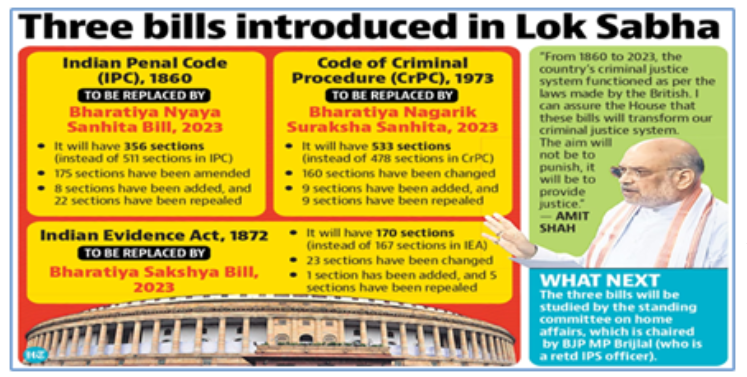
About the 3 new Bills:
- Inclusive:
- Government has brought this law by taking a very principled decision to bring citizens at the centre, instead of governance.
- 18 States, 6 Union Territories, the Supreme Court, 16 High Courts, 5 Judicial Academies, 22 Law Universities, 142 Members of Parliament, around 270 MLAs and public have given their suggestions on these new laws.
- Intense discussions were held for 4 years.
- Broadens horizon:
- The law expands the definition of documents to include electronic or digital records, e-mails, server logs, computers, smart phones, laptops, SMS, etc.
- Provision to digitise the entire process from FIR to judgement.
- Videography has been made compulsory at the time of search and seizure which will be part of the case and will not implicate innocent citizens.
- Without such recording by the police, no charge sheet will be valid.
- A National Forensic Science University will be setup to promote forensic science in a bid to increase the conviction ratio.
- After three years, every year 33,000 forensic science experts and scientists will be available in the country.
- The visit of the forensic team is being made compulsory on the crime scene of crimes having provision for punishment of 7 years or more.
- The government is going to start Zero FIR for the first time.
- Provision of e-FIR is being added for the first time.
- Protecting the innocent:
- The statement of the victim has been made compulsory in the cases of sexual violence and the video recording of the statement has also been made compulsory in the cases of sexual harassment.
- It will be compulsory for the Police to give the status of the complaint in 90 days and thereafter every 15 days, to the complainant.
- No government will be able to withdraw a case of imprisonment of 7 years or more without listening to the victim.
- Scope of summary trial has been increased in petty cases, now crimes punishable up to 3 years will be included in summary trial.
- A time limit of 90 days is fixed for filing the charge sheet. The investigation will have to be completed within 180 days and trial should begin.
- Courts will now be bound to give notice of framing of charge to the accused person within 60 days, within 30 days after the completion of arguments, the Hon'ble Judge will have to give verdict.
- The order will have to be made available online, within 7 days
- Sex on the pretext of false promise of marriage, employment, promotion and false identity has been made a crime for the first time.
- For mob lynching, all three provisions of 7 years in jail, life imprisonment and capital punishment have been made.
- Other provisions:
- Government has to decide on permission within 120 days for trial against civil servant or police officer else it will be treated as deemed permission and trial will be started.
- A provision has been brought for attachment of property of declared offenders.
- Now the death penalty can only be changed to life imprisonment, life imprisonment to a minimum of 7 years and 7 years to a minimum of 3 years, no culprit will be freed.
- The government is going to repeal sedition law completely because India is a democracy and everyone has the right to speak.
- Earlier, there was no definition of terrorism, now crimes like armed insurgency, subversive activities, separatism, challenging the unity, sovereignty and integrity of India have been defined in this law for the first time.
- A historic decision regarding trial in absentia has been taken, a person declared fugitive by a Sessions Court judge will be tried and sentenced in his absence.
Centre’s Bill on Election Commission Appointments
In News: Recently, the Government has introduced a bill in the Rajya Sabha which aims to change the process of appointing the Chief Election Commissioner (CEC) and Election Commissioners (ECs).
Current Provisions for appointment of CEC and ECs:
- The Supreme Court (SC) in March 2023 ruled that CEC and ECs will be appointed by the President of India on the advice of a Committee consisting of the Prime Minister, and Leader of Opposition in the Lok Sabha, and the Chief Justice of India until a law is enacted by Parliament on their appointments.
- Currently, there is no specific legislative process defined in the Constitution for the appointment of the CEC and ECs.
- Article 324 of the Constitution vests the "superintendence, direction, and control of elections" in an Election Commission consisting of the CEC and other ECs as determined by the President from time to time.
- Before the Supreme Court ruling of March 2023, the CEC and ECs were appointed by the President on the recommendation of the government.
Key features of the Bill:
- The Selection Committee will consist of the Prime Minister as Chairperson, the Leader of the Opposition in Lok Sabha as member and a Union Cabinet Minister nominated by the Prime Minister as member.
- If the Leader of Opposition in Lok Sabha has not been recognised, the leader of the single largest opposition party in Lok Sabha will assume the role.
- The Bill proposes the establishment of a Search Committee to prepare a panel of five persons for consideration for the positions of CEC and ECs.
- The Search Committee will be headed by the Cabinet Secretary and will also include two members not below the rank of Secretary who have knowledge and experience in matters related to elections.
- The proposed Bill repeals the Election Commission (Conditions of Service of Election Commissioners and Transaction of Business) Act, 1991.
- The 1991 Act provides that the salary of the ECs will be equal to that of a Supreme Court judge. The Bill provides that salary, allowance, and service conditions of the CEC and other ECs will be the same as that of the Cabinet Secretary.
Issues with the Bill:
- The Bill potentially gives the Executive dominance in appointments, undermining the independence of the Election Commission.
- The Bill reduces judicial representation in the committee by replacing the Chief Justice of India with a nominated Cabinet Minister and might affect impartiality.
- The Bill allows the Selection Committee to choose anyone from outside the shortlisted candidates, undermining the purpose of the shortlisting process.
- The rank of Election Commissioner is being reduced in the warrant of precedence. This could impact their stature.
CAG Report on National Social Assistance Programme
In News: According to the CAG report (2017-2021) government diverted funds from the National Social Assistance Programme for publicity of other schemes.
About
- NSAP was introduced as a centrally sponsored scheme on August 15, 1995. The NSAP is an important step in achieving the Directive Principles outlined in Articles 41 and 42 of the Indian Constitution.
- NSAP aims to offer assistance to elderly people, widows, disabled people, and bereaved families from below-poverty-line households who have lost their primary earner.
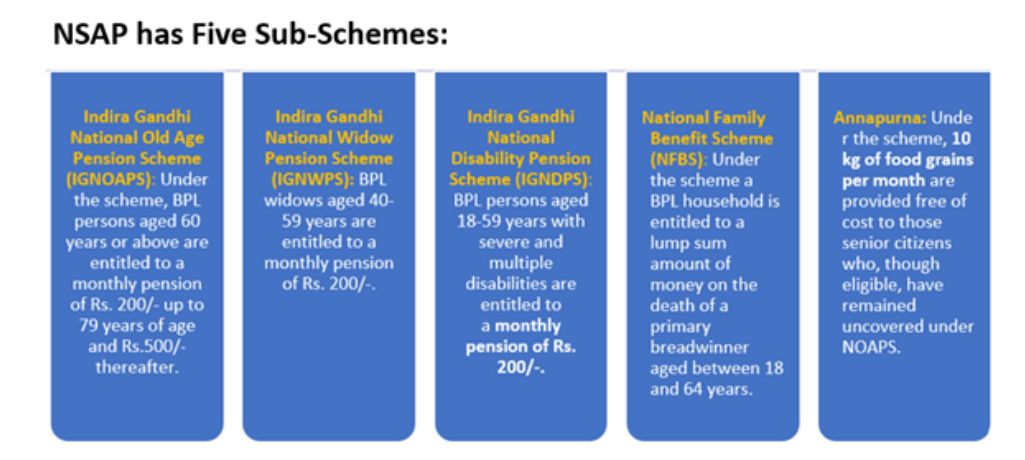
Implementation:
- The Ministry of Rural Development works with the state/UT governments to implement NSAP. To transfer money to beneficiaries' bank accounts or postal accounts, NSAP uses the Direct Benefit Transfer (DBT) mode.
Impact of NSAP
- The NSAP has aided in lowering poverty, raising living standards, and boosting the recipients' sense of dignity and empowerment.
- The Sustainable Development Goals (SDGs) pertaining to poverty eradication, social protection, and inclusion have all been advanced thanks in part to NSAP.
- Between 2017 and 2021 approximately 4.65 crore beneficiaries relied on old age, widow, disability, and family benefits each year.
Key Findings from the Report
Misuse of Pension Funds for Publicity:
- The Ministry of Rural Development (MoRD) redirected funds designated for the National Social Assistance Programme (NSAP) – aimed at providing pensions – to finance publicity campaigns for different ministry initiatives.
- Allocated funds for NSAP were meant for pension disbursement and administrative costs, including 3% for administration.
- Instances of fund diversion were identified both at the ministry level and within state/union territory administrations.
- In 2017, MoRD initiated a publicity campaign using billboards to promote various ministry programs.
- Approximately Rs 39.15 lakh was sanctioned for billboards, and around Rs 2.44 crore was approved for campaigns in multiple states.
- The campaign funds were originally intended to be sourced from the National Rural Employment Guarantee Scheme but were instead drawn from NSAP resources.
Discrepancies in Advertisements:
- The Comptroller and Auditor General (CAG) discovered that advertisement work orders excluded NSAP schemes from mention but emphasized schemes like Pradhan Mantri Awaas Yojana - Gramin (PMAY-G) and Deen Dayal Upadhyaya Grameen Kaushalya Yojana (DDU-GKY).
States Involved in Fund Diversion:
- Six states – Rajasthan, Chhattisgarh, Jammu & Kashmir, Odisha, Goa, and Bihar – were identified as diverting funds that were originally intended for pension schemes.
Impact on Implications and Beneficiaries:
- Planned Information, Education, and Communication (IEC) endeavors under NSAP suffered due to the diversion of funds.
- Funds totaling Rs 2.83 crore, initially allocated for NSAP IEC activities, were repurposed to promote other initiatives of the ministry.
Athidhi Portal
In News: Kerala government is set to launch the ‘Athidhi Portal’, which aims to expedite the registration process for migrant workers in the state.
About:
- It is a user-friendly web portal to expedite the registration for migrant workers in Kerala.
- The goal is to ensure comprehensive registration and provide social security for all migrant workers.
Key Features:
- Contractors, who bring migrant workers to the state and employers can register the workers in the portal. It also allows workers to register themselves individually as well.
- The enrolling officer will examine the details entered in the portal and issue a unique ID to each worker.
- The portal will also ensure that they have social security.
Need of the portal:
- In light of recent incidents involving sexual crimes against children allegedly carried out by migrant workers, the government is taking measures to enhance the registration of “guest workers.”
- The exploitation of unregistered migrants by contractors and the lack of social security.
Indian Web Browser Development Challenge
In News: The Ministry of Electronics & Information Technology (MeitY), launched the Indian Web Browser Development Challenge (IWBDC) in association with Controller of Certifying Authorities (CCA) and Centre for Development of Advanced Computing (C-DAC) Bangalore.
About the Indian Web Browser Development Challenge (IWBDC):
- The IWBDC is an Open Challenge Competition to inspire and empower technology enthusiasts, innovators, and developers from all corners of the country to create an indigenous web browser.
- Proposed browser would also focus on accessibility and user friendliness, ensuring built-in support for individuals with diverse abilities.
- Moreover, the browser envisions the ability to digitally sign documents using a crypto token, bolstering secure transactions and digital interactions.
Significance of IWBDC
- Stride towards Atmanirbhar Bharat: This challenge marks a significant stride towards an Aatmanirbhar Bharat, designed to strengthen India’s digital sovereignty through the development of the Indian Web Browser
- Enhanced security and data protection: The web browser brings in cutting edge functionalities, enhanced security & data privacy protection features through inbuilt trust store.
- Reduces dependence on SSL certificates issued by Roots of Foreign entities: India has been dependent on SSL certificates issued by Roots of Foreign entities. Initialising to develop its Own Browser with inbuilt India Root Certificate would help overcoming this challenge.
- Step towards Internet Resilience: India has moved a step ahead for making the country Internet Resilient which refers to a country’s ability to withstand and recover from various disruptions and threats that may impact its internet infrastructure and connectivity.
About Secure Sockets Layer (SSL) Certificates:
- An SSL certificate is a digital certificate that authenticates a website's identity and enables an encrypted connection.
- It is a security protocol that creates an encrypted link between a web server and a web browser.
- SSL certificates are essential for a website as it secures online transactions and protects customer's information privacy.
- While India has a legally valid root certifying authority called the Root Certifying Authority of India, established in 2000 under the CCA, the certificates issued by it are not widely recognised by popular web browsers.
- This has led to Indian government and private websites obtaining SSL certificates from foreign certifying authorities.
Keralam - Edukemy Current Affairs
In News: Recently, State Legislative Assembly of Kerala passed a resolution urging the Central government to officially change the name of the state from 'Kerala' to 'Keralam'.
Significance of the new name:
- The resolution aims to align the English and Malayalam names. The term ‘Kerala’ has its origins in ancient texts, and ‘Keralam’ is considered a closer reflection of the original Malayalam pronunciation. While the English version ‘Kerala’ was adopted for ease of pronunciation and writing.
- Scholars believe that the term ‘Keralam’ might have originated from the word ‘Cheram’ referring to the region between Gokarnam and Kanyakumari.
Constitutional Provisions:
- Article 3 of the Constitution deals with the Parliament's power to create new states or reorganize existing ones.
- This provision allows for the adaptation of state names to better represent the identity and heritage of the people residing within those states.
Procedure to be followed:
- The state government drafts a resolution expressing the desire to change the name of the state.
- Since changing the name of a state involves altering the Constitution, approval from the Ministry of Home Affairs (MHA) is required.
- The MHA seeks No Objection Certificates (NOCs) from various central government agencies such as the Ministry of Railways, Intelligence Bureau, Department of Posts, etc.
- If the MHA finds the proposal acceptable and all the necessary NOCs are obtained, a Constitutional amendment is initiated.
- The Bill goes through the usual legislative process in both the Lok Sabha (Lower House) and the Rajya Sabha (Upper House). The Bill requires a simple majority to be passed.
- Once the President gives his assent, the Bill becomes law and the name change becomes official and is implemented.
Standing Committee Report on “Judicial Process and their Reforms”
In News: Recently, the Parliamentary Standing Committee on Personnel, Public Grievances, Law and Justice released its 133rd report on Judicial Process and their Reforms.
Parliamentary Standing Committee:
- A Standing Committee is a permanent and regular committee that is formed according to the provisions of an Act of Parliament or the Rules of Procedure and Conduct of Business from time to time.
- There are 24 department-related standing committees (DRSCs). The 24 standing committees have jurisdiction over all of the Central Government's ministries and departments.
- Each standing committee is made up of 31 people (21 from Lok Sabha and 10 from Rajya Sabha).
- The Speaker of the Lok Sabha nominates members from among the Lok Sabha's members, just as the Chairman of the Rajya Sabha nominates members from among the Rajya Sabha's members.
Key issues highlighted by the report:
- Lack of Transparency in the Judiciary
- Huge pendency of cases
- Currently, only a few HCs release their annual report.
- Long Court Vacations
- Lack of Social Diversity in Judicial Appointments. Currently, only 15% of registered advocates are women.
Recommendations proposed by the Committee to fix these issues:
- Enact a law requiring judges of the Supreme Court and high courts to declare assets annually.
- Establish 4-5 regional benches of SC, wherein the regional benches may decide appellate matters.
- SC should direct HCs to publish Annual Reports in a unified format.
- Suggest doing away with long court vacations to address the perception of inconvenience to litigants. Vacations contribute to the pendency issue.
- Stress on appointing an adequate number of women and candidates from marginalized sections to high courts and the Supreme Court, promoting diversity and trust in the judiciary.
- Amend the Constitution to increase the retirement age of high court and Supreme Court judges and Reassess judges’ performance based on health, judgment quality, and quantity delivered. This can contribute to impartiality and quality in post-retirement assignments.
Digital Health Incentives Scheme
In News: Recently, National Health Authority (NHA) has announced an extension of its Digital Health Incentives Scheme (DHIS) under the Ayushman Bharat Digital Mission (ABDM).
Digital Health Incentives Scheme:
- The Digital Health Incentives Scheme (DHIS) offers financial incentives to hospitals, diagnostic labs, and digital health solution providers for adopting and enabling digital health technologies and practices.
- They can earn financial incentives of up to Rs 4 crores based on the number of digital health records created and linked to ABHA (Ayushman Bharat Health Account) numbers of patients.
- As of June 2023, a total of 1205 health facilities have registered under the DHIS, including 567 public and 638 private hospitals, clinics, and diagnostic labs.
- Among the 25 registered digital solution companies, 22 are from the private sector, demonstrating diverse participation.
Ayushman Bharat Digital Mission (ABDM):
- ABDM was launched in September, 2021. It is a national initiative for the development of digital health infrastructure in the country.
- Ayushman Bharat is a flagship scheme of India which was launched as recommended by the National Health Policy 2017, to achieve the vision of Universal Health Coverage (UHC).
- It aims to provide digital health IDs for all Indian citizens to help hospitals, insurance firms, and citizens access health records electronically when required.
Issues with Digital Healthcare in India:
- Despite advancements, a significant portion of India still lacks reliable internet connectivity and necessary digital infrastructure.
- Many people, especially in rural areas and older populations, may not be familiar with technology or lack the necessary digital literacy skills to effectively use digital healthcare platforms and services.
- Maintaining patient data privacy and security is a significant concern in digital healthcare.
- While telemedicine has gained popularity, regulatory clarity regarding the practice, prescription of medications, and teleconsultation across state lines has been a challenge.
Way Forward:
- Implement blockchain technology to securely store and manage electronic health records.
- Leverage big data analytics to predict disease outbreaks, plan resource allocation, and devise targeted interventions to manage public health challenges more effectively.
- Offer online courses for medical professionals to upskill in areas like telemedicine, data analytics, and AI applications in healthcare.
- Establish comprehensive regulations and guidelines for digital health technologies, ensuring patient privacy, data security, and ethical use of digital services and other technologies.
Digital India RISC-V (DIR-V) Program
In News: Union government of India releases Future of DIR-V Program in line with India's self-reliance vision (Atmanirbhar Bharat)
About Digital India RISC-V (DIR-V) Program:
- It is an initiative by the Ministry of Electronics & IT in India which aims to enhance the semiconductor ecosystem and technology capabilities.
- It will develop advanced microprocessors using RISC-V architecture and decrease dependence on imported semiconductors.
- Important Features
- It focuses on open-source RISC-V architecture for flexibility and promote collaboration among academia, research institutions, and industries.
- It addresses the rising demand for semiconductor chips in various sectors besides fostering innovation and research in the semiconductor field.
- It will enable domestic development of high-performance microprocessors and enhance national security by reducing reliance on foreign tech.
- It will encourage innovation and entrepreneurship in the semiconductor sector and will facilitate public-private partnerships for effective implementation.
- It will forge partnerships with prestigious academic institutions like IIT Madras besides collaborating with organizations like C-DAC for research and development.
- However, semiconductor design and fabrication complexities require expertise and intense global competition in the semiconductor industry.
- Overall, DIR-V program is pivotal for India's technological progress and is expected to significantly contribute to economic growth and technological leadership.
WMO: 2022 State of the Climate in Asia Report
In News: WMO report highlights Droughts, floods, and high temperatures as major disasters in Asia in 2022.
About WMO: 2022 State of the Climate in Asia Report
- Major findings:
- It provides a comprehensive overview of temperature trends, precipitation patterns, glacier changes, cyclones, floods, and more.
- The report summarizes the climate conditions and extreme events experienced in Asia during 2022 with an objective to assess the socioeconomic impact of extreme climate events in the region.
- It has been compiled by WMO in collaboration with National Meteorological and Hydrological Services (NMHSs), research institutions, and UN agencies.
- The World Meteorological Organisation (WMO) has recently released the "2022 State of the Climate in Asia" report.
- 2022 has been the second or third warmest year on record globally while the average surface temperature exceeded indicates a significant warming trend.
- There have been disparities in precipitation with regions like parts of Iraq, Hindu Kush, Ganges, and Brahmaputra Rivers experiencing deficits.
- An alarming reduction in glacier masses across the High Mountain Asia region with glaciers, such as Urumqi Glacier No. 1 in eastern Tien Shan, showed significant negative mass balances.
- Nearly 25 named tropical cyclones formed over the western North Pacific Ocean and the South China Sea with Nanmadol typhoon being the strongest tropical cyclone of the year.
- Economic losses from floods exceeded the 20-year average, notably affecting Pakistan, China, and India while drought-related economic damages were estimated to be around $7.6 billion in Asia.
- The report emphasized the significance of mitigating climate change to prevent further damage to the environment and societies in Asia.
- These findings will serve as a valuable resource for policymakers, researchers, and the public to better understand the ongoing climate crisis and its regional implications.
- Overall, the WMO report will help to raise awareness about the urgency of taking action to adapt to and mitigate the impacts of climate change in Asia.
Separation of Power and Jan Vishwas Act
In News: The recently enacted Jan Vishwas Act, 2022, aimed at easing business regulations, transfers the authority to impose penalties for offences from the judiciary to the bureaucracy. This has raised concerns about the separation of powers, as bureaucrats become both prosecutors and judges.
Principle of Separation of Power:
- Separation of Powers is a fundamental principle in governance where the powers of a government are divided among different branches to prevent any one branch from having unchecked authority.
- It ensures a system of checks and balances.
- The Indian Constitution does not explicitly prescribe a strict separation of powers between the judiciary and the executive.
- Article 50 instructs the state to work towards achieving this separation in due time. However, such a separation was not accomplished initially because the criminal magistracy was originally part of the executive at the time of Independence.
- It was only around 1970 that certain State legislatures, like West Bengal, enacted laws to separate the judicial and executive functions within the criminal magistracy under the Criminal Procedure Code, 1898.
Jan Vishwas Act, 2022:
- This Act aims to enhance Ease of Living and Ease of Doing Business and to decriminalize minor offences that don’t harm public interest or national security, replacing them with civil penalties.
- Decriminalizes 180 offences across 42 laws governing environment, agriculture, media, industry and trade, publication, etc.
- Replaces imprisonment clauses with monetary fines.
- Removes all offences and penalties under Indian Post Office Act, 1898 (considered obsolete in the present context).
- Introduces Adjudicating Officers for determining penalties.
- Periodic revision of fines with a 10% increase every 3 years.
Issues related to Jan Vishwas Act, 2022:
- It allows compounding of some offences. (meaning offenders can settle their cases by paying a certain amount without going through a court trial.
- It replaces criminal imprisonment with monetary penalties but shifts the authority to impose penalties to the bureaucracy.
- Questions were raised about the technical competence of adjudicating officers under the Act, especially in environmental legal proceedings.
Interference of Bureaucracy in the Judicial power:
- Judicial Tribunals: Ministries create judicial tribunals to take over judicial functions, often appointing bureaucrats as “technical members”.
- Statutory Regulators: The Union government establishes regulators like SEBI and CCI with the authority to impose substantial fines on private sector entities.
- Adjudicatory Officers: The government introduces adjudicatory officers in legislation like the Prevention of Money Laundering Act, IT Act, and Food Safety Act. These officers, who are bureaucrats, possess powers to impose penalties or confirm property attachment orders.
Water neutrality in Indian industries
In News: NITI Aayog sets Water Neutrality Standards for Companies
About Water neutrality in Indian industries
- Government's think-tank NITI Aayog has recently introduced water neutrality standards for industries.
- The approach aims to conserve water, enhance its efficient usage, and establish a means to assess and validate industry claims.
- NITI Aayog has outlined the definition and approach for water neutrality, aiming to save water and validate industry claims.
- Major highlights:
- Water neutrality is now defined as the total freshwater consumption, including direct and indirect/virtual water use within water-critical supply chains.
- The consumption should be less than or equal to quantifiable water savings achieved through strategies undertaken, with a focus on operational water use efficiencies and conservation efforts.
- It is estimated that adopting water neutrality standards can help save up to 38.23 BCM (billion cubic meters) of water over the next decade (till 2032).
- Water neutrality aims to reduce water demand without replacing existing regulatory tools as it doesn't intend to replace regulatory measures but rather focuses on reducing water demand.
- NITI Aayog has also highlighted challenges in independently validating water claims made by industries as many industry claims of being "water positive" lack independent validation.
- The assessment of water impact by third parties raises concerns about validity as they lack comprehensive on-ground verification.
- Water neutrality/positive impact assessment requires matching extracted water with recharged/conserved water at the same location.
- Overall, there is a need to bring more accountability to assessment standards only then new standards will reach its intended goals in near future.
National Research Foundation (NRF) Bill
In News: National Research Foundation Bill introduced in Lok Sabha
About National Research Foundation (NRF) Bill
- Union Minister of Science and Technology has recently tabled The Anusandhan National Research Foundation Bill (NRF), 2023 in Lok Sabha of parliament.
- The NRF is established as an apex body to guide scientific research in line with the National Education Policy (NEP).
- It aims to promote research and development across Indian research institutions, colleges, and universities.
- Major highlights:
- Nearly ₹36,000 crore to be raised from industries and philanthropists while government will support funding worth ₹10,000 crore.
- Also, an additional ₹4,000 crore via subsuming the Science and Engineering Research Board (SERB) into NRF.
- Department of Science and Technology (DST) will be designated as the administrative department of NRF and its governing body will be led by the Prime Minister as ex-officio president.
- Its Executive council will be chaired by the Principal Scientific Advisor to government while Union Ministers of Science and Technology and Minister of Education will act as ex-officio vice-presidents.
- NRF will help to facilitate collaboration among industry, academia, government departments, and research institutions.
- It will create an interface mechanism for industry, state governments, scientific and line ministries and will impact all ministries.
- Previously, In June 2022, the Union Cabinet approved the NRF Bill with an allocation of ₹50,000 crore over five years.
- Overall, a focused policy framework and regulatory processes will go a long way to boost spending on research and development.
Justice G. Rohini-led Commission
In News: Recently, the report of a Rohini Commission set up to examine the sub-categorisation of Other Backward Classes (OBCs) has been submitted to the President.
Justice G. Rohini Commission:
- The commission was set up on 2nd October, 2017 under Article 340 of the Constitution (President’s power to appoint a Commission to investigate the conditions of the backward classes).
- Terms of Reference:
- Examine the extent of inequitable distribution of benefits of reservation among the castes or communities included in the broad category of OBCs with reference to such classes included in the Central List.
- Work out the mechanism, criteria, norms and parameters in a scientific approach for sub-categorisation within such OBCs.
- Take up the exercise of identifying the respective castes or communities or sub-castes or synonyms in the Central List of OBCs and classifying them into their respective sub-categories.
- Study the entries in the Central List of OBCs and recommend corrections for repetitions, ambiguities, inconsistencies, and errors in spelling or transcription.
Historical Evolution of Reservation of OBCs in India:
- Kelkar Commission (1953): The first instance of recognizing backward classes beyond the Scheduled Castes (SCs) and Scheduled Tribes (STs) on a national level.
- Mandal Commission Report (1980): It estimated that the OBC population constituted 52% and identified 1,257 communities as backward.
- It suggested an increase in the existing quotas from 22.5% to 49.5%, extending the reservation to include OBCs.
- Following these recommendations, the central government implemented the reservation policy, reserving 27% of seats in union civil posts and services for OBCs under Article 16(4).
- It was also enforced in central government educational institutions under Article 15(4).
- In 2008, the Supreme Court directed he central government to exclude the "creamy layer" among the OBCs from benefiting from the reservation policy, ensuring that it reaches the most disadvantaged.
- 102nd Constitutional Amendment Act, 2018: It granted constitutional status to the National Commission for Backward Classes (NCBC).
Need for sub-categorisation of OBCs:

- OBCs get 27% reservation in central government jobs and admission to educational institutions. There are more than 2,600 entries in the Central List of OBCs but over the years only a few affluent communities among them have benefited from the quota.
- In 2018, an analysis of data from 1.3 lakh central government jobs and OBC admissions to central higher education institutions revealed that 97% of benefits were availed by just 25% of OBC castes.
- Approximately 37% (983) of OBC communities had no representation in these opportunities, underscoring the necessity for sub-categorization.
- Therefore, there is an argument that a “sub-categorisation” of OBCs — quotas within the 27% quota — is needed in order to ensure “equitable distribution” of the benefits of reservation.
Lowering the Minimum Age for Contesting Election
In News: Recently, a Parliamentary panel has suggested lowering the minimum age for contesting in Assembly elections from 25 years to 18 years.
Benefits of Lowering the Minimum Age:
- It will allow young individuals to participate actively in the political process and bring fresh perspectives to policy discussions. Example – Canada has minimum age for candidacy in federal elections as 18.
- It will promote diversity in leadership by allowing representation from different age groups, backgrounds, and experiences.
- Young candidates may have insights into contemporary issues like technology, climate change, and social justice.
- It will encourage political awareness and involvement among youth, contributing to a more engaged and informed citizenry. Example, youth-led movements such as “March for Our Lives” in the USA.
Concerns with Lowering the Minimum Age:
- Young candidates might lack the experience and maturity required for effective decision-making and governance.
- Young candidates may have a limited understanding of the complexities of governance and public policy.
- Lowering the age might lead to unprepared candidates entering the political arena, resulting in ineffective representation.
- Young candidates might be more susceptible to external influence, as they may have less exposure to political dynamics.
Election Commission’s Response:
- The Election Commission (EC) has said that expecting 18-year-olds to have the required experience and maturity to serve as public representatives was unrealistic.
- It advised the panel not to change the constitutional provision for the age requirement to contest in the Lok Sabha, Rajya Sabha, Legislative Assemblies, and Legislative Councils, unless compelling reasons exist.
Other Proposals by the Committee:
- The committee discussed the concept of a common electoral roll for different types of elections but urged caution, emphasizing the importance of maintaining the principles of federalism.
- The committee expressed concerns about linking the Aadhaar and Voter IDs of non-citizens, suggesting the establishment of legal provisions to ensure non-citizens with Aadhaar are not included on electoral rolls.
- The committee invited comments from political parties on Election Commission’s proposal for remote voting for internal migrants.
PM-YASASVI SCHEME - Edukemy Current Affairs
In News: Ministry of Social Justice and Empowerment is implementing an umbrella scheme namely PM Young Achievers Scholarship Award Scheme for Vibrant India (PM –YASASVI) for OBC and others.
About:
- This is an umbrella Scheme formulated for OBC, EBC and DNT Students by clubbing the existing Scholarship Schemes and Hostel Scheme.
- Ministry of Social Justice and Empowerment, Government of India has formulated the scheme.
- It aims to award scholarships to eligible candidates belonging to Other Backward Class (OBC), Economically Backward Class (EBC), and De-Notified, Nomadic & Semi Nomadic Tribes (DNT/SNT) categories.
- National Testing Agency has been entrusted with the responsibility of conducting the YASASVI ENTRANCE TEST.
- Benefits:
- Students of Class IX will be provided with financial benefit of Rs.75,000 per year.
- Students of Class XI will be provided with financial benefit of Rs.1,25,000 per year.
- Eligibility
- A candidate must fall in one of the following categories: OBC/ EBC/ DNT SAR/ NT/ SNT.
- Students studying in Class IX and Class XI identified Schools across India.
- The yearly income of the applicant’s parents should not exceed Rs.2.5 lakh.
- The award of scholarships is at two levels:
- For students who are studying in Class IX
- For students who are studying in Class XI
- There are five sub-Schemes under the Scheme.
- Pre-Matric Scholarship for OBC, EBC and DNT Students
- Post-Matric Scholarship for OBC, EBC and DNT Students.
- Top Class School Education for OBC, EBC and DNT Students
- Top Class College Education for OBC, EBC and DNT Students
- Construction of Hostel for OBC Boys and Girls.
Money Bill and Finance Bill - Edukemy Current Affairs
In News: The Digital Personal Data Protection (DPDP) Bill which was earlier reported as a financial bill, is now categorised as a normal bill by the Ministry of Parliamentary Affairs.
Financial Bills:
Any bill related to revenue or expenditure is a Financial Bill.
- Financial Bills are of three types – Money Bill (Article 110), Financial Bill I (Article 117(1)), and Financial Bill II (Article 117(3)).
- Money Bill:
- A money Bill is also a specific type of financial Bill, which must deal only with matters specified in Article 110(1).
- It deals with taxes, regulation of the government’s borrowing of money, and expenditure or receipt of money from the Consolidated Fund of India.
- Article 109 delineates the procedure for the passage of such a Bill and confers an overriding authority on the Lok Sabha in the passage of Money Bills.
- The Speaker of Lok Sabha takes the final call if a bill is a money bill or not. And his decision cannot be challenged in any court of the country.
- All money bills are financial bills, but not all financial bills are money bills.
- Financial Bill I: Article 117 (1)
- It includes not only the subjects stated in Article 110(1) of the Constitution but also other legislative provisions.
- It follows the same parliamentary procedures as any ordinary bill.
- The president may call a joint session of the two Houses if they cannot agree on such a measure.
- When the Bill is presented to the President, he has three options: to approve it, decline to do so, or send it back to the Houses for further consideration.
- Financial bill I is similar to the money bill in two ways – First, both of these bills can only originate in the Lok Sabha and not Rajya Sabha. Second, both the bills can be introduced only on the President's advice.
- Financial Bill II: Article 117 (3)
- It does not contain any of the items listed in Article 110, but it does contain measures impacting Consolidated Fund of India spending.
- It is regarded as an ordinary bill and is handled in every way by the same parliamentary process as an ordinary bill.
- It can be initiated in either house of the Parliament and the President's approval is not required. However, the President's suggestion can be taken during the consideration stage of the bill.
Comparison of Money Bill and Financial Bills:
|
Aspect |
Money Bills |
Financial Bills |
|
Introduction |
Can only be introduced in the Lok Sabha |
Can be introduced in either of the houses. |
|
President’s Recommendation |
President’s recommendation is must for introduction. |
Necessary for Category I at the introduction stage and for Category II at the consideration stage. |
|
Role of Rajya Sabha |
Rajya Sabha can only provide recommendations. (Article 117) |
Rajya Sabha can fully participate, including amendments and discussions. |
|
Nature of RS Recommendations |
Incorporating recommendations is not mandatory in case of Money Bill. |
Rajya Sabha’s recommendations to be included in Financial Bills. |
|
Matters Covered |
Deals exclusively with matters listed in Article 110(1) of the Constitution. |
Deals with matters listed in Article 110(1) and can include other financial provisions. |
|
Certification |
Certified by the Speaker as a Money Bill. |
No Certification is required. It is treated as ordinary bill. |
|
In case of disagreement |
In case of disagreements, the decision of Lok Sabha prevails. |
Requires agreement of both Houses for passage. |
|
President’s Role |
President’s recommendation is essential for the introduction |
President’s recommendation is required if the Bill involves expenditure from the Consolidated Fund of India. |
Sub-Categorisation of OBCs - Edukemy Current Affairs
In News: Recently, The Justice G. Rohini Commission for the sub-categorisation of Other Backward Classes (OBC) caste groups submitted its report to the Ministry of Social Justice and Empowerment.
Justice G. Rohini Commission:
- The commission was set up on 2nd October, 2017 under Article 340 of the Constitution (President’s power to appoint a Commission to investigate the conditions of the backward classes).
- Terms of Reference:
- Examine the extent of inequitable distribution of benefits of reservation among the castes or communities included in the broad category of OBCs with reference to such classes included in the Central List.
- Work out the mechanism, criteria, norms and parameters in a scientific approach for sub-categorisation within such OBCs.
- Take up the exercise of identifying the respective castes or communities or sub-castes or synonyms in the Central List of OBCs and classifying them into their respective sub-categories.
- Study the entries in the Central List of OBCs and recommend corrections for repetitions, ambiguities, inconsistencies, and errors in spelling or transcription.
Historical Evolution of Reservation of OBCs in India:
- Kelkar Commission (1953): The first instance of recognizing backward classes beyond the Scheduled Castes (SCs) and Scheduled Tribes (STs) on a national level.
- Mandal Commission Report (1980): It estimated that the OBC population constituted 52% and identified 1,257 communities as backward.
- It suggested an increase in the existing quotas from 22.5% to 49.5%, extending the reservation to include OBCs.
- Following these recommendations, the central government implemented the reservation policy, reserving 27% of seats in union civil posts and services for OBCs under Article 16(4).
- It was also enforced in central government educational institutions under Article 15(4).
- In 2008, the Supreme Court directed he central government to exclude the "creamy layer" among the OBCs from benefiting from the reservation policy, ensuring that it reaches the most disadvantaged.

- 102nd Constitutional Amendment Act, 2018: It granted constitutional status to the National Commission for Backward Classes (NCBC).
Need for sub-categorisation of OBCs:
- OBCs get 27% reservation in central government jobs and admission to educational institutions. There are more than 2,600 entries in the Central List of OBCs but over the years only a few affluent communities among them have benefited from the quota.
- In 2018, an analysis of data from 1.3 lakh central government jobs and OBC admissions to central higher education institutions revealed that 97% of benefits were availed by just 25% of OBC castes.
- Approximately 37% (983) of OBC communities had no representation in these opportunities, underscoring the necessity for sub-categorization.
- Therefore, there is an argument that a “sub-categorisation” of OBCs — quotas within the 27% quota — is needed in order to ensure “equitable distribution” of the benefits of reservation.
SAGE PORTAL - Edukemy Current Affairs
In News: Union government deliberates on the outcome of SAGE portal for elderly people
About SAGE Portal:
- SAGE or Senior-care Ageing Growth Engine is an initiative under the Umbrella Scheme of Atal Vayo Abhyuday Yojana (AVYAY), run by the Ministry of Social Justice and Empowerment.
- It aims to promote innovative ideas for elderly care and encourage youth to focus on addressing the problems faced by the elderly.
- Major highlights:
- SAGE portal acts as a platform for connecting entrepreneurs and start-ups with a focus on the "silver economy," catering to the needs of senior citizens.
- It facilitates the entry of start-ups into the eldercare sector and promotes business innovation in this domain.
- It provides a "one-stop access" to credible start-ups offering various elderly care products and services.
- The scheme identifies, evaluates, verifies, and aggregates products, solutions, and services directly to the stakeholders.
- Selected start-ups or start-up ideas will receive equity support of up to Rs. 1 crore per project through Industrial Finance Corporation of India (IFCI).
- As per mandates, government's equity in any start-up should not exceed 49% to ensure private sector participation.
- Through SAGE, the government acts as a facilitator, enabling elderly citizens to access products and services offered by the identified start-ups.
- Overall, the initiative will go a long way to help harness the potential of entrepreneurship to enhance the quality of life and well-being of senior citizens in India.
The Multi-State Cooperative Societies (Amendment) Bill 2023
In News: Recently, the Lok Sabha has passed the Multi-State Cooperative Societies (Amendment) Bill 2023.
Cooperatives in India:
- Co-operatives are voluntary, democratic, and autonomous organisations controlled by their members who actively participate in its policies and decision-making.
- After independence, the first five-year plan (1951-56), emphasised the adoption of co-operatives to cover various aspects of community development.
- According to the Article 43B (DPSP) of the Indian Constitution inserted by the 97th Amendment (2011), states shall endeavour to promote voluntary formation, autonomous functioning, democratic control and professional management of cooperative societies.
Multi-state Co-operative Societies:
- These are societies that have operations in more than one state. For example, a farmer-producers organisation (FPO) which procures grains from farmers from multiple States.
- The Multi-State Co-operative Societies Act 2002 provides for the formation and functioning of multi-state co-operatives.
- According to the Supreme Court of India, Part IXB - The Co-operative Societies (also inserted by the 97th Amendment), will only be applicable to multi-state co-operative societies, as states have the jurisdiction to legislate over state co-operative societies.
Key provisions of the Multi-State Cooperative Societies (Amendment) Bill 2023:
- It seeks to amend the Multi-State Co-operative Societies Act 2002.
- Co-operative Election Authority: The central government will establish the Authority to conduct such elections. It will consist of a chairperson, VC, and up to 3 members appointed by the central government on the recommendations of a selection committee.
- Amalgamation of co-operative societies: Allows state co-operative societies to merge into an existing multi-state co-operative society, subject to the respective state laws.
- Co-operative Rehabilitation, Reconstruction and Development Fund: Multi-state co-operative societies that are in profit for the preceding three financial years shall finance the Fund.
- Any shares held by the central and state governments cannot be redeemed without their prior approval.
- Co-operative Ombudsman: The central government will appoint one or more such Ombudsman with territorial jurisdiction. They shall complete the process of inquiry and adjudication within 3 months from the receipt of the complaint.
Significance of the Bill:
- It will strengthen cooperatives by making them transparent and introducing a system of regular elections.
- The Bill aims to address issues with the operation and governance of cooperative societies as well as match its provisions with those in Part IXB of the Constitution.
Issues related to the Bill:
- Imposes a cost on well-functioning societies: Sick multi-state co-operative societies will be revived by a Fund that will be financed through contributions by profitable multi-state co-operative societies.
- Against the co-operative principles of autonomy and independence: By restricting redemption of its shareholding in multi-state co-operative societies.
Mines and Minerals Amendment Bill
In News: Parliament recently passed the Mines and Minerals (Development and Regulation) Amendment Bill, 2023, to attract private sector investment in the exploration of critical and deep-seated minerals in the country.
About the Critical and deep-seated minerals:
- Critical minerals are those minerals which are essential for economic development and national security. Example lithium, beryllium, niobium etc.
- Deep seated minerals are those minerals which occur at a depth of more than 300 metres from the surface of land with poor surface manifestations. Example gold, silver, copper, zinc, lead, nickel, cobalt, platinum group of minerals, diamonds, etc. are high value minerals.
Critical and Deep-seated minerals Imported by India:
- India is 100% import-dependent on countries including China, Russia, Australia, South Africa, and the U.S. for the supply of critical minerals like lithium, cobalt, nickel, niobium, beryllium, and tantalum.
- India’s imports Lithium worth $22.15 million in 2021-2022
- For deep seated minerals, India imported 12 lakh tonnes of copper worth Rs. 27,000 crore in 2022-23. It imported 32,298.21 tonnes of Nickel worth Rs. 6,549.34 crore.
- Such high dependence on imports exposes the vulnerability of India to supply chain shocks as witnessed during the Ukraine-Russia war.
Need for private sector participation in exploration of critical and deep-seated minerals
- Immense Geological Potential: India has geological and tectonic settings conducive to hosting potential mineral resources, similar to mineral rich countries like Australia and Eastern Africa.
- Poor Investment in Mineral Explorations: India spends less than 1% of the global mineral exploration budget despite having huge potential for minerals.
- Limited exploration due to dominance of the public sector: India has explored just 10% of its Obvious Geological Potential (OGP), less than 2% of which is mined. This is because the majority of explorations are carried out by Geological Survey of India and PSUs like Mineral Exploration Corporation Limited (MECL).
- Mining policies restricting engagement of private sector: India’s mining policy had kept Greenfield exploration of minerals out of the purview of private-sector explorers.
- Low risk taking ability of PSU’s: Exploration activities are risky operation as less than 1% of explored projects becoming commercially viable mines
- Involvement of Complex techniques: Exploration requires techniques like aerial surveys, geological mapping, and geochemical analyses and is highly specialised, which private sectors can better deliver.
Major Amendments proposed in Mines and Minerals (Development and Regulation) Amendment Bill, 2023
|
Key Provisions |
Existing MMDR Act 1957 |
MMDR Amendment Bill |
|
Allocation to Private sectors for Mining Atomic Minerals |
Only State agencies allowed in the exploration of the atomic minerals. |
Private sector allowed to mine six out of 12 atomic minerals such as lithium, beryllium, niobium, titanium, tantalum and zirconium. Centre will also have powers to auction mining lease and composite licence for critical minerals such as gold, silver, copper etc. |
|
Auction for Exploration Licence |
Exploration licenses limited to Government bodies and PSU’s. |
The state government grants licences through competitive bidding, while the Central government prescribes auction details. |
|
Maximum Area in which Activities are Permitted |
Prospecting licence allows activities in an area up to 25 square kilometres. |
Bill allows activities under a single exploration licence in an area up to 1,000 square kilometres. |
|
Incentive for exploration Licence |
No substantial incentives for exploration. |
After exploration of resources, the state government must conduct an auction for mining lease within six months. The licensee will receive a share in the auction value of the mining lease for the mineral prospected by them. |
How does the Mines and Minerals Bill 2023 aim to encourage private players
- Exploration & commercial mining of 6 Atomic minerals: The Bill allows 6 atomic minerals to be commercially mined which was previously reserved for government entities.
- Enabling mining activities: The bill allows pitting, trenching, drilling, and sub-surface excavation as part of reconnaissance, which included mapping and surveys, which were earlier prohibited.
- New licence type: The Bill proposes a new type of licence i.e. exploration licence (EL), for a period of five years to encourage reconnaissance-level and or prospective stage exploration by the private sector.
- Expansion of maximum area for exploration: The bills expands the maximum area for exploration; activities in upto 1,000 sq kms will be allowed under a single exploration licence.
Concerns with the Bill:
- Revenue generation delays: Private companies’ revenue from exploration depends on premium shares after mine auctions, subject to government clearance timelines and potential delays due to deposit complexity and geography. This could impact exploration project viability.
- Lack of clarity in Revenue amount: Explorers would not be able to ascertain the revenue they would generate through auction premium.
- Auctioning of exploration licence: Auctioning of something which has value is feasible, however auctioning licences for exploration of potential minerals becomes difficult.
- Government control over auctioning of discovered resources limits the profits of private players, who only get a share of the premium at an unknown stage
India-Greece Bilateral Relationship
In News: Prime Minister Modi’s visit to Greece marks first visit by an Indian PM in the past 40 years. It witnessed the two nations upgrading their relationship to a strategic partnership with focus on expanding political defence & security cooperation.
About India-Greece relationships:
- Historical Relations:
- India’s contacts with Greece began over 2500 years ago. Trading between the Mauryan Kings and Greece is evidenced by coinage and writings.
- With Alexander’s invasion in 326 BC, cultural, trade and diplomatic relationships began.
- Political relations:
- Diplomatic relations were established between the two countries in May 1950.
- After India’s nuclear tests in 1998, when Western countries were contemplating sanctions, the Greek Defence Minister signed a MOU on Defence Cooperation.
- Greece supported India at the Nuclear Suppliers’ Group, MTCR, WASSENAAR arrangements, Australia Group.
- Greece also supported India’s candidature for ICJ, ITLOS, IMO.
- Defence Cooperation: There have been bilateral cooperation between the two countries and MoU on defence. Joint exercises like Passex and Iniochos are also held.
- Economic, Commerce and trade:
- India and Greece have a robust trade valued at 1.32 billion euros. Main exports from India are cotton, iron and steel, electronic machinery, scraps, marble, etc.
- India participated in 84th Thessaloniki International Fair (TIF) 2019, the largest annual commercial exposition of Greece.
Highlights of the visit:
- The President of Greece conferred the Grand Cross of the Order of Honour on the Indian PM making him the first foreign head of government to receive it.
- Both sides set a target of doubling bilateral trade by 2030 and decided to firm up a migration and mobility partnership pacts.
- The two leaders strongly condemned terrorism in all its forms and the use of terrorist proxies for cross-border terrorism.
- The two countries, in a joint statement, backed their vision of a free, open and rules-based Indo-Pacific, and also the Mediterranean Sea, in accordance with the law of the sea and freedom of navigation to the benefit of international peace, stability and security.
- The two leaders expressed their strong support for the ongoing India-EU trade and investment negotiations and the early implementation of the India-EU Connectivity Partnership.
- The two Prime Ministers also decided to take steps to further strengthen people-to-people ties between the two countries. They also agreed to encourage direct flights between Greece and India.
- Early finalisation of a Mobility and Migration Partnership Agreement (MMPA) would be mutually beneficial, facilitating in particular the free movement of workforce between the two countries.
- The Indian PM welcomed Greece into the International Solar Alliance (ISA) and looked forward to Greece’s membership of the Coalition for Disaster Resilient Infrastructure (CDRI).
India and the Northern Sea Route
In News: Importance of Northern Sea route post the 2021 Suez Canal blockage crisis.
About India and the Northern Sea Route
- Northern Sea Route (NSR) is the shortest shipping route between Europe and Asia-Pacific, spanning Arctic Ocean's seas.
- It is about 5,600 km long, starting from Barents-Kara seas boundary to Bering Strait offering a potential 50% distance savings compared to Suez or Panama routes.
- India's engagement with the Arctic dates back to the 1920 signing of the Svalbard Treaty to it becoming an observer-state of the Arctic Council in 2013.
- Significance of the Arctic Region for India:
- Vulnerability of the Arctic region to climate changes affects India's economic security, water security, and sustainability.
- Arctic region contains significant unexplored hydrocarbon reserves, including oil, gas, coal, zinc, and silver.
- India conducts various scientific studies and research in atmospheric, biological, marine, hydrological, and glaciological fields.
- It has also established research station "Himadri" in Ny-Ålesund, Svalbard, in 2008 and launched multi-sensor moored observatory and atmospheric laboratory in 2014 and 2016.
- India's participation in NSR development is due to rising cargo traffic growth along NSR which was around 73% during 2018-2022.
- Previously, India has announced Chennai-Vladivostok Maritime Corridor (CVMC) project to enhance connectivity, reduces transport time and facilitate potential for Russian imports.
- At present, Russia has a nuclear-powered icebreaker fleet to provide Icebreaking assistance to ensure safe navigation in icebound Arctic seas.
- It launched its first nuclear icebreaker "Lenin" in 1959 besides FSUE Atomflot, subsidiary of Rosatom, to operate nuclear-powered icebreakers.
- Russian government has announced a 2035 plan targeting 80 million tonnes and 150 million tonnes cargo traffic for 2024 and 2030.
- Overall, NSR offers reliable and safe transport for energy resources to India besides being an important Transit route for India's sea-dependent trade.
Trinidad and Tobago - Edukemy Current Affairs
In News: Recently, India and Trinidad and Tobago signed a memorandum of understanding (MoU) for sharing India Stack.
About:

- India Stack is a collection of open APIs and digital public goods that aim to facilitate identity, data, and payment services on a massive scale.
Trinidad and Tobago
- Trinidad and Tobago, island country of the southeastern West Indies.
- It consists of two main islands, Trinidad and Tobago, and 21 smaller islands.
- It is located in the southern Caribbean Sea, and lie close to the continent of South America, northeast of Venezuela and northwest of Guyana.
- The climate of Trinidad and Tobago is tropical, with high relative humidity.
More about the news:
- India and Trinidad and Tobago agreed to cooperate in the areas of digital transformation by means of capacity building, training programmes, exchange of best practices, exchange of public officials and experts, development of pilot or demo solutions etc.
Admitting new members to BRICS
In news: The BRICS alliance faces challenges of becoming a tool for China's diplomatic ambitions, creating potential complications for India
About Admitting New Members to BRICS
- BRICS was coined by Goldman Sachs economists in the early 2000s to suggest that Brazil, Russia, India, and China would eventually surpass the G6 economies in size.
- While China and India have risen in economic rankings, Brazil and Russia have fallen short with both not being even among the top 10 economies in the world.
- Expanding BRICS Membership:
- Over 40 developing countries have expressed interest in joining BRICS with countries like Indonesia, Saudi Arabia, and the United Arab Emirates are among those seeking membership.
- Expanding membership will help increase diversity and representation from various regions besides enhanced geopolitical influence on the global stage.
- Challenges:
- New members might have varying economic sizes and development stages, potentially impacting group dynamics.
- Ensuring alignment of interests and goals among existing and new members can be challenging as addition of certain countries might lead to shifts in geopolitical dynamics within the group.
- Expansion could strengthen China's diplomatic influence within BRICS leading to India facing complexities due to its adversarial relationship with China and alignment with Western countries.
- Thus, establishing clear criteria for new members is crucial to maintain coherence and relevance besides balancing economic strength, population size, and geopolitical importance.
- Overall, balancing inclusivity and coherence will be crucial to the group's continued relevance and effectiveness in shaping the global agenda which at present is intriguing yet uncertain.
Indonesia’s Aceh Province
In News: Recently, Authorities in Indonesia’s Aceh province have issued an order requiring men and women not immediately related or married to stay apart in vehicles and public spaces.
About:
- This move aims to enforce stricter adherence to Islamic law in the ultra-conservative province of Aceh.
Aceh Province
- Aceh is a province in Indonesia located on the northwestern tip of Sumatra Island.
- Aceh is surrounded by water on three sides: the Indian Ocean to the west and north and the Strait of Malacca to the east.
- Its boundary with the province of North Sumatra (Sumatera Utara) to the southeast extends north-south from Salahaji, on the northeastern coast just north of Aru Bay, to a point on the southwestern coast about midway between Singkil and Barus.

- The capital is Banda Aceh.
Arash-Dorra Gas Field - Edukemy Current Affairs
In News: Recently, Saudi Arabia and Kuwait have rejected Iran’s claims to a disputed gas field located in the offshore area known as Arash in Iran and Dorra in Kuwait and Saudi Arabia.
About:
- The offshore field, known as Arash in Iran and Dorra in Kuwait and Saudi Arabia, has long been a focal point of contention between the three countries.
- The field holds significant natural gas reserves, making it a highly valuable resource for all involved parties.
- It was discovered in 1967. It began production in 2013 and produces natural gas and condensates.

- The dispute over this field dates back to the 1960s between Saudi Arabia, Iran and Kuwait.
Colombo Security Conclave (CSC) framework
In News: Government releases successful conclusion of Joint Expedition of Scientists on Colombo Security Conclave
About Colombo Security Conclave
- Indian National Centre for Ocean Information Services (INCOIS) of Ministry of Earth Sciences has recently released overview under the regional framework of Colombo Security Conclave (CSC).
- The CSC framework is a regional initiative aimed at addressing security and environmental challenges in the Indian Ocean region.
- Participating countries in the CSC framework include India, Bangladesh, Mauritius, and potentially other Indian Ocean littoral states.
- Major highlights:
- The framework will encourage collaboration and cooperation among countries bordering the Indian Ocean to enhance maritime security and address common threats.
- It provides a platform for participating nations to share knowledge, expertise, and resources related to ocean observation, security, and environmental issues.
- It will focus on building capacity in ocean observation and services through joint research expeditions of ocean scientists.
- It will predict and manage changes in the regional environment of the including monitoring climate patterns and extreme weather events.
- The framework will facilitate the exchange of best practices and advanced technologies for ocean research, data collection, and modelling.
- The CSC framework will help in understanding the oceanic and atmospheric states in the Arabian Sea during critical periods like the summer monsoon.
- Fostering cooperation in the region will also help contribute to the sustainable management and conservation of the Indian Ocean's marine resources.
- Overall, the collaborative efforts under the CSC framework are expected to lead to better forecasting and services, benefiting all participating nations in the region.
China-Bhutan Boundary Dispute - Edukemy Current Affairs
In News: China and Bhutan recently held boundary talks to expedite efforts to resolve their disputed border issue.
About:
- Bhutan shares a 477 km-long border with China.
- The disputed regions between China and Bhutan include Doklam, Gamochen, Batangla, Sinchela, Sakteng and Amo Chhu.
- The China-Bhutan border dispute involves territorial claims and tensions between the two countries over parts of Bhutan’s territory, particularly in areas bordering Tibet.
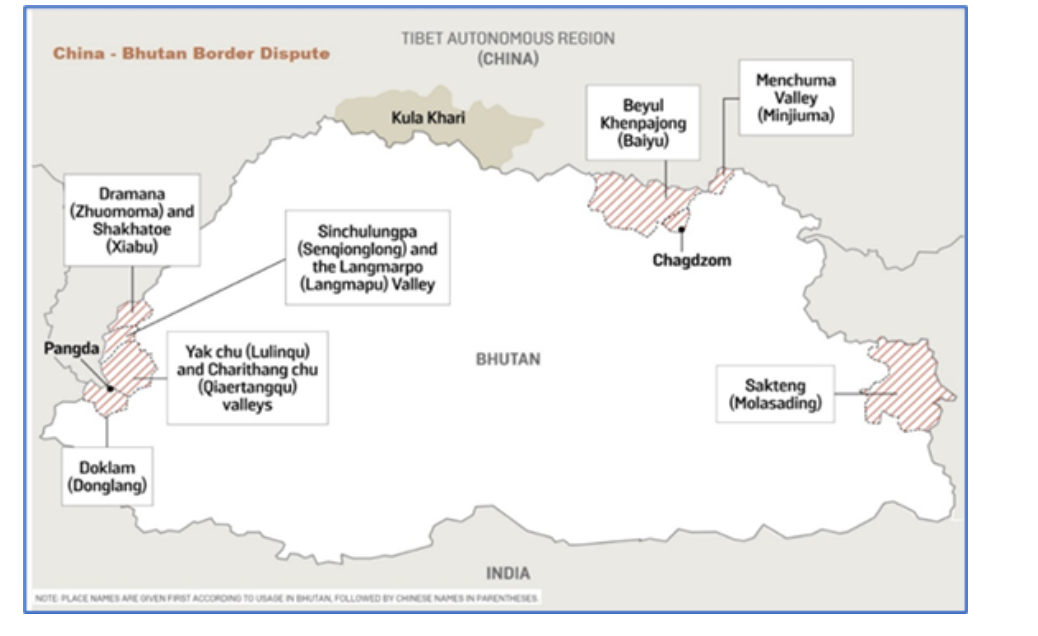
Panama Canal - Edukemy Current Affairs
In News: Recently, A severe drought in Panama is causing extensive delays for cargo ships transiting the Panama Canal, a vital route connecting almost 2,000 ports across 170 countries.
About:
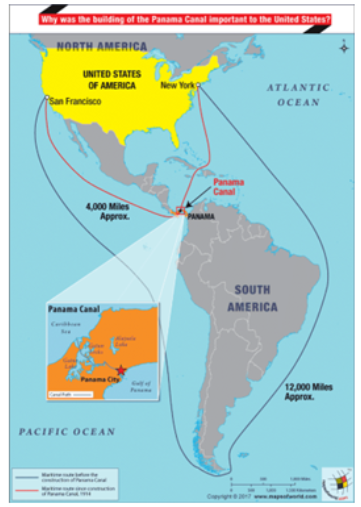
- Panama Canal is a constructed waterway that connects the Atlantic and Pacific oceans across the Isthmus of Panama.
- It is approximately 82 kilometers long.
- It is one of the two most strategic artificial waterways in the world, the other being the Suez Canal.
- It allows ships to avoid the lengthy and dangerous voyage around Cape Horn.
- Panama itself forms an isthmus (a narrow land strip connecting two larger landmasses) between North and South America.
- Originally under French control in the late 1800s, the United States completed the project in 1914 and managed it until 1999 when Panama took over. It’s now operated by the Panama Canal Authority.
- The Panama Canal consists of a series of locks that raise and lower the water level to facilitate the passage of ships through the continental divide.
Denmark - Edukemy Current Affairs
In News: Denmark to ban Quran burnings, says justice minister
About
- Denmark, positioned in Scandinavia, encompasses the Jutland Peninsula and an array of islands. It is connected to its neighboring country Sweden by means of the Öresund Bridge.
- The capital, Copenhagen, boasts royal residences, the vibrant Nyhavn harbor, the Tivoli theme park, and the renowned "Little Mermaid" sculpture.
- Denmark is attached directly to continental Europe at Jutland’s boundary with Germany.
- All the frontiers with surrounding countries are maritime, including that with the United Kingdom to the west across the North Sea. Norway and Sweden lie to the north, separated from Denmark by sea lanes linking the North Sea to the Baltic Sea.
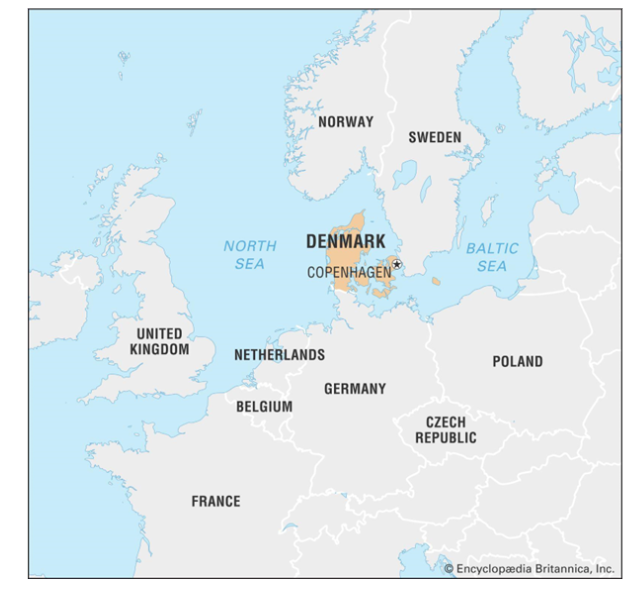
Niger - Edukemy Current Affairs
In News: Recently, the African Union has suspended Niger from its institutions and activities due to the recent coup that overthrew the democratically elected president.
About:

- Niger, officially Republic of Niger is a landlocked country in West Africa.
- It is bounded on the northwest by Algeria, on the northeast by Libya, on the east by Chad, on the south by Nigeria and Benin, and on the west by Burkina Faso and Mali.
- The capital is Niamey.
- The country takes its name from the Niger River (the third-longest river in Africa), which flows through the southwestern part of its territory.
- Niger River flows through Niger, Mali, Guinea, Benin, Nigeria, and Cameroon.
- Over 80% of its land area lies in the Sahara (Sahel Region).
More About the News:
- In Niger, the military coup has led to the detention of President Mohamed Bazoum. The coup plotters have named General Abdourahamane Tchiani as the new leader, citing security concerns related to jihadist violence.
- The suspension will last until the restoration of constitutional order.
|
African Union: |
|
North Sea Transition Authority (NTSA)
In News: The U.K. plans to conduct more fossil fuel drilling in the North Sea, sparking concerns about its alignment with climate goals.
About:

- The North Sea Transition Authority (NSTA), known as the Oil and Gas Authority (OGA) until March 2022, is a private company limited by shares wholly owned by the Secretary of State for Energy Security and Net Zero.
- It is responsible for maximising the economic recovery of oil from the North Sea.
- It is empowered to license and regulate activity in relation to oil and gas in the United Kingdom, including oil and gas exploration, carbon capture and storage, and offshore gas storage.
North Sea:
- North Sea, shallow, northeastern arm of the Atlantic Ocean, located between the British Isles and the mainland of northwestern Europe.
- The sea is bordered by the island of Great Britain to the southwest and west, the Orkney and Shetland islands to the northwest, Norway to the northeast, Denmark to the east, Germany and the Netherlands to the southeast, and Belgium and France to the south.
- It is connected to the Atlantic by the Strait of Dover and the English Channel.
- Almost the entire seabed of the North Sea is a continental shelf (depth of only about 200 meters).
- The geological formations beneath the North Sea, such as porous rocks and structural traps, provide suitable environments for the collection of oil and gas reserves.
Why is offshore drilling problematic?
- Offshore drilling is problematic due to its environmental risks, including threats to marine life, biodiversity, climate change, and ocean ecosystems.
More Information:
- The 1958 Geneva Convention (which came into force in 1964) on the Continental Shelf was the first international legislation to establish the rights of countries over the continental shelves adjacent to their coastlines and paved the way for exploration in the North Sea.
Sulina Channel (Danube River) - Edukemy Current Affairs
In News: The Sulina Channel holds immense importance for Ukraine’s grain trade as an alternative passage after Russia’s withdrawal from the Black Sea grain deal.
About:
- This deal was used to provide safe passage for cargo ships carrying grain from Ukrainian Black Sea ports.
Sulina Channel

- Sulina Channel is a 63 km long distributary of the Danube. It lies completely within the borders of Romania.
- Of the three major channels of the Danube River, the Sulina Channel is the only one deep and wide enough for freight transport.
- It is a sort of a riverine ‘expressway’, crucial for transport of goods from inland to the Black Sea.
- It plays a crucial role in this new trade route, connecting major Ukrainian ports to the Black Sea within Romania’s borders.
Danube River:
- Danube is the second-longest river in Europe, after the Volga in Russia.
- It flows through much of Central and Southeastern Europe, from the Black Forest into the Black Sea.
- Near Romania, the river begins to spread out into its delta which has three major channels – Chilia, Sulina and St George.
- It passes through or forms the border of ten countries, making it one of the most international rivers in the world.
- The countries it flows through include: Germany; Austria; Slovakia; Hungary; Croatia; Serbia; Bulgaria; Romania; Moldova; Ukraine.
Hawaii, USA - Edukemy Current Affairs
In News: Recently, A devastating wildfire swept through Maui, Hawaii, leading to destruction, fatalities, and evacuations.
About:

- The Hawaiian Islands are an archipelago of eight major volcanic islands, several atolls, and numerous smaller islets in the North Pacific Ocean.
- The eight major islands at the eastern end of the chain are, from west to east, Niihau, Kauai, Oahu, Molokai, Lanai, Kahoolawe, Maui, and Hawaii.
- The capital is Honolulu, located on the island of Oahu.
- Formation:
- The Hawaiian Islands were formed by a hot spot occurring in the middle of the Pacific Plate. While the hot spot itself is fixed, the plate is moving. So, as the plate moved over the hot spot, the string of islands that make up the Hawaiian Island chain was formed.
- Maui is an island in the Central Pacific, part of the Hawaiian archipelago.
Ghana - Edukemy Current Affairs
In News: Recently, Ghana has approved a new policy to maximize benefits from mining green minerals, aligning with the global demand for clean energy resources.
About:
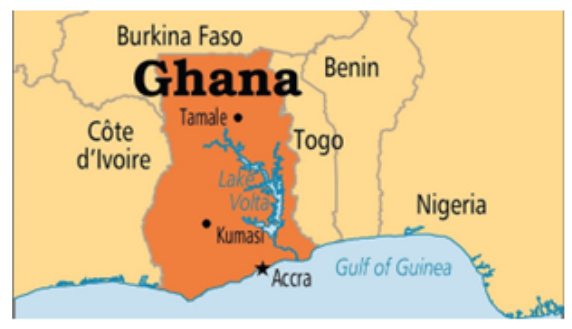
- Ghana is a country in West Africa, situated on the coast of the Gulf of Guinea.
- It is bordered to the northwest and north by Burkina Faso, to the east by Togo, to the south by the Atlantic Ocean, and to the west by Côte d’Ivoire.
- The capital is Accra. Ghana is the second-most populous country in West Africa, after Nigeria.
- Ghana has rich mineral resources such as gold, diamonds, manganese, limestone, bauxite, iron ore as well as various clays and granite deposits.
- Ghana is the second largest producer of gold in Africa.
Kenya
In News: Recently, Kenya’s Environment and Land Court has issued a 14-day stay on President Ruto’s decision to repeal a logging ban introduced in 2018 to protect forests.
About:
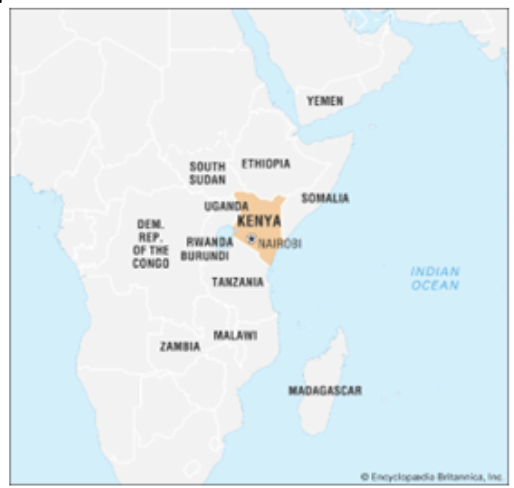
- Environmentalist has argued that lifting the ban could harm the environment, threaten communities reliant on forests, and lack proper scientific and participatory basis.
Kenya
- Kenya is in East Africa with a coastline on the Indian Ocean.
- It is bordered to the north by South Sudan and Ethiopia, to the east by Somalia and the Indian Ocean, to the south by Tanzania, and to the west by Lake Victoria and Uganda.
- The capital of Kenya is Nairobi.
- It encompasses the savannah, Lakelands, the dramatic Great Rift Valley and mountain highlands.
- From Nairobi, the capital, safaris visit the Maasai Mara Reserve, known for its annual wildebeest migrations, and Amboseli National Park, offering views of Tanzania’s 5,895m Mt. Kilimanjaro.
Mali - Edukemy Current Affairs
In News: Recently, France and Mali have suspended issuing visas to each other's citizens in a heightening of a row between the former allies.
About:

- Mali is a landlocked country of western Africa, with the Niger River flowing through its central region.
- It is bounded on the north by Algeria, on the east by Niger and Burkina Faso, on the south by Côte d’Ivoire and Guinea, and on the west by Senegal and Mauritania.
- It is the eighth-largest country in Africa.
- The climate is hot and dry in the north, and more humid in the south.
- The major ethnic groups in Mali are the Bambara, Malinke, Songhai, and Tuareg.
- The Desert covers about 65 per cent of Mali’s total area.
Belem Declaration - Edukemy Current Affairs
In News: Declaration released for advancing conservation and indigenous participation in Amazon region
About Belem Declaration:
- Belem declaration has been released during the Amazon Summit organized recently by the Amazon Cooperation Treaty Organization (ACTO).
- The declaration highlights the critical aspects of biodiversity conservation and Indigenous engagement in the Amazon region.
- It aims to prevent deforestation, protect rich biodiversity, and ensure the well-being of Indigenous communities.
- Key features:
- It represents an effort to address environmental and Indigenous rights concerns in the Amazon region and encourages sustainable use of biodiversity resources in the Amazon.
- It emphasizes the significance of Indigenous knowledge for biodiversity conservation and calls for the full and effective participation of Indigenous Peoples in decision-making and policy formulation.
- It recognizes that Indigenous Peoples are under constant threats and stresses the importance of securing their land rights.
- It has been suggested that Brazil's "Amazon fund" could potentially be expanded to cover the entire Amazon region.
- A working group will be established to discuss financial requirements and resource mobilization to address the concerns related to the implementation of the Global Biodiversity Framework (GBF).
- It also acknowledges the importance of financing conservation efforts and aligns with the GBF's objective of protecting at least 30% of land and sea by 2030.
- The declaration highlights the need for multiple forest economy solutions to counter the dominance of agricultural commodity models in the region.
- Overall, the declaration demonstrates the commitment of Amazon countries to work together for the conservation of the vital ecosystem often referred as the “lung of earth”.
Coup in Niger - Edukemy Current Affairs
In News: Niger is currently in the midst of a political upheaval as a military coup has taken control, ousting the democratically elected President.
About:
- Historical Context:
- Niger is one of the poorest countries in the world.
- It was a French colony until 1960.
- Since independence, the country have lived under 5 constitutions and 3 periods of military rule.
- After the military coup in 2010, Niger became a multi-party state.
- Geography:
- Niger is a landlocked country located in West Africa.
- Border countries - Libya, Chad, Nigeria, Benin, Burkina Faso, Mali and Algeria.
- Niger has more than 80% of its land area lying in the Sahara Desert.
- Niger takes its name from the Niger River, which flows through the southwestern part of its territory.
- It is the largest country in West Africa and roughly twice the size of France.
- Capital city: Niamey.
- Climate: Desert, mostly hot, dry, dusty, tropical in extreme south.
- Ethnic Groups: Hausa, Zarma-Songhai, Tuareg, Fulani, Kanuri, Arab, Toubou.
- Official Language: French language is recognized as the official language of Niger.
More Information:
- The Sahel region, home to Niger, Burkina Faso, Chad, Mali, Mauritania, and Senegal, has witnessed political instability and ethnic tensions.
- Weak governance, corruption, and ethnic clashes led to military interventions under the pretext of restoring stability.

Kuril Islands - Edukemy Current Affairs
In News: The Kuril Islands dispute between Russia and Japan has gained attention amid the ongoing conflict between Russia and Ukraine.
About:
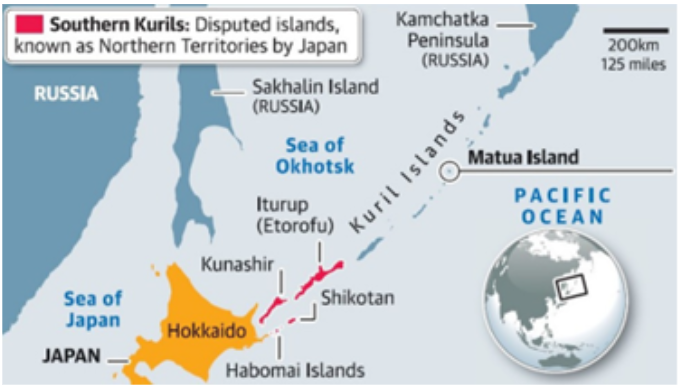
- The Kuril Islands dispute, known as the Northern Territories dispute in Japan, is a territorial dispute between Japan and Russia over the ownership of the four southernmost Kuril Islands.
- The islands stretch approximately 1,300 km northeast from Hokkaido in Japan to Kamchatka Peninsula in Russia, separating the Sea of Okhotsk from the North Pacific Ocean.
- Japan refers to them as Northern territories, Russia calls them the Kuril Islands and South Korea named them as Dokdo islands.
- The Kuril Islands are a volcanic archipelago (part of the Pacific Ring of Fire belt and have over 100 volcanoes) administered as part of the Sakhalin Oblast in the Russian Far East.
Issue:
- Both Russia and Japan claim sovereignty over them though the islands have been under Russian control since the end of World War II.
- The Soviet Union had seized the islands at the end of World War II and by 1949 had expelled its Japanese residents.
- Tokyo claims that the disputed islands have been part of Japan since the early 19th century.
Cocos (Keeling) Islands - Edukemy Current Affairs
In News: Recently, Two Indian military aircraft visited Australia’s strategic Cocos Islands.
About:

- Expanding the strategic reach of the Indian military and improving interoperability with Australia, an Indian Navy Dornier maritime patrol aircraft and an Indian Air Force (IAF) C-130 transport aircraft visited Australia’s Cocos (Keeling) Islands (CKI) in the Southern Indian Ocean, close to Indonesia.
Cocos (Keeling) Islands
- The Cocos (Keeling) Islands are a remote territory of Australia in the Indian Ocean, approximately 3,000 km northwest of Perth in Western Australia, and comprise two coral atolls made up of 27 smaller islands.
- The territory’s administrative headquarters are on West Island in the southern atoll.
Lao PDR (Laos) - Edukemy Current Affairs
In News: Recently, Five Memorandums of Understanding (MoUs) were signed between India & LAO PDR for the implementation of five Quick Impact Projects (QIPs) in the fields of education, health, water facility and IT.
About:

- The MOUs were signed during the 3rd round of Foreign Office Consultations (FOC) held between India and Lao PDR in Vientiane.
- India & LAO PDR share profound religious, cultural, and people-to-people connections stretching far back into history.
Lao PDR (Laos)
- Laos, landlocked country of northeast-central mainland Southeast Asia.
- Laos is bounded to the north by China, to the northeast and east by Vietnam, to the south by Cambodia, to the west by Thailand, and to the northwest by Myanmar (Burma).
- It is traversed by the Mekong River and is known for its mountainous terrain, French colonial architecture, hill tribe settlements and Buddhist monasteries.
- The capital is Vientiane, located on the Mekong River in the northern portion of the country.
Niger - Edukemy Current Affairs
In News: Recently, In Niger, the military coup has led to the detention of President Mohamed Bazoum.
About:
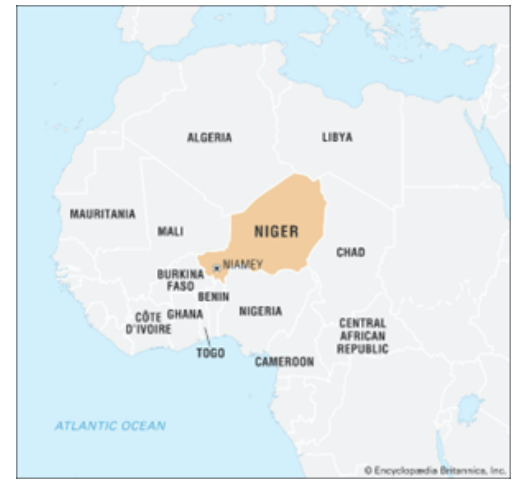
- Niger is a landlocked country located in West Africa.
- It is a unitary state bordered by Libya to the northeast, Chad to the east, Nigeria to the south, Benin and Burkina Faso to the southwest, Mali to the west, and Algeria to the northwest.
- Over 80% of its land area lies in the Sahara (Sahel Region).
- The capital of Niger is Niamey, which is also its largest city and serves as the political, economic, and cultural center of the country.
- Niger is predominantly covered by the Sahara Desert, and its landscape comprises a mix of desert, semi-arid regions, and savannahs.
- More in News: The coup plotters have named General Abdourahamane Tchiani as the new leader, citing security concerns related to jihadist violence.
Rural India shift to sugars and processed foods
In News: ICRISAT deliberates on challenges in accessing Nutrient-Rich Foods and promotion of Processed Foods
About Rural India shift to sugars and processed foods
- The International Crops Research Institute for the Semi-Arid Tropics (ICRISAT) has recently conducted research highlighting the shift in dietary preferences among rural Indian families.
- The study reveals that carbohydrates and sugary processed foods are being favoured over protein and micronutrient-rich options.
- In this regard, the ICRISAT report aims to present more solutions to address these dietary shifts and promote better nutrition outcomes in rural India.
Key highlights:
-
- Traditional food systems in rural India are undergoing changes due to accessibility issues and limited availability of protein and micronutrient-rich foods.
- Rural households are increasingly favouring carbohydrates and sugary processed foods over protein and nutrient-rich options.
- Limited access to protein and micronutrient-rich foods is driving this shift, as these options are becoming harder to source.
- Traditional food systems are evolving due to difficulties in accessing nutritious foods and the declining availability of wild fruits and forest-sourced foods.
- People migrating from rural to urban areas are exposed to packaged and processed foods due to widespread promotions, leading to changes in dietary choices.
- The shift towards sugars and processed foods is linked to rising concerns about malnutrition and obesity in rural regions.
- Policy measures are needed to strengthen nutrition-sensitive food supply chains with the food processing industry to make nutritious products more appealing and accessible.
- The study highlights the role of traditional farming practices and local markets in providing access to healthier food options.
- The study's findings are particularly relevant due to regional imbalances in nutritional health, with higher rates of stunting observed in rural areas.
- Balancing regional nutritional disparities remains a critical endeavour for India's overall health and well-being.
- Overall, ICRISAT research highlights the need for policy measures needed to prioritize nutrition-sensitive food supply chains and promote awareness about healthy dietary choices in rural India.
Advisory Board on Banking and Financial Frauds
In News: Central Vigilance Commission reconstitutes Advisory board on Bank Frauds
About Advisory Board on Banking and Financial Frauds
- The Central Vigilance Commission (CVC) has recently reconstituted the advisory board on Banking and Financial Frauds (ABBFF) to examine bank frauds before involving investigative agencies.
- It will be a five membered board headquartered in New Delhi with Suresh N Patel, the former Central Vigilance Commissioner as Chairman and four other members including:
- Ravikant (retired IAS officer), Rajnikant Mishra (former Director General, BSF), David Rasquinha (former MD of Exim Bank), Partha Pratim Sengupta (former MD & CEO of Indian Overseas Bank).
- Each member will have a tenure of Two years from joining date in accordance with the Central Vigilance Commission order.
- The board will examine officials' role in public sector banks, insurance companies, and financial institutions for frauds of ₹3 crore and above.
- Institutions will have to refer such fraud cases to ABBFF before initiating criminal investigation and its advice on officials' involvement in criminality/malafide will be considered by competent authority.
- ABBFF will be authorised to analyse financial system frauds and provide inputs for fraud-related policy formulation to RBI and CVC within a month of initial reference.
- However, CVC can reject Indian Banks Association's proposal for a sunset clause, preventing action against bankers for credit decisions after a set period.
- It is aimed at strengthening fraud risk management mechanisms by collaborative effort of Government, RBI, and public sector banks.
- It will also help address recovery actions for loan frauds including legal actions, debt recovery tribunals, SARFAESI law, insolvency cases, and settlements.
- Overall, the CVC's reconstituted ABBFF will go a long way to enhance scrutiny of bank fraud cases and provide expert advice to prevent and address fraudulent activities in the financial sector.
Enforcement Directorate (ED) Data:
- ED has recorded 757 bank fraud cases under PMLA in the past decade, including 36 cases in the current year.
- Nearly 10 cases involved individuals fleeing the country, 6 declared as fugitive economic offenders while 7 as proclaimed offenders.
- ED has confiscated assets worth ₹15,805.91 crore and restituted ₹15,113 crore to Public Sector Banks(PSBs).
Concerns Over Consuming Ultra-Processed Food
In News: According to a recent WHO report India’s ultra-processed food sector grew at a compound annual growth rate of 13.37 percent in retail sales value from 2011 to 2021, a report by the World Health Organization.
About Ultra Processed Food
- Processed foods often contain additional salt, sugar, and fats, and when a food product undergoes considerable alteration by incorporating five or more supplementary ingredients, it falls into the category of ultra-processed foods.
- These extra components generally consist of enhancers for flavor and taste, emulsifiers, and various colors, all intended to extend shelf life, enhance taste, or increase the convenience of consumption.

- For example, raw atta represents an unprocessed state. When salt and sugar are introduced to make Dalia, it becomes a processed food. However, when cookies are made using atta as a base and combined with other ingredients, the outcome qualifies as ultra-processed.
Concerns related to Ultra Processed Food
- Nutritional Concerns and Health Impact: Ultra-processed foods often contain excessive amounts of added sugars, unhealthy fats, and high levels of sodium. These components can contribute to a diet that is high in calories and lacking in essential nutrients, leading to various health issues such as obesity, diabetes, and heart disease. Any imbalance in gut health can lead to a host of problems, from neurological issues and stress to mood swings and obesity.
- Disruption of Eating Patterns: The convenience and palatability of ultra-processed foods can lead to overconsumption and disrupted eating patterns. These foods are often designed to be addictive, making it difficult for individuals to control their portion sizes and cravings.
- Lack of Fiber and Nutrients: Ultra-processed foods are typically stripped of natural fiber, vitamins, and minerals present in whole foods. This deficiency can lead to digestive problems, compromised gut health, and deficiencies in essential nutrients.
- Impact on Children's Health: Children are particularly vulnerable to the negative effects of ultra-processed foods due to their developing dietary habits. Regular consumption can establish a preference for overly sweet or salty flavors and may contribute to childhood obesity and related health issues.
- Sustainability Challenges: The reliance on ultra-processed foods in diets can exacerbate issues related to food sustainability. Their production often requires intensive agricultural practices, contributing to soil depletion and deforestation.
- Misleading Advertising: Packaging and advertising of ultra-processed foods may promote them as healthier options than they actually are. Claims such as "low-fat," "natural flavors," or "fortified" can create a false perception of nutritional value.
- Cultural and Culinary Erosion: The prevalence of ultra-processed foods can contribute to declining traditional and cultural dietary practices. These foods often lack the diversity and richness of whole, locally sourced ingredients that are a part of many culinary traditions.
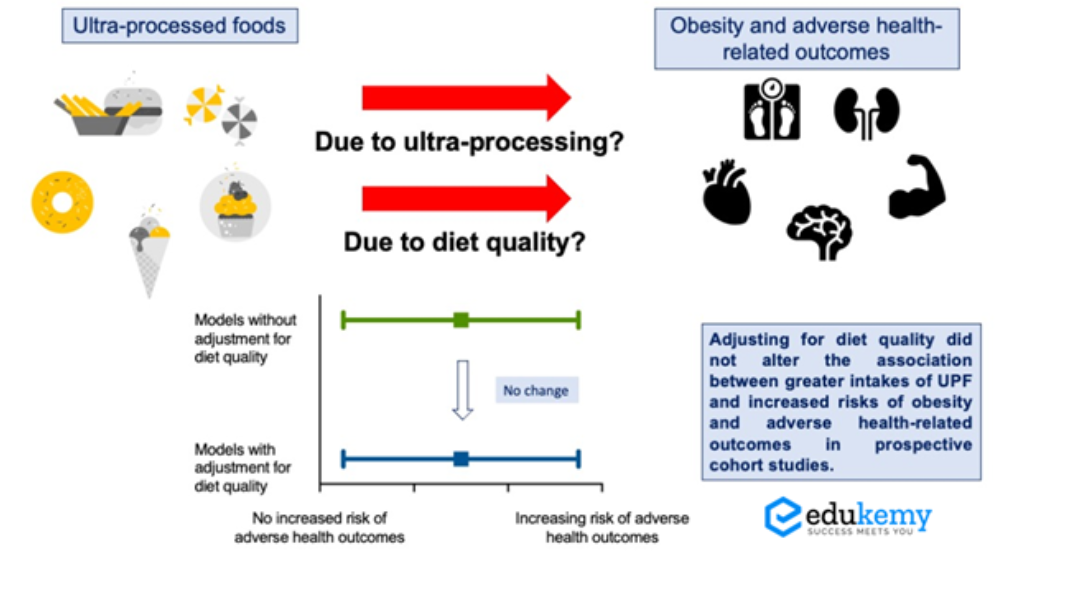
Way Forward
- Enhanced Regulations on Advertising and Marketing: More rigorous regulations on advertising and marketing practices, especially for products like sweet biscuits that are popular among children.
- Clear Definition of High Fat Sugar Salt (HFSS) Foods: Collaboration between the Food Safety and Standards Authority of India (FSSAI) and relevant stakeholders is highlighted in the report to establish a precise and unambiguous definition of High Fat Sugar Salt (HFSS) foods.
- Linking Tax Structure to HFSS Definition: To promote healthier choices and encourage reformulated options, a connection between the tax structure and the HFSS foods definition. This can be achieved by implementing higher taxes on products that surpass recommended levels of fat, sugar, and salt through the GST Council.
- Comprehensive National Nutrition Policy: Nutrition policy should be formulated through extensive consultations with stakeholders and should encompass clearly defined objectives and targets. It also highlights the need for broader coverage of overnutrition and diet-related diseases, as existing policies like Saksham Anganwadi and Poshan 2.0 lack this comprehensive approach.
Future of Work Report- AI at Work
In News: According to the new data released by LinkedIn, it is visible how AI is shaping the world of work and how professionals and companies are adapting to this emerging technology.

About the Report:
- The Future of Work Report uncovers the latest real-time trends around how AI is ushering in a new era of work, based on insights from over 950 million professionals worldwide.
- This report is designed to help both professionals and business leaders in understanding the changing landscape of the job market.
Key Highlights of the Report:
- The intersection of AI and the world of work
- The report shows increased focus on AI at work in a variety of ways, including in the job listings, skills employees are adding to their profiles, and in everyday conversations.
- Employers will need to focus on up skilling & reskilling professionals to boost AI literacy
- Increased emphasis is being laid on hiring for skills
- Acceleration of AI skills across industries and geographies:
- AI Skills Index of LinkedIn provides an insight into how AI skills are being adopted across geographies and industries.
- According to the AI Skills Index Singapore, Finland, Ireland, India, and Canada are experiencing the fastest rate of AI skills diffusion.
- The adoption of AI skills extend beyond tech to a range of industries, including retail, education, financial services, and many others.
- Executive and employee sentiment:
- US executives have a positive outlook of the impact of AI on their overall business and its ability to drive profit and invest in future growth, despite lingering uncertainty around the macro environment.
- Employees are worried as seen with any technological change, but a large number of employees (70%) would delegate as much work as possible to AI to lessen their workloads.
- GAI is starting to change the way we work: Generative AI will reduce the time spent on some tasks such as writing or data analysis. It will also drive up demand for other skills, especially people and specialised skills.
- People skills are becoming more critical than ever. Since the launch of ChatGPT, some of the fastest-growing skills in job postings in the US are people skills, such as flexibility and ethics.
First ABDM Microsite - Edukemy Current Affairs
In News: Recently, The National Health Authority (NHA) had announced 100 Microsites project for accelerated adoption of Ayushman Bharat Digital Mission (ABDM) across the country.
About:
- Mizoram has achieved a remarkable feat by becoming the first state to operationalize an ABDM Microsite in its capital city, Aizawl.
- Under this, all healthcare facilities including the private clinics, small hospitals and labs in the region shall be made ABDM-enabled and will offer digital health services to the patients.
ABDM Microsites:
- The ABDM Microsites are defined geographical regions where focused outreach efforts would be made to onboard small and medium scale private healthcare providers.
- These Microsites are primarily managed by State Mission Directors of ABDM, with NHA providing financial resources and guidance.
- Patients can link their health records generated at these facilities with their Ayushman Bharat Health Accounts and access and share these records through ABDM-enabled Personal Health Record applications.
- Besides Mizoram, other states including Andhra Pradesh, Madhya Pradesh, Uttar Pradesh, Maharashtra and Chhattisgarh have also made significant progress regarding implementation of ABDM Microsites.
|
Ayushman Bharat Digital Mission |
|
Scientific Authenticity of Nano Liquid Urea
In News: An opinion paper for critical examination scrutinizing IFFCO's claims on Nano Liquid Urea
About scientific authenticity of Nano urea:
- Scientists from Europe have recently released an opinion paper titled "Is India's largest fertilizer manufacturer misleading farmers and society using dubious plant and soil science?"
- The paper has questioned the IFFCO's claims about nano liquid urea regarding its scientific basis and efficacy of the fertilizer.
- Concerns have also been raised about its potential negative impacts on crop yield, food security besides efficacy in enhancing crop productivity.
- Nano Liquid Urea were introduced by Indian Farmers and Fertiliser Cooperative (IFFCO) as an alternative to traditional urea.
- Major findings:
- Field Performance of Nano Liquid Urea has shown increased input costs for farmers with minimal results.
- Quality and properties based on existing scientific evidence shows no evidence supporting dramatic crop yield improvements.
- IFFCO's yield improvement claims have been criticized for lack of clear reference points to support yield improvement claims.
- Doubts about the effect of nano urea raise concerns about product pricing as nano liquid urea price seems excessive given scientific uncertainties.
- Government and IFFCO are planning to open 10 new factories for nano urea production with an aim to increase annual production capacity to 440 million by 2025.
- Government has also planned to export liquid nano urea to 25 countries, mainly in Asia, Africa, and South America.
- Previously, IFFCO has claimed that nano zinc, nano copper, and nano di-ammonium-phosphate having positive impacts on crop yield and environmental sustainability.
- However, lack of scientific claims about positive environmental effects of nano urea my release excess nitrogen causing environmental issues like climate change and species loss.
- Overall, there is need to further study the Nano fertiliser's behavior, its impact and scientific validation in evaluating new agricultural technologies before advocating their widespread adoption.
India's Ageing Workforce - Edukemy Current Affairs
In News: India's population despite being youthful sees a shift in demographics impacting employment and productivity dynamics.
About India’s ageing Population:
- Economic Think-tank Centre for Monitoring Indian Economy (CMIE) has recently released “Economic Outlook data” report highlighting India's demographic paradox with its workforce.
- The report suggests that despite a youthful population, India's workforce is experiencing an ageing trend with share of older workers (above 45) in the workforce is increasing steadily.
- Factors such as longer life expectancy, delayed retirement due to financial concerns and changing social norms are contributing to ageing workforce.
- Key findings:
- Share of young workers decreasing from 25% in 2016-17 to 17% (2022-23) while middle age group also experiencing share decline from 38% to 33%.
- Rise of older workforce with oldest age category's share growing from 37% to 49% in just seven years while young workers aged under 30 dropped from 10.34 crore to 7.1 crore.
- Decline in Youth Participation with total employed individuals dropping from 41.27 crore to 40.58 crore which is the sharpest fall among all categories.
- Youth Employment Rate (ER) falls from 29% to 19% with employed youth decline by 3.24 crore despite an increase in Youth population.
- Shortage of skilled workers besides lack of sufficient new job opportunities for young people makes experienced older employees more valuable.
- Skills gap between older and newer generations due to changing technology puts potential strain on social welfare systems as ageing workers retire.
- However, the report raises apprehensions that older workers might face age-related discrimination in hiring and promotion besides health issues and reduced physical abilities affecting productivity.
- Overall, addressing the challenges of an ageing workforce is crucial for India's economic sustainability and the policies should focus on promoting inclusivity, skills development, and intergenerational collaboration.
20th ASEAN-India Economic Ministers’ Meeting
In News: 20th ASEAN-India Economic Ministers’ meeting was held on 21st August 2023 in Semarang, Indonesia and co-chaired by India and Indonesia.
About ASEAN

- ASEAN is a regional grouping established in 1967 at Bangkok through the signing of the Bangkok Declaration.
- It promotes economic, political, and security cooperation among the member nations.
- India and ASEAN concluded a Free Trade Agreement in 2010, after which the bilateral trade which was $ 57 billion in 2010-11, rose to $131.5 billion in 2022-23.
- The 10 member nations of ASEAN are Brunei, Cambodia, Indonesia, Laos, Malaysia, Myanmar, the Philippines, Singapore, Thailand and Vietnam.
Highlights of the Meeting:
- Review of bilateral trade and Investment:
- The Ministers reviewed the bilateral trade and investment relations between India and ASEAN and expressed their commitment to strengthen and enhance the economic partnership.
- The leaders resolved to ensure that the ASEAN-India Comprehensive Strategic Partnership delivers meaningful benefits for both sides, particularly in the post-pandemic era.
- Interaction with ASEAN-India Business Council (AIBC):
- The Ministers interacted with the AIBC and took note of the activities undertaken by AIBC in 2023.
- Non-Tariff Barriers flagged by the businesses were noted and exchange of information and concerns between the stakeholders from both sides was appreciated.
- Regional and Global challenges
- Views were exchanged on the regional and global challenges, such as the multidimensional impact of the COVID-19 pandemic, climate change, heightened volatility in the global financial market, inflationary pressures, and geopolitical tensions.
- Both sides identified resilient supply chains, food security, energy security, health and financial stability as priority areas of cooperation.
- ASEAN-India Trade in Goods Agreement (AITIGA)
- Timely review of AITIGA, signed in 2009, was the main agenda of this year’s meeting.
- AITIGA Joint Committee meeting deliberated the roadmap for the review and finalised the Term of Reference and the Work Plan of the AITIGA Review Negotiations.
- The review of AITIGA was a long-standing demand of Indian businesses and early commencement of review would help in making FTA facilitative & mutually beneficial.
- The review of AITIGA is expected to enhance and diversify trade while addressing the current asymmetry in the bilateral trade.
Rail-Sea-Rail (RSR) Initiative
In News: Government launches steps for integration of transportation for efficient coal Transportation
About Rail-Sea-Rail (RSR) Initiative
- The Rail-Sea-Rail (RSR) Initiative is a strategic approach introduced by the Ministry of Coal to optimize the movement of coal across various stages of transportation.
- This innovative approach involves seamlessly integrating rail and sea routes for efficient coal evacuation.
- It aims to address the increasing demand for coal and focusing on establishing a well-organized and efficient coal evacuation system.
- Key features:
- RSR involves a combination of rail and sea transportation modes, creating a holistic and efficient coal evacuation process.
- Coal is transported from mines to ports via railways, ensuring a smooth flow of raw material from the production centers.
- From ports, coal is further transported via sea routes to reach end-users and powerhouses, reducing transit times and costs.
- By providing an alternative route for coal evacuation, RSR helps alleviate congestion on all-rail routes, ensuring uninterrupted supply.
- RSR enhances the overall logistic efficiency by minimizing delays and bottlenecks in the coal transportation process.
- The integration of rail and sea transportation modes leads to cost savings, optimization of infrastructure for future coal exports, opening up additional revenue streams.
- Compared to an all-rail route, RSR has a lower carbon footprint, contributing to more sustainable coal transportation.
- However, the implementation of RSR requires careful planning and collaboration between government agencies, railways, and port authorities.
- The RSR Initiative is expected to increase coal transportation capacity significantly, reaching 112 MT by 2030, up from the existing 40 MT.
- The strategy will not only improve coal evacuation but also strengthens India's position in the global coal market.
- By reducing transportation bottlenecks and costs, RSR will help support the energy sector's sustainability and reliability.
- Overall, the Rail-Sea-Rail (RSR) Initiative aligns with the government's focus on enhancing infrastructure and logistics all of which are critical for India's energy and economic growth.
Advisory board on bank frauds - Edukemy Current Affairs
In News: Recently, the Central Vigilance Commission (CVC) has reconstituted the advisory board on Banking and Financial Frauds (ABBFF).
About:
- It conducts the first level examination of bank frauds before recommendations or references are made to investigative agencies such as the Central Bureau of Investigation (CBI).
- Composition: It consists of the Chairman and four other members, and the tenure of the Chairman/ Members would be for two years.
- Functions of the board:
- The ABBFF’s authority encompasses examining the roles of officials and whole-time directors in public sector banks, insurance companies, and financial institutions when frauds amounting to ₹3 crores and above occur.
- The ABBFF is also authorized to conduct periodic fraud analysis within the financial system, providing inputs for fraud-related policy formulation to the RBI and CVC.
- CVC or CBI may also refer any case/technical matter to the ABBFF for its advice.
- The ABBFF, headquartered in New Delhi, is mandated to provide advice within a month of receiving initial references from the Ministry, Department, CVC, or investigative agencies.
More Information:
- Notably, the suggestion from the Indian Banks Association (IBA) for introducing a “sunset clause” to limit actions against bankers for credit decisions after a specific period hasn’t been accepted by the CVC.
Market Coupling - Edukemy Current Affairs
In News: Recently, the Central Electricity Regulatory Commission (CERC) has released a staff paper on implementing market coupling in India’s power sector.
About:
- Market coupling is a process in the energy sector where bids from various power exchanges are matched to determine a uniform market clearing price for electricity trading.
- It aims to optimize transmission infrastructure use, maximize economic surplus, and create simultaneous benefits for both buyers and sellers.
- This process helps in efficient price discovery and integration of different electricity markets or geographies, promoting transparency and competition in the energy trading sector.
- The CERC (Central Electricity Regulatory Commission) has introduced provisions for market coupling among power exchanges in the country under its CERC Power Market Regulations (PRC) 2021.
- However, these provisions are yet to be officially implemented.
India has three power exchanges:
- Indian Energy Exchange (IEX) is the oldest and largest power exchange in India, with a market share of over 98% of the traded volume in power.
- Power Exchange India Limited (PXIL) is the second-largest power exchange, with a market share of about 1.5%.
- Hindustan Power Exchange (HPX) is the newest power exchange.
RBI’s Public Tech Platform for Frictionless Credit
In News: RBI has announced a pilot programme for ‘Public Tech Platform for Frictionless Credit’ which would strive to deliver frictionless credit by “facilitating seamless flow of required digital information to lenders.”
About the Public Tech Platform for Frictionless Credit:
- Digital delivery of credit is preceded by a process of scrutiny known as credit appraisal, which involves evaluation and prediction of the prospective borrowers’ ability for repay the credit/loan.
- This pre-disbursal process is important for banks since it would in turn determine their interest income and impact their balance sheet.
- RBI observed that the data required for the process rests with different entities like central and state governments, account aggregators, banks, credit information companies etc. which creates hindrances in frictionless and timely delivery of rule-based lending.
- The new platform developed by its wholly owned subsidiary, the Reserve Bank Innovation Hub (RBIH) brings all the data together in a single place.
- The platform's scope encompasses digital loans beyond KCC (Kisan Credit Card), including dairy loans, MSME loans without collateral, personal loans, and home loans.
Benefits from the Platform:
- Improved credit risk and overall credit portfolio management: The platform’s data consolidation would improve risk assessment and lead to better credit portfolio management.
- Fact-based and quick credit assessments: It ensures that credit or other financial instruments are extended to a larger set of borrowers with good credit history.
- Lower cost of accessing capital: The borrowers would benefit by the resulting lower cost of accessing capital, which would translate into productive investment spending.
- The lending platform would bring about reduction of costs, quicker disbursement and scalability.
Reforms for Secure Digital Connectivity
In News: Government of India launches Mobile User Protection Reforms to create a safer online environment for users and promote secure digital transformation.
About Reforms for Secure Digital Connectivity
- Ministry of Communications has recently launched reforms for safer digital ecosystem in the aftermath of increased digitalization and growth in users of mobile services for online activities.
- The step has been done with an objective to ensure secure digital connectivity, enhance security and build trust in the digital ecosystem.
- Key features:
- Strengthened KYC (Know Your Customer) process for telecom services and scanning of QR code of printed Aadhaar for accurate demographic details.
- Non-allocation of disconnected mobile numbers for 90 days with mandate of complete KYC for SIM replacement, with temporary SMS restrictions.
- Addition of facial biometric authentication to existing methods and mandatory registration of Franchisee, Agents, and Distributors (POS) by Licensees.
- Written agreement between POS and Licensees for indisputable verification of POS by Licensee to eliminate rogue actors.
- While existing POS will be required to be registered within 12 months, there will also be provision of penalty of termination and blacklisting of rogue POS for 3 years.
- Launching of Sanchar Saathi portal to empower mobile users for protection with ability to identify registered connections, report fraud, and block lost/stolen mobiles.
- However, there is need to emphasise on fostering a secure digital environment besides combining cutting-edge technology with vigilant oversight.
- Overall, ensuring the highest level of safety and trust in telecommunications will help providing a secure and reliable communication environment for all users.
Bharat New Car Assessment Programme (Bharat NCAP)
In News: The Union Minister of Road Transport and Highways will be launching the Bharat New Car Assessment Programme (Bharat NCAP).
About:
- The programme aims to provide a tool to car customers to make a comparative assessment of crash safety of motor vehicles available in the market.
- Under this programme, car manufacturers can voluntarily offer their cars tested as per Automotive Industry Standard (AIS) 197.
- Based on the performance of the car in the tests, car will be awarded star ratings for Adult Occupants (AOP) and Child Occupants (COP).
- Significance:
- It is expected that the demand for safer cars will increase, encouraging car manufacturers to comply with customer needs.
- This programme is a significant step forward in the Government’s commitment to improving road safety by raising the safety standards of motor vehicles up to 3.5 tonnes in India.
Infrastructure Debt Fund-NBFCs (IDF-NBFCs)
In News: Recently, The Reserve Bank of India (RBI) has issued revised guidelines for Infrastructure Debt Fund-NBFCs (IDF-NBFCs) with the aim of enhancing their role in financing the infrastructure sector.
About:
- Infrastructure Debt Fund-Non-Banking Financial Companies (IDF-NBFCs) are specialized financial entities registered as NBFCs to facilitate the flow of long-term debt into infrastructure projects.
- IDF-NBFCs come under the regulation of RBI.
- It raises resources through the issue of rupee or dollar-denominated bonds of minimum 5-year maturity.
- Only Infrastructure Finance Companies (IFC) can sponsor IDF-NBFCs.
- NBFC is permitted to refinance infrastructure projects that have completed at least one year of commercial operations.
- NBFC is also permitted to finance Toll-Operate-Transfer (TOT) projects as a direct lender.
About the revised guidelines:
- IDF-NBFCs must have a minimum net owned fund (NOF) of Rs 300 crore, and a capital-to-risk weighted assets ratio (CRAR) of at least 15%, with a minimum Tier 1 capital of 10%.
- IDF-NBFC shall raise funds through the issue of either rupee or dollar-denominated bonds of minimum five-year maturity.
- The requirement for a sponsor for IDF-NBFCs has been removed, and shareholders will now undergo scrutiny similar to other NBFCs.
- Under the earlier guidelines, an IDF-NBFC was required to be sponsored by a bank or an NBFC-Infrastructure Finance Company (NBFC-IFC).
- All NBFCs would be eligible to sponsor IDF-MFs with prior approval of RBI.
Need:
- These changes are intended to facilitate a greater flow of long-term debt into infrastructure projects and harmonize financing regulations in the infrastructure sector.
Amitabh Kant Committee recommendation on stalled housing projects
In News: Recently, the committee headed by former NITI Aayog CEO Amitabh Kant suggested reviving stalled real estate projects by requiring all stakeholders, including developers, financiers, and land authorities, to accept “haircuts” to make the projects financially viable.
Haircut:
- A haircut refers to the lower-than-market value placed on an asset being used as collateral for a loan.
- It refers to the acceptance of reduced amounts or losses by stakeholders, such as developers and financiers, to make financially troubled projects viable.
Housing Projects in India:
- The Indian Banks’ Association (IBA) has estimated that over 4 lakh stressed dwelling units involving over Rs 4 lakh crore are impacted in these stalled real estate projects.
- The committee reported that 44% of stalled projects are in the National Capital Region and 21% in the Mumbai Metropolitan.
Other Recommendations of the Committee:
- A “Zero Period” from April 1, 2020, to March 31, 2022, should be established where interest and penalties would be suspended due to Covid-19 and court orders putting a stay on construction within 10 km of the Okhla Bird Sanctuary.
- State governments should create rehabilitation packages, and developers should commit to a three-year completion timeline.
- It recommended allowing “co-developers” to help developers complete projects.
- A partial surrender policy should be designed in which developers can surrender unused land against their outstanding dues.
- Plan approvals should be extended by three years without payment to the Authority.
- Homebuyers of projects under the state government’s package should not be charged penalties or extra interest.
- The use of the Insolvency and Bankruptcy Code should be a last resort.
- The Real Estate (Regulation and Development) Act, 2016, a provision for registering projects with the respective Real Estate Regulatory Authority (RERA), must be enforced.
- RERAs should identify mostly complete projects facing administrative hurdles and provide a resolution within 30 days.
India has started manufacturing 38 APIs
In News: India has started manufacturing 38 active pharmaceutical ingredients, or APIs, in the past 1.5 years.
About:
- This achievement has been facilitated through the production-linked incentive (PLI) scheme for the pharmaceutical sector.
Active Pharmaceutical Ingredients (APIs):
- APIs are the active components in a pharmaceutical drug that produces the required effect on the body to treat a condition.
- APIs are produced by processing chemical compounds.
- In a biologic drug, the active ingredient is known as a bulk process intermediate (BPI).
- In the context of drug development and manufacturing, APIs are the key active components that interact with specific receptors or target molecules in the body to bring about the desired physiological or therapeutic response.
- All drugs are made up of two core components:
- Active Pharmaceutical Ingredient (API), which is the central ingredient, and
- Excipients.
- They are substances other than the drug that helps deliver the medication to your system.
- Excipients are chemically inactive substances, such as lactose or mineral oil.
- Example: For instance, if you have a headache, acetaminophen is the API, while the liquid in the gel-capsule or the bulk of a pill is the excipient.
More Information:
- India’s dependence on a single country for the import of 95% of these APIs was reevaluated after the 2017 border standoff with China at Doklam.
- The move towards self-reliance in producing active pharmaceutical components is seen as a strategic shift to reduce dependency on a single source for critical medical supplies.
RBI’s State of the Economy report
RBI’s State of the Economy report
In News: Recently, RBI released the State Of The Economy report, which suggests that the economic momentum (on a quarter-on-quarter basis) is likely to remain healthy even as the global recovery is slowing down.
About the State of the Economy Report:
- The State of the Economy report is released by the RBI which summarises the economic status of the country and provides a record of economic progress.
- The report discusses inflation, employment status, economic growth and the central bank’s plan for managing money.
- RBI uses the key highlights of the reports to make decisions about interest rates and other economic policies, and it also assists economists, investors, and regular citizens understand the economy and make smart choices.
Key Highlights of the Report:
- Decline in merchandize exports: Merchandise exports declined by around 16% in July, falling to a nine month low $32.25 billion.
- Growth in private consumption and investment: Although the contraction in exports will drag down growth, increase in private consumption and investment activity is expected to offset that.
- Healthy signs by high-frequency indicators: Several high-frequency indicators of both demand and supply show healthy signs.
- E-way bill volumes have registered robust growth.
- FMCG sales have also improved sequentially.
- Cargo at major ports as well as railway freight traffic has picked up in July.
- Both steel and cement consumption have registered healthy growth.
- Positive investment intentions: Investment intentions closely track actual investments and serve as a useful indicator of gauging the private investment cycle. In 2022-23, investment plans were made for 982 projects with a capital outlay of Rs 3.5 lakh crore as compared to 791 projects worth Rs 1.96 lakh crore in 2021-22
- Increase in investment in infrastructure projects: Around 60% of these 982 projects financed by banks and financial institutions are in the infrastructure sector i.e. power, roads and bridges, SEZs, industrial biotech and IT park.
- Improved capex cycle: Stronger bank and corporate sector balance sheets, improving demand conditions and rising capacity utilisation rates, will bode well for the capex cycle.
Concerns highlighted by the Report:
- Weak Automobile sales: Automotive sector, with the exception of three-wheelers, remains weak.
- Increased MNREGA demands: Demand for work by households/individuals under MGNREGA is higher than last year.
- Weak domestic demands: Non-oil imports are lower than last year which indicates weak domestic demand.
- Materialisation of investments: Despite rise in investment intentions, materialisation of the investments remains a big concern.
Indian Pharmacopoeia Recognition in Suriname
In News: Recently, the Cabinet approves the signing of an MoU between India and Suriname in the field of the regulation of medicines
About
- India and Suriname signed MoU exemplifies the mutual commitment to collaborate closely in the realm of medicine regulation.
- It aims to recognize the importance of adhering to respective laws and regulations while ensuring the quality of medicines in both countries.

About MoU
- Indian Pharmacopoeia (IP) Acceptance: The MoU solidifies the acceptance of the IP as a comprehensive book of standards for medicines in Suriname.
- Quality Control: The requirement for duplicate testing of medicines within Suriname is eliminated through the acceptance of the Certificate of Analysis issued by Indian Manufacturers adhering to the IP standards.
- Cost-effective Standards: The MoU facilitates access to IP Reference Substances (IPRS) and Impurity standards from the IPC at reasonable costs.
Significance of the MoU between India and Suriname
- Accessible Medications: Acknowledging intellectual property (IP) paves the way for the production of generic medicines in Suriname. This results in a higher availability of affordable drugs for the people of Suriname, aligning with the objective of improving public health.
- Economic Benefits: For India, recognizing the Indian Pharmacopoeia in Suriname marks a stride towards an 'Atmanirbhar Bharat' (self-reliant India). This acknowledgment facilitates the export of Indian medical products, generating foreign exchange earnings, and fortifying India's pharmaceutical industry on the world stage.
- Enhancing Indian Pharmaceutical Exports: The acceptance of IP by Suriname eliminates the need for redundant testing and checks, providing Indian pharmaceutical exporters with a competitive advantage. The reduction in regulatory aaobstacles leads to more profitable trade for the Indian pharmaceutical sector.
- Broader International Validation: The official recognition of the Indian Pharmacopoeia has already extended to countries such as Afghanistan, Ghana, Nepal, Mauritius, and now, Suriname. This expansion underscores India's endeavors to bolster its influence and collaboration in the global pharmaceutical arena.
Remittances to India - Edukemy Current Affairs
In News: Ministry of Finance data indicates trend of sustained and fast-paced increase in “personal transfers” to India
About Remittances to India:
- Remittances to India surge to $112.5 Billion in FY23 highlighting continued growth in India's Global Appeal.
- It is a remarkable increase of 26% reinforcing India's status as the leading recipient of global remittances.
- Key highlights:
- Non-resident Indians contribute significantly to the surge in remittances fuelled by the pandemic-induced demand for Indian professionals globally.
- While FY21 witnessed a disruption due to the pandemic, but the trend has rebounded and strengthened.
- Remittances to India stood at $89.1 billion in FY22 which has sustained and rapid growth in "personal transfers" seen in recent years.
- USA holds the leading position, accounting for 23.4% of total remittances followed by UAE (18%), UK (6.8%), besides Singapore and Saudi Arabia contributing 5.7% and 5.1% respectively.
- Private remittances play a crucial role in India's current account stability as the deficit in merchandise trade is balanced by remittance flows which maintains a favourable balance of payments.
- The surge in remittances is however contrasted with the slowing flow of Foreign Direct Investment (FDI).
- India's efforts, including 14 production-linked incentive schemes, attract $70.97 billion FDI in FY23, down from $84.8 billion in FY22.
- Thus, remittances serve as a steady source of economic support, especially in comparison to the fluctuating nature of FDI.
- Overall, the consistent surge in remittances reflects India's strong connections with its global diaspora besides helps in reaping benefits from its enduring presence in the global economy.
Investor Education and Protection Fund Authority (IEPFA)
In News: Investor Education and Protection Fund Authority (IEPFA) and Common Service Centre (CSC) launch “Niveshak Sarathi” Vans for Delhi-NCR.
About
- IEPFA was established in 2016 under the Companies Act, of 2013.
- The Authority is entrusted with the responsibility of administration of the Investor Education Protection Fund (IEPF) and making refunds of shares, unclaimed dividends, matured deposits/debentures etc to investors and promote awareness among investors.
- IEPF is under the control of the Ministry of Corporate Affairs
Investor Education Protection Fund (IEPF).
It has been established under Section 205C of the Companies Act, 1956 by way of the Companies (Amendment) Act, 1999.
The following amounts that remained unpaid and unclaimed for a period of seven years from the date they became due for payment are credited to the Fund:
- Amounts in the unpaid dividend accounts of the companies
- The application money received by companies for allotment of any securities and due for refund
- Matured deposits with companies
- Matured debentures with companies
- Grants and donations are given to the fund by the Central Government, State Governments, companies or any other institutions for the purposes of the Fund
- The interest or other income received out of the investments made from the fund
New Soil Health Card Scheme - Edukemy Current Affairs
In News: Union minister of Agriculture and Farmers’ Welfare deliberates on new Soil Health Card Scheme in Rajya Sabha
About New Soil Health Card Scheme
- Ministry of Agriculture & Farmers Welfare has recently introduced new soil health card scheme aimed at enhancing soil health and fertility for farmers across India.
- The Soil Health Card Scheme was first introduced in 2014-15 to provide soil health cards to all farmers in India.
- The Soil Health Card scheme is now a component of the Rashtriya Krishi Vikas Yojana (RKVY) cafeteria scheme under "Soil Health & Fertility" since 2022-23.
- Important features:
- The Soil Health Card portal has been integrated with a Geographic Information System (GIS) to map test results.
- Mobile application improvements include restricted sample collection regions, automated latitude and longitude selection, and QR code generation.
- It sets guidelines for setting up Village Level Soil Testing Labs (VLSTLs) besides training sessions for states to familiarize them with the new system.
- These VLSTLs can be established by rural youth, Self Help Groups (SHGs), schools, and agriculture universities.
- Entrepreneurs submitting applications for VLSTLs need to be aged between 18 and 27 years and provide necessary qualifications.
- The testing labs will receive training on soil sampling, testing, generation of soil health cards, and educating farmers on fertilizer and crop recommendations.
- Detailed soil mapping at 1:10000 scale will be conducted using satellite data and field surveys by Soil & Land Use Survey of India.
- This Soil Resource Information is distinct from Soil Health Cards and is generated separately.
- Overall, the new scheme will help enhance implementation, monitoring and information on soil nutrient status and appropriate nutrient dosages to improve soil health and fertility.
IMF Quota Review - Edukemy Current Affairs
In news: RBI Governor's Call for IMF Quota Review: Enhancing Assistance and Accessibility at a G20 Finance Track seminar on the global economy in Mumbai.
About IMF Quota Review
- Reserve Bank of India (RBI) governor has recently emphasized the importance of review of quotas at the IMF to enhance the IMF's capabilities and reduce perceived stigma and limited access.
- Major highlights:
- The review's completion can enhance the IMF's ability to provide effective assistance to distressed countries.
- The IMF's support is tied to member countries' quota sizes which forces poor countries to seek help from other sources beyond the IMF due to stigma or access issues.
- The IMF and World Bank play a central role in addressing global debt vulnerabilities and are integral to the international monetary system.
- There is need for financing mechanisms that are timely, non-stigmatizing, and easily accessible to countries in need.
- Present limitations of IMF funding mechanisms, including precautionary lending lines and stand-by arrangements calls for both IMF and World Bank to do more for countries in debt distress.
- Overall, completing quota reforms will enhance the legitimacy of the IMF in overseeing the international monetary and financial system besides not letting the burden of debt hinder global economic growth.
RBI launches new features for UPI
In News: Recently, The Reserve Bank of India (RBI) announced a clutch of measures aimed at deepening the scope of digital payments.
About:
- A unified payment system (UPI) powers multiple bank accounts into a single mobile application, merging several banking features like Instant transfer of funds, bill-sharing facility, etc.
- It has been developed by: National Payments Corporation of India.
New features for UPI:
- Conversational Payments with AI: The RBI is launching “conversational payments” (audio interaction with AI bots) on UPI, enabling users to interact with an AI-powered system to initiate and complete transactions safely.
- This innovative mode aims to enhance ease of use and expand UPI’s reach.
- Transaction Limit Increase for Small-Value Payments: The transaction limit for small-value offline digital payments will be increased to ₹500.
- Offline Transactions with Near Field Communication (NFC): The RBI proposes enabling offline transactions using NFC technology.
- This approach supports digital payments in scenarios with weak or no internet connectivity, enhancing speed and accessibility.
- Expansion of UPI-Lite: The UPI-Lite wallet introduced by RBI, aimed at optimizing processing resources for banks, now processes over 10 million transactions a month, enhancing transaction reliability.
- UPI-Lite is an on-device wallet service that enables low-value transactions without utilizing a Remitter bank’s core banking systems in real-time.
- Digital Public Tech Platform: The Reserve Bank Innovation Hub is developing a digital platform for frictionless credit delivery with open architecture and APIs, allowing seamless connectivity for all financial sector players.
Deflation - Edukemy Current Affairs
In News: Recently, China has officially slipped into deflation for the first time in two years as the country struggles with post-pandemic recovery.
About:
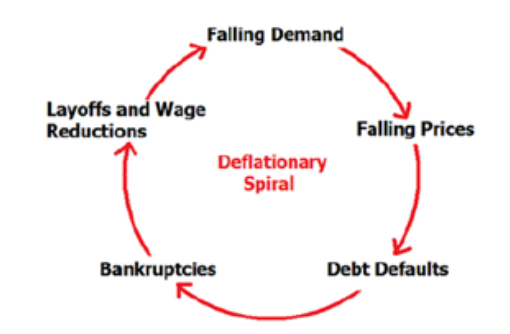
- Deflation is the economic term used to describe the drop in prices for goods and services.
- It normally takes place during times of economic uncertainty when the demand for goods and services is lower, along with higher levels of unemployment.
- Deflation slows down economic growth by causing businesses to cut jobs, freeze hiring, and offer discounts to maintain sales.
- It is the opposite of inflation, where prices tend to rise over time.
Reasons for deflation in China:
- China’s post-COVID-recovery momentum has faltered as domestic demand weakens.
- Government intervention in IT, Real state industries
- Geopolitical tensions leading to the trade war with the USA.
- Crackdown on polluting industries
- Rising wages in China
- Consumer Price Index (CPI) Dropped in China
- Product Price Index (PPI) Decline: The product price index, a measure of wholesale prices, continued its downward trajectory.
CAG Report on Railway Finance - Edukemy Current Affairs
In News: According to a new Comptroller Auditor General (CAG) report, the Indian Railways’ finances have slipped into a “concern zone”, with the railways spending ₹107 to earn ₹100 during 2021-22.
About the CAG Report Findings:
- The report said that the Operating Ratio (OR) of the Railways was 107.39% in 2021-22 as against 97.45% in 2020-21.
- Operating Ratio is a measure to calculate the ratio of working expenses to earnings. Higher ratio indicates lower ability to generate a surplus.
- Indian Railways could not generate a net surplus during 2021-22 as it had done in 2020-21.
- The report also found that the total expenditure (revenue and capital heads) of the ministry of railways was ₹3,96,658.66 crore (35.19% more than the previous year), which was comprised of ₹1,90,267.07 crore (22.61% more than the previous year) of capital and 2,06,391.59 crore (49.31% more than the previous year) of revenue expenditure.
- The railways incurred around 75.47% of the total working expenses on staff costs, pension payments and lease hire charges on rolling stock.
- The report found that the Railways was not able to follow the guidelines for digital payment/limited cash transactions and made cash transactions of Rs 2,395.52 crore from 2017-18 to 2021-22.
Reasons for lower surplus generation:
- Inadequate generation of internal resources resulted in greater dependence on Gross Budgetary Support (GBS) and Extra Budgetary Resources (EBR).
- Cross subsidising of passenger fares through profits generated on freight operations. This cross-subsidisation continues to be a concern, as railways has not been able to raise fares in the sleeper class.
- Higher appropriation to pension funds in the FY 2021-2022 led to decline in profits,
The overall loss decreased over the previous year but the entire profit of ₹36,196 crore from freight traffic was utilised to cross-subsidise and compensate the loss on operation of passenger and other coach services.
National Policy on Official Statistics
In News: The Ministry of Statistics and Programme Implementation (MoSPI) unveiled the revised draft national policy on official statistics, which focused on creating an overarching framework for the creation and release of statistics in the country using big data analytics, artificial intelligence and machine learning.
About the draft National Policy on Official Statistics (NPOS):

- The revised NPOS is introduced five years after the government released its draft policy based on suggestions from the National Statistical Commission and United Nations Fundamental Principles of Official Statistics.
- This policy will provide an overarching framework for providing reliable, timely and credible social and economic statistics to assist decision-making within and outside the Government.
- The Indian Official Statistical system is required to reorient their strategies with the emerging technologies including AI/ ML dovetailed with commensurate instruments of data collection, compilation processing, storage, integration, analysis and dissemination.
- Besides its focus on technology, the new policy envisages the creation of an integrated data system, optimisation of administrative statistics, innovation in surveys to reduce the burden on respondents and continuous augmentation quality of official statistics.
- National Statistical Commission (NSC) and central ministries have prepared a list of core statistics in eight domains: “National Income, Production & Services sectors, Budgetary Transactions, Money and Banking, Capital Market, Indices and other short-term indicators, External Sector, and Demography, Social and Environment Sectors.
Different Plans suggested by NPOS:
- Short Term Plan: Guidelines for designation of statistical advisers and finalisation of core statistics are its short-term plan to be completed within 1-2 years.
- Medium Term Plans: Integrated data systems, the creation of the National Data Sheet for a uniform format of data on a system, and the innovation of surveys are medium-term projects.
- Long term Plans: Coordination with sub-national governments and training form part of the long-term plan.
Fertilizer Availability and Local Production
In News: Recently, the Standing Committee on Chemicals and Fertilizers has presented its reports highlighting concerns about fertilizer availability, subsidies, and GST rates on fertilizer components.
Fertilizers used in India:
- A fertiliser is a natural or artificial substance containing chemical elements (such as Nitrogen (N), Phosphorus (P) and Potassium (K)) that improve the growth and productiveness of plants.
- There are 3 basic fertilisers in India – Urea, DAP and Muriate of Potash (MOP).
- In India, urea is the most produced, imported, consumed and physically regulated fertiliser of all. It is subsidised only for agricultural uses.
- The price of non-urea fertilisers is fixed by the companies. All Non-Urea based fertilisers (such as DAP and MOP) are regulated under the Nutrient Based Subsidy (NBS) Scheme.
Concerns raised by the Committee:
- India heavily depends on imported fertilizers like urea, DAP, MOP, NPK, etc. (30% of urea, 100% muriate of potash, 60% Diammonium phosphate imported)
- Irregularities in fertilizers sale such as diversion, black marketing, hoarding, sub-standard quality etc.
- Current NBS policy excludes urea from subsidies. This creates price control for urea, unlike other fertilizers.
- GST rate for fertilizers: 5%; GST rate for raw materials (sulphuric acid, ammonia): 18%; This highlights the inconsistency in GST rates between fertilizers and their raw materials.
Recommendations from the Committee:
- Increase local fertilizers production (especially urea) by facilitating investments for public, cooperative and private fertilizers manufacturers.
- Creating a separate tariff code for urea used for non-agricultural purposes. Develop a central monitoring mechanism to conduct random checks.
- Review NBS policy to remove disincentives for using other fertilizers and promote balanced use.
- Lower GST on raw materials to support fertilizer manufacturing and farmers.
- Implement purchase policy reforms. Advocated for long-term import contracts for fertilizers and raw materials.
Mission Indradhanush - Edukemy Current Affairs
In News: As per Health Management Information System (HMIS) 2022-23, 6 States/UTs have achieved 100% full immunization Coverage (FIC) whereas 17 States have achieved FIC of more than 90%
About:
- Mission Indradhanush was launched in 2014 as a special drive to expand full immunization coverage in India.
- The Mission Indradhanush (MI) initiative, operating under the Universal Immunization Program (UIP), focuses on low-immunization areas to vaccinate children and pregnant women who missed Routine Immunization.
- Ministry: Ministry of Health and Family Welfare (MOHFW).
- In 2022, the Intensified Mission Indradhanush (IMI) 4.0 was executed in 416 high-priority districts across India.
Universal Immunization Programme (UIP):
- India’s Universal Immunization Programme (UIP) provides free vaccines against 12 life threatening diseases.
- It provides life-saving vaccines to all children across the country free of cost to protect them against Tuberculosis, Diphtheria, Pertussis, Tetanus, Polio, Hepatitis B, Pneumonia and Meningitis due to Haemophilus Influenzae type b (Hib), Measles, Rubella, Japanese Encephalitis (JE) and Rotavirus diarrhea. (Rubella, JE and Rotavirus vaccine in select states and districts)
Tidal energy potential - Edukemy Current Affairs
In News: Standing Committee submits inquiry report on Tidal Energy Potential assessment in India
About Tidal energy potential:
- The Standing Committee on Energy has recently released a report which focuses on assessing tidal, wave, and thermal energy potential in India.
- Tidal energy is generated from the gravitational forces between Earth, Moon, and Sun affecting ocean tides.
- These are of two types viz., Tidal stream systems (kinetic energy of moving water) and tidal range systems (potential energy from water level differences).
- Major highlights:
- The theoretical estimated potential of India is 12,455 MW for tidal power and 41,300 MW for wave power with the global energy potential estimated at 800 TWh/year.
- In India, coastal regions have potential for strong tidal currents such as Gulf of Kutch, Gulf of Cambay, Sundarbans Delta.
- These are predictable and reliable as tides follow lunar cycles, providing consistent energy generation and tidal currents being denser than air, allows efficient power extraction.
- As there is no greenhouse gas emissions or pollution during energy production, these are environmentally friendly with minimal visual impact.
- However, tidal energy faces a range of challenges including high infrastructure costs, limited suitable locations, environmental impact, technological complexity etc,
- Overall, Tidal energy holds significant promise as a clean and renewable energy source and will go a long way to help fight global warming threat.
Major Tidal Energy projects:
- Gulf of Kutch, India: Proposed demonstration tidal power project.
- Durgaduani Creek, West Bengal: Tidal Energy Research and Demonstration Project.
- La Rance, France: One of the world's first tidal power plants, operational since 1966.
- MeyGen, Scotland: Large-scale tidal stream array generating power since 2016.
Ayushman Bharat Pradhan Mantri Jan Arogya Yojana (AB-PMJAY)
In News: Recently, “Ayushman Bharat - Pradhan Mantri Jan Arogya Yojana” completes five years of its implementation.
About
Ayushman Bharat, a prominent initiative by the Government of India, was introduced following the recommendations of the National Health Policy 2017. The primary objective was to realize the vision of Universal Health Coverage (UHC) through two interconnected components: Health and Wellness Centres (HWCs) and Pradhan Mantri Jan Arogya Yojana (PM-JAY).
Pradhan Mantri Jan Arogya Yojana (PM-JAY):
- PM-JAY is the world's largest government-funded health insurance scheme. Launched in February 2018, it offers a comprehensive coverage of up to Rs. 5 lakhs per family for both secondary care (non-super specialist) and tertiary care (super specialist) medical services.
- Beneficiaries of PM-JAY receive seamless access to cashless and paperless healthcare services directly at the hospital.
- The scheme encompasses various Health Benefits Packages, covering medical procedures, surgeries, daycare treatments, medication expenses, and diagnostic services.
- These packages are designed with all-inclusive rates, ensuring that beneficiaries are not charged separately for individual components. Once these rates are set, hospitals are not allowed to charge beneficiaries any additional amount.
Beneficiaries:
- PM-JAY operates on an entitlement-based approach, targeting individuals identified in the latest Socio-Economic Caste Census (SECC) data.
- Upon inclusion in the SECC database, beneficiaries become insured and can avail themselves of healthcare services at any empaneled hospital.
Funding:
- The funding structure for PM-JAY is shared between the central government and states/Union Territories (UTs).
- The distribution ratio is 60:40 for states/UTs with their own legislatures, 90:10 for Northeast states, Jammu and Kashmir, Himachal Pradesh, and Uttarakhand, and 100% central funding for UTs without legislatures.
Nodal Agency:
- To ensure the effective implementation of PM-JAY in collaboration with state governments, the National Health Authority (NHA) was established as an independent entity under the Society Registration Act, 1860.
- State Health Agency (SHA), serves as the apex body within each state and is responsible for overseeing the execution of AB PM-JAY at the state level.
Impact of the Scheme:
- Reduced Out-of-Pocket Expenditure: Ayushman Bharat-Pradhan Mantri Jan Arogya Yojana (AB-PMJAY) has provided vital support to more than 12 crore families, with the ambitious goal of covering 50% of India's population. This substantial coverage has effectively curtailed out-of-pocket healthcare expenses and resulted in savings of over Rs. 1 lakh crore in medical treatment costs.
- Promotion of Gender Equality: The scheme has actively contributed to promoting gender equality in healthcare. Notably, 48% of the beneficiaries receiving treatments are women, demonstrating a commitment to ensuring unbiased access to healthcare services.
- Advancement towards Universal Health Coverage: AB-PMJAY aligns seamlessly with Sustainable Development Goal 3.8, which aims to achieve universal health coverage. By guaranteeing quality healthcare services irrespective of economic status, the scheme has moved India closer to fulfilling this global objective.
- Enhanced Accessibility: With a network of over 27,000 hospitals that honor the Ayushman Card for free medical treatment, AB-PMJAY has facilitated easy access to healthcare for patients across the country. This accessibility is particularly beneficial for migrants who may need medical assistance while in different states.
- Efficient Fraud Prevention: To ensure the integrity of the scheme, AB-PMJAY has implemented robust fraud prevention measures. This includes the establishment of the National Anti-Fraud Unit (NAFU) and state-level units, as well as the integration of Aadhaar-based authentication and cutting-edge technologies like Artificial Intelligence (AI) and Machine Learning (ML) to detect and deter fraudulent activities. The scheme has taken action against over 210 hospitals found in violation, resulting in their removal from the empanelled list.
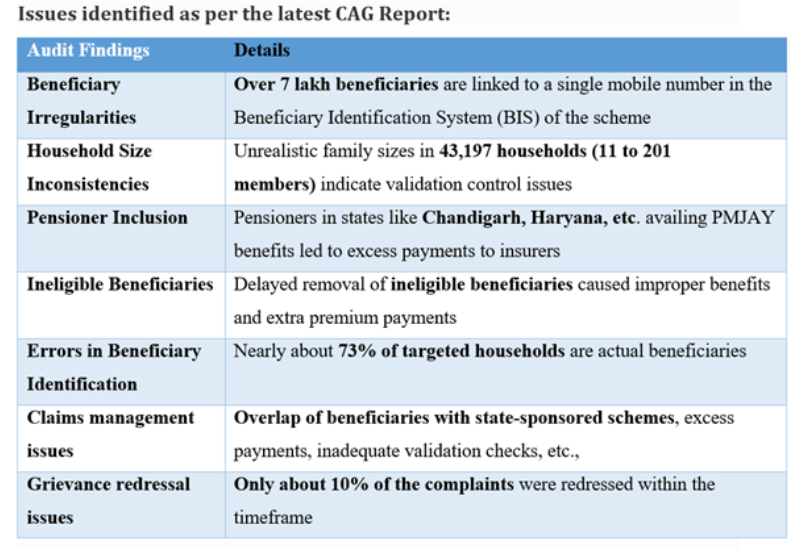
- Establishment of Feedback Mechanism: AB-PMJAY has implemented a systematic feedback mechanism wherein patients receive follow-up calls after their treatments. This practice not only helps evaluate the quality of services provided but also enhances accountability within the healthcare system, ultimately leading to improvements in service delivery.
Excess cane payments - Edukemy Current Affairs
In News: Centre allows relief to sugar cooperatives over excess cane payments made to farmers.
About the excess cane payments:

- The Centre fixes a fair and remunerative price (FRP) for sugarcane every year, which is the minimum amount that sugar mills have to pay to farmers for procuring their cane.
- Cooperative factories, particularly in Maharashtra, usually pay farmers a final cane price that is more than the Centre’s fair and remunerative price or FRP.
- Issue: This extra price paid has resulted in tax litigation, with mills claiming the excess payment as business expenditure.
- The Income Tax Department, has disallowed this and treats the excess price paid for sugarcane over and above the SMP as appropriation/distribution of profits, and thus not allowable as deduction.
Government’s efforts to resolve the issue:
- The 2015-16 Union Budget had introduced an amendment to the Finance Act.
- It provided for excess cane price payments made by cooperative sugar mills to be allowed as deduction for computing their business income.
- However, such deduction was made applicable only prospectively from 2016-17 assessment year.
- It did not end demands and litigation regarding previous assessment years.
- The Finance Ministry’s 2023-24 Budget sought to conclude the matter and to extend the benefit of deduction to all financial years prior to 2015-16.
- This was done by amending Section 155 of Income Tax Act.
- The Finance Ministry has notified the rules enabling cooperative sugar mills to claim past cane price payments made to farmers, in excess of the government’s statutory minimum price (SMP), as “business expenditure”.
- The move is expected to provide mills a relief of almost Rs 10,000 crore, against pending tax demands and litigation in respect of payments made before 2015-16 financial year.
India's Strategic Petroleum Reserves
In News: Ministry of Petroleum & Natural Gas deliberates on India's Strategic Petroleum Reserves
About Strategic Petroleum Reserve Programme
- India's Strategic Petroleum Reserve (SPR) Programme is a government initiative aimed at enhancing the country's energy security by creating a strategic stockpile of crude oil.
- The program involves the establishment of underground storage to store crude oil that can be utilized during emergencies, supply disruptions, or fluctuations in global oil prices.
- Key features:
- India has an underground storage site with a total capacity of over 5.33 million Metric Tonnes (MMT) of crude oil.
- These are located in: Vishakhapatnam, Andhra Pradesh (1.33 MMT), Mangaluru, Karnataka (1.5 MMT) and Padur, Karnataka (2.5 MMT)
- Government has also approved establishment of additional facilities with total storage capacity to be expanded to 6.5 MMT.
- New locations include Chandikhol, Odisha (4 MMT) and Padur, Karnataka (2.5 MMT).
- These storages provides energy security and a buffer against supply disruptions during crises and strengthens India's ability to manage energy needs effectively.
- Overall, Strategic Petroleum Reserves will play a crucial role in safeguarding the nation's energy security and mitigating risks arising from global energy dynamics.
BharatNet Project - Edukemy Current Affairs
In News: Recently, the Union Cabinet has approved Rs 1.39 lakh crore for the Modernization of the BharatNet project.
BharatNet Project:
- National Optical Fibre Network (NOFN) was launched in October 2011 and was renamed as Bharat Net Project in 2015.
- It is the world’s largest rural broadband connectivity programme using Optical Fiber. And also, a flagship mission implemented by Bharat Broadband Network Ltd. (BBNL). BBNL is a Special Purpose Vehicle (SPV) set up by the Government of India under the Companies Act, 1956.
- Partnering with Village Level Entrepreneurs (Udyamis), who will play a pivotal role in providing fiber connections to the last mile.
- Government aims to expedite the process of connecting all 640,000 villages across India within the next 2.5 years. This acceleration aligns with the goal of enhancing digital connectivity and bridging the urban-rural digital divide.
- The government will cover the expenses related to bringing the necessary infrastructure to the households, such as laying down the fiber connections and related hardware.
Challenges to the BharatNet Project:
- The project has faced significant delays in implementation, with the pace of progress being slower than anticipated. Despite the government's efforts to connect villages, only about 194,000 out of the targeted 640,000 villages have been connected so far.
- The challenging terrain, lack of proper roads, and logistical difficulties have all contributed to delays in connecting villages.
- Technical challenges such as signal quality, bandwidth limitations, and network downtime have affected the overall user experience.
- The presence of private telecom operators like Jio and Airtel in some rural areas poses a challenge for BharatNet.
Way Forward:
- Addressing technical, financial, operational, and awareness related challenges is essential for the project's success in achieving its goal.
- Efforts should be made to expedite the implementation process by addressing bottlenecks and streamlining the deployment of infrastructure.
- Clear financial planning, allocation, and management are necessary to support the project's expansion and maintenance activities.
- Focusing on improving the quality of service is vital to attract and retain users.
Revised Good Manufacturing Practices Standards
In News: Recently, the government of India has directed all pharmaceutical companies to implement the Revised Good Manufacturing Practices (GMP), bringing their processes at par with Global Standards.
Good Manufacturing Practices (GMP) standards:
- GMP standards are guidelines and regulations that ensure the quality, safety, and consistency of pharmaceutical products.
- It is designed to minimize the risks involved in any pharmaceutical production that cannot be eliminated through testing the final product.
- WHO (World Health Organization) has established detailed guidelines for GMP. Many countries have formulated their own requirements for GMP based on WHO GMP.
- GMP system was first incorporated in India in 1988 in Schedule M of Drugs and Cosmetics Rules, 1945. It was revised in 2018, bringing them on par with WHO standards.
- At present, only 2,000 of 10,500 manufacturing units in the country were found to be compliant with WHO-GMP standards.
Revised GMP Guidelines:
- The new guidelines introduce a pharmaceutical quality system, which emphasizes the establishment of a comprehensive quality management system throughout the manufacturing process.
- Companies are now required to implement quality risk management practices to identify potential risks to the quality of their products and take appropriate preventive measures.
- Companies are now required to conduct stability studies based on climate conditions.
- The new guidelines emphasize the use of computerized systems to manage GMP-related processes.
- Companies with over Rs 250 crore turnover must adopt the revised GMP within six months, while smaller enterprises having a turnover of less than 250 crore have a year.
- The new schedule also lists out the requirements for additional types of products, including biological products, agents with radioactive ingredients, or plant-derived products.
Significance of Revised GMP guidelines:
- Implementation of the new norms will bring the Indian industry on par with global standards.
- There has been a string of incidents where other countries have reported alleged contamination in India-manufactured syrups, eye-drops, and eye ointments.
- The improved standards will ensure that pharmaceutical companies follow standard processes, quality control measures, and do not cut corners, improving the quality of medicines available in India as well as sold in the global market.
- It will improve the quality of drugs in the domestic markets.
Bhu-Vision - Edukemy Current Affairs
In News: Recently, a revolutionary IoT-based automated soil testing and agronomy advisory platform, Bhu-Vision (also known as KRISHI-RASTAA Soil Testing System), has been officially launched at AICRP (ICAR-IIRR), Hyderabad.
About:

- Developed by ICAR-Indian Institute of Rice Research (ICAR-IIRR), Hyderabad.
- This system seamlessly conducts 12 key soil parameter tests in just 30 minutes, providing quick, accurate results directly to farmers and stakeholders through a soil health card on their mobile devices.
- These parameters include pH, electrical conductivity, organic carbon, nitrogen, phosphorus, potassium, calcium, magnesium, sulfur, iron, zinc, and boron.
- It signifies a promising future for agricultural technology in India, contributing to a more comprehensive understanding of the nation’s soil health and agricultural landscape.
- This platform will play a vital role in completing the nation’s soil health map.
Rajmargyatra - Edukemy Current Affairs
In News: Recently, National Highway Authority of India (NHAI) has launched a new app called 'Rajmargyatra' in a bid to improve user experience on highways and create a ‘citizen-centric unified mobile application’.
About:

- Rajmargyatra is a user-friendly app that will help provide travellers with comprehensive information about India's highways and also offer them an efficient grievance redressal mechanism.
- This application is currently available in Hindi and English and can be downloaded via the Google Play Store and iOS App Store.
- Features
- Comprehensive Highway Information:
- It serves as a one-stop repository of essential information for National Highway users.
- The app will allow users to get real-time weather conditions, details of nearby toll plazas, petrol pumps, hospitals, hotels and other essential services and timely traffic alerts.
- Hassle-Free Complaint Redressal:
- The app comes equipped with an inbuilt complaint redressal and escalation mechanism.
- The registered complaints will be handled in a time-bound manner, with system-generated escalations to higher authorities in case of any delays.
- FASTag services:
- NHAI's new app has integrated its services with various banking portals to make it convenient for users to recharge their FASTags, avail monthly passes and get other FASTag related services on a single platform.
- Safe driving features:
- The Rajmargyatra app comes with over-speeding notifications and a built-in voice assistant to encourage safe driving behavior.
- Comprehensive Highway Information:
G20 Principles for Financing Cities of Tomorrow
In News: The G-20 members have come out with a report “Financing Cities of Tomorrow” after the third G20 Infrastructure Working Group meeting at Rishikesh. They endorsed the “Principles for Financing Cities of Tomorrow: Inclusive, Resilient and Sustainable”
Key Highlights of the Report:
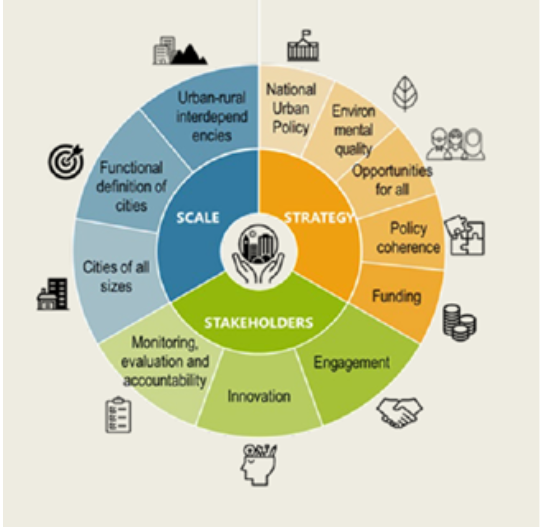
- Delivering quality urban infrastructure is one of the most pressing challenges for cities in a rapidly urbanising and changing world.
- The ‘G20 Principles on Financing Cities of Tomorrow’ and the “Financing Cities of Tomorrow” report provide guidance and evidence to accelerate quality infrastructure investment in cities.
- Cities have strong potential to better meet current and future urban infrastructure challenges and enhance investment.
- Better urban planning improves the likelihood of raising private capital for inclusive, resilient and sustainable urban investments. Financing of urban infrastructure cannot be achieved without cities leveraging private investment.
- City Governments have a key role in the planning and provision of urban infrastructure, with subnational governments responsible for almost 60% of total public investments in G20 countries. City governments can mobilise funds through:
- Municipal bonds: Ex. Municipal Bond in Vadodara
- Green, social and sustainable bonds: Ex. Green Bond in Mexico City
- Green, social and sustainable loans: Ex. Green and Social Loans from La Banque Postale (France)
- Sustainability-linked bonds: Ex. Sustainability-Linked Bond in the City of Helsingborg (Sweden)
- Catastrophe bonds: Catastrophe Bond in Los Angeles (US)
- Improving City Governments’ access to sustainable finance for quality infrastructure investments can help create more inclusive, resilient and sustainable cities.
- Create an enabling environment for City Governments to access affordable and sustainable finance, in line with national institutional contexts and ensuring fiscal responsibility.
- Ensure that cities have access to sufficient and predictable sources of funding.
- Enhance the use of sustainable financing instruments for infrastructure investments made by City Governments
Gross Fixed Capital Formation (GFCF)
In News: Recently, The Minister stated that this is indicated by Gross Fixed Capital Formation (GFCF) in the Indian economy which has increased from Rs. 32.78 lakh crore (constant 2011-12 prices) in 2014-15 to Rs. 54.35 lakh crore in 2022-23 (Provisional Estimates).
About:
- Gross Fixed Capital Formation (GFCF) refers to the total amount of investment made in the production of physical assets, such as buildings, machinery, equipment, and infrastructure, within a country during a specific period.
- It does not account for the consumption (depreciation) of fixed capital.
- It indicates the increase in the nation’s capital stock and productive capacity.
- Generally, the higher the capital formation of an economy, the faster an economy can grow its aggregate income.
- As per RBI, Gross capital formation refers to the ‘aggregate of gross additions to fixed assets (that is fixed capital formation) plus change in stocks during the counting period.’
- It is a component of expenditure approach to calculating Gross Domestic Product (GDP).
- GFCF is not a measure of total investment, because only the value of net additions to fixed assets is measured, and all kinds of financial assets, as well as stocks of inventories and other operating costs are excluded.
Schemes for Farmers’ Welfare
In News: The Ministry of Agriculture and Farmer Welfare, informed the Lok Sabha about the five major schemes launched by the Government during the last four years, to address various aspects of agriculture and benefit farmers including small and marginal farmers.
About the Schemes:
1. Pradhan Mantri Kisan Samman Nidhi (PM-KISAN)
- The scheme is being implemented to provide income support to all landholding Farmers’ families to enable them to take care of expenses related to agriculture and allied activities as well as domestic needs.
- The Scheme aims to provide a payment of Rs.6000/- per year, released in three 4-quarterly instalments of Rs.2000/ for the farmers’ families with cultivable land holding, subject to certain exclusions. Payment is done through DBT.
2. Formation and Promotion of 10,000 Farmer Producer Organizations (FPOs)
- Government has launched the Central Sector Scheme (CSS) in 2020.
- Formation & promotion of FPOs are to be done through Implementing Agencies (IAs), which further engage Cluster Based Business Organizations (CBBOs) to form & provide professional handholding support to FPOs for a period of 5 years.
- It includes preparation and execution of business plans for the concerned FPOs for better marketing opportunities & market linkages on a sustainable basis.
3. Agriculture Infrastructure Fund (AIF)
- To address the existing infrastructure gaps and mobilise investment in agriculture infrastructure, Rs 1 lakh crore Agri Infra Fund was launched under Aatmanirbhar Bharat Abhiyan.
- The AIF is a medium - long term debt financing facility for investment in viable projects for post-harvest management infrastructure and community farming assets through interest subvention and credit guarantee support.
4. National Mission on Edible Oil-Oil Palm (NMEO-OP)
- A Centrally Sponsored Scheme namely, NMEO-OP was launched by GOI to promote oil palm cultivation for making the country AtmaNirbhar in edible oils with special focus on North-Eastern States and A&N Islands.
- The Mission will bring additional area of 6.5 lakh ha under Oil Palm plantation in next 5 years from 2021-22 to 2025-26.
5. National Beekeeping & Honey Mission (NBHM)
- A new Central Sector Scheme entitled NBHM was launched in 2020 under AtmaNirbhar Bharat Abhiyan for overall promotion and development of scientific beekeeping & to achieve the goal of “Sweet Revolution”.
Gross Fixed Capital Formation - Edukemy Current Affairs
In News: Gross Fixed Capital Formation (GFCF) in Indian economy increases from Rs. 32.78 lakh crore (constant 2011-12 prices) in 2014-15 to Rs. 54.35 lakh crore in 2022-23 (Provisional Estimates).
About India’s GFCF:
- GFCF consists of resident producers’ investments, deducting disposals, in fixed assets during a given period.
- It also includes certain additions to the value of non-produced assets realised by producers or institutional units.
- Fixed assets are tangible or intangible assets produced as outputs from production processes that are used repeatedly, or continuously, for more than one year.
- The Government and private sector together invest in the economy.
- This is indicated by Gross Fixed Capital Formation (GFCF) in the Indian economy which has increased from Rs. 32.78 lakh crore (constant 2011-12 prices) in 2014-15 to Rs. 54.35 lakh crore in 2022-23 (Provisional Estimates).
- The government is implementing
- Scheme for Special Assistance to States for Capital Expenditure (2020-21 & 2021-22), and
- Scheme for Special Assistance to States for Capital Investment (2022-23 & 2023-24).
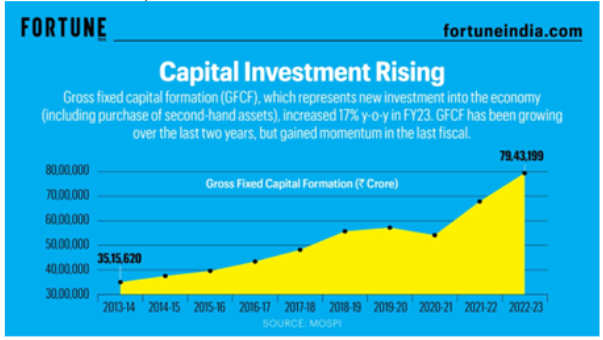
- Government approved and released special assistance (loan) in the form of 50-years interest free loan for capital expenditure on capital projects including capital projects pertaining to sectors like health, education. irrigation. power. etc for capital expenditure for different States.
MSME CARD - Edukemy Current Affairs
In News: Recently, the Ministry of Micro Small and Medium Enterprises, (MSME) in association with National Payment Corporation of India (NPCI) had launched the MSME RuPay Credit Card on pilot basis, pan-India for Udyam registered MSMEs.
About:
- The MSME RuPay Credit Card provides a simplified payment mechanism to MSMEs to meet their business-related operational expenses like digital payments, utility bills payments, tax/statutory payments etc.
- MSME borrowers also takes benefit of interest-free credit period on their business spends as per the bank's policy.
National Payment Corporation of India (NPCI)
- NPCI is an umbrella organization for operating retail payments and settlement systems in India.
- It is an initiative of the Reserve Bank of India (RBI) and Indian Banks’ Association (IBA) under the provisions of the Payment and Settlement Systems Act, 2007, for creating a robust Payment & Settlement Infrastructure in India.
Akhil Bharatiya Shiksha Samagam and ULLAS Initiative
In News: Union government launches multiple initiatives on 3rd Anniversary of New Education Policy 2020 at Bharat Mandapam, New Delhi.
Akhil Bharatiya Shiksha Samagam and ULLAS Initiative
- Ministry of Education has recently launched the mobile application of ULLAS: Nav Bharat Saksharta Karyakram at the Akhil Bharatiya Shiksha Samagam 2023.
- Important features:
- ULLAS initiative aims to revolutionize education and literacy in India by creating a learning ecosystem that reaches every individual and bridges the gaps in basic literacy and critical life skills.
- The program imparts basic education, digital and financial literacy, and critical life skills to citizens aged 15 and above who missed the opportunity to attend school.
- The mobile application of ULLAS is user-friendly and interactive, available on both Android and iOS platforms.
- It will serve as a digital gateway for learners to access diverse learning resources through the DIKSHA portal of NCERT.
- It allows learners and volunteers to register through self-registration or by surveyors and aims to create a culture of continuous learning and knowledge-sharing in communities across India.
- The initiative focuses on promoting functional literacy, vocational skills, financial literacy, legal literacy, digital literacy, and empowering citizens to participate in nation-building.
- The scheme also encourages volunteers to participate in the ULLAS initiative as a duty towards nation-building.
- Student volunteers will receive incentives such as credits in school/university and appreciation through certificates, letters, and felicitation.
- Overall, the launch of ULLAS will help spreading of knowledge across the nation, empowering citizens with education by using technology and community-driven efforts.
Self-Reliant India Fund for MSMEs
In News: Recently, the Government of India announced a Rs 50,000 crore Equity infusion for Micro, Small, and Medium Enterprises (MSMEs) as a part of Aatmanirbhar Bharat package through the Fund of Funds.
Self-Reliant India (SRI) Fund:
- The SRI Fund operates through a mother-fund and daughter-fund structure for equity or quasi-equity investments.
- The National Small Industries Corporation (NSIC) Venture Capital Fund Limited (NVCFL) is registered as the Mother Fund under the SRI Fund implementation.
- It has been registered as a Category-II Alternative Investment Fund (AIF) with SEBI.
- The objective of SRI Fund is to provide equity funding to viable and high-potential MSMEs, fostering their growth and transformation into larger enterprises.
- Rs. 10,000 crores contributed by the Government of India and Rs. 40,000 crores from Private Equity and Venture Capital funds.
Other Initiatives for MSMEs:
- MSME Champions Scheme: This scheme provides financial assistance to MSMEs to enhance their competitiveness and innovation capabilities.
- Infusion in Credit Guarantee Fund: As part of the Budget 2023-24, the government announced an infusion of Rs. 9,000 crores in the corpus of Credit Guarantee Fund Trust for Micro & Small Enterprises.
- Raising and Accelerating MSME Performance (RAMP): This initiative focuses on strengthening institutions and governance of MSME programs at both the central and state levels.
- Amendment in Income Tax Act: The Finance Act 2023 brought about an amendment in Section 43B of the Income Tax Act, 1961, to offer more favourable tax provisions for MSMEs.
Barrier to Women's Labor Force Participation
In News: Recently, Tamil Nadu government launched camps to facilitate the registration of applicants for the Kalaignar Magalir Urimai Thogai Thittam, or women’s basic income scheme.
About
The scheme Aimed to “recognize women’s unpaid labour”, the scheme will provide ₹1,000 per month to women in eligible households. In Marriages, the wife bears and rears children and minds the home, and therefore bears the brunt of unpaid care and domestic work, hindering their Participation in Labor Force.
Factors contributing to lower women's participation in the labor force:
- Patriarchal Social Norms: Deep-rooted societal norms and traditional gender roles often restrict women's access to education and employment opportunities. Cultural expectations may prioritize women's roles as caregivers and homemakers, discouraging their active involvement in the workforce.
- Gender Wage Gap: Women frequently encounter wage disparities compared to men, even when performing similar work. This wage gap can demotivate women from seeking formal employment due to the unfair compensation they may receive.
- As per World Inequality Report, 2022, women in India just capture 18% of labor income, while men earn 82%.
- Unpaid Care Work: The unequal distribution of unpaid care and domestic responsibilities falls disproportionately on women, leaving them with limited time and energy for paid employment. This imbalance, where women bear the majority of household duties, acts as a significant barrier to their participation in the labor force.
- Social and Cultural Stigma: In certain societies, there may be negative attitudes or societal resistance towards women working outside the home, leading to lower labor force participation rates among women.
Statistics Regarding Unpaid Care of Women
- Female Labour Force Participation Rate: India’s female labor force participation rate (LFPR) has been declining for more than 20 years, despite the share of educated women surging in this period. In the last two decades, female LFPR has fallen from 30% to 24%, despite the Class 10 enrolment rate among girls increasing from over 46% to 87%.
- Labour Force Participation rate in other countries: India’s female LFPR (24%) was the lowest among all these countries. India had the second-highest female population in the group. In contrast, China, which has the highest female population, had the highest female LFPR of 61%.

- Time Spending in domestic work by women is more than men: Women who are not in the labour force spend the highest amount of time on unpaid domestic/care work, averaging 457 minutes or 7.5 hours a day. But employed women were not far behind, spending 348 minutes or 5.8 hours a day. Unemployed men spend 3.5 hours per day on such chores, over two hours less than employed women. Employed men spend 2.7 hours a day on such chores, over three hours less than employed women.

- Married women spend the most amount of time engaged in unpaid work (nearly 8 hours) compared to women who are widowed/divorced/separated (5.7 hours) or have never married (4.3 hours). In contrast, married men spend the least amount of time on unpaid work (2.8 hours) compared to men who are widowed/divorced/separated (4.2 hours) or have never married (3.1 hours).
Corporate Debt Market Development Fund
In News: Recently, the government of India has approved the Guarantee Scheme for Corporate Debt (GSCD) to provide a guarantee cover for the debt raised by the Corporate Debt Market Development Fund (CDMDF) that aims to stabilize the corporate bond market during times of stress.
Corporate Debt Market Development Fund (CDMDF):
- The CDMDF is an alternative investment fund established to address the needs of the corporate debt market in India.
- It serves as a backstop facility for investment-grade corporate debt securities, providing stability and enhancing investor confidence in the market.
- It provides a backstop facility of Rs 33,000 crore has been established for Mutual Funds. The government will contribute Rs 30,000 crore, and the Asset Management Companies will provide the remaining Rs 3,000 crore.
Guarantee Scheme for Corporate Debt (GSCD):
- It provides a complete guarantee cover for debt raised by the CDMDF.
- Its primary objective is to enhance investor confidence and provide stability to the corporate debt market.
- Guarantee Fund for Corporate Debt (GFCD) will manage the GSCD. The GFCD is a trust fund formed by the Department of Economic Affairs (DEA) and managed by the National Credit Guarantee Trustee Company Ltd (NCGTC).
- NCGTC is a wholly-owned company of the Department of Financial Services under the Ministry of Finance.
- The scheme is designed to support the purchase of investment-grade corporate debt securities by CDMDF during market dislocation.
SEBI Guidelines for CDMDF:
- During normal market conditions, CDMDF focuses on dealing in low duration government securities (G-sec), treasury bills, and guaranteed corporate bond repo with a maturity not exceeding seven days.
- When the market experiences dislocation, CDMDF steps in to purchase investment-grade corporate debt securities, providing a safety net for investors.
- CDMDF is authorized to purchase only listed corporate debt securities with a residual maturity of up to five years.
- CDMDF buys securities at a fair price (not at distress price), factoring in liquidity risk, interest rate risk, and credit risk to ensure transparency and market stability.
- CDMDF will be launched as a closed-ended scheme with an initial tenure of 15 years. The possibility of extension lies at the discretion of the Department of Economic Affairs (DEA) in consultation with SEBI.
RBI’s Digital Payments Index (RBI-DPI)
In News: Digital payments across the country registered a growth of 13.24% in a year through March 2023, as per RBI's index that measures the adoption of online transactions.
About:

- RBI's Digital Payments Index (RBI-DPI) stood at 395.57 at end-March 2023 compared to 377.46 in September 2022 and 349.30 in March 2022.
- The increase in the index was attributed to substantial growth in payment infrastructure and performance across the country.
Digital Payments Index
- Digital Payments Index assesses the level of digitalization in payments nationwide and showcases the growth of different digital payment methods.
- It is released semi-annually and consists of five main parameters with varying weights:
- Payment Enablers (weight 25%)
- Payment Infrastructure – Demand-side factors (10%)
- Payment Infrastructure – Supply-side factors (15%)
- Payment Performance (45%)
- Consumer Centricity (5%)
- These parameters enable the measurement of the deepening and penetration of digital payments in the country over different periods.
Resource Efficiency Circular Economy Industry Coalition
In News: Recently, Resource Efficiency Circular Economy Industry Coalition (RECEIC) was inaugurated by the Union Minister of Environment, Forest and Climate Change.
About Resource Efficiency Circular Economy Industry Coalition (RECEIC)
- A total of 39 multinational corporations (MNCs) hailing from various sectors such as steel, FMCG (Fast-Moving Consumer Goods), and electronics united to form RECEIC.
- Their collective commitment involves embracing resource efficiency and circular economy principles to tackle environmental issues arising from different types of waste, including plastics, microplastics, e-waste, and chemical waste.
- RECEIC is conceptualised by India’s G20 Presidency, it is envisaged to be industry-driven and a self-sustaining initiative continuing to function even beyond India’s G20 Presidency.
Objective of RECEIC
The coalition's main objectives are to:
- Promote and encourage collaboration between companies,
- Develop advanced capabilities across various sectors and value chains,
- Leverage the diverse global experiences of its members to drive progress,
- Encourage private sector action to enhance resource efficiency and accelerate the transition to a circular economy.
To achieve these goals, the coalition is organized around three key pillars:
- Partnerships for Impact: The coalition aims to forge strategic partnerships between companies, fostering a collaborative approach towards achieving impactful and sustainable outcomes.
- Technology Cooperation: By promoting technology sharing and cooperation among its members, the coalition seeks to drive innovation and enhance capabilities across industries.
- Finance for Scale: The coalition recognizes the importance of financial support to scale up circular economy initiatives. Therefore, it aims to facilitate funding opportunities to accelerate the adoption of sustainable practices in the private sector.
Significance of RECEIC:
- Coalition will have a central role in promoting partnerships, facilitating technological cooperation, knowledge sharing, and fostering innovation. It will also play a key role in enhancing access to finance by enabling the exchange of insights and best practices.
- Coalition's efforts will significantly contribute to advancing global goals and priorities set by the G20 and other international forums.
- RECEIC will empower industries to address information gaps and coordination challenges across all G20 members, promoting collaboration and collective action towards a more sustainable and efficient global economy.
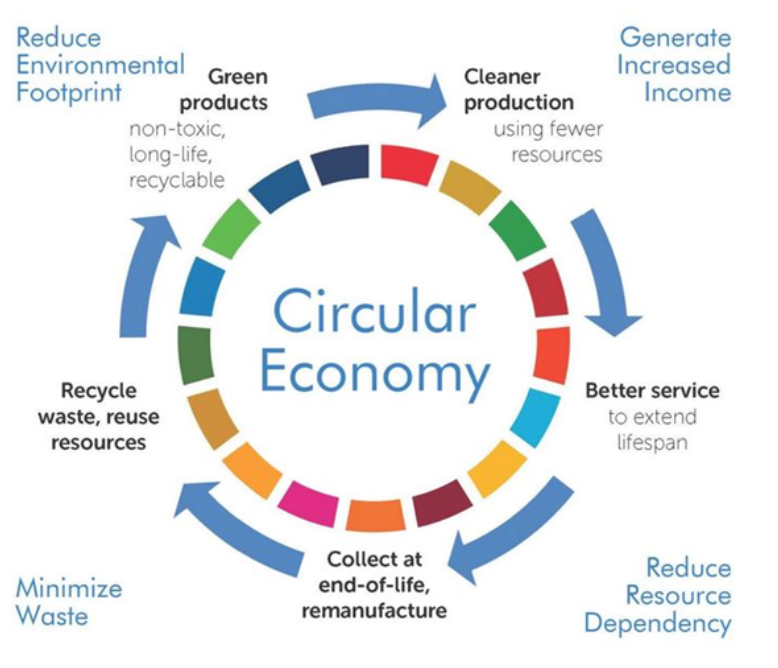
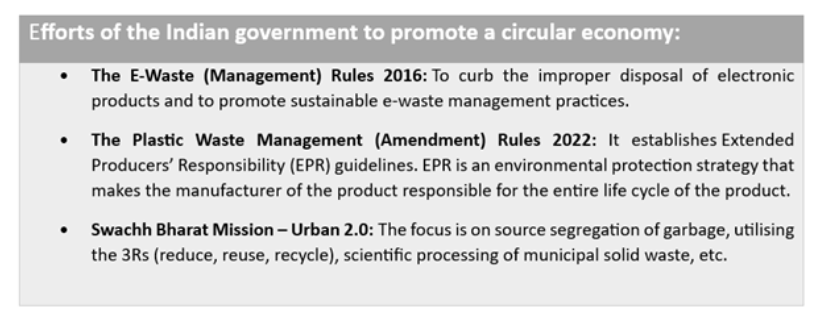
Challenges for circular economy in India:
- The circular economy model faces challenges in industries due to supply chain limitations and inadequate incentives to invest in recycling and remanufacturing processes.
- In India, there is a lack of awareness among many people about the concept of a circular economy and its associated benefits.
- India's existing infrastructure may not be adequately prepared to support a circular economy, with issues such as limited recycling facilities and inefficient waste management systems.
- Additionally, there is cultural resistance in India towards the idea of reusing and recycling products, which hinders the widespread adoption of circular practices.
Vivad se Vishwas 2.0 - Edukemy Current Affairs
In News: Union government launches Vivad se Vishwas 2.0 scheme to settle contractual disputes
About Vivad se Vishwas 2.0:
- Ministry of Finance has recently launched the "Vivad se Vishwas 2" scheme to resolve contractual disputes involving the Government of India and government undertakings.
- The scheme was announced in the budget 2022-2023 and covers disputes up to 30 September 2022.
- Key features:
- It offers a voluntary settlement scheme with standardized terms for disputes where an arbitral award is under legal challenge.
- It applies to all domestic contractual disputes involving the government and the deadline for submitting claims under the scheme is 31 October 2023.
- Contractors will be offered settlement amounts up to 85% of the net amount awarded or upheld by the court for awards passed on or before 30 April 2023.
- For arbitral awards passed on or before 31 January 2023, the settlement amount offered will be up to 65% of the net amount awarded.
- The government e-marketplace (GeM) will have a dedicated web-page for the scheme's implementation where eligible claims will be processed to ensure a smooth and transparent process.
- Contractors with non-GeM contracts of the Ministry of Railways may register their claims on the IREPS platform (www.ireps.gov.in).
- Overall, the scheme will go a long way in ensuring transparency in government contract process and will help promote ease of doing business.
Restrictions on the import of electronic devices
In News: The Centre has imposed import restrictions on laptops, tablets, and certain classes of computers, marking a change in the government's policy of unrestricted trade with regard to these goods.
About the Import Restrictions:
- The import of laptops, tablets, all-in-one personal computers, and ultra-small form factor computers and servers would be restricted, with imports only being allowed for those holding a "valid Licence for Restricted Imports".
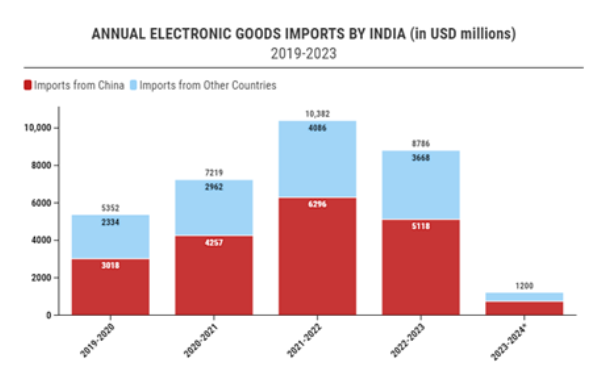
- Companies would be given enough time to apply for licences to import laptops and other devices specified in the list of restrictions.
Exemptions:
- The restrictions will not be applicable to Imports under Baggage Rules.
- Further, the restriction will not be applicable for the import of one such specified device purchased via e-commerce portals, through post or courier.
- Exemptions will also be given for 20 such devices per consignment for the purpose of R&D, testing, benchmarking, evaluation, repair, re-export and product development purposes.
- The policy also provides an exemption for the re-import of such devices that have been repaired abroad.
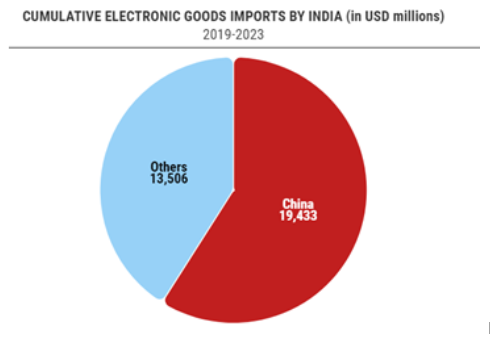
- Finally, the policy gives another exemption for such devices that form an essential part of a "Capital Good".
Reasons for Imposing Restrictions:
- WTO Rules: India is obligated to its commitment to zero-duty imports under WTO rules. Thus the inability to check the import of electronic goods, which impacts the domestic manufacturing, restrictions were imposed.
- The China factor: India's overdependence on China with regard to the import of electronic goods such as laptops, computers etc. needed to be reduced. India's cumulative imports of electronic goods since 2019 shows that China accounts for a whopping 59% of these imports.
- Boost to indigenous manufacturers: A rise in indigenous manufacturing would not only help India reduce its dependence on its diplomatic and business rival but would also help indigenous manufacturers expand their footprint globally.
- The Security factor: The restrictions had been brought in to guard against electronic hardware coming in with in-built security loopholes that may potentially endanger sensitive personal and enterprise data.
GOBARdhan Initiative - Edukemy Current Affairs
In News: Recently, The GOBARdhan initiative in India, aimed at converting waste to wealth through biogas and compressed biogas (CBG), has shown promising results and attracted significant investments.
About:

- Galvanizing Organic Bio-Agro Resources Dhan (GOBARdhan) is a crucial umbrella initiative of the Ministry of Jal Shakti, Government of India.
- In 2018, the government launched this scheme as a national priority project under the Swachh Bharat Mission Grameen-Phase II program.
- The government provides technical assistance and up to 50 lakhs of financial support per district for the safe disposal of cattle and organic waste.
- The initiative aims to manage organic waste scientifically while benefiting rural households and involves collaboration between the government, private players, and other stakeholders.
Objectives:
- Safely manage cattle and agricultural waste in villages and make the villages clean.
- Convert organic waste to biogas and organic manure for rural use
- Promote environmental sanitation and curb vector-borne diseases in rural areas
- Create rural employment and income generation opportunities by involving entrepreneurs, SHGs, and youth groups in setting up GOBARdhan units.
More Information
- The Unified Registration Portal for GOBARdhan has received requests for over 1200 biogas plants, including 320 CBG plants in just 60 days since its launch.
Odisha Millets Mission (OMM) - Edukemy Current Affairs
In News: Recently, Odisha has emerged as one of the forerunners of millets, ensuring the participation of women Self-Help Groups (SHGs) in the millet value chain where they are playing a leading role in processing, value addition, and marketing.
About:
- The initiative is a part of a joint effort led by the Odisha Millets Mission (OMM), a flagship program launched by the Department of Agriculture and Farmers’ Empowerment and the Department of Mission Shakti, to mainstream millet-based food in rural and urban areas.
- The aim is to create sustainable livelihoods and improve nutritional security, involving women SHGs through millet-based enterprises.
- Under the OMM, Millet Shakti Cafés and Outlets have been established in various districts, showcasing a diverse range of millet-based food items.
- OMM has facilitated training in recipe formulation, packaging, quality control, marketing, and other skills, empowering women to participate effectively in the millet industry.
- OMM has demonstrated a unique approach to promoting upskilling and gender equity.
Mahila Samman Savings Certificate Scheme (MSSC)
In News: Total deposits under the newly launched Mahila Samman Savings Certificate (MSSC) scheme have jumped over Rs 8600 crore and more than 14 lakh accounts have been opened across states.
About:
- MSSC is the newly launched small savings scheme of the Government to commemorate the Azadi ka Amrit Mahotsav.
- It is exclusively for women and girls in India.
- Some of the features of the scheme include:
- MSSC account can be opened by women of any age group including the girl child with a minimum deposit of Rs 1000 and maximum deposit of Rs 2 Lakhs for a period of two years.
- The interest rate for MSSC is 7.5% p.a. which is compounded quarterly.
- The facility of partial withdrawal and premature closure on compassionate grounds are also available under this Scheme.
- The Government of India has authorized the Department of Posts, all Public Sector Banks and four Private Sector Banks to operate MSSC.
- MSSC has been made available for a two-year period up to March 2025.
Data Points
- The highest number of MSSC scheme accounts has been opened in Maharashtra (2,96,771), followed by Tamil Nadu (2,55,125), Andhra Pradesh (1,21,734) and Karnataka (1,05,134).
- Among all states, the lowest number of MSSC accounts have been opened in Arunachal Pradesh (318), Bihar (7482), Goa (2786), Haryana (9247), Jharkhand (8391), Manipur (39), Meghalaya (530), Mizoram (1172), Nagaland (151), Sikkim (305), Tripura (4358).
Urea Gold - Edukemy Current Affairs
In News: Prime Minister recently launched "Urea Gold", a new variety of Urea, during an event in Rajasthan's Sikar.
About:
- It is a new variety of Urea coated with Sulphur.
- It is being introduced to address the Sulphur deficiency in soil and save input costs for the farmers.
- Urea Gold surpasses the existing Neem-coated urea in terms of both economic viability and efficiency.
Urea Gold is said to be better than conventional forms of Urea (including Neem coated urea)
- Sulphur-coated urea facilitates a gradual release of nitrogen, thereby enhancing its availability and uptake by crops.
- The inclusion of humic acid in Urea Gold further extends its lifespan as a fertilizer.
- Reduces overall fertilizer usage: According to the report, 15 kg of Urea Gold provides comparable benefits to 20 kg of conventional urea, making it a more efficient and effective choice for farmers.
|
Neem-coated urea |
|
Devika: North India’s First River Rejuvenation Project
In News: India’s first River Rejuvenation Project, named Devika, is almost finished and was inaugurated by PM Modi.
About:

- Project Devika is North India’s first river rejuvenation project.
- This project modeled after the ‘Namami Ganga‘initiative, is aimed at restoring the health of the Devika River (in Udhampur, Jammu & Kashmir).
- Under the project, bathing “ghats” (places) on the banks of the Devika River will be developed, encroachments will be removed, natural water bodies will be restored, and catchment areas will be developed along with cremation ground.
- The primary goal is to ensure the efficient disposal of liquid waste, preventing pollution and maintaining the river's sanctity.
- In addition to liquid waste, the project also encompasses the crucial aspect of Solid Waste Management.
- The Liquid Waste Management Project involves creating a network of pipes and manholes connecting households under the Devika Rejuvenation Project.
- Additionally, a Solid Waste Management Project is planned to further enhance the river’s restoration.
- Financial Allocation is shared between Central and Union Territory (UT) at a 90:10 ratio.
- Panchayati Raj Institutions (PRIs) play a crucial role in ensuring the success of the project at the grassroots level.
|
Devika river |
|
COP28: Gabon wraps up $500 million debt-for-nature swap
In News: Gabon signs $500 Million Debt-for-Nature Swap with Bank of America
About COP28: Gabon's $500 Million Debt-for-Nature Swap
- Gabon has recently concluded a $500 million debt-for-nature swap aimed at debt refinancing and marine conservation.
- It is the first debt-for-nature swap in continental Africa and has been finalized by Bank of America, Gabon, and The Nature Conservancy (TNC)
- A "blue bond" is a type of financial instrument that is issued by governments or organizations to raise funds specifically for marine conservation and sustainable ocean-related projects.
- The name "blue bond" is derived from the color of the ocean, emphasizing the focus on marine conservation and sustainable ocean management.
Key highlights:
- Gabon will repurchase $500 million of three dollar-denominated bonds for $436 million and will exchange for a new $500 million loan funded by "blue bonds."
- The swap will generate $125 million for ocean conservation over 15 years which will be used to fulfill Gabon's commitment to protect 30% of its sea by 2030.
- Gabon has 20 protected areas covering 26% of its marine waters and the deal aims to expand coverage to 30% and elevate protection status.
- However, the deal has been flagged due to delayed deal launch and higher-than-expected interest rate for blue bonds.
- Questions have also been asked about debt risk reduction since a significant portion of Gabon's near-term bonds remains unchanged.
- Previously, similar swaps were struck by Belize, Barbados, and Ecuador in recent years with developing countries, policymakers, and banks showing interest due to fees and ESG credentials.
- Overall, the deal could serve as a model for other countries provided the swaps can overcome challenges including high costs, lack of transparency, and strict conditions imposed by foreign entities.
“State of India’s Birds, 2023″ report
In News: The “State of India’s Birds, 2023″ report reveals a widespread decline in most bird species across the country, with some currently declining and others projected to decline in the future.
About:
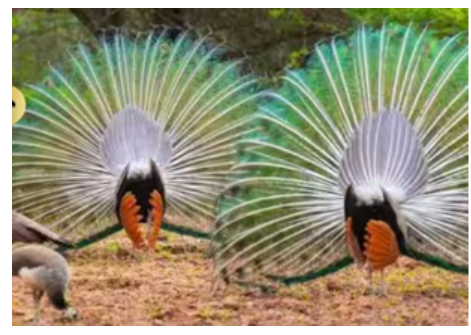
- The "State of India’s Birds (SoIB) 2023" Report is a significant assessment of bird species in India, aimed at understanding their conservation status.
- It is published by the State of India’s Birds Partnership, which is a collaboration of 13 organizations including both governmental (such as SACON, WII, ZSI) and non-governmental organizations.
Key Findings:
- The assessments, based on data from around 30,000 birdwatchers, indicate that 60% of the 338 species with identifiable long-term trends have declined, while 36 species have increased.
- Raptors, migratory shorebirds, and ducks have experienced the most significant declines.
- However, several species like the Indian Peafowl, Rock Pigeon, Asian Koel, and House Crow are thriving and increasing in both abundance and distribution.
- Specialist bird species, which inhabit specific habitats like wetlands and rainforests, are facing rapid declines, while generalist species capable of adapting to various habitats are faring better.
- Long-distance migratory birds, such as those from Eurasia and the Arctic, have suffered significant declines, while resident species remain more stable.
- Birds with diets focused on vertebrates and carrion have seen notable declines, potentially due to harmful pollutants present in these food resources.
- The report emphasizes the decline of species endemic to the Western Ghats and Sri Lanka biodiversity hotspots.
- Main threats to birdlife in India: Climate Change, Urbanization, Monocultures, Energy Infrastructure
Solution to minimize heatwaves in Urban India
In News: Recently, the study conducted by the Centre for Science and Environment (CSE) explores the impact of different urban forms on heat resilience.
Key Findings of the Study:
- Areas with open high-rise, open midrise, and compact midrise urban morphologies show lower land surface temperatures (LST), indicating better heat resilience.
- Low-rise areas with sparse vegetation tend to have higher LST.
- Greenery, like trees, shrubs, and grass, enhances microclimates. Effective vegetation cover (EVC) reduces LST; trees with thick foliage are more effective.
- Higher Floor Surface Index (FSI) correlates with lower LST. Increased FSI results in decreased temperatures.
- North-south-oriented streets have higher LST due to sun exposure, offering guidelines for urban planning.
- Different urban forms can have distinct zoning regulations for heat resilience, such as shaded walkways, cool roofs, and high EVC.
Urban Form of a City:
- The combination of green spaces, water bodies and buildings is called the Urban Form of a city, which plays a crucial role in its heat resilience and liveability.
- Parameters such as Urban Morphology, Aspect Ratio, Sky View Factor (SVF), Blue/Green Infrastructure (B/GI), Floor Area Ratio (FAR)/ Floor Surface Index (FSI), and street orientation collectively define a city's urban form and influence its susceptibility to heat.
How Urban Form of City can be adopted?
- Urban form-based codes can offer context-specific cooling solutions.
- Cities must revise their building by-laws and master plans to incorporate the insights from this study and improve heat resilience.
- Even a modest 1°C temperature decrease could translate into a 2% reduction in a city's power consumption, showcasing the potential impact of effective planning.
Lead Poisoning in India - Edukemy Current Affairs
In News: According to a 2021 study, which was followed up by Niti Aayog and CSIR study in 2022, it was found that more than half of Indian children (~ 20 crore) have high blood lead levels i.e. greater than 5 µg/dL. As per WHO standards any level above 5 µg/dL requires thorough review of the lead exposure mechanism and action to reduce or end such exposure.
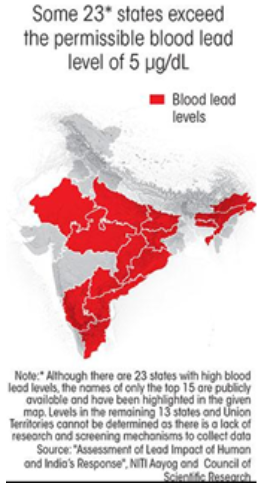
Adverse Impacts of Lead poisoning:
- Vulnerability of Children: High blood lead levels in children severely impacts their developing bodies and brains that can lead to irreversible damage.
- The consequences of lead poisoning range from neurological impairments and learning disabilities to stunted growth and organ damage.
- Social Impact: Lead poisoning results in a learning gap and has a societal toll as affected children may face life-long struggles, reduced educational attainments, and diminished economic productivity.
Sources of Lead Poisoning:
- Initially, major sources of lead exposure were gasoline, water-pipes, and paints.
- House Paints and Varnishes: Houses and public buildings are coated with paints containing dangerous levels of lead, which deteriorate with time and release toxic dust particles into the air
- Exposure through lead solder in food cans, ayurvedic medicines, and toys.
- Occupational Hazards: Workers involved in working with lead, bring contaminated dust home on their clothes and bodies, inadvertently exposing their families.
- Unscientific recycling of used lead-acid batteries: One of the most concerning sources of lead exposure is the unsound recycling of used lead-acid batteries. Despite strict regulations, weak implementation results in used batteries ending up in the informal economy.
- Other occupational sources of lead exposure include lead mining, smelting, welding, soldering, and automobile repairing.
Measures to combat lead poisoning:
- Robust legislative and policy framework defining health and safety standards for manufacturing & recycling of lead-acid batteries, e-wastes, etc. that contain lead is necessary.
- Building a strong monitoring and reporting system for lead poisoning is critical.
- Multi-pronged approach involving regulatory reforms and strict enforcement: The government must prioritise the clean-up of contaminated sites, especially those located near schools and residential areas.
- Well-targeted public awareness programmes: Campaigns should focus on the dangers and sources of lead exposure with direct appeals to parents, schools, youth associations, community leaders and healthcare workers.
Cinnamon - Edukemy Current Affairs
In News: Cinnamon and its active components prevent prostate cancer
About
- The ICMR-National Institute of Nutrition (NIN) conducted research indicate that cinnamon, along with its active compounds cinnamaldehyde and procyanidin B2, displayed inhibitory properties against early-stage prostate cancer when given orally to rats.

- Cinnamon is used mainly as an aromatic condiment and flavoring additive in a wide variety of cuisines, sweet and savory dishes, breakfast cereals, snack foods, tea, and traditional foods.
- Cinnamomum cassia has a high content of coumarin which is not good for health and is known as a kidney destroyer due to which it is banned in the US and other countries.
Other Benefits of Cinnamon
- Anti-inflammatory properties: Cinnamon includes antioxidants and anti-inflammatory chemicals that may help decrease inflammation throughout the body. This may be beneficial as individuals age, since chronic inflammation plays a significant role in the evolution of many age-related illnesses.
- Blood sugar control: Cinnamon may help manage blood sugar levels by enhancing insulin sensitivity and decreasing carbohydrate breakdown in the digestive system.
- Heart health: Cinnamon may help improve heart health by reducing levels of total cholesterol, LDL (“bad”) cholesterol, and triglycerides, while increasing levels of HDL (“good”) cholesterol.
- Brain function: Some studies suggest that cinnamon may improve brain function and protect against age-related cognitive decline. Cinnamon contains two compounds that appear to inhibit the buildup of these proteins.
- Antimicrobial properties: Cinnamon contains antimicrobial compounds that may help fight off bacteria and other pathogens, making it a potential natural remedy for certain infections.
Bees can monitor pollution - Edukemy Current Affairs
In News: Honey Bees bees can monitor pollution for us — everything from toxic metals to antimicrobial resistance
About
- Honeybees have proven to be effective in mapping patterns of pollution, uncovering key indicators of contamination such as toxic metals and genes related to antimicrobial resistance.
- Through their foraging activities, bees collect pollutants, granting valuable insights into pollution distribution. By detecting the presence of harmful metals in proximity to pollution origins, bees contribute to comprehending the underlying factors behind contamination.
- Bees play a role in evaluating the dissemination of antimicrobial resistance genes, which can be assimilated from aquatic environments. This innovative method serves as a valuable resource for monitoring pollution and tackling issues pertaining to environmental well-being.
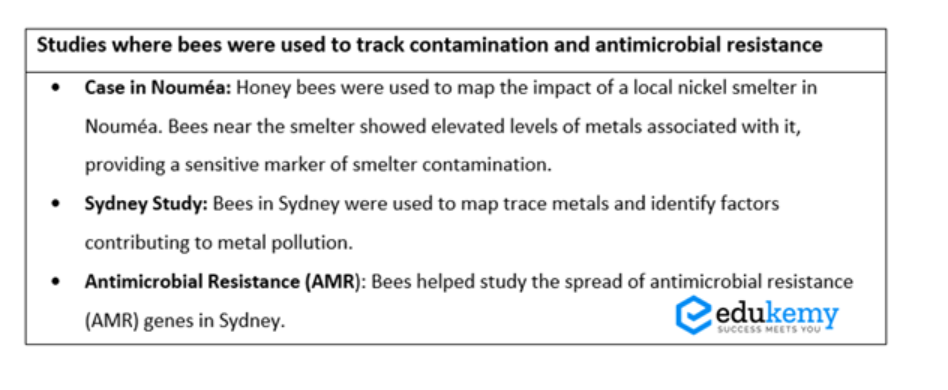
Dibang Multipurpose Project - Edukemy Current Affairs
In News: Recently, NHPC signed an MoU with RITES, Ministry of Railways for construction of railway siding for the Dibang Multipurpose Project, Arunachal Pradesh
About
- Dibang Multipurpose Project is a flood control cum hydroelectric power project planned to be developed on the Dibang River (Tributary of Brahmaputra River) in Arunachal Pradesh.
- It will be the country’s biggest hydropower facility with a capacity of 2880MW
- National Hydroelectric Power Corporation (NHPC) is developing this project.
Dibang hydroelectric plant makeup:
- The project aims to build the tallest dam in the nation, standing at 278 meters in height and stretching 375 meters in length.
- This concrete gravity dam will give rise to a reservoir spanning 43 kilometers and boasting a total storage capacity of 3.85 billion cubic meters.
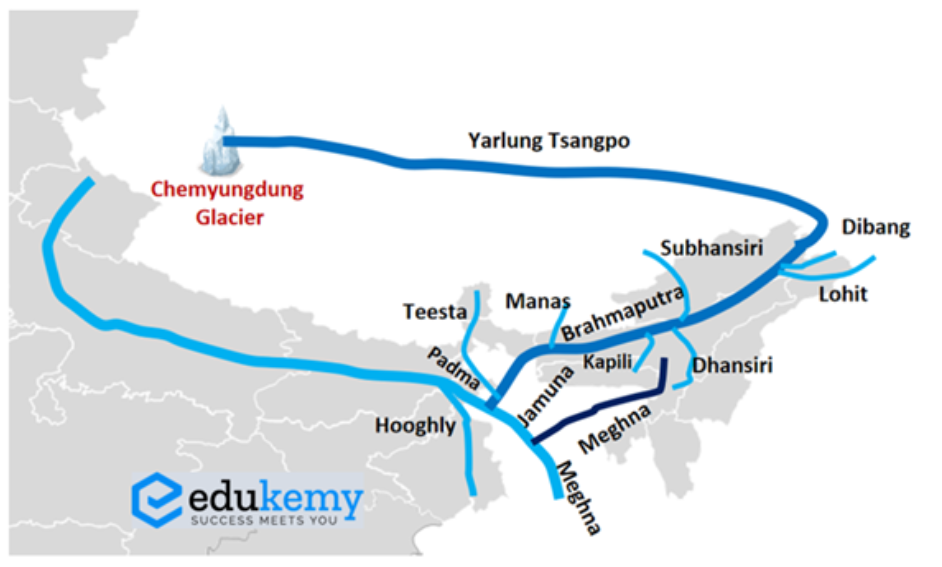
Cleantech Solutions
In News: Cleantech can deliver on development and climate action in the country’s rural areas
About
- Cleantech Solutions focuses on providing access to clean technology solutions to support the livelihoods of the rural populace.
- The clean technology solutions offer the potential to decrease India’s diesel imports and prevent the spoilage of perishable food items.

- It will improve opportunities for rural livelihoods. This presents an investment prospect valued at $50 billion for investors and financiers.
Global Biodiversity Framework Fund
In News: The Global Biodiversity Framework Fund (GBFF) has been finally ratified and launched at the Seventh Assembly of the Global Environment Facility (GEF) in Vancouver, Canada.
About Global Biodiversity Framework Fund (GBFF):
- The GBFF is devised to mobilise and accelerate investments in the conservation and sustainability of wild species and ecosystems.
- The GBFF is exclusively dedicated to supporting the implementation of the goals and targets outlined in the Kunming-Montreal Global Biodiversity Framework.
- It is established as a new trust fund under the umbrella of the Global Environment Facility.
- It will support action towards halting and reversing biodiversity loss by 2030 and putting nature on a recovery path by 2050.
- Around 20% of the funds would support Indigenous-led initiatives to protect and conserve biodiversity.
- It will also prioritise support for Small Island Developing States and Least Developed Countries, which will receive more than a third of the fund’s resources.
- As per the targets of GBF, $200 billion per year will need to be raised by 2030. Canada and the United Kingdom have already donated 200 million Canadian dollars and 10 million pounds respectively to the GBFF.
About the Global Environmental Facility:
- The GEF was established during the 1992 Rio Earth Summit, also known as the United Nations Conference on Environment and Development (UNCED).
- It serves as an international financial institution that funds projects to address global environmental challenges, including biodiversity loss, climate change, land degradation, and pollution.
- The GEF is funded by contributions from its member countries, known as “donors.
- It operates as a financial mechanism for several international environmental conventions, including:
- Convention on Biological Diversity (CBD),
- United Nations Framework Convention on Climate Change (UNFCCC), and
- United Nations Convention to Combat Desertification (UNCCD)
India's Interest Arctic Region and the Northern Sea Route
In News: Murmansk, popularly called the capital of the Arctic region and the beginning point of the Northern Sea Route (NSR), is witnessing rising Indian involvement in cargo traffic. In first seven months of 2023, India got 35% of 8 million tonnes of cargo handled by the Murmansk port.
About the significance of Arctic region for India:
- The vulnerability of the Arctic region to unprecedented changes in the climate may have an impact on India in terms of economic security, water security and sustainability.
- The region also constitutes the largest unexplored prospective area for hydrocarbons with an estimated reserves of 40%of the current global reserves of oil and gas.
- India’s Arctic Policy of 2022 mentions the country's approach to economic development of the region in accordance with UN Sustainable Development Goals.
- India’s engagement with the Arctic can be traced to the signing of the Svalbard Treaty in February 1920. Later, India established a research station, Himadri, at Svalbard, in 2008.
What is the Northern Sea Route?
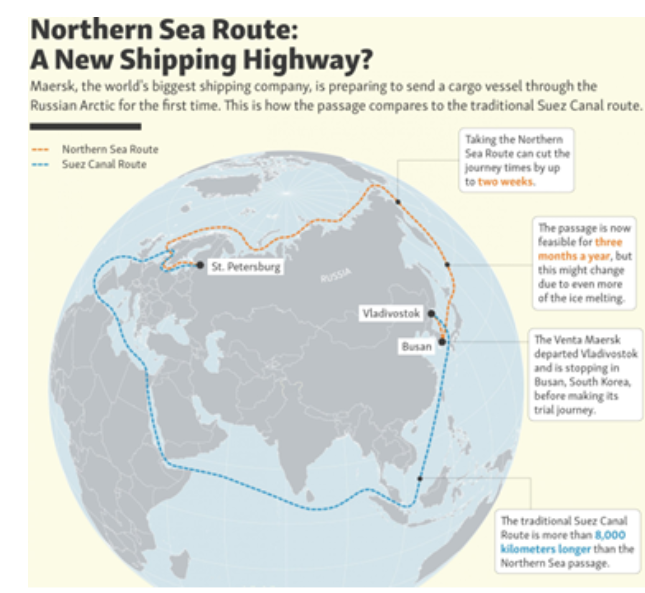
- Northern Sea Route (NSR), the shortest shipping route for freight transportation between Europe and countries of the Asia-Pacific region.
- It spans 5,600 km, and the route begins at the boundary between the Barents and the Kara seas (Kara Strait) and ends in the Bering Strait (Provideniya Bay).
- In theory, NSR can save as much as 50% of the distance as compared to the currently used shipping lanes via Suez or Panama.
- The route got attention after the 2021 blockage of the Suez Canal.
- However the navigability of NSR has been a major concern since Arctic Oceans remain icebound during most of the year.
- Russia is the only country in the world with a nuclear-powered icebreaker fleet. Today the Russian icebreaker fleet comprises of seven nuclear-powered icebreakers, apart from one nuclear container ship.
Factors driving India’s Participation in the NSR development:
- Increasing supply of energy resources: NSR is facilitating reliable and safe supplies of crude oil and coal from Russia, which is critical for the Indian economy.
- Strategic Transit Route: India’s geographical location and reliance on sea transportation make the NSR a crucial transit route
- Reduction of transport time through Chennai-Vladivostok Maritime Corridor (CVMC): The CMVC project passing through the Sea of Japan, the South China Sea and Malacca Strait, will bring down transport time to 12 days, almost a third of existing St. Petersburg-Mumbai route of 16,000 km.
- Geopolitics: India would like to complement China and Russia’s potential collective influence over NSR
Soil Micronutrient Shortage Affects Health of Women & Children
In News: Recently, a new study titled “Soil micronutrients linked to human health in India,” has revealed a significant connection between soil micronutrients and the nutritional well-being of individuals, particularly children and adult women.
Key findings of the Study:
- Impact on Child Stunting and Underweight: In districts where soil zinc samples were found to be more prevalent, there were notably lower rates of child stunting and underweight.
- Height Increase in Women: The study found that the soil zinc availability is also associated with an increase in the height of women.
- Soil Iron Availability and Anaemia: The study suggested a strong relationship between soil iron availability and anaemia among women and haemoglobin levels among children and women.
Significance of the Study for India:
- With over 35 percent of the nation's soil grappling with zinc deficiency and approximately 11 percent facing iron deficiency.
- This study aligns with the Global Nutrition Report's findings, revealing that nearly a third of the world's population faces micronutrient deficiency.
- The study's revelation that around 39 percent of children suffer from stunting underscores the urgency of addressing malnutrition.
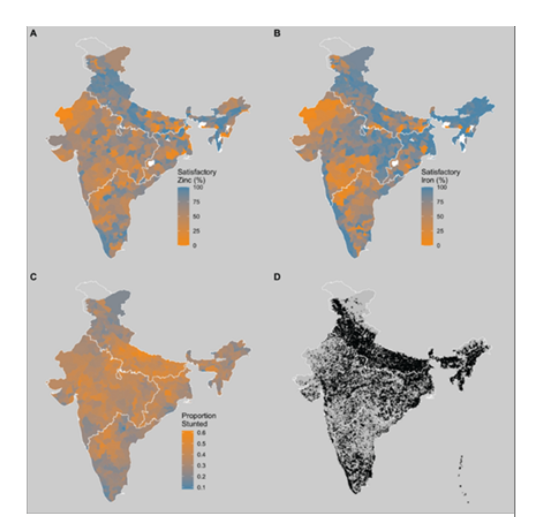
Methane Eating Bacteria - Edukemy Current Affairs
In News: Recently, a study has found that a specific bacteria named Methylotuvimicrobium buryatense 5GB1C could help reduce methane emissions from places like landfills and oil wells.
About:
Methylotuvimicrobium buryatense 5GB1C
- Methylotuvimicrobium buryatense 5GB1C is a bacterial strain that consumes methane.
- The bacteria's ability to consume methane at low concentrations, as low as 200 ppm, makes it a promising candidate for methane removal technology.
- While other Methane-eating bacteria (methanotrophs) grow best when the methane concentration is around 5,000-10,000 parts per million (ppm).
- Significance:
- Methylotuvimicrobium buryatense 5GB1C, if used on a large scale, could prevent 240 million tonnes of methane from entering the atmosphere by 2050.
- It can also help reduce the global temperature rise by about 0.21-0.22 degrees Celsius by 2050 by removing a substantial amount of methane.
- Unlike many other proposed methane reduction strategies, this method doesn’t produce nitrous oxide emissions, which have a significant global warming potential.
Methane:
- Methane is a potent greenhouse gas emitted from various sources including energy production, industry, agriculture, and waste management.
- It is over 85 times more potent than carbon dioxide (CO2) on a 20-year timescale.
- It is responsible for nearly 30 percent of the total global warming.
Indian Ocean Dipole - Edukemy Current Affairs
In News: Recently, a report by the Australian Bureau of Meteorology said that the IOD index has risen beyond the positive threshold.
About:
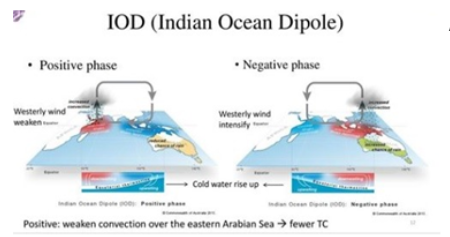
- Indian Ocean Dipole (IOD) is an atmosphere-ocean coupled phenomenon in the Indian Ocean, characterised by a difference in sea-surface temperatures.
- IOD is the difference between the temperature of eastern (Bay of Bengal) and the western Indian Ocean (Arabian Sea).
- A positive IOD event, characterized by warmer temperatures in the western basin, can enhance India’s South-West monsoon.
- For Australia, a positive IOD event often leads to low rainfall between October and December, delayed monsoon onset, and reduced tropical cyclone activity.
- Indian monsoon depends upon not only El Nino, La Nina but also IOD and other such ocean phenomena.
Two phases of IOD:
- Positive IOD:
- During this phase the Westerly winds weaken along the equator, allowing warm water to move to Africa.
- Changes in the winds also allow a rise of cool water from the deep ocean in the east.
- This creates a temperature difference across the tropical Indian Ocean with cooler than normal water in the east and warmer than normal water in the west. This event has been found to be beneficial for the monsoon.
- Negative IOD:
- During this phase westerly winds intensify along the equator, allowing the concentration of warmer waters near Australia.
- This creates a temperature difference across the tropical Indian Ocean, with warmer than normal water in the east and cooler than normal water in the west. This event obstructs the progression of monsoon over India.
Maharashtra’s 1st elephant reserve
In News: In response to the frequent movement of elephants in the Gondia and Gadchiroli districts, the Maharashtra state wildlife department has proposed creating the Navegaon Elephant Reserve in an area (in Gondia and Gadchiroli districts).
About:
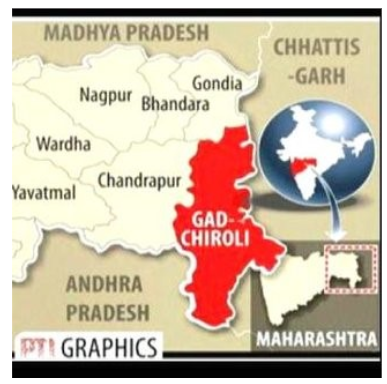
- This move aims to conserve wild elephants in the region, where around 23-25 elephants have been residing.
- This initiative follows the Maharashtra government’s 2020 decision to designate nearly 3,000 hectares of forest land as an elephant reserve in the Sindhudurg district, marking the first instance of such a reserve being established in the state.
significance of this proposal
- At present, there are 33 elephant reserves in the country.
- If approved, Navegaon Elephant Reserve could become the 34th elephant reserve in India and the 5th largest in terms of area.
|
Elephant Conservation in India: |
|
Environmental Challenges in Northeast India
In News: The Meghalaya High Court while hearing a Public Interest Litigation (PIL) on the cleanliness of the Umiam Lake, stated that for the sake of creating employment opportunities and in the name of promoting tourism, the natural beauty of the State should not be destroyed.
About the Umiam Lake:
- Umiam Lake is one of the biggest artificial lakes in Meghalaya that is situated about 15 km from Shillong.
- A PIL was filed to raise the issue of cleanliness of Umian Lake which has been adversely affected by unregulated buildings and construction mushrooming around water bodies.
Challenges to Biodiversity in the North East:
- Northeast India is a green belt region due to its abundant natural resources such as oil, natural gas, minerals and freshwater. However indiscriminate exploitation and unassessed developmental projects harm its biodiversity.
- Despite the northeast being industrially backward, deforestation, floods, and existing industries are causing serious problems to the environment in the region
- As per the environmental assessment of the North East Rural Livelihood Project, Northeast India lies within an ecologically fragile, biologically rich region, highly prone to climatic changes.
- Both flora and fauna of the areas are under threat due to deforestation, mining, quarrying and shifting cultivation.
Environmental laws in the North East:
- Offences related to the environment dealing with pollution of land, air, and water are considered under “public nuisance” under Sections 268 to 290 of the IPC, 1860,.
- The Sixth Schedule of the Constitution which grants autonomy to District Councils, limits the authority of the State over matters pertaining to the jurisdiction of the District Councils, including land use.
- Thus in many instances, like the Umiam Lake, the District Councils do not place any regulations for the preservation and protection of land, especially those around water bodies.
- PILs and judicial activism encouraged under Articles 32 and 226 of the Constitution led to a wave of environmental litigation. For example, NGT’s imposed a fine of Rs100 crore on the Meghalaya government for failing to curb illegal mining in 2019.
Measures taken to promote sustainable growth in the North East:
- Development of infrastructure, revenue generation and employment creation through sustainable policies.
- The ‘Negative List’ in the North East Industrial Development Scheme (NEIDS), 2017 ensures that entities which do not comply with environment standards, not having environmental clearances and not having consent from pollution boards would not be eligible for any incentive under the NEIDS.
- The Act Fast for Northeast policy should not only include “trade and commerce” but also the preservation of “environment and ecology” in the region.
- Central and state governments should consider the case of creating a uniform and comprehensive environmental legislation, which caters to issues related to the environment at all levels of governance.
UK’s North Sea Drilling
In News: Environmentalists deliberate on drilling in the North Sea, environmental concerns, and the U.K.'s climate commitments.
About UK’s North Sea Drilling:
- The United Kingdom has recently proposed a plan for increased drilling in the North Sea for oil and natural gas off Britain's coast.
- The North Sea Transition Authority (NTSA) oversees the 33rd offshore oil and gas licensing round is aiming to award over 100 licenses.
- However, Concerns have been raised about these plans amidst global efforts to combat irreversible climate change.
- Key highlights:
- The North Sea is located between the UK and neighbouring countries and has been a significant source of oil and gas for the UK's energy needs.
- Exploration in the North Sea began after the 1958 Geneva Convention on the Continental Shelf which established country’s rights over adjacent seabeds.
- The UK's Continental Shelf Act in 1964 awarded British Petroleum (BP) the first exploration license in 1964 which discovered natural gas in the North Sea in 1965.
- It initiated more than 15 fields in the UK North Sea during the 1970s and 1980s with other British, European, and American companies joined the exploration efforts.
- The 1980s saw over a hundred installations in the North Sea however, the Piper Alpha disaster in 1988 led to safety culture improvements and a major overhaul in offshore safety measures.
- Peak production occurred in 1999, generating substantial crude oil and natural gas liquids but the production declined over the years, reaching lower levels by 2022.
- In recent years, offshore drilling has been criticized for contributing to climate change by releasing greenhouse gases.
- Warming oceans risks marine biodiversity, coral reefs, and shellfish due to pollution and ocean acidification.
- With the UK aiming to achieve net zero emissions by 2050 drilling plans raise questions about the new drilling proposal which conflicts with the need to limit global temperature rise.
- Overall, there is need for a careful balance between energy needs and sustainable practices to mitigate environmental concerns and adhere to climate commitments.
Debt-Fossil Fuel Trap Report - Edukemy Current Affairs
In News: Recently, a new report ‘The Debt-Fossil Fuel Trap’, was published by the anti-debt campaigners Debt Justice and partners.
Key Highlights of the Report:
- Poor countries burdened with heavy debts are compelled to rely on fossil fuel revenue to repay loans borrowed from wealthier nations, multilateral creditors like the World Bank and IMF, or private lenders. Examples:
- Suriname: Creditors are entitled to 30% of oil revenue until 2050, incentivizing continued oil exploitation.
- Argentina has been supporting fracking projects in the Vaca Muerta oil and gas field in Northern Patagonia to generate revenues to ease the country’s debt crisis. IMF has also backed these projects.
- The external debt payments of Global South countries have surged by 150% between 2011 and 2023, reaching the highest levels in 25 years.
- Around 54 countries are facing a debt crisis, resulting in reduced public spending during the pandemic to meet loan repayment obligations.
- Many of these indebted countries lack adequate resources for climate adaptation, mitigation, and addressing loss and damage, forcing them to borrow more money.
- After events like natural disasters, countries can see their debt as a percentage of GDP rise significantly, such as Dominica’s experience after Hurricane Maria in 2017.
- Resource backed loans (RBLs) are a mechanism through which repayment is tied to natural resources or future income streams derived from those resources.
Recommendations of the Report:
- Implement comprehensive debt cancellation for countries in need, across all creditors, without imposing economic conditions.
- Encourage the adoption of clean and renewable energy sources to reduce dependency on fossil fuels.
- Wealthy governments and institutions should play a role in supporting countries to exit the debt-fossil fuel trap.
- Promote sustainable development strategies that prioritize environmental protection and economic stability.
- Ensure that financing and investments align with environmental and social sustainability, rather than contributing to fossil fuel dependence.
- Offer fair and just financing terms that do not exacerbate debt burdens or perpetuate reliance on fossil fuels.
‘Likaru-Mig La-Fukche’ road (Ladakh)
In News: Border Roads Organisation (BRO) has commenced the construction of a 64-km long Likaru-Mig La-Fukche road in Eastern Ladakh's Demchok sector.
About:
- This road project aims to provide connectivity to the military outposts in the sensitive Fukche sector, lying near the contested Line of Actual Control (LAC).
Likaru-Mig La-Fukche road:
- It is located close to Hanle in Eastern Ladakh.
- The 64-km long road will connect Likaru to Fukche, situated 3 km from the Line of Actual Control (LAC).
- Once completed, it will be the world’s highest motorable road at a height of 19,400 ft in Mig La.
- Currently, Umling La in Ladakh holds the title of the highest motorable road at 19,024 ft.
- It is the first project in India to be carried out entirely by an All-Woman Road Construction Company.
- It is led by a five-member All Woman Border Road Task Force.
- Additionally, the BRO is undertaking other significant projects, including the Shinku La tunnel and the construction of the ‘Nyoma Airfield’.
|
Umling La Pass: |
|
Pacific islands face the risk of drowning
In News: Recently, The World Meteorological Organization (WMO) has released a report titled “State of Climate in the South-West Pacific, 2022”.
About:
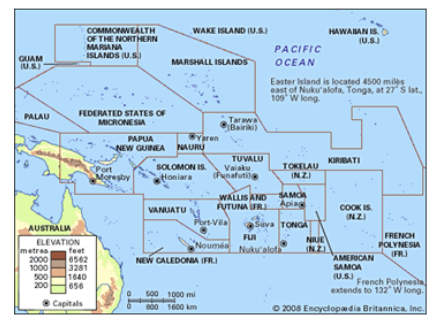
key findings of the report:
- The report has issued a warning about rising sea levels in the Pacific Islands.
- They report that sea levels in this region are increasing at a rate of about 4 mm per year, which is slightly higher than the global average.
- This poses a significant threat to low-lying islands like Tuvalu and the Solomon Islands, as it could lead to destructive floods, damaging agricultural lands and habitable areas.
- The report also highlighted the occurrence of marine heatwaves in a substantial region northeast of Australia and south of Papua New Guinea, spanning more than six months.
- Despite a decrease in the number of reported disaster weather events compared to 2021, the economic losses due to flooding and weather events have increased.
Urgent Need for Climate Action
- The findings of the WMO report highlight the urgent need for comprehensive climate action to mitigate these impacts and safeguard the future of these vulnerable island nations.
|
World Meteorological Organization |
|
Rising Methane Levels and the Threat to Climate Stability
In News: The surge in the amount of methane in Earth’s atmosphere for the past few decades has raised concerns about climate transitions on the earth. Unlike the rise in carbon dioxide (CO₂), methane’s recent increase seems to be driven by biological emissions, not the burning of fossil fuels.
About Methane:

- Methane is a powerful greenhouse gas, with over 80 times the warming impact of carbon dioxide (CO2) within the first two decades of its presence in the atmosphere. However, it has a shorter atmospheric lifespan than CO2.
- Methane was about 0.7 parts per million (ppm) of the air before humans began burning fossil fuels. Currently it is over 1.9 ppm and rising fast.
Reasons for increased Methane emissions:
- Mix of Anthropogenic and natural causes: Roughly three-fifths of emissions come from fossil fuel use, farming, landfills and waste. The remainder is from natural sources, especially vegetation rotting in tropical and northern wetlands.
- Emissions from huge cattle lots in tropical Africa, India and Brazil may also be rising.
- Rotting waste in landfills near megacities like Delhi are important sources too.
- Climate change is increasing rainfall, which has made wetlands wetter and bigger while rising temperatures have boosted plant growth, providing more decomposing matter and so more methane.
Impacts of Climate Change:
- Slowing down of Atlantic Ocean currents and changes in oceanic current patterns.
- Expansion of tropical weather regions across the globe.
- Faster warming of the far north and south poles leading to sea level rise by accelerating the melting of polar ice and glaciers
- Ocean heat is breaking records and extreme weather conditions are becoming routine.
- Sea level rise threatens coastal communities and exacerbates climate change impacts.
Measures to control Methane emissions:
- Plugging the leakage of oil and fossil fuel from the oil and gas industry
- Covering landfills with soil so that methane emission from rotting wastes are prevented.
- Reducing crop-waste burning could control the hasty rise of methane concentration.
Sixth Anniversary of the Minamata Convention
In News: The Minamata Convention on Mercury, which marks its sixth anniversary this year. On this occasion, the United Nations Environment Programme (UNEP) reflects on the ongoing campaign to eradicate the use of mercury in small-scale gold mining.
Minamata Convention:
- The Minamata Convention on Mercury is a global treaty to protect human health and the environment from the adverse effects of mercury and its compounds.
- It was agreed at the fifth session of the Intergovernmental Negotiating Committee in Geneva, Switzerland 2013.
- Controlling the anthropogenic releases of mercury throughout its lifecycle is one of the key obligations under the Convention.
Mercury:
- Mercury is a naturally occurring element that is found in air, water and soil.
- It is considered by the World Health Organization (WHO) as one of the top ten chemicals or groups of chemicals of major public health concern.
- It may have toxic effects on the nervous system, thyroid, kidneys, lungs, immune system, eyes, gums and skin.
- Sources of Mercury:
- Natural Sources: Volcanic eruptions, Erosion of rocks and soils.
- Anthropogenic Sources: Artisanal and Small-Scale Gold Mining (ASGM), where mercury is used to extract gold from ore. Artisanal gold mining operations are responsible for 37% of global mercury pollution.
- Industrial Sources: Various industries, such as chlorine production, cement manufacturing, and waste incineration, emit mercury. The cement industry is responsible for around 11% of global anthropogenic mercury emissions.
- Waste Disposal: Improper disposal of e-waste products containing mercury, such as fluorescent bulbs and batteries, leads to mercury leaching into the environment.
- Major Applications of Mercury:
- Thermometers and Barometers: Due to high coefficient of thermal expansion and easy visibility.
- Chemical and Mining Processes: In the production of chlorine and mining of gold.
- Electronics and Electrical Switches: Mercury-wetted switches are used in various electrical applications because of mercury's conductivity and low resistance.
- Impact of Mercury on human health:
- Methylmercury accumulates in aquatic organisms like fish. People primarily come into contact with methylmercury through the consumption of fish and shellfish.
- This compound carries a higher risk of causing Minamata disease, a condition characterized by sensory impairment, tremors, and both auditory and visual deficits.
Way Forward:
- There is a need for global implementation of the planetGOLD program, led by UNEP, which seeks to eliminate mercury from artisanal gold mining and create safer working conditions. It operates under the Minamata Convention on Mercury.
- Phytoremediation allows plants to absorb and accumulate mercury from soil, water, or sediments. These plants can then be harvested and safely disposed of, effectively removing mercury from the environment.
Environment Ministry Reverses Autonomous Bodies Merger
In News: Ministry of Environment, Forests, and Climate Change (MoEFCC) U-turn to merge autonomous bodies.
About
Ministry of Environment, Forests and Climate Change (MoEFCC) issued a notification to establish integrated regional offices by merging offices of the Forest Survey of India (FSI), the National Tiger Conservation Authority (NTCA), the Wildlife Crime Control Bureau (WCCB), and the Central Zoo Authority (CZA), and thus bring them under the Ministry.
Criticism of the ministry of Environment on Merging of Autonomous bodies
- This action could weaken the autonomy and influence of these organizations, each of which holds distinct responsibilities within environmental management.
- This could result in disarray and a lack of clarity in administration, given the distinct hierarchies and areas of authority that these bodies operate within.
- The integrity and reliability of their work might be put at risk, as external political influences and demands from the MoEFCC could come into play.
- The specialization and proficiency that these bodies bring to their specific fields could be diminished, as their unique mandates and skill sets might become less prominent.
Reversal of Decision
- The recent announcement by the MoEFCC not only canceled the proposed merger, but it also proposed a reorganization of the existing regional offices, which is also being met with opposition.
- The proposed jurisdiction of the Bengaluru regional office would cover a diverse range of geographical and environmental conditions, encompassing Karnataka, Kerala, Goa, and Lakshadweep.
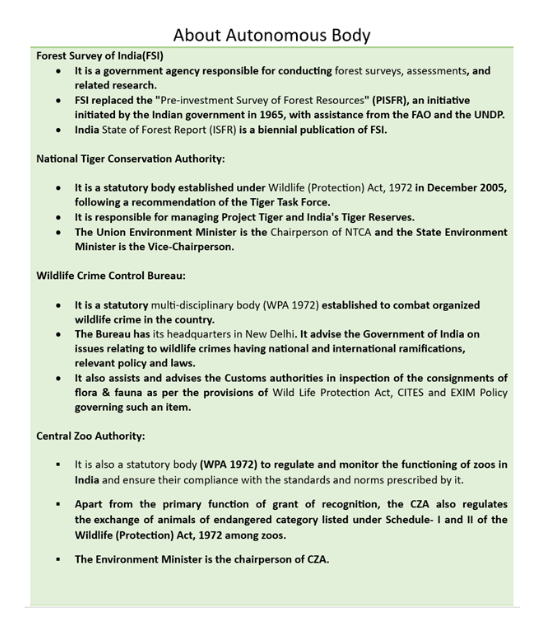
Offshore wind power projects - Edukemy Current Affairs
In News: Recently, the union ministry of new and renewable energy (MNRE) has sought bids for survey of sites identified for offshore wind power projects in Tamil Nadu.
About:
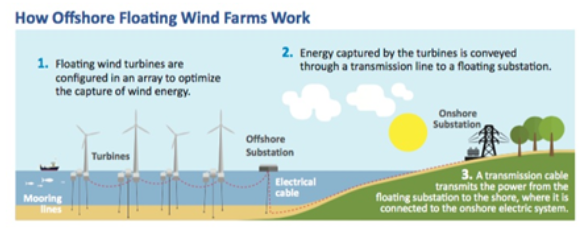
- Wind energy typically comes in two different types:
- Onshore wind farms are large installations of wind turbines located on land.
- Offshore wind farms which are installations located in bodies of water.
Offshore wind energy
- It refers to the deployment of wind farms inside the water bodies.
- Offshore wind power projects involve generating electricity from wind turbines installed in bodies of water, typically oceans or seas.
- These wind farms either use fixed-foundation turbines or floating wind turbines.
- Offshore wind power offers the advantage of stronger and more consistent wind speeds compared to onshore locations, potentially leading to higher energy generation.
- Offshore wind farms must be at least 200 nautical miles from the shore and 50 feet deep in the ocean.
- Offshore wind turbines produce electricity which is returned to shore through cables buried in the ocean floor.
Government Plan:
- The government’s plan involves auctioning projects with a capacity of 4 GW (this year) and an additional 3 GW capacity in the subsequent financial year.
- The projects will be executed using two different models:
- one with government-backed viability gap funding
- other involving competitive bidding for site leasing and subsequent development without financial support
More Information:
- India ranks 4th globally in Installed wind energy capacity with 42.8 GW (onshore wind) as of April 2023. (After China, US, and Germany).
- The largest Wind Farm in India is the Muppandal Wind Farm in Tamil Nadu.
- Top States in India – Installed Wind Power Capacity
- Tamil Nadu > Gujarat > Maharashtra > Karnataka > Rajasthan > Andhra Pradesh
Wild Fires - Edukemy Current Affairs
In News: Wildfires wreak havoc in Canada’s Northwest territories and Spain’s Tenerife
About wildfires:
- Canada has recently witness active wildfires in Yellowknife and other areas in the Northwest territories.
- Wildfires or "forest fires," are uncontrolled fires that spread rapidly across vegetation, forests, grasslands, and other natural landscapes.
- Incidences of fire have increased in recent years due to several factors including:
- Natural causes: lightning strikes, volcanic activity, and spontaneous combustion.
- Human Activities: Campfires, discarded cigarettes, equipment sparks, arson, and power lines.
- Release of carbon dioxide into the atmosphere contributes to global warming and degrades air quality due to smoke and particulate matter.
- Wildfires has led to environmental impacts such as destruction of habitats, loss of biodiversity, soil erosion, and air pollution.
- Their exposure leads to health concerns such as respiratory issues due to smoke inhalation, and evacuation-related stress.
- It also has economic consequences such as property damage, loss of crops, forestry industry setbacks, and firefighting costs.
- In this regard, there is a need for wildfire management with steps such as:
- Prevention Measures: Public awareness campaigns, fire bans, and controlled burns to reduce fuel load.
- Early Detection: Surveillance systems, lookout towers, and satellite technology.
- Firefighting Efforts: Fire crews, aircraft, helicopters, and equipment for containment and extinguishing.
- Community Preparedness: Evacuation plans, emergency shelters, and community drills.
- Ecosystem Restoration: Reforestation, habitat rehabilitation, and soil erosion control.
- Wildfire Management faces several challenges such as climate change leading to more frequent and severe wildfires.
- Communities living in Urban-Wildland Interface are at risk due to proximity to fire-prone areas which often lacks required firefighting resources with multiple concurrent fires.
- Overall, Wildfires are a natural part of many ecosystems and thus there is need for effective wildfire management and international collaboration to mitigate their impact on the environment, economy, and human health.
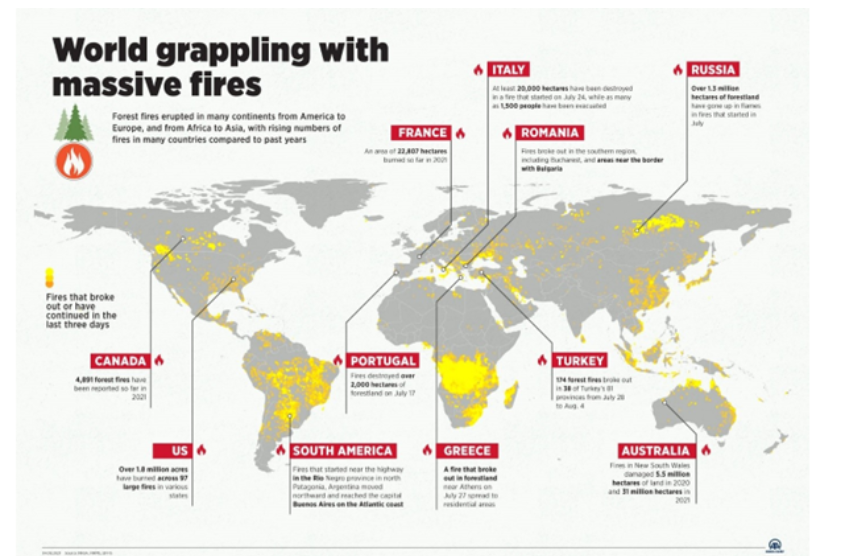
Kalka-Shimla Railway (KSR) - Edukemy Current Affairs
In News: The over 120-year-old Kalka-Shimla Railway (KSR), a UNESCO World Heritage Site, has been severely damaged by heavy rainfall and landslides in Himachal Pradesh.
About:

- The Kalka–Shimla railway is a 2 ft 6 in (762 mm) narrow-gauge railway in North India which traverses a mostly-mountainous route from Kalka to Shimla.
- It is located in Haryana.
- The railway was built under the direction of Herbert Septimus Harington between 1898 and 1903 to connect Shimla, the summer capital of India during the British Raj, with the rest of the Indian rail system.
- On 8 July 2008, UNESCO added the Kalka–Shimla railway to the mountain railways of India World Heritage Site.
More Information:
- The Indian Railways introduced a luxurious seven-coach Vistadome train named Him Darshan Express in 2019 on the historic Kalka-Shimla route.
Kanniyakumari’s Matti Banana
In News: Recently, The Matti banana variety, native to the Kanniyakumari district was granted the Geographical Indication (GI) tag.
About:
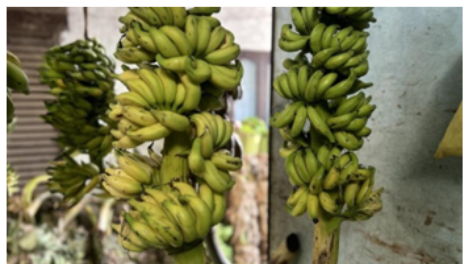
- It is known for its unique characteristics that thrive only in the specific climate and soil conditions of its native region.
- The Matti banana flourishes due to the area’s special conditions, producing a slightly larger-than-human finger-sized fruit with a sweet fragrance and honey-like taste that can’t be replicated elsewhere.
- There are six known types of Matti bananas, each with unique attributes like colour, aroma, and taste.
- They are indigenous to Kanniyakumari, where it thrives in the unique climate and soil.
- They are known as ‘Baby Banana’ which flourishes mainly in Kalkulam and Vilavancode taluks.
- Its low total soluble solids content (TSSC) recommends it as a baby food.
- The uniqueness of the Matti banana is attributed to a combination of factors including humidity, water, temperature, soil composition, and nutrient balance.
- Types of Matti Banana:
- Nal Matti boasts a yellowish-orange colour and fine aroma, while Theyn [honey] Matti’s pulp tastes like honey.
- Kal Matti gets its name from the calcium oxalate crystals forming in its pulp and black dots on the skin.
- Nei Matti exudes the aroma of ghee, and Sundari Matti, a Matti clone, with its elongated fingers, thick peel, and creamy white rind, is facing extinction.
Third-longest monsoonal break in this century has ended
In News: According to the regional centre of India Meteorological Department, the current monsoon break that started on August 7, 2023, has finally ended.
About:
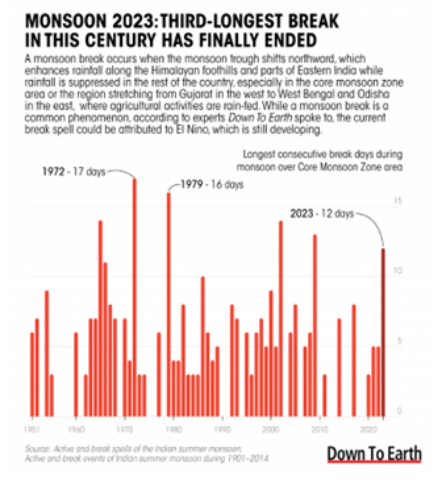
- A monsoonal break occurs when the monsoon trough shifts northward, leading to increased rainfall along the Himalayan foothills and parts of eastern India while suppressing rainfall in other regions.
- This happens especially in the core monsoon zone area or the region stretching from Gujarat in the west-to-West Bengal and Odisha in the east, where agricultural activities are rain-fed.
- While meteorologically defined, climatologically, a monsoonal break is declared when the normalized rainfall anomaly index drops below -1 and persists for at least three consecutive days.
- The current monsoon break was influenced by the developing El Niño and the absence of sub-seasonal weather patterns that support rainfall.
- This prolonged monsoon break is concerning, especially as it coincides with a ban on rice exports, a crucial Kharif crop.
More about the news:
- This current monsoonal break makes it the third-longest for this century after 2002 and 2009.
- According to the data, in the last 73 years, there have been a total of 10 instances when the break spell has stretched over 10 days.
- The recent break had a significant impact, causing the all-India cumulative monsoon rainfall anomaly to drop from seven per cent above normal to six per cent below normal within a short period.
Impact of Geopolitics on Clean Energy Targets
In News: The geopolitical interests and equations of the world have detrimental effects on meeting clean energy targets, as witnessed in the case of Indonesia. Indonesia has the world's largest reserves of nickel, however processing on nickel using Chinese investment and technology has limited its access to the United States.

About Nickel Reserves:
- Nickel is a corrosion resistant metal, hard, silvery-white metal, and is used in batteries. It is a central component of the transition away from fossil fuels.
- Nickel is mostly found in Indonesia, Phillipines, Ausralia, Canada etc. In Indonesia, most of the nickel is found on Sulawesi, a K-shaped, jungle-draped island.
- Nickel is used to make batteries for electric cars and motorcycles, a central component of the mission to limit the ravages of climate change.
The Geopolitics involved in Nickel Trade:
- Geopolitics is the interplay between geography, political power, and international relations, deciding the nature of interaction, cooperation and competition among the nations on the global stage.
- The employment of Chinese technology and investments along with concerns over working conditions and environmental standards in Nickel processing and extraction by Indonesia, has made the USA reluctant from trading with Indonesia.
- Indonesia is attempting to get a trade deal with the USA, covering minerals in an effort to secure Indonesia as a friendly country. That would generate greater demand for its nickel by making it eligible for the American tax credits under the Inflation Reduction Act.
- Countering China’s technological ascension is unilaterally supported in the USA, beyond the political factions.
- On the other hand, the European Union has criticized and dragged Indonesia to the WTO for imposing a ban on the export of nickel ore. However this step led to the drawing of more than $14 billion investments by Chinese companies.
- By 2035, more than 90% of all nickel products will be processed in countries that lack free-trade agreements with the USA. This will create a major supply constraint for the American battery factories to satisfy their demand for nickel without looking to countries beyond core U.S. trading partners.
Termination-level Transition - Edukemy Current Affairs
In News: The amount of methane in Earth’s atmosphere has been rising for past few decades and, unlike the rise in carbon dioxide (CO₂), methane’s recent increase seems to be driven by biological emissions, not the burning of fossil fuels.
About Methane Emissions:

- Methane is a potent greenhouse gas, with over 80 times the warming impact of carbon dioxide (CO2) within the first two decades of its presence in the atmosphere. However, it has a shorter atmospheric lifespan than CO2.
- Methane was about 0.7 parts per million (ppm) of the air before humans began burning fossil fuels. Currently it is over 1.9 ppm and rising fast.
- Causes of Methane emissions:
- Roughly three-fifths of emissions come from fossil fuel use, farming, landfills and waste. The remainder is from natural sources, especially vegetation rotting in tropical and northern wetlands.
- Emissions from huge cattle lots in tropical Africa, India and Brazil may also be rising.
- Rotting waste in landfills near megacities like Delhi are important sources too.
- Climate change is increasing rainfall, which has made wetlands wetter and bigger while rising temperatures have boosted plant growth, providing more decomposing matter and so more methane.
Climate Termination:
- Climate termination refers to periods of significant and often rapid climate change that mark the transition between glacial (cold) and interglacial (warmer) periods in Earth’s history.
- In the past few million years, Earth’s climate has flipped repeatedly between long, cold glacial periods, and shorter warm interglacial period.
- With the end of each ice age, Earth’s surface warmed by as much as several degrees centigrade over a few millennia and also characterised by sharply rising methane concentrations. Thus methane is both a driver and a messenger of climate change.
- Termination level transitions refers to rapid changes in Earth’s climate which marks the end of a glacial period and the onset of a warmer interglacial period. Full terminations take several thousands of years to complete
Evidences of Climate Shift:
- Slowing down of Atlantic ocean currents
- Expansion of tropical weather regions
- Faster warming of the far north and south poles.
- Ocean heat is breaking records and extreme weather is becoming routine.
Plugging leaks in the oil and gas industry, covering landfills with soil, reducing crop-waste burning, etc. could control the hasty rise of methane concentration.
Tourism’s Ecological Toll
In News: Heavy rains washes away a portion of the Shimla-Kalka heritage railway track on the outskirts of Shimla, Himachal Pradesh
About Tourism's Ecological Toll
- Himachal Pradesh's resilience to recent rains and floods highlights its limited focus on ecological consequences of highways and infrastructure.
- Violent engineering for wider roads in recent years has led to constant landslides in mountain highways like the Kalka-Shimla route which are tourist spots.
- Heavy rains exacerbate landslides, causing distress and closure of major tourist destinations which are already facing continuous infrastructure challenges.
- Post-Covid travel surge amid climate challenges has led to increased instances of forest fires, high temperatures, floods, landslides affecting tourist experiences.
- Discourse between development centered around tourism and nature conservation puts uncertainty about climate change's impact on businesses and industries.
- For example, Hospitality industry's disregard for disappearing forests and waste disposal has put negative impact on rivers due to waste disposal practices.
- Rivers as natural drainage systems are impacted by landslides and debris from building highways and bridges which often overlooks ecological concerns.
- Tourists are perceived as seeking fun and luxury for which access provided even in traditionally challenging sites
- Underestimation of the ecological cost of unchecked tourism in fragile Himalayan ecosystem has led to several instances of tourists misunderstanding local events leading to Forest fires and disasters.
- There is need for developing liaison between tourism's economic benefits and environmental impact assessment.
- Overall, balancing economic gains from tourism with ecological preservation crucial and for this there is need for reevaluating policy priorities and promoting responsible tourism practices.
Drought Declaration Norms - Edukemy Current Affairs
In News: Recently, the Chief Minister of Karnataka Siddaramaiah urges Centre to amend the Manual for Drought Management 2016 (updated in 2020) for drought declaration by States.
Drought:
- Drought is defined as a deficiency in rainfall/precipitation over an extended period, causing adverse impacts on vegetation, animals, and people.
- There is no single, legally accepted definition of drought in India, with states having their own criteria.
- 74% of India’s districts are vulnerable to extreme drought situations.
Process of Drought Declaration in India:
- The State Governments have the authority to declare drought-affected regions.
- Step 1: It involves examining two mandatory indicators – Rainfall Deviation and Dry spell.
- Step 2: It involves evaluating four impact indicators: agriculture, vegetation indices (remote sensing), soil moisture, and hydrology. States may choose any three of the four impact indicators (one from each) to assess drought intensity and categorize it as severe or moderate.
- If all three chosen impact indicators are in the ‘severe’ category, it indicates severe drought. If two of the three chosen impact indicators are in the ‘moderate’ or ‘severe’ category, it indicates moderate drought.
- After the previous triggers are set off, States conduct a sample survey on the ground to determine the final intensity of drought. Field verification findings determine if the drought is ‘severe’ or ‘moderate’.
- Once the intensity of the drought is determined, the state government issues a notification specifying the geographical extent of the drought-affected area. The notification is valid for six months unless de-notified earlier.
Shortcomings in the Drought Declaration process in India:
- The existing norms for drought declaration follow a uniform approach without considering the diverse challenges faced in different agro-climatic regions of the state.
- The current criteria do not account for local ecological factors, water availability, and agricultural practices, which vary across regions and impact drought severity.
- The manual’s focus on rainfall deficit recovery overlooks the impact of scanty rainfall during the initial sowing season, causing agricultural damage and triggering drought.
- The rigid definition of dry spells does not consider variations in soil type, crop variety, temperatures, and vegetative state that influence crop damage.
Way Forward:
- Karnataka has proposed region-specific criteria that take into account local ecological factors, water availability, and agricultural practices for declaring drought.
- Redefining dry spells from the current three to four weeks to less than two weeks of consecutive dry spells.
- Factors such as soil type, crop variety, temperatures, and vegetative state must be considered, as even a two-week dry spell can lead to irreversible crop damage.
Increased rain and reduced snowfall in the Himalayan region
In News: Recently a new study found that Increased rain and melting of snow and ice have made the mountain regions more dangerous.
About
- IPCC Special Report on the Ocean and Cryosphere in a Changing Climate (2019) reported that snowfall had decreased in mountain regions, including the Himalayas, due to higher temperatures, particularly at lower elevations.
- Scientific studies have indicated shifts in precipitation patterns in the Himalayan region, with more instances of extreme precipitation occurring as rainfall rather than snowfall, even at higher altitudes.
Reason for Increased Rainfall and reduced snowfall in the Himalayan Region
- Changing Weather Patterns: Changes in the circulation of the atmosphere, including shifts in jet streams and other weather systems, can lead to modifications in the distribution of rainfall.
- Global Warming and Temperature Increase: As the planet experiences a rise in temperatures, the atmosphere's capacity to hold moisture expands, resulting in increased evaporation and subsequent changes in precipitation patterns.
- Elevated Freezing Altitudes: The altitude at which falling precipitation transitions from snow to rain, known as the freezing level or zero-degree isotherm, is influenced by rising temperatures linked to global warming. This has led to a shift towards more rain and less snowfall at higher elevations.
- Diminished Snowfall: The warming climate causes a larger portion of precipitation to fall as rain instead of snow, further altering traditional snowfall amounts.
- Reinforcing Cycles: With reduced snow cover, the Earth's surface becomes less reflective (albedo effect), which in turn amplifies warming by absorbing more sunlight. This contributes to the trend of changing precipitation from snow to rain.
- Atmospheric Changes Driven by Warming: These modifications in the atmosphere's behavior can intensify storm activity, resulting in more intense rainfall events in regions where snowfall used to be predominant.
Impact of increased rain and reduced snowfall in the Himalayan region:
- Increasing disasters: Shifts from snowfall to rainfall at higher elevations, affect water availability and hazards. Example: More instances of heavy rainfall cause flash floods.
- Water Resource Changes: Altered snowmelt and rain patterns affect river flow, water availability, and ecosystem dynamics. Example: Changes in river flow and hydrological patterns.
- Increased Flood and Landslide Risk: Rainwater saturates the soil, leading to landslides, debris flows, and flash floods. Example: Uttarakhand’s 2013 flash floods due to excessive rainfall.
- Impact on Ecosystems and Biodiversity: Altered precipitation affects vegetation, wildlife, and fragile mountain ecosystems. Example: Changes in alpine flora and fauna due to shifting climate.
- Socioeconomic Consequences: Reduced snowfall impacts winter tourism, agriculture, and water-dependent livelihoods. Example: Ski resorts face challenges due to shorter snow seasons.
- Glacial Lake Outburst Floods (GLOFs): Faster glacial melt leads to unstable glacial lakes and potential GLOFs, posing flood risks downstream. Example: Imja Lake in Nepal is at risk of GLOF due to glacial melt.
Red Rice - Edukemy Current Affairs
In News: Recently, a farmer from Himachal Pradesh, India, has faced challenges due to erratic rainfall and water diversion for industries, impacting her rice farming.
About:
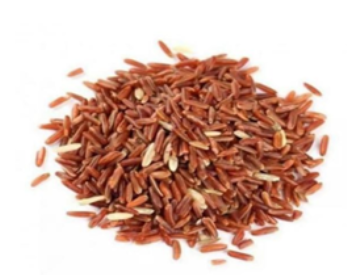
- Red rice is a traditional variety that thrives without chemicals and fertilizers (completely Organic), offering better nutrition and organic qualities.
- It is red in color due to the presence of a component called anthocyanin.
- It is rich in micronutrients like iron and zinc, Vitamin A and antioxidants.
- It has much more nutrient value as compared to other varieties of rice.
More Information
- Himachal Pradesh’s government aims to expand red rice cultivation to 4,000 hectares.
- The resurgence of traditional rice varieties like red rice is transforming farming practices in India, with indigenous seeds proving resilient and sustainable.
Asian Elephant - Edukemy Current Affairs
In News: Recently, the environment minister has emphasized mainstreaming biodiversity conservation in India’s economic development to ensure ecological well-being and sustainability.
About
- Asian elephants are listed as “Endangered" on the IUCN Red List of threatened species.
- Elephants are important ecosystem engineers.
- They make pathways in dense forested habitat that allow passage for other animals.
- An elephant footprint can also enable a micro-ecosystem that, when filled with water, can provide a home for tadpoles and other organisms.
- As keystone species, they help maintain biodiversity of the ecosystems they inhabit.
- During the dry season, elephants use their tusks to dig for water, which provides water for other animals that share harsh habitats.
- They are also one of the major ways in which trees disperse their seeds; some species rely entirely upon elephants for seed dispersal.
Aromatic rice ‘Mushkbudji’
In News: Cultivation of aromatic rice 'Mushkbudji' gives Kashmir farmers high returns.
About
- Mushkbudji is a short, bold aromatic rice cultivated in the elevated regions of the Kashmir valley.
- It showcases a distinct combination of flavors, fragrances, and appealing sensory qualities.
- Its predominant cultivation areas include Sagam, Panzgam, and Soaf Shali in the Anantnag district, as well as the Beerwah region in the Budgam district.
- The utilization of this aromatic rice in Kashmir is primarily reserved for significant events such as special gatherings, weddings, and festive celebrations.

Inclusive Conservation Initiative (ICI)
In News: Less than 1% of mitigation & adaptation funding went to the world’s indigenous groups despite more commitment.
About
- Inclusive Conservation Initiative endorsed by Global Environment Facility (GEF) in 2022.
- ICI supports Indigenous Peoples and local communities- ILPC to secure and enhance their stewardship over landscapes, seascapes, and territories with high biodiversity and irreplaceable ecosystems.

China’s ‘Sponge Cities’ and Their Flood Challenges
In News: China's "sponge city" initiative aimed at reducing urban flood risks has faced challenges in effectively preventing recent floods
About China’s Sponge Cities
- The initiative was launched in 2015 to enhance flood resilience in major cities and optimize rainwater usage through architectural, engineering, and infrastructural modifications.
- Heavy rainfall in recent weeks has led to devastating floods, highlighting the inadequacy of the sponge city approach.
- Important features:
- The sponge city scheme was initiated to address issues related to urbanization, flooding, and drought in densely populated areas.
- It incorporated Nature-based solutions involving permeable asphalt, construction of canals and ponds, and wetland restoration to improve water distribution, drainage, and storage.
- Traditional flood plains along major rivers were covered with impermeable concrete due to rapid urbanization, leading to waterlogging and floods.
- Local pilot initiatives demonstrated positive results, with green roofs and rain gardens effectively reducing run-offs.
- Challenges:
- Sponge city approach has been inconsistent as out of 30 pilot sponge cities chosen in 2015 and 2016, only 64 out of 654 cities had established legislation to follow guidelines as per mandates.
- There has been lack of significant government attention to sponge city construction and called for urgent national legislation.
- Despite sponge city efforts, the initiative couldn't prevent recent floods, exemplified by Zhengzhou, which allocated a substantial budget but couldn't cope with record-breaking rainfall in 2021.
- These cities infrastructure can handle a maximum of around 200 millimetres (7.9 inches) of rain per day, while some areas experienced much higher rainfall in short periods.
- Besides, Climate change has also added to the challenge with heavy rain affecting regions that are less advanced in sponge city development, particularly in the arid north.
- Overall, despite it challenges balancing infrastructure development, environmental restoration, and effective policies is crucial for future flood resilience.
Vaquita Porpoise - Edukemy Current Affairs
In News: Recently, the International Whaling Commission (IWC) issued its first ‘extinction alert’ on the vaquita porpoise.
About:

- The vaquita (Phocoena sinus) is the world’s smallest cetacean.
- Porpoises are only distant relatives of dolphins.
- Its name means "little cow" in Spanish.
- It is unique among the porpoises as it is the only species of that family found in warm waters.
- The vaquita is only found in the northern-most part of the Gulf of California, Mexico.
- It has a large dark ring around its eyes and dark patches on its lips that form a thin line from the mouth to the pectoral fins. It only measures up to five feet in size.
- Threat
- The vaquita population has been declining precipitously for decades due to bycatch in gillnet set to catch shrimp and fish, including totoaba.
- Conservation status
- IUCN: Critically Endangered
- CITES: Appendix I
Project Devika - Edukemy Current Affairs
In News: North India's first River Rejuvenation Project Devika is nearing completion. The Indian Government is reviewing Liquid Waste Management to protect the sanctity of the holy Devika River.
About the Project Devika:
- It has been built at a cost of over Rs 190 crore on the lines of ‘Namami Ganga’ on the holy Devika River in Udhampur, J&K.
- Out of the 190 crore funds allocated for the project, the sharing of allocation is in the ratio of 90:10 by the Centre and UT respectively.
- The work was started in 2019 under the National River Conservation Plan (NRCP).
- The role of PRIs, being the representatives of the grassroots level of the society, is vital for the success of major developmental projects.
What is the significance of the Devika river?
- Devika is considered as the sister of the sacred river Ganga, and has a great religious significance.
- This is why the Liquid Waste Management Project with the network of pipes and manholes connecting all the households under Devika Rejuvenation Project is being constructed by UEED to protect the sanctity of it.
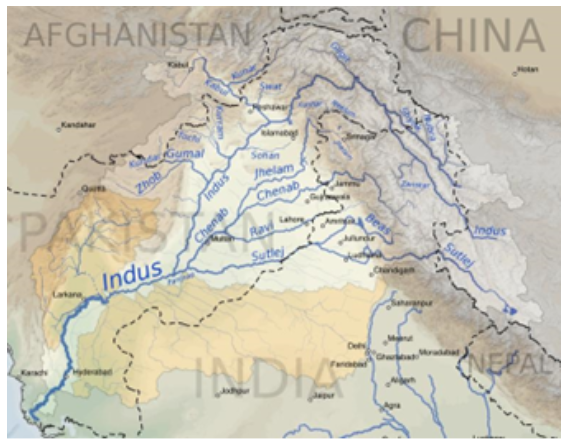
- Devika river originates from the hilly Suddha Mahadev temple in Udhampur district of Jammu and Kashmir and flows down towards western Punjab (now in Pakistan) where it merges with the Ravi river.
What is the National River Conservation Plan (NRCP)?
- Formation: The Central Government started the river pollution abatement programme with the launching of the Ganga Action Plan (GAP-I) in the year 1985.
- The river pollution abatement programme was further expanded to include other major rivers of the country in 1995 under the aegis of National River Conservation Plan (NRCP).
- Finally in December 1996, all projects for river cleaning in the country were brought under one umbrella scheme of NRCP.
- Objective: To reduce the pollution load in rivers through implementation of various pollution abatement works, thereby improving their water quality.
Deepor Beel - Edukemy Current Affairs
In News: Deepor Beel, a vital wetland in Guwahati, Assam, faces anthropogenic threats despite its protected status.
About:

- Word ‘deepor’ comes from the Sanskrit word dipa, which means elephants and ‘beel’ means lake in Assamese.
- It is one of the largest freshwater lakes in Assam and an Important Bird Area by Birdlife International.
- Deepor Beel has been designated as a Ramsar Site in November 2002 and it is the only Ramsar site in Assam.
- It is located towards the southwest of Guwahati city, Assam and is the erstwhile water channel of River Brahmaputra.
- It constitutes a unique habitat for aquatic flora and avian fauna.
- Deepor Beel adjoins the Rani Reserve Forest from where herds of elephants come periodically to forage in the wetland.
- Some globally threatened birds are supported, including Spot-billed Pelican, Lesser Greater Adjutant Stork and Baer's Pochard.
Carbon Capture and Storage - Edukemy Current Affairs
In News: Recently, the UK government reaffirmed its support for projects to capture and store carbon dioxide emissions as part of its efforts to reach net zero goals.
About CCS
- Carbon Capture and Storage (CCS), also known as Carbon Capture and Sequestration, is a technology and process designed to mitigate the release of carbon dioxide (CO2) emissions into the atmosphere, thereby helping to combat climate change.
- It involves capturing carbon dioxide emissions from industrial processes or power plants, transporting the captured CO2 to a suitable storage location, and securely storing it underground in geological formations.
- The primary goal of CCS is to reduce the concentration of CO2 in the atmosphere and limit its contribution to global warming.
The CCS process consists of three main steps:
Capture: Carbon dioxide is captured from industrial sources such as power plants, cement factories, and other high-emission industries.
- Methods for capturing CO2,
- Post-combustion capture (removing CO2 from flue gases after combustion),
- Pre-combustion capture (removing CO2 before combustion occurs),
- Oxy-fuel combustion (burning fuels in an oxygen-rich environment to produce a concentrated stream of CO2).
Transport: Captured CO2 is transported via pipelines, ships, or other means to a suitable storage site. Transport infrastructure must be established to ensure the safe and efficient movement of the captured CO2.
Storage: The captured CO2 is then injected deep underground into geological formations, such as depleted oil and gas reservoirs, saline aquifers (porous rock formations that contain salty water), or other suitable geological structures.
Primary approaches of Carbon Capture and Storage:
- Point-source CCS: It involves capturing CO2 directly at the site of its production, such as industrial smokestacks.
- Direct air capture (DAC): It focuses on removing CO2 that has already been emitted into the atmosphere. The recent UK initiatives specifically target point-source CCS.
Applications of Carbon Capture and Storage:
- Power Generation: CCS can be applied to fossil fuel power plants, such as coal-fired and natural gas power plants. These plants are major sources of CO2 emissions. By capturing the CO2 emitted during combustion, CCS can help reduce the carbon footprint of electricity generation.
- Hydrogen Production: Hydrogen is considered a clean energy carrier, but its production often generates CO2 emissions. By capturing the CO2 during hydrogen production, CCS can enable "blue hydrogen," which is hydrogen produced with CCS, to reduce the carbon impact.
- Industrial Processes: Industries like cement, steel, and chemicals produce substantial CO2 emissions. CCS can be integrated into these processes to capture and store CO2 emissions, helping to decarbonize these sectors.
- Mineralization: Captured carbon can be reacted with certain minerals to form stable carbonates, which can be stored safely underground or used in construction materials. This process, known as mineral carbonation, offers a long-term and secure method of carbon storage.
- Greenhouses and Indoor Agriculture: Captured carbon dioxide can be supplied to greenhouses and indoor farming facilities to enhance plant growth.
- Other applications of CCS: Enhanced Oil Recovery (EOR), Bioenergy, Direct Air Capture (DAC), Natural Gas Processing, Waste-to-Energy Facilities and Dry Ice Production

Challenges of CCS:
- Economic Cost: Building infrastructure for capture, transportation, and storage requires significant upfront capital expenditures for CCS. The overall viability of CCS projects can be impacted by the cost of CO2 capture from flue gases or industrial processes.
- Geological Storage Suitability: Finding and securing geological formations that are appropriate for long-term CO2 storage is difficult. Some geological formations are not suitable for storing CO2 because of the possibility of leaks or seismic activity.
- Fossil fuel companies' operational viability may be unintentionally prolonged by CSS implementation, according to some environmental organisations that have expressed concerns about CSS's effectiveness.
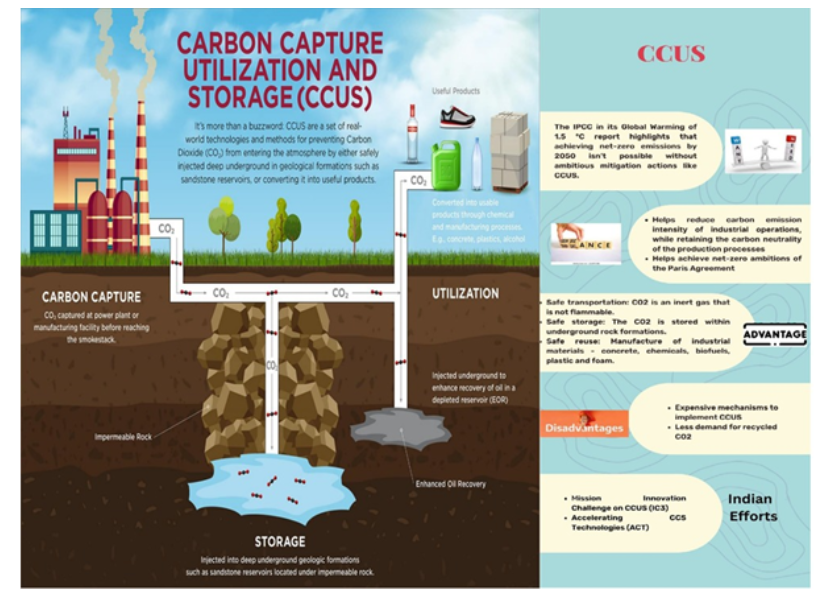
Assam’s Manas Tiger Reserve
In News: Recently, Assam’s Manas Tiger Reserve is facing significant staffing challenges, with nearly 63% of required positions vacant.
About:

- The All-India Tiger Estimation 2022 has indicated that Assam’s Manas National Park and Tiger Reserve is moving from a low to a high-tiger-density area.
Manas Tiger Reserve
- Manas Tiger Reserve spans across the districts of Kokrajhar, Chirang, Buxa, and Udalguri in
- north-west Assam.
- Manas is located at the foothills of the Eastern Himalayas.
- To the north, it is separated from the Royal Manas National Park of Bhutan by the River Manas and its tributaries- Beki and Hakua; while to the west, it is separated from the Buxa Tiger Reserve of West Bengal by the River Sankosh.
- The Manas River is a major tributary of the Brahmaputra River, which passes through the heart of the national park.
- Vegetation:
- The primary forest types include semi-evergreen forests, mixed moist and dry deciduous forests, alluvial grasslands, creeper swamp forests, Eastern seasonal Swamp forests, and Cane and bamboo breaks.
- Flora:
- Endemic plant species like the Catechu tree, Sissoo, and White siris thrive here.
- Fauna:
- Endemic fauna includes the Pygmy hog, Golden langur, and Assam roofed turtle.
- The area has a unique distinction of being a Natural World Heritage Site, a Tiger Reserve, an Elephant Reserve, a Biosphere Reserve and an Important Bird Area.
- It forms part of a large tiger conservation landscape which includes Buxa-Nameri-Pakke-Namdapha tiger reserves and protected areas of Bhutan and Myanmar.
5% of birds in India are endemic
In News: The publication, titled “75 Endemic Birds of India”, was recently released on the 108th foundation day of the Zoological Survey of India (ZSI), which points out that about 5% of birds found in the country are endemic and are not reported in other parts of the world.
About the Report:
- The report is aimed at making information about endemic birds of the country available to everyone, and highlighting the efforts to conserve species that are found only in restricted areas
- The details of endemic bird species contained in the publication include etymology (meanings of scientific names) and their historical relevance along with vital facts such as subspecies’ differences, distinguishing traits, preferred habitats, breeding habits, and food preferences,
Key Highlights of the Report:
- India is home to 1,353 bird species, which represents approximately 12.40% of global bird diversity. Of these 1,353 bird species, 78 (5%) are endemic to the country.
- Among the 78 species, three species have not been recorded in the last few decades.
- The Report highlights the importance of endemic bird species, as endemic species are restrictive in nature and it is important that their habitats are conserved.
- The 75 bird species belong to 11 different orders, 31 families, and 55 genera, and exhibit remarkable distribution patterns across various regions in India.
- The highest number of endemic species have been recorded in the
- Western Ghats: 28 bird species.
- Andaman and Nicobar Islands: 25 bird species. Endemism in Andaman must have developed because of the geographical isolation of the region. Example must have developed because of the geographical isolation of the region
- Regarding the conservation status, the report points out that among 78 species (as per IUCN):
- Threatened species: 25
- Critically Endangered: 3
- Endangered: 5
- Vulnerable: 17
- Near Threatened: 11
Monsoon, El Nino, And Their Impact on Agriculture
In News: The increase in rainfall during July has led to a positive upturn in kharif crop sowings, including rice but concern regarding the intensifying El Nino phenomenon, which might have consequences for the rabi crop.
About
Impact of Monsoon on Indian Agriculture
Positive Impacts:
- Enhanced Crop Production: Sufficient monsoon rainfall fosters optimal soil moisture levels, fostering robust crop growth and leading to amplified agricultural yields. This water availability supports the cultivation of diverse crops such as rice, wheat, millet, and pulses.
- Economic Upliftment: Successful monsoons contribute to rural prosperity by generating income for farmers and laborers. This infusion of income stimulates heightened demand for goods and services in rural economies, subsequently fostering a positive impact on the overall national economic growth.
- Groundwater Replenishment: The monsoon plays a pivotal role in recharging groundwater reserves, particularly in areas grappling with water scarcity. This recharge is vital for the sustainability of agricultural practices in regions where water resources are limited.
Negative Impacts
- Unpredictable Monsoon Behavior: The timing, intensity, and distribution of monsoons exhibit an erratic nature, creating uncertainties in the planning and management of agriculture and crops. Whether monsoons arrive late or early, they can disrupt planting schedules and influence crop yields.
- Droughts and Flooding: Monsoon failures or excessive rainfall can trigger droughts or floods, respectively. Both situations pose significant threats to agriculture. Droughts lead to water scarcity, crop losses, and diminished yields, while floods have the potential to harm crops, erode fertile topsoil, and result in losses of livestock.
- Crop Damage: Prolonged and excessive monsoon rains can bring about crop diseases, reducing both crop quality and yield. These conditions also impede farmers' ability to effectively carry out agricultural activities.
- Soil Erosion: Intense rainfall can contribute to soil erosion, depleting soil fertility and impacting long-term agricultural productivity. Additionally, soil erosion affects water bodies and may lead to the accumulation of sediment in reservoirs, thereby reducing their capacity to store water.
- Rising Food Prices: Inconsistent monsoon patterns can influence crop production, leading to potential shortages and subsequent inflation of food prices. This can have negative repercussions on the economy, particularly for low-income households that allocate a significant portion of their income toward purchasing food.
El-nino Impacts

- Droughts and Water Scarcity: El Niño tends to bring drier conditions to some regions, leading to reduced rainfall and water scarcity. This can result in droughts that negatively impact crop growth and yield. Insufficient water availability can also lead to reduced irrigation capacity, affecting both rain-fed and irrigated agriculture.
- Crop Failures: The combination of higher temperatures and decreased rainfall during El Niño events can stress crops, leading to heat stress and water stress. This can result in lower crop yields, stunted growth, and even complete crop failures in some cases.
- Pest and Disease Outbreaks: El Niño's altered climate conditions can create favorable environments for the proliferation of pests and diseases that can damage crops. Increased humidity and warmth can contribute to the rapid spread of certain pathogens and pests, leading to reduced crop quality and quantity.
- Shift in Growing Seasons: El Niño can disrupt the typical timing of growing seasons due to changes in rainfall patterns. Farmers may need to adjust their planting schedules to adapt to delayed or erratic rains, which can lead to mismatches between crop development stages and optimal conditions.
- Reduced Agricultural Productivity: The combined effects of drought, heat stress, and increased pest pressure can result in reduced agricultural productivity. This can impact food production, availability, and overall food security.
- Livestock and Pasture Concerns: El Niño's impact isn't limited to crops; it can also affect livestock and pastures. Reduced forage availability due to dry conditions can lead to inadequate nutrition for livestock, affecting their health and productivity.
- Economic Consequences: Agricultural losses during El Niño events can have economic repercussions for both farmers and the broader economy. Lower crop yields and livestock productivity can lead to decreased income for farmers and increased food prices for consumers.
- Global Trade Disruptions: Regions that are major producers of certain crops can experience reduced output due to El Niño, leading to disruptions in global trade and food supply chains.
Red Sanders - Edukemy Current Affairs
In News: Recently, Gang inspired by ‘Pushpa’ smuggle red sanders.
About:
- Pterocarpus santalinus, a tree species native to India, is characterized by its exclusivity to the Eastern Ghats region within the country.
- This particular species thrives solely within a delimited expanse of forests located in Andhra Pradesh.
- The International Union for Conservation of Nature (IUCN) categorized the Red Sanders (or Red Sandalwood) into the ‘endangered’ category in its Red List.
Threat
- Illicit practice of tree felling to facilitate smuggling, forest fires, the impact of cattle grazing, and other human-induced threats.
- Red Sanders trees are renowned for their vibrant coloration and valued medicinal properties. Their allure extends beyond India, as there is substantial demand for them throughout Asia, particularly in countries like China and Japan.
- This demand stems from their application in cosmetics and medicinal formulations. Moreover, the timber derived from Red Sanders is sought-after for the creation of furniture, intricate woodwork, and musical instruments.
Towards Decarbonising Transport 2023
In News: Recently, NITI Aayog released the “Towards Decarbonising Transport 2023″ report to support global discussions on sustainable transport during India’s G20 presidency.
About Decarbonizing Transport
- Decarbonizing transport refers to the process of reducing or eliminating the carbon emissions associated with various modes of transportation, such as cars, trucks, buses, trains, ships, and airplanes.
- The transportation sector is a significant contributor to global greenhouse gas emissions, primarily through the combustion of fossil fuels like petrol and diesel. These emissions contribute to climate change and its associated environmental impacts.
- Decarbonizing transport involves transitioning from fossil fuel-based propulsion systems to cleaner and more sustainable alternatives.
- According to the report of NITI Aayog India still has no overall emissions or energy targets for the transport sector. India’s transport-sector emissions could increase by 65% by 2030 and 197% by 2050 (from 2020 levels).

Key strategies and technologies involved in decarbonization include:
- Electric Vehicles (EVs): EVs use electricity stored in batteries to power an electric motor, producing zero tailpipe emissions. As the electricity grid becomes cleaner (with more renewable energy sources), EVs can significantly reduce carbon emissions from transportation.
- Hybrid Vehicles: Hybrid vehicles combine internal combustion engines (typically gasoline) with electric propulsion systems. They use regenerative braking to charge the batteries and improve fuel efficiency, reducing emissions compared to traditional vehicles.
- Hydrogen Fuel Cell Vehicles: These vehicles use hydrogen gas to produce electricity through a chemical reaction with oxygen, emitting only water vapor as a byproduct. Hydrogen can be produced from renewable sources, making fuel cell vehicles a potentially low-emission option.
- Biofuels: Biofuels are derived from renewable sources like crops, algae, or waste materials. They can replace or blend with traditional fossil fuels, reducing overall carbon emissions.
- Public Transportation and Active Modes: Expanding public transportation networks and encouraging walking and cycling can help reduce the reliance on private vehicles, which emit more carbon per passenger mile than mass transit options.
- Efficiency Improvements: Enhancing the efficiency of vehicles through lightweight materials, aerodynamic designs, and improved engine technologies can reduce fuel consumption and emissions.
- Policy Measures: Governments can implement policies such as emissions regulations, fuel efficiency standards, incentives for clean vehicle adoption, and carbon pricing to encourage the transition to low-carbon transportation.
- Infrastructure Development: Building charging stations for EVs, hydrogen refueling stations, and improving public transportation infrastructure supports the adoption of low-carbon transportation options.
- Autonomous and Shared Mobility: Self-driving and shared mobility services have the potential to optimize transportation systems, reducing the overall number of vehicles on the road and improving efficiency.
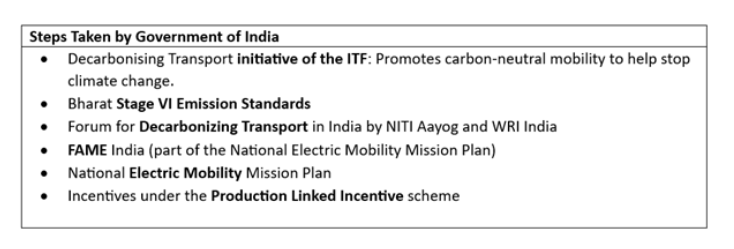
Recommendation of the NITI Aaayog Report
- Increase Reliance on Zero-Carbon Electricity: The transition towards using renewable energy sources for powering transport. For example: Installing more charging stations for electric vehicles and promoting the use of renewable energy in public transportation systems.
- Market Ramp-Up of Power-to-X Fuels: Develop and invest in the production of carbon-neutral alternatives for energy-dense fuels used in long-haul aviation and maritime shipping. For example: G20 countries collaborating to fund research and development of power-to-X fuel production techniques and facilities.
- Eliminate Fossil-Fuel Subsidies: Phase out subsidies that favour carbon-intensive transport modes, redirecting resources towards sustainable alternatives. For example: Ending subsidies on gasoline prices and reallocating the saved funds to improve public transportation infrastructure and support EV adoption.
- “Avoid, Shift, Improve” strategy: It focuses on three main actions: avoiding unnecessary trips, shifting to more sustainable modes of transport, and improving the energy efficiency of vehicles and transportation systems. For example: Many companies are adopting remote work options for their employee
Cryptobiosis - Edukemy Current Affairs
In News: Recently, Scientists found and revived two frozen microscopic nematodes in Siberia five years ago.
About:
- A recent study published in the journal PLOS Genetics reveals that these worms are 46,000 years old, frozen since the late Pleistocene era. Furthermore, one of them belongs to an entirely new species called Panagrolaimus kolymaensis.
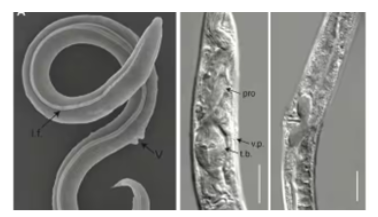
- Cryptobiosis is a state in which an organism exhibits no visible signs of life, and its metabolic activity becomes nearly undetectable or temporarily stops.
- During this state, organisms can survive without water, oxygen, or under extreme conditions.
- Cryptobiosis is a state of extreme inactivity in response to adverse environmental conditions.
- In the cryptobiotic state:
- All metabolic procedures stop, preventing reproduction, development, and repair.
- Organisms can survive extreme conditions by entering a dormant state where they halt their life processes surviving between life and death.
- Cryptobiotic desiccation is the most common. For eg; nematodes, brine shrimp, yeast, tardigrades, etc.
Significance:
- This discovery increases the longest documented cryptobiosis period in nematodes by tens of thousands of years.
- Understanding how these worms adapted to extreme conditions can provide insights into habitat change caused by climate change and how species can survive despite changing weather patterns.
Dongria Kondh Tribe - Edukemy Current Affairs
In News: The Niyamgiri Hills in Odisha, home to the Dongria Kondh tribe, face potential threats due to proposed amendments to the Forest (Conservation) Act, 1980, raising concerns about the protection of their ancestral land and cultural identity.
About:
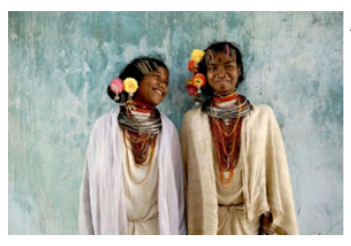
- The Dongria Kondh tribe is one of the 13 PVTGs in Odisha, India.
- Dongria Kondh people are members of the Kondhs, of the Munda ethnic group.
- They are located in the Niyamgiri hills.
- Niyamgiri is a hill range spread over 250 sq.km which falls under the Rayagada and Kalahandi District in Odisha.
- They worship Niyam Raja (Niyamraja), the supreme god of the Niyamgiri jungle.
- The Dongria Kondh community numbers approximately 8,000 people, inhabiting about 100 villages.
- The people of Niyamgiri use Kui language.
- Kui language is not written, but it is spoken among the people of Kondh community.
- They sustain themselves from the resources of the Niyamgiri forests, practising horticulture and shifting cultivation.
More Information:
- The proposed Forest Conservation (Amendment) Bill, 2023, seeks to alter the definition of 'forest' set by the Supreme Court of India in 1996.
- According to the amendment, the Forest Conservation Act, of 2023, will apply only to notified 'forest' areas as per the Indian Forest Act, 1927, and government records from October 25, 1980, onwards.
- About 95% of Niyamgiri land is not classified as 'forest' in government records.
- The amendment may potentially open a window for diverting land not classified as 'forest' in government records to other purposes, which could impact the Niyamgiri hill range and other forest areas in Odisha.
Land-use changes in Maharashtra’s Sahyadri
In News: In the first experiment of its kind, scientists upturned some 7,000 loose rocks in Maharashtra’s Sahyadri to find how creatures from ants to snakes respond to land-use changes in rocky habitats.
About the experiment:
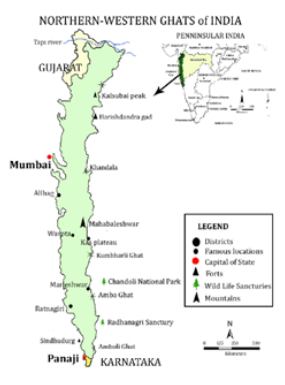
- The study was supported by the United Kingdom-based On the Edge Conservation, the Habitat Trust (India) and the Maharashtra Forest Department apart from BEAG and NCF.
- The animals the scientists focussed on included:
- the white-striped viper gecko (Hemidactylus albofasciatus),
- the Seshachari’s caecilian (Gegeneophis seshachari),
- the saw-scaled viper (Echis carinatus),
- ants, spiders, and scorpions.
- The loose rocks shelter these animals.
- They have evolved to survive on the rocky plateaus, but their adaptability to changing conditions may not be enough for the pace of shift in the land-use pattern.
- By comparing the lesser-known rock-dwelling animal communities in plateaus, abandoned paddy fields and orchards, the team established the baseline for their conservation.
What are the changes in the land use pattern in the region?
- Abandonment of traditional local grain cultivation; and
- Establishment of monoculture plantations of mango and cashew by destroying the natural plateaus.
- The rapid expansion of mango orchards has resulted in the conversion of more than 25,000 hectares of lateritic plateaus.
- Less than 30 animals were found under more than 7,000 rocks on multiple plateaus surveyed, indicating their rarity.
- Given their rarity and vulnerability to change due to ever-increasing orchards, representative plateau habitats need to be preserved in partnership with local communities who are the owners of the land.
Seagrass Fal Estuary - Edukemy Current Affairs
In News: A project attempting to restore climate change fighting marine plants in Cornwall has proved a success in its first year.

About the project:
- The project, 'Seeding Change Together' has been funded by Seasalt Cornwall, which has donated £150,000 as part of a three-year partnership.
- About 4,000 seeds were collected from healthy seagrass meadows in the Fal Estuary in summer 2022 and planted in mudflats.
- The seeds were planted in the mudflats to test a variety of methods aimed at identifying the most effective ways of restoring and growing seagrass.
- Cornwall Wildlife Trust has stated that the project has produced incredible results and exceeded expectations.
- It said in the future it could lead to the restoration of other estuaries.
- The trust added the project was using technology never previously trialled in Cornwall.
What is seagrass?
- Seagrass is a flowering marine plant that has the potential to capture carbon from the environment up to 35 times faster than tropical rainforests.
- It also provides a habitat for marine life such as juvenile fish and seahorses, cleans surrounding seawater and helps to stabilise the seabed to protect the coast from erosion.
- In the UK, approximately 92% of seagrass was lost in the last century, due to pollution, disease, and coastal development.
- Additionally, damage from anchoring, moorings and dredging has impacted the country's seagrass beds.
Sulfur Dioxide Emission Norms - Edukemy Current Affairs
In News: Ministry of Power announces compliance requirements for all Thermal Power Plants with emission norms notified by MOEFCC
About Sulphur dioxide emission norms:
- Emission norms are specific rules set by regulatory bodies for compliance to SO2 emission and check its adverse effects on the environment and human health.
- It is based on the location and area categorization of thermal power plants decided by Ministry of Environment, Forest and Climate Change (MoEF&CC) and Central Pollution Control Board (CPCB).
- They aim to limit the release of SO2 into the atmosphere and reduce air pollution caused by various industrial processes, including thermal power plants.
- Thermal power plants are major contributors to SO2 emissions due to the combustion of fossil fuels containing sulphur.
- These are located near sensitive areas, cities with high population, or critically polluted regions and have stricter specific deadlines for compliance.
- To comply with SO2 emission norms, plants use Flue Gas Desulphurization (FGD) technology which remove sulphur dioxide from flue gas before it is released into the atmosphere.
- The installation of FGD equipment incurs additional costs for thermal power plants, which may be considered for pass-through in tariff by regulatory commissions.
- Overall, By adhering to SO2 emission norms thermal power plants will help contribute to cleaner air, reduced environmental impact, and improved public health.
All India Tiger Estimation 2022
In News: Recently, the Government of India released the “Status of Tigers Report 2022” on the occasion of the Global Tiger Day celebrated at the Corbett Tiger Reserve.
Key Highlights of the Report:
- The number of tigers in India has increased from 2,967 in 2018 to 3,682 in 2022, an annual rise of 6%. The upper limit of the tiger population is estimated to be 3925 and the average number is 3682 tigers.
- India currently harbours almost 75% of the world’s wild tiger population.
- India has 53 Tiger Reserves spread across 75,796 km2, effectively covering 2.3% of India’s total land area.
- Central India and the Shivalik Hills and Gangetic Plains witnessed a notable increase in tiger population.
- Western Ghats experienced localized declines, necessitating targeted monitoring and conservation efforts.
- The largest tiger population of 785 is in Madhya Pradesh, followed by Karnataka (563) & Uttarakhand (560), and Maharashtra (444).
- The tiger abundance within the Tiger Reserve is highest in Corbett (260), followed by Bandipur (150), Nagarhole (141) and Bandhavgarh (135).
Conservation Efforts:
- The Global Tiger Day (July 29) was instituted in 2010 at the Tiger Summit in St Petersburg, Russia. In this Summit 13 tiger range countries came together to create Tx2 – the global goal to double the number of wild tigers by the year 2022.
- The Project Tiger was launched by the Government of India on April 1, 1973, at the Jim Corbett National Park of Uttarakhand to promote the conservation of the tiger.
- National Tiger Conservation Authority (NTCA) was established in 2005 to reorganise the management of Project Tiger and India’s many Tiger Reserves in India.
- In 2006, Management Effectiveness Evaluation (MEE) was adopted from the framework of the IUCN World Commission on Protected Areas.
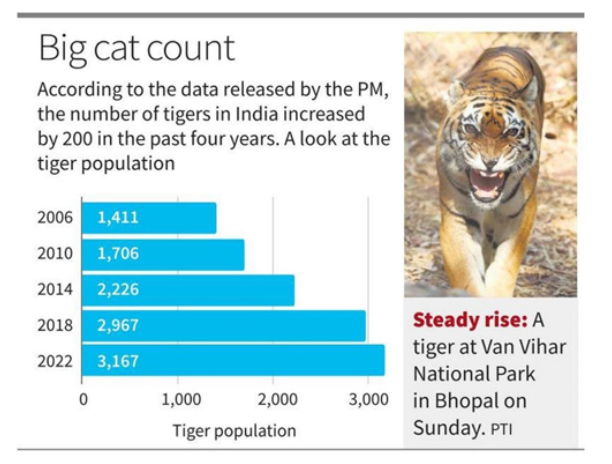
Parkachik Glacier in Ladakh - Edukemy Current Affairs
In News: A new study by scientists of Wadia Institute of Himalayan Geology has found that three glacial lakes are likely to form around Parkachik Glacier in Ladakh due to rapid ice melt.
About:

- Parachik Glacier is a mountain glacier in Kargil, Ladakh.
- It is a mass of ice moving slowly down the Nun-Kun slopes.
- This ice mass falls finally into the Suru River.
- It is one of the largest glaciers in the Suru River valley, covering an area of 53 square km and is 14 km long.
- The Suru River valley is a part of the southern Zanskar Ranges in the western Himalayas.
- There are two main reasons for the rapid melting of the glacier.
- The first is global warming and increasing temperatures in the region.
- The second is that it is at a lower altitude than other glaciers in the Zanskar region.
- The research also estimated the surface ice velocity of the glacier, showing a reduction of about 28% in the lower ablation zone between 1999-2000 and 2020-2021.
Zanskar Ranges
- Zanskar is a high-altitude semi-desert lying on the Northern flank of the Great Himalayan Range.
- This mountain range acts as a climatic barrier protecting Ladakh and Zanskar from most of the monsoon, resulting in a pleasantly warm and dry climate in the summer.
https://dst.gov.in/3-new-lakes-may-form-parkachik-glacier-ladakh-due-glacial-retreat
Ancient pathogens - Edukemy Current Affairs
In News: In a new study published in the journal PLOS Computational Biology, the ecological risks, posed by the release of unpredictable ancient viruses, have been calculated.
About the study:
- The simulations show that 1 percent of simulated releases of just one dormant pathogen could cause major environmental damage and the widespread loss of host organisms around the world.
- A software called Avida was used to run experiments.
- In the worst case scenario, the invasion reduced the size of its host community by 30 percent when compared to controls.

- The risk from this small fraction of pathogens might seem small, but these are the results of releasing just one particular pathogen in simulated environments.
What are some different instances of revival of ancient pathogens?
- In 2003, bacteria were revived from samples taken from drilling into an ice cap on the Qinghai-Tibetan plateau. The ice at that depth was more than 750,000 years old.
- In 2014, a giant “zombie” Pithovirus sibericum virus was revived from 30,000-year-old Siberian permafrost.
- In 2016, an outbreak of anthrax in western Siberia was attributed to the rapid thawing of B. anthracis spores in permafrost. It killed thousands of reindeer and affected dozens of people.
Why is this a matter of grave concern?
- Earth’s climate is warming at a spectacular rate and up to four times faster in colder regions such as the Arctic.
- Estimates suggest that around four sextillion (4,000,000,000,000,000,000,000) microorganisms could be released from ice melt each year.
- Extinction and disease
- “Time-travelling” pathogens could become established and severely degrade a host community.
- Notable viruses such as SARS-CoV-2, Ebola and HIV were likely transmitted to humans via contact with other animal hosts.
- So it is plausible that a once ice-bound virus could enter the human population via a zoonotic pathway.
Gulf Stream and AMOC - Edukemy Current Affairs
In News: Recently, a research found that the Gulf Stream System, known as the Atlantic Meridional Overturning Circulation (AMOC), faces a critical threat of collapse due to unabated global carbon emissions.
Atlantic Meridional Overturning Circulation (AMOC):
- It is the Atlantic branch of the ocean conveyor belt or Thermo-Haline Circulation (THC) and distributes heat and nutrients throughout the world’s ocean basins.
- It drives the Atlantic’s currents and plays a crucial role in determining Europe’s weather.
- It carries warm surface waters from the tropics towards the Northern Hemisphere, where it cools and sinks. It then returns to the tropics and then to the South Atlantic as a bottom current.
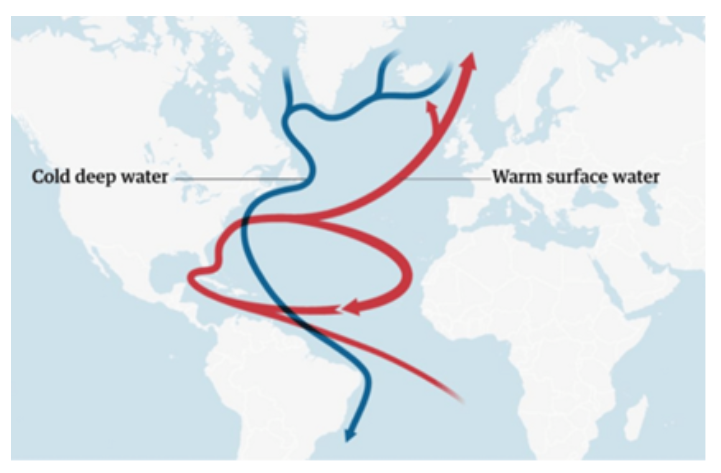
The Gulf Stream:
- The Gulf Stream is a powerful ocean current in the North Atlantic Ocean.
- It originates in the Gulf of Mexico and flows north-eastward along the eastern coast of the United States, then across the Atlantic towards Europe.
- It plays a significant role in regulating the climate by transporting warm water and heat from the tropics to higher latitudes, influencing weather patterns and temperatures in coastal regions.
Possible impacts of collapse:
- Climate Regulation: It moderates the temperatures along the eastern coast of North America, keeping the coastal areas warmer in winter and cooler in summer compared to inland regions at the same latitudes.
- Weather Patterns: The warm and moist air above the Gulf Stream can lead to the formation of low-pressure systems, which may develop into storms or hurricanes. It can also contribute to the formation of fog in certain areas.
- Maritime Navigation: It provides a fast and efficient route for ships travelling between North America and Europe, as it aids in faster travel times due to its speed.
- Ocean Circulation: The Gulf Stream is an essential part of AMOC and AMOC plays a vital role in redistributing heat around the Earth and regulating global climate patterns.
The State of Climate in Asia 2022
In News: Recently, the World Meteorological Organization (WMO) released the State of Climate in Asia 2022 Report. As per this report Asia is the world’s most disaster-prone region.
Key Highlights of the Report:
- It was released during a meeting of the UN Economic and Social Commission for Asia and the Pacific’s (ESCAP) Committee on Disaster Risk Reduction.
- UN ESCAP (HQ: Bangkok; founded in 1947) is one of the five regional commissions under the jurisdiction of the United Nations Economic and Social Council.
- In Asia, the number of disaster events have decreased in comparison to 2021 (100 disasters in 2021).
- Over 50 million people were directly affected due to 81 weather, climate and water-related disasters in Asia during 2022.
- But the effects of such events in 2022 were much more pronounced, with an increase in the number of fatalities, people affected and economic damage.
- 5,879 Asians died due to natural disasters in 2022. This is almost 55 per cent more than the human deaths recorded in 2021 across the region.
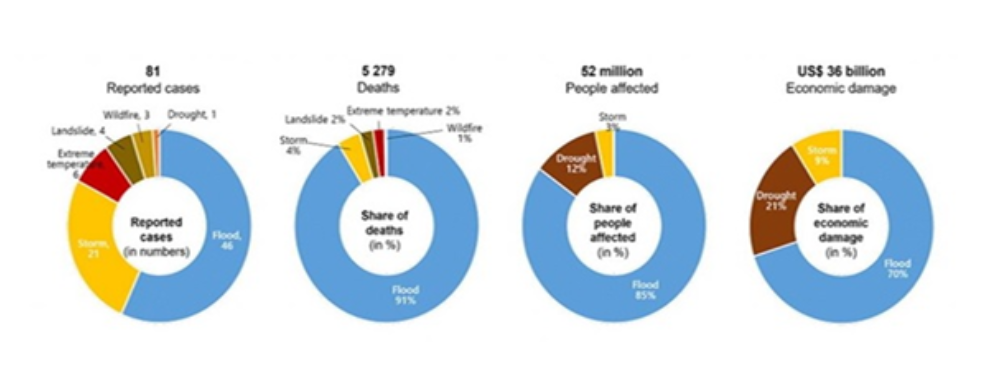
Floods and droughts in 2022:
- The economic losses associated with floods in 2022 exceeded the average over the past 20 years (2002-2021).
- This was primarily due to the significant economic losses from floods in Pakistan (over $15 billion), China (over $5 billion) and India (over $4.2 billion).
- The economic losses associated with drought in 2022 ($7.6 billion), which mainly occurred in China, exceeded by nearly 200 per cent, the 20-year average from 2002 to 2021 ($ 2.6 billion).
- More than 25 per cent of all loss and damage from climate-related disasters such as floods, droughts and tropical storms is associated with the agriculture sector.
Continent of extremes- Asia:
- Asia, the continent with the largest land mass extending to the Arctic, is warming faster than the global average.
- In 2022, the estimated mean temperature over Asia was 0.73°C [0.63-0.78] above the 1991-2020 average, making it either the second- or third-warmest year on record, the report said.
- The ocean surface in the region has been warming since 1982. In the north-western Arabian Sea, the Philippine Sea and the seas east of Japan, the warming rates exceed 0.5°C per decade, roughly three times faster than the global average.
- Over the past 40 years, four glaciers with long-term observations in the High Mountain Asia region experienced mass loss, with an accelerating trend in the 21st century.
- From 2021-2022, Urumqi Glacier No. 1 in the eastern Tien Shan mountain range recorded its second-most negative mass balance (‑1.25 m w.e.) since measurements began in 1959.
- As the ocean warms and expands and glaciers, ice caps and ice sheets melt, sea levels rise. From 2013-2022, the global average sea level rose at rate of 4.6 mm per year.
- The rates of sea level rise across most of Asia are higher than the global mean rate over 1993-2022 (3.4 ± 0.3 mm per year).

Way Forward:
- Early warnings are one of the most effective ways of reducing damage from disasters. But there are still significant gaps to be addressed to strengthen these systems in order to reduce the adverse impacts of hydrometeorological hazards in the region.
- The Agricultural sector is central to all climate adaptation planning.
Green Alerts, SAMUDRA and IndoBIS
In News: The Ministry of Earth Sciences (MoES) celebrated its 17th foundation day on 27th July and launched several citizen-centric initiatives to mark this occasion.
About the initiatives of MoES:
- New meteorological centres were launched at Imphal, Kohima, Aizawl, and Port Blair.
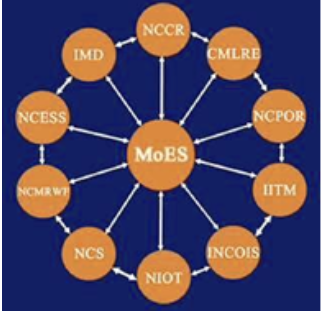
- GREEN ALERTS
- A new website for disseminating information was released, including alerts for block-level weather forecasts and advisories to benefit our agricultural community, including farmers, fisherfolk, and livestock rearers.
- The information shall be disseminated in English, Hindi and regional languages in the future.
- The India Meteorological Department (IMD) will be collaborating with the Ministry of Panchayati Raj.
- A Rainfall Atlas of India from 1971 to 2020 prepared by IMD was released.
- A documentary on ‘Cyclone Warning and Management in India: An End to End System’ was released based on the case studies of the management of cyclones Tauktae (in 2021) and Mocha (in 2023).
- SAMUDRA (Smart Access to Marine Users for Data Resources and ocean Advisories)
- A new mobile application to provide comprehensive information on all ocean-related services of the INCOIS.
- IndOBIS
- A new web portal featuring the biodiversity of our Indian Ocean EEZ (Exclusive Economic Zone) was made open to the public.
- The portal has been developed by the Centre for Marine Living Resources and Ecology (CMLRE), Kochi.
- It is a project under the Intergovernmental Oceanographic Commission (IOC)-UNESCO International Oceanographic Data and Information programme.
- A detailed scientific catalogue entitled ‘Systematic account of Indian deep-water Brachyuran crabs collected during the expeditions of FORV Sagar Sampada’ was released.
- A detailed report of the CAIPEEX IV (Cloud Aerosol Interaction and Precipitation Enhancement Experiment) by the Indian Institute of Tropical Meteorology (IITM), Pune, was released.
- An infographics book entitled ‘75 Years of Earth Sciences in India’ was released to highlight the success story of the growth and achievements of the MoES.
- The first-ever annual report of the National Centre for Medium-Range Weather Forecasting (NCMRWF), Noida, was released.
- A video explaining the 330m Delhi Model, developed by NCMRWF, Noida, in collaboration with international counterparts such as the UK Met Office, was released.
- The high-resolution 330m Delhi model is used to study aerosols, Particulate Matter (PM)2.5, and fog in Delhi NCR and predict visibility in the capital region.
- A Compendium of Monthly Seismological Bulletins for 2021, 2022, prepared by the National Centre for Seismology (NCS), was released.
Lithium Extraction - Edukemy Current Affairs
In News: Recently, India has successfully extracted lithium from the mineral concentrate on a laboratory scale.
About:
- India has recently identified a comprehensive list of 30 critical minerals, including lithium, as part of its mineral security strategy.
- The country has demonstrated its capability to develop technologies for the beneficiation of lithium ore to lithium mineral concentrate.
Lithium

- Lithium is a chemical element with the symbol Li and atomic number 3.
- It is a soft and silvery-white metal.
- It is sometimes also referred to as ‘White gold’ due to its high demand for rechargeable batteries.
- Like all alkali metals, lithium is highly reactive and flammable, and must be stored in vacuum, inert atmosphere, or inert liquid such as purified kerosene or mineral oil.
- Major Global Lithium Reserves:
- Chile > Australia > and Argentina are the top countries with Li reserves.
- Lithium Triangle: Chile, Argentina, Bolivia.
Graphene-Aurora Program - Edukemy Current Affairs
In News: Recently, The Ministry of Electronics & Information Technology (MeitY) Secretary has launched the ‘Graphene-Aurora program’ at a function in Maker Village Kochi, Kerala.
About:
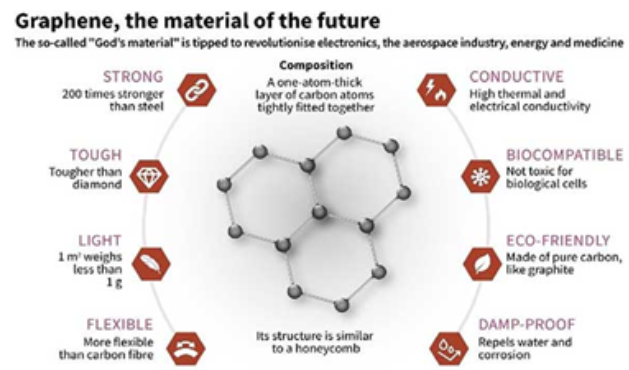
- The program shall be implemented by Digital University Kerala with joint funding from MeitY and Government of Kerala and Industry partners.
- The establishment of the India Graphene Engineering and Innovation Centre (I-GEIC) will play a pivotal role in this effort.
- This initiative aims to bridge the gap between graphene research and commercialization.
- Purpose:
- The centre shall fill the gap between R&D and commercialization by providing a complete facility to startup and industry.
- It shall also nurture the deep/emerging Graphene technology & innovation ecosystem that can guide, develop, implement and support SMEs and startups to commercialize developed graphene technologies for scale adoption.
Graphene:
- Graphene is a single layer of carbon atoms arranged in a hexagonal lattice, forming a two-dimensional structure.
- It is the world’s thinnest, strongest, and most conductive material of both electricity and heat.
- It conducts electricity better than copper.
- It is 200 times stronger than steel but six times lighter.
- It is almost perfectly transparent as it absorbs only 2% of light.
- It is impermeable to gases, even those as light as hydrogen and helium.
- It is used in electronics for creating faster and more efficient devices, in materials science for reinforcing composites, in energy storage for enhancing battery performance, and in medical fields for drug delivery and biosensors, among other uses.
Maker Village
- Maker Village is a pioneering startup initiative of the MeitY, Government of India with Indian Institute of Information Technology, Trivandrum as the implementation agency and Kerala Startup Mission as the supporting partner.
- It is India’s largest electronic hardware incubator and Electronics System Design & Manufacturing facility.
Somatic genetic variants - Edukemy Current Affairs
In News: Scientists have known of somatic variants for many years, but recently there has been an explosion in the amount of data.
About:

- Somatic genetic variants also known as somatic mutations refer to alterations in the DNA sequence that occur specifically within the cells of an individual's body (somatic cells), excluding the germline cells (sperm and egg cells).
- Somatic genetic mutations occur after birth during development and are not inherited from parents.
- Somatic mutations can occur for various reasons, such as errors during DNA replication, exposure to environmental factors (like radiation or chemicals), or simply as a natural consequence of cellular.
- Somatic mutations can have different effects depending on where they occur in the genome and which genes are affected.
- Some somatic mutations are harmless and have no discernible impact on the cell or individual. However, others can lead to the development of diseases, including cancer.
Somatic Mutation Progression:
- Humans have 23 pairs of chromosomes, one from each parent, which carry our genetic information or blueprint.
- After fertilization, a single cell with 23 chromosomes begins dividing, ultimately creating nearly a trillion cells in the human body.
- While DNA replication during cell division is generally accurate, errors occur at an estimated rate of 0.64-0.78 mutations per billion base pairs per division.
- These mutations are more common during development and are referred to as somatic genetic mutations.
- These errors, often arising from the repeated copying of the genome, increase with age and tissue turnover.
- Turnover is the replacement of old cells with new ones.
- Some of these mutations can confer advantages to cells, leading to the development of tumours known as driver mutations.
Project Worldcoin - Edukemy Current Affairs
In News: Recently, a project called Worldcoin has been launched by OpenAI, an Artificial intelligence company.
About:
- The project claims to be building the world’s largest identity and financial public network.
Project Worldcoin:
- Worldcoin is an initiative to create a digital network in which everyone can claim some kind of stake and join the digital economy.
- The initiative uses a device called “Orb” to collect biometric (iris) data and help participants get a World ID through the World app.
- With the app, participants can collect a cryptocurrency called Worldcoin [WLD].
- Users need to be willing to scan irises and/or get their own irises scanned to make the Worldcoin network possible.
- Those who have their irises scanned and collect a World ID can use this to claim the WLD crypto, which they may use for transactions (if possible and legal) or hold on to the asset in the hope that its price might rise.
- Worldcoin claims that using biometric information to avoid duplication is a valid method for including everyone in its network.
- This process is called “proof of personhood” and makes sure that people do not sign themselves up multiple times in exchange for crypto.
More Information:
- Worldcoin lists 18 locations in India — largely in Delhi, Noida, and Bangalore — where Orb operators are scanning people’s eyes.
ASTRA Beyond Visual Range air-to-air missile
In News: Recently, Light Combat Aircraft (LCA) LSP-7, known as “Tejas,” successfully launched the indigenous Beyond Visual Range (BVR) air-to-air missile called ASTRA.
About:
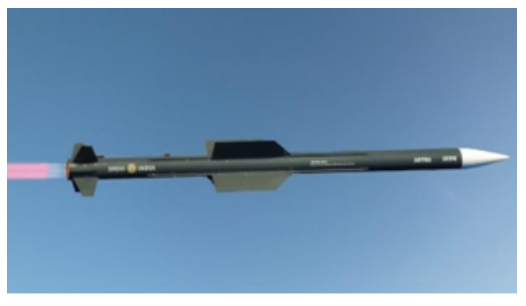
- The missile was fired from the aircraft at an altitude of approximately 20,000 feet and achieved all test objectives flawlessly.
ASTRA Missile:
- ASTRA is an indigenous Beyond Visual Range (BVR) air-to-air missile.
- It is to engage and destroy highly maneuvering supersonic aerial targets.
- It is designed and developed by Defence Research and Development Laboratory (DRDL), Research Centre Imarat (RCI) and other laboratories of DRDO.
- The indigenous Astra BVR firing from home grown Tejas fighters is a major step towards ‘Aatmanirbhar Bharat’.
|
LCA Tejas |
|
C.R. Rao (1920-2023) - Edukemy Current Affairs
In News: Recently, Renowned statistician Calyampudi Radhakrishnan Rao, known as C.R. Rao, has passed away at the age of 102.
About:
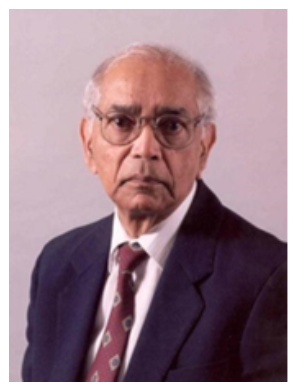
- C.R. Rao was among the world’s most eminent statisticians and spent a significant part of his career in India.
- C.R. Rao was born in 1920, in Hadagali, Bellary district in a Telugu family.
- Various theorems: Rao-Blackwell Theorem, Cramér–Rao inequality, Fisher–Rao theorem, Orthogonal arrays, Multivariate statistical analysis, Biometry etc.
- Rao formulated the Cramer-Rao bound in 1945, setting a benchmark for assessing statistical techniques. His Rao-Blackwellisation concept in 1948 improved estimator efficiency.
- Rao’s work in multivariate analysis, estimation theory, and differential geometry was groundbreaking. His Fisher-Rao metric is widely used in probability and physics.
- Over his career, Rao authored roughly 500 papers and 14 books, addressing complex statistical problems.
- He played a key role in developing statistical education and research in India, serving on various government committees and contributing to the field’s growth.
- He received numerous awards, including India’s Padma Bhushan and Padma Vibhushan.
- He served as chairman of the Committee on Statistics and Demographic and Communication for Population Control.
- His famous book is “Statistics and Truth: Putting Chance to Work”.
- Ethical values: C.R. Rao’s life embodied ethical values such as dedication to education, professionalism, pioneering statistical concepts, and contributing to society through his work in statistics.
Respiratory Syncytial Virus (RSV)
In News: Recently, The US Food and Drug Administration (FDA) approved the first vaccine (ABRYSVO), that protects newborns from Respiratory Syncytial Virus (RSV).
About:
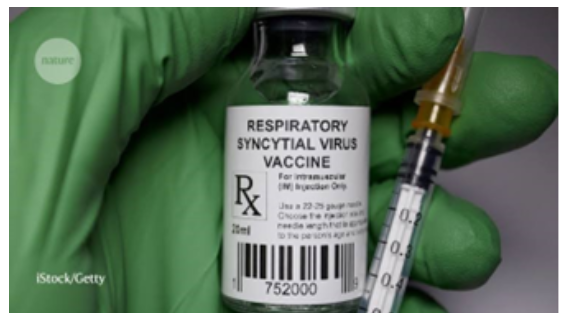
- ABRYSVO’s approval is the first and only maternal immunization to help protect newborns immediately at birth through six months.
- It is made by Pfizers.
- Abrysvo has been authorized for use in adults aged 60 and above to protect them from RSV.
- The vaccine generates passive immunity by producing antibodies against RSV in pregnant individuals, which are then passed on to their foetuses in the uterus.
Respiratory Syncytial Virus (RSV)
- Respiratory Syncytial Virus (RSV) belongs to the family of viruses called Paramyxoviridae and is a leading cause of lower respiratory tract infections, such as bronchiolitis and pneumonia, especially in children under the age of two.
- It is a negative-sense, single-stranded RNA virus.
- It usually causes mild, cold-like symptoms.
- But infants, young children and people older than 65 can develop severe disease and potentially die from the virus.
- These infections include bronchiolitis, an inflammation of the small airways in the lung, and pneumonia, an infection of the lungs.
- Transmission:
- The virus spreads through respiratory droplets when an infected person coughs or sneezes, and it can also be transmitted through direct contact with contaminated surfaces.
- Symptoms:
- The symptoms of RSV infection usually start about 4 to 6 days after infection.
- They include Runny nose, Decrease in appetite, Cough, Sneezing, Fever, Wheezing.
ISRO’s Chandrayaan-3 mission
In News: The Chandrayaan-3 lander made a successful soft landing on the surface of the moon, making India the first country to reach close to the lunar south pole. India has also become the fourth nation to land on the lunar surface, after the United States, the erstwhile Soviet Union, and China.
About Chandrayaan Mission:
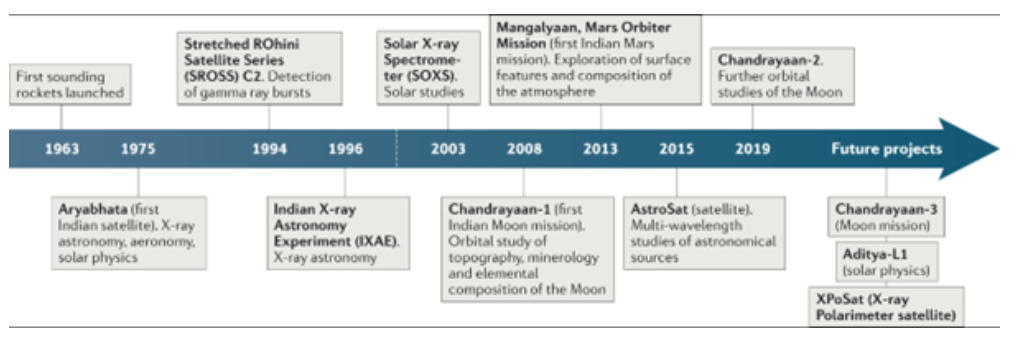
- The Chandrayaan-1 mission was launched in 2008. The Moon Impact Probe was made to crash land on the lunar surface to leave India’s mark on the Moon. Chandrayaan-1’s orbiter also detected evidence of water on the Moon.
- Chandrayaan-2 was launched in 2019 with a lander, called Vikram. It was scheduled to make a soft-landing on the lunar surface but minutes before the scheduled touchdown, ISRO lost contact with the spacecraft. However, the Chandrayaan-2 orbiter continued to work fine.
- Chandrayaan-3 mission’s successful soft landing on the Moon marks India becoming the fourth nation after the United States, Russia, and China to reach the lunar surface and first to reach the South Pole.
- There were various instruments on Chandrayaan-3 to carry out several experiments:
- Lander Payloads:
- Radio Anatomy of Moon Bound Hypersensitive Ionosphere and Atmosphere (RAMBHA) to study the electrons and ions near the moon’s surface, and changes over time.
- Chandra’s Surface Thermo Physical Experiment (ChaSTE) focuses on thermal properties of the lunar surface near the polar region assisting in understanding temperature variations.
- Instrument for Lunar Seismic Activity (ILSA) measures lunar quakes near the landing site, analysing the composition of the Moon’s crust and mantle through seismic activity.
- LASER Retroreflector Array (LRA) provided by NASA, acts as a target for lasers, enabling precise measurements for future missions.
- Rover Payloads:
- LASER-Induced Breakdown Spectroscopy (LIBS) determines the chemical and mineral composition of the lunar surface, offering insights into its geological makeup.
- Alpha Particle X-ray Spectrometer (APXS) identifies elements on the lunar surface.
- Lander Payloads:
Reasons for exploring Moon’s South Pole:
- Focus on Equatorial region: All the previous spacecraft to have landed on the Moon have landed in the equatorial region, because:
- The terrain & temperature are more hospitable and conducive
- Presence of Sunlight offers a regular supply of energy to solar-powered instruments.
- Unexplored region: The polar regions of the Moon have difficult terrain with many parts lying in completely dark regions, and temperatures can go below 230 degrees Celsius.
- Insights into early history of the Solar System: Extreme cold temperatures in Polar Regions of the moon preserves objects as they remain frozen and undergo minimal change. Thus rocks and soil in the Moon’s poles offer valuable insights into early stages of the Solar System.
- Presence of water: These specific areas referred to as Permanently Shadowed Regions of the moon can have evidence for presence of water in the region at the surface.
- Technological Advancements: Undertaking missions to the lunar South Pole allows ISRO to develop and showcase innovative technologies.
Significance of Chandrayaan Mission:

- Progress in India’s space programme: The Chandrayaan and Mangalyaan signal a shift in India’s space science strategy. Earlier, ISRO focused on utilitarian objectives like satellite launches on enabling telecommunications, telemedicine etc. But now there is push towards space exploration.
- Future space exploration: The demonstration of India’s capability to launch, and successfully soft land on a planetary body can impact IRSO’s ability to carry out, or participate in, other space missions.
- Boost to the Indian space-tech ecosystem: The successful launch of Chandrayaan-3 could bolster investor confidence and attract more private investment in space technology to promote cost-efficient and highly reliable space-grade hardware.
- Confidence in LMV’s capability for Gaganyaan: With a human-rated Launch Vehicle Mark (LVM) to be used for the upcoming Gaganyaan mission, LVM-3’s success in Chandrayaan-3 has enhanced confidence over the launch vehicle.
- Nurturing startups: Success of ISRO’s mission also depended on contributions of private players and startups which provided critical components for the mission. This has increased reliability in the private sector and could attract business opportunities for Indian startups to in the global market.
- Strengthening international reputation: Success of Chandrayaan-3 could earn global recognition and lead to the cost-effective adoption of spacecraft manufactured by Indian companies and proof of its reliability.
- Strategic Positioning: The mission positions India as an important player in the international space race, potentially matching China’s influence. Together with Artemis Accords, it will enhance India's ever-increasing space footprints.
Agnibaan SubOrbital Technological Demonstrator (SOrTeD)
In News: Recently, AgniKul Cosmos, a space tech start-up based in Chennai, set to launch their groundbreaking Agnibaan SubOrbital Technological Demonstrator (SOrTeD), the world's first 3D-printed rocket into space.
About:
- The Agnibaan SOrTeD is a customisable launch vehicle that could be launched in one or two stages.
- It is powered by AgniKul’s patented Agnilet engine.
- Agnilet, is a 3D-printed, 6 kilonewton (kN) semi-cryogenic engine that uses liquid oxygen and kerosene as propellants.
- Unlike traditional sounding rockets that launch from guide rails, Agnibaan SOrTeD will lift off vertically and follow a predetermined trajectory to perform a precisely orchestrated set of manoeuvres during flight.
Features:

- It is capable of carrying payloads up to 100 kg to an altitude of 700 km in five different configurations.
- The rocket has a mass of 14,000 kg.
- The rocket's first stage could have up to seven Agnilet engines, depending on the mission, which are powered by Liquid Oxygen and Kerosene.
- The rocket is also designed for launch from more than 10 different launch ports.
- To ensure its compatibility with multiple launch ports, AgniKul has built a launch pedestal named 'Dhanush' that will support the rocket's mobility across all its configurations.
- The Agnilet engine, which powers the entire operation, is the world’s sole single-piece 3D-printed engine.
More Information:
- AgniKul Cosmos' journey is supported by the Indian Space Research Organisation (ISRO) and Indian National Space Promotion and Authorisation Centre (IN-SPACe).
|
3D Printing |
|
Namoh 108 - Edukemy Current Affairs
In News: Recently, The Lucknow-based CSIR-NBRI (National Botanical Research Institute) has reportedly developed a new variety of lotus flowers called ‘Namoh 108,’ characterized by having 108 petals.
About:
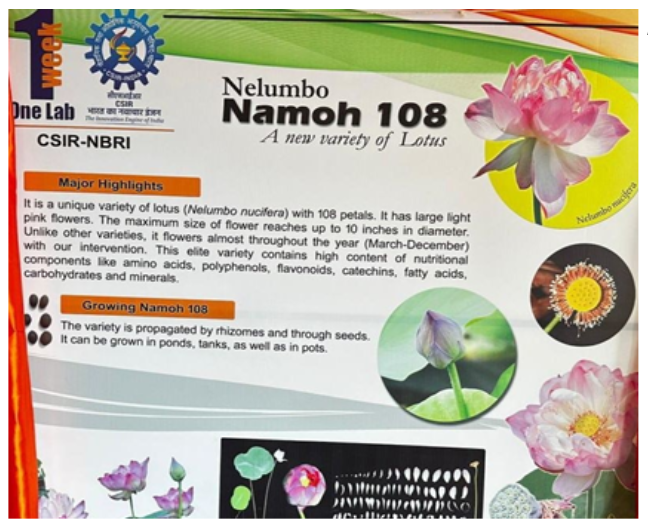
- The name “Namoh 108” is a combination of the religious significance of the ‘lotus flower’ and the digit ‘108,’ which holds importance in Hinduism.
Features of Namoh 108:
- The Namoh 108 lotus variety flowers from March to December “and is rich in nutrients.
- The flower's genome was sequenced, making it the only Indian lotus variety with a sequenced genome.
- The release also included products derived from the lotus, such as apparel made from lotus fibre and a perfume called ‘Frotus’ extracted from lotus flowers.
More Information:
- The flower's characteristics were modified to facilitate cultivation outside Manipur.
Amyotrophic Lateral Sclerosis - Edukemy Current Affairs
In News: Medical fraternity deliberates on challenges to live with ALS and need to care for patients
About Amyotrophic Lateral Sclerosis (ALS)
- Amyotrophic Lateral Sclerosis (ALS) also known as Lou Gehrig's disease or motor neuron disease is a neurodegenerative disease affecting motor neurons in brain and spine.
- Living with it takes a toll on patients and caregivers due to delayed diagnosis, infrastructural gaps, and invisible labor.
- Major highlights:
- Motor Neuron Degeneration of Special nerve cells affects control voluntary functions: walking, talking, chewing, arm movement.
- Progressive death of motor neurons leads to muscle atrophy leading to muscle weakness and twitching (fasciculations).
- It also leads to difficulty in speaking, swallowing, breathing and gradual loss of voluntary muscle control.
- There is no single test available at present and the disease is diagnosed through clinical examination and ruling out other conditions.
- Motor cell failure is detected in multiple body regions through a diagnostic process which may take 8 to 15 months from symptom onset.
- Although there is no clear cause available at present since most cases sporadic with around 5-10% cases have genetic link (familial ALS).
- The average survival time is 3 years as breathing muscles involvement leads to respiratory failure due to no definitive cure except treatments to manage symptoms and extend life.
- At present, treatment involves multidisciplinary approach involving neurologists, therapists, caregivers and medications to manage symptoms and slow progression.
- Breathing support devices and feeding tubes are inserted as the disease progresses with physical and occupational therapy used to maintain functionality.
- There is need to pursue more research to understand causes and develop treatments besides awareness campaigns to educate public about ALS and support for patients.
- Companies can also take fundraising for research and patient care through initiatives like Ice Bucket Challenge.
- Overall, ALS is a debilitating neurodegenerative disease whose early diagnosis, comprehensive care, and research efforts are essential to improve the quality of life for those affected by ALS.
Acoustic Side Channel Attacks - Edukemy Current Affairs
In News: Recently, a research paper titled “A Practical Deep Learning-Based Acoustic Side Channel Attack on Keyboards”, was published and supported by the ethics committee of Durham University.
About Side Channel Attacks (SCA)
- SCAs are a method of hacking a cryptographic algorithm based on the analysis of auxiliary systems used in the encryption method.
- These can be performed using a collection of signals emitted by devices, including electromagnetic waves, power consumption, mobile sensors as well as sound from keyboards and printers to target devices.
- These collected signals are used to interpret signals that can be then used to compromise the security of a device.
About Acoustic Side Channel Attacks (SCA)
- ASCA, the sound of clicks generated by a keyboard is used to analyze keystrokes and interpret what is being typed to leak sensitive information.
- These attacks are particularly dangerous as the acoustic sounds from a keyboard are not only readily available but also because their misuse is underestimated by users.
- Users take no precautionary steps are taken to hide the sound of the keystrokes.
- The use of laptops has increased the scope of ASCAs as laptop models have the same keyboard making it easier for AI-enabled deep learning models to pick up and interpret the acoustics.
How can users protect against ASCAs?
- Using touch-based typing can reduce the chances of successful keystroke recognition making it more difficult for threat actors to leak sensitive information.
- Changes in typing style and creating stronger passwords that use a combination of upper- and lower-case alphabets can make it more difficult for criminals to launch successful ASCA attacks
Definition of Green Hydrogen - Edukemy Current Affairs
In News: Recently, In a significant move for the progress of the National Green Hydrogen Mission, the government has notified the Green Hydrogen Standard for India.
About:
"Green Hydrogen" shall mean Hydrogen produced using -renewable energy, including, but not limited to, production through electrolysis or conversion of biomass. Renewable energy also includes such electricity generated from renewable sources which is stored in an energy storage system or banked with the grid in accordance with applicable regulations.
For Green Hydrogen produced through electrolysis:-
- The non-biogenic greenhouse gas emissions arising from water treatment, electrolysis, gas purification and drying and compression of hydrogen shall not be greater than 2 kilogram of carbon dioxide equivalent per kilogram of Hydrogen (kg CO₂ eq/kg Hydrogen), taken as an average over last 12-month period.
For Green Hydrogen produced through conversion of biomass:-
- The non-biogenic greenhouse gas emissions arising from biomass processing, heat/steam generation, conversion of blomass to hydrogen, gas purification and drying and compression of hydrogen shall not be greater than 2 kilogram of carbon dioxide equivalent per kilogram of Hydrogen (kg CO2 eq/kg Hydrogen) taken as an average over last 12-month period.
Additional Information
- Detailed methodology for measurement, reporting, monitoring, on-site verification, and certification of green hydrogen and its derivatives shall be specified by the Ministry of New & Renewable Energy.
- Bureau of Energy Efficiency (BEE), Ministry of Power shall be the Nodal Authority for accreditation of agencies for the monitoring, verification and certification for Green Hydrogen production projects.
DRDO’s UAV Tapas
In News: After the crash of Tapas unmanned aerial vehicle (UAV) in Karnataka, during its experimental flight trial, Defence Research and Development Organisation (DRDO) informed that there was no collateral damage.
About the Unmanned Aerial Vehicle TAPAS:
- Tactical Airborne Platform for Aerial Surveillance (TAPAS)-Beyond Horizon-201 or Tapas BH-201 is a long-endurance unmanned aerial vehicle that used to be previously referred to as Rustom-II.
- The drone has a 20.6-meter wingspan and a maximum speed of 225 kmph. It can cover a range of more than 250 km using the C Band frequency data link developed by Defence Electronics Application Laboratory (DEAL) at DRDO.
- It's range can also be enhanced to more than1000 km via SATCOM using the Kᵤ Band frequency and GAGAN system.
- TAPAS BH 201 is being developed in India by Aeronautical Development Establishment.
- The medium-altitude, long-endurance drone has an impressive flight endurance of several hours and successfully completed its maiden flight in November 2016.
- The TAPAS BH 201 drone has the capability to fly autonomously or via remote control, allowing for pre-programmed flight plans and operational use in daylight or darkness.
- Its compact, lightweight design makes it easily transportable and deployable to remote locations, while its real-time data collection and transmission provide valuable intelligence for decision-making.
- With a range of over 18 hours and altitude capabilities of up to 28,000 feet, the TAPAS BH 201 has already completed more than 180 flights and will be live-streaming aerial and static displays at Aero India 2023.
Significance of UAV-TAPAS:
- Tapas-BH is the answer to India’s quest for ISTAR (Intelligence, Surveillance, Target Acquisition, Tracking, and Reconnaissance) requirements.
- TAPAS incorporates the highest-grade military EO Electro-Optical (EO) and Synthetic Aperture Radar (SAR) payloads which will improve the images dramatically for the ISTAR range of operations for the military across the terrain.
- The development of TAPAS is also crucial for the next phase of armed drones with greater capabilities which will reduce the dependency on importing ISTAR drones.
- The long-endurance capabilities of drones are vital for border surveillance amid escalating Chinese build-up across the border.
Demon particle - Edukemy Current Affairs
In News: Researchers at the University of Illinois recently discovered a demon particle that could lead to the making of superconductors that can operate at room temperature.
About the Superconductors:
- Superconductivity is the property of certain materials to conduct direct current electricity without energy loss when they are cooled below a critical temperature. These materials also expel magnetic fields as they transition to the superconducting state.
- Such metals or alloys can conduct electricity without resistance, but for that to happen, the temperature of such material needs to be below 100 degrees Fahrenheit.
- Superconductors are used in operations such as levitating trains and highly accurate magnetic resonance imaging (MRI) machines.
Demon Particles:
- These are massless particles, termed as the holy grail of superconductors, which were discovered nearly 70 years after ‘demon particles’ were first predicted.
- The prediction of the demon particle was first made by theoretical physicist David Pines in 1956, who believed that electrons would behave strangely when passed through a solid.
- Electric interactions make electrons combine to form collective units i.e. plasmons. This can make electrons lose individuality in solids. However, with such a large mass, plasmons cannot form with energies available at room temperature.
- But Pines pointed out that there is an exception. Since demons do not contain mass, they can form plasmons with any energy and at room temperatures as well, thus giving rise to the idea of superconductors working at room temperatures.
- With the discovery of materials capable of operating at room temperature, emergence of more powerful computers could come into being.
About the Research:
- The team at University of Illinois, identified the potential existence of the demon particle while investigating the properties of the metal strontium ruthenate, which is similar to high-temperature superconductors.
- The team of researchers were conducting the first survey on the electronic properties of the metal by blasting it with electrons, which led to the summoning of the demon through the metal’s features.
- The final GE lines of mustard contain no Cas9 protein and are transgene-free.
Gene-edited mustard - Edukemy Current Affairs
In News: Recently, Indian scientists have developed the first-ever low-pungent mustard.
About GTR Gene-Edited Mustard
- Mustard (Brassica juncea) dry seed contain 120-130 parts per million (ppm or mg/kg) of glucosinolates. This is as against the sub-30 ppm levels in canola seeds.
- By lowering the glucosinolate content to the dry seed weight concentration, the scientists have bred mustard lines whose oil and meal match the standard of canola-quality rapeseed (Brassica napus) in terms of pungency.
- In this seed glucosinolates are synthesized in mustard leaves and pod walls before translocation to seeds.
- New GTR genes-edited mustard lines are transgene-free or non-genetically modified (GM). It is low-pungent mustard that is pest and disease-resistant.
- It does not contain any foreign genes like Bar-Barnase-Barstar (isolated from other soil bacteria) in the GM hybrid mustard (DMH-11)
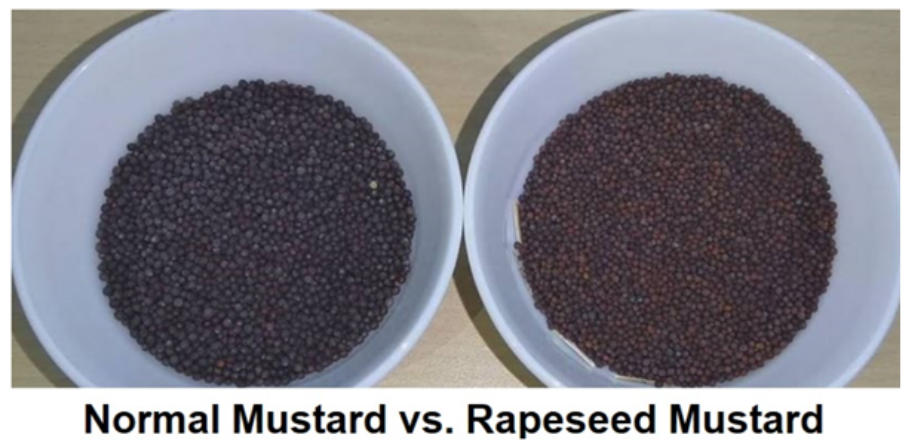
About Glucosinolates:
- Glucosinolates are synthesized in the leaves and pod walls of mustard plants. Its translocation and accumulation in the seeds happens through the action of glucosinolate transporter or GTR genes
- Mustard seeds have high levels of glucosinolates, a group of sulphur and nitrogen-containing compounds contributing to the characteristic pungency of their oil and meal.
- High glucosinolates are also known to cause goiter (swelling of the neck) and internal organ abnormalities in livestock.
- High glucosinolates reduce the feed intake of livestock.
- Glucosinolates limit the palatability of the meal and the exploitation of its true protein potential are also key arsenals of the Brassicaceae family crops – from mustard and canola to cabbage, cauliflower and broccoli – against invading pests, pathogens and termites.
Importance of the Gene-Edited Mustard
- India is a huge importer of edible oils, In the fiscal year 2022-2023 India imports were valued at $20.84 billion that only meet 60% of the country’s consumption requirement.
- There is a dire need to boost domestic oilseed production through focused breeding to improve crop yields, pest and disease resistance, and product quality. So, it can l help to save the foreign exchange and reduce import dependency.
- Mustard and soyabean are India’s most widely-cultivated oilseed crops, planted annually on 9 million and 12.5 million hectares area respectively.
- Mustard's higher average oil extractable content (38% versus 18% for soyabean) makes mustard the bigger “oilseed” crop, while a source of both fats for humans and protein for animals.
‘Microplastics’ in the human Heart
In News: Recent research from China’s Beijing Anzhen Hospital, published by the American Chemical Society, has discovered microplastics in the human heart for the first time.
About:

- The researchers found numerous individual microplastic pieces in most tissue samples, and plastic particles were also present in all blood samples.
- The study also identified specific types of plastics, such as polyethylene terephthalate (used in clothing and food containers) and polyvinyl chloride (common in window frames and pipes), in the samples.
Microplastics:
- Microplastics are tiny bits of various types of plastic found in the environment.
- They are a result of the fragmentation and degradation of larger plastic items, as well as the direct release of tiny plastic particles, often intentionally added to consumer products like cosmetics and cleaning agents.
- Microplastics, which are less than 5 millimetres in size, can enter the human body through various openings and have been linked to health issues like obesity, diabetes, and chronic liver disease due to their impact on the gastrointestinal tract.
- The name is used to differentiate them from “macroplastics” such as bottles and bags made of plastic.
- There are two categories of microplastics:
- Primary microplastics: They are tiny particles designed for commercial use, such as cosmetics, as well as microfibers shed from clothing and other textiles, such as fishing nets.
- Secondary microplastics: They are particles that result from the breakdown of larger plastic items, such as water bottles.
India’s first drone common testing centre
In News: India’s first Unmanned Aerial Systems (Drone) Common Testing Centre under Defence Testing Infrastructure Scheme (DTIS) will be established in Tamil Nadu.
About:
- The initiative is led by the Tamil Nadu Industrial Development Corporation (TIDCO) as part of the Tamil Nadu Defence Industrial Corridor (TNDIC), aimed at nurturing the aerospace and defence industry ecosystem.
- It will be established under Defence Testing Infrastructure Scheme (DTIS).
- As part of the implementation of the TNDIC, the government is about to create an enabling ecosystem including Common Testing Centres for the Aerospace and Defence Industry.
- Location – The Unmanned Aerial Systems (UAS) Common Testing Centre would be established at the SIPCOT Industrial Park, Vallam Vadagal near Sriperumbudur in Tamil Nadu.
- It will enable the State to be a significant contributor to the self-reliance of the country in the aerospace & defence sector.
- More Information:
- An integrated facility for testing for UAS (Drone) is available only with DRDO at Chitradurga, Karnataka.
- More Information:
|
Defence Testing Infrastructure Scheme (DTIS) |
|
STEREO (Solar TErrestrial RElations Observatory) mission
In News: Nasa's Solar Terrestrial Relations Observatory (STEREO-A) spacecraft made its first Earth flyby nearly 17 years after its launch.
About:

- The pair of STEREO (Solar Terrestrial Relations Observatory) spacecraft were launched on October 25, 2006, from Florida's Cape Canaveral Air Force Station.
- STEREO-A (A stands for Ahead), along with its twin STEREO-B (B stands for Behind), was launched to study the Sun's Behavior by charting Earth-like orbits around it.
- Their primary goal was to provide a stereoscopic view of the Sun, enabling researchers to study it from multiple perspectives.
- In 2011, another significant milestone was achieved as both STEREO-A and -B reached a remarkable 180-degree separation in their orbits, which gave us the full sphere image of the Sun.
Significance of STEREO-A:
- STEREO-A’s recent approach to Earth offers a unique opportunity for scientific observations. By combining its views with other spacecraft, including the Solar and Heliospheric Observatory (SOHO) and Solar Dynamics Observatory (SDO), STEREO-A will provide 3D views of the Sun.
- This stereoscopic vision allows scientists to gain depth perception and explore features like active regions and coronal loops in unprecedented detail.
- STEREO-A’s passage through Earth’s vicinity also allows for an in-depth study of solar eruptions, known as coronal mass ejections (CMEs), which can impact Earth’s technology.
- This approach provides multipoint measurements to understand the evolution of CMEs’ magnetic fields.
Aditya-L1 Mission - Edukemy Current Affairs
In News: ISRO is ready to launch its first solar mission Aditya-L1, after the successful launch of Chandrayaan-3. The satellite realized at the UR Rao Satellite Centre Bengaluru has arrived at SDSC-SHAR (spaceport) in Sriharikota.
About Aditya-L1 mission:
- Aditya-L1 is the first Indian space mission to observe the Sun and the solar corona. It will be launched by the PSLV-XL launch vehicle.
- The objective of the mission is to study solar upper atmospheric (chromosphere and corona) dynamics and understand the physics of the solar corona and its heating mechanism.
- The mission will be launched to the halo orbit around the L1 point (first Lagrangian point of the Sun-Earth system) which is 1.5 million km from the Earth. L1 orbit allows Aditya-L1 to continuously view the Sun without any occultation or eclipses.
- The spacecraft carries seven payloads of which the primary payload is the Visible Emission Line Coronagraph(VELC), to observe the photosphere, chromosphere and the outermost layers of the Sun (the corona) using electromagnetic and particle and magnetic field detectors.
Significance of Aditya-L1 mission:
- Understand the impact of space weather on earth: Evolution of every planet, including Earth is governed by its parent star. Variations in this weather can change the orbits of satellites or shorten their lives, interfere with on board electronics, cause power blackouts and other disturbances.
- Observe Earth directed solar storms: The mission helps to observe, track and predict the impacts of Earth-directed storms. Since every solar storm heading towards the Earth passes through L1, a satellite placed in the halo orbit around L1 helps observe the sun without any eclipses.
- Fillip to the Indian space industry as many of the instruments and their components for this mission are being manufactured for the first time in the country.
What is a Lagrange Point?

- Lagrangian points, also known as Lagrange points or liberation points, are specific locations in space where the gravitational forces of two large bodies, such as a planet and its moon or a planet and the Sun, produce enhanced regions of gravitational equilibrium.
- L1 refers to Lagrange Point 1, one of five points in the orbital plane of the Earth-Sun system, which is 1.5 million kilometres inside Earth's orbit, between the Sun and the Earth.
- These can be used by spacecraft to reduce fuel consumption needed to remain in position. The L1 point is home to the Solar and Heliospheric Observatory Satellite (SOHO), an international collaboration project of NASA and the European Space Agency (ESA).
Zayed Talwar - Edukemy Current Affairs
In News: Two ships of the Indian Navy, INS Visakhapatnam, and INS Trikand have arrived in Dubai to conduct the bilateral exercise ‘Zayed Talwar’ with the UAE Navy.
About:

- Zayed Talwar is a Bilateral Exercise between India and UAE Navy.
- The aim of the exercise is to enhance interoperability and synergy between the two navies.
- The ships will undertake professional interactions with the UAE Naval Force on multiple elements of maritime operations during their visit.
- The visit seeks to strengthen the maritime partnership, share best practices, and foster a common understanding of security challenges in the region.
INS Visakhapatnam:
- It is the lead ship and the first of the Indian Navy’s Visakhapatnam-class stealth guided-missile destroyers.
- It was commissioned on November 21, 2021, is one of the largest destroyers in Indian Navy service.
- Features:
- Displacement: 7,400 tonnes.
- Propulsion: It is propelled by four powerful Gas Turbines, in a Combined Gas and Gas (COGAG) configuration.
- Speed: It is capable of achieving speeds in excess of 30 knots.
- The ship is equipped to fight under Nuclear, Biological and Chemical (NBC) warfare conditions.
|
Other exercises between India and UAE: |
|
First-ever 2D composite quantum material
In News: 2-D carbides or nitrides of transition metals were used by a team of scientists to develop a new composite quantum material using computer simulations, that exhibits an exotic quantum property called Rashba splitting, in colossal scale, in a metallic environment.
About the 2D composite quantum material
- 2-D materials are materials with confined geometry in one of the directions.
- Quantum materials are compounds with exotic physical properties that arise due to quantum effects like quantum fluctuations, quantum coherence, and quantum entanglement, having no counterpart in the classical world.
- They hold the promise of revolutionising quantum technology, such as quantum computing, communication, sensors, and memory devices.
- Composite 2-D quantum materials, are quantum materials exhibiting two apparently different quantum properties, but connected by the basic requirement of symmetries.

-
- This material can help interfacing with other substrates in spintronic devices like spin transistors, spin diodes, and spin filters.
About Spintronics and Rashba effect:
- Spintronics is a technology (used on next-generation nanoelectronic devices) that exploits the intrinsic spin of electrons alongside their charge for innovative electronic devices.
- An example is a spin transistor, where electron spin is used for information storage and processing, potentially leading to more energy-efficient and faster electronic devices.
- Rashba splitting is a quantum phenomenon in materials where spin-up and spin-down electrons separate due to interactions with an electric field.
- For instance, in a 2-D carbide material, Rashba splitting causes momentum-dependent separation of electron spin bands, enabling novel spintronic device applications.
About the research:
- The study has led to the first-ever discovery of a 2-D composite quantum material.
- In their study, by proper choice of materials ingredients, the scientists managed to demonstrate the existence of two distinct quantum phenomena Rashba effect and Nonlinear anomalous Hall effect.
- The team chose two dimensional carbides or nitrides of transition metals technically called MXenes and zeroed down on Mo2CO2.
- Starting with this parent material, they computationally designed a Janus structure Mo2COX, named after the two-faced Roman God.
- Even as Rashba splitting in the designed 2-D material was being computed for different X atoms in the Janus structure, the material under study was found to also have the ability to display another quantum property called the anomalous Hall Effect under the effect of longitudinal DC electric field along a particular direction.
Neerakshi - Edukemy Current Affairs
In News: Recently, India has launched an Autonomous Underwater Vehicle called ‘Neerakshi’ for detecting underwater mines.
About:

- Neerakshi is an autonomous underwater vehicle (AUV) designed to detect mines.
- Developed by: It is a collaboration of Kolkata-based warshipmaker Garden Reach Shipbuilders and Engineers (GRSE) Ltd and MSME entity Aerospace Engineering Private Ltd (AEPL).
- Features:
- It is a 2.1-metre-long cylindrical unmanned vehicle about a foot in diameter and weighing around 45 kg.
- It has an endurance of nearly 4 hours and is capable of operating up to a depth of 300m.
- It can be used for a variety of functions ranging from mine detection to mine disposal to underwater survey.
- Significance:
- It is the first of its kind in India and will be tested by the Navy, Coast Guard, and Army before being available commercially.
- It is part of GRSE’s broader ambitions to create autonomous sea surface vehicles, sea-based drones and explore green propulsion technologies.
IMS-1 Satellite Bus Technology
In News: Recently, ISRO has transferred its IMS-1 Satellite Bus Technology to Alpha Design Technologies Pvt Ltd., promoting private industry participation in India’s space sector.
About:

- Indian Mini Satellite-1 Satellite Bus was developed by the UR Rao Satellite Centre of Indian Space Research Organisation (ISRO).
- It is a small satellite platform designed to enable low-cost access to space.
- It would enable low-cost access to space by providing a dedicated platform for payloads for earth imaging, ocean and atmospheric studies, microwave remote sensing and space science missions with a quick turnaround time.
- Features
- The IMS-1 bus weighs about 100 kilograms and can carry a 30-kilogram payload.
- The solar arrays onboard generate 330 watts of power.
- It comes with four reaction wheels with a 1 Newton thruster that is good for pointing accuracy with an accuracy threshold of 0.1 Degrees.
- Used in: The bus was used in previous ISRO missions like IMS-1, Youthsat and Microsat-2D.
Genetic Diversity in the Indian Population
In News: Study links Endogamy to persistence of harmful Genetic Variants in India
About Genetic Diversity in the Indian Population:
- Jeffrey Wall and colleagues from the University of California has recently conducted a study involving around 5,000 individuals from India, Pakistan, and Bangladesh.
- Whole-genome sequencing was performed to detect genetic changes, including deletions, insertions, and alterations.
- India is known for its remarkable cultural and linguistic diversity, and this diversity extends to its genetic makeup consisting of a multitude of ethnicities, languages, religions, and cultural practices.
- This diversity is reflected in the genetic composition of the population, with distinct genetic variations across different regions and communities.
- Major findings:
- Genetic differences exist between various regions of India due to historical and geographical factors as different ethnic groups within India have unique genetic traits and variations.
- These variations can influence susceptibility to diseases, responses to medications, and overall health profiles.
- Endogamy has led to genetic isolation in many Indian communities resulting in the preservation of specific genetic traits and the emergence of unique genetic variants within these communities.
- Endogamy and consanguineous marriages contribute to higher levels of inbreeding within some Indian communities.
- It has increased the likelihood of individuals carrying two identical genetic variants for a gene (homozygosity), which can lead to the expression of recessive genetic disorders.
- The unique genetic makeup of the Indian population influences the occurrence of disorders such as diabetes, heart diseases, and certain types of cancers.
- Many health traits and disorders are influenced by multiple genes and environmental factors, making their genetic analysis complex.
- Genetic studies provide insights into the genetic basis of diseases, leading to personalized medicine approaches and will help in tailoring healthcare interventions for different population groups.
- Genetic research can also contribute to disease prevention, early diagnosis, and more effective treatments.
- However, Studying the genetic diversity of India's population requires comprehensive data collection from diverse communities.
- Other issues include ethical considerations, privacy concerns, and the need for informed consent which are critical aspects of genetic research.
- Overall, Genetic diversity studies in India will go a long way to contribute to the global understanding of human genetics and its implications for health and wellness.
Einstein cross - Edukemy Current Affairs
In News: Recently, Astronomers have discovered a stunning, rare example of an "Einstein cross" splitting and magnifying light from the far depths of the universe.
About:

- Einstein predicted the existence of these crosses back in 1915.
- In this case, a foreground elliptical galaxy, located around 6 billion light-years from Earth, has distorted and split a beam of light from a background galaxy about 11 billion light-years away.
- The result is a pattern of four blue smudges around the orange glow of the foreground galaxy.
- The background light likely originates from a quasar, a young galaxy with a supermassive black hole at its core emitting intense radiation.
Einstein's theory of general relativity
- Einstein's theory of general relativity describes the way massive objects warp the fabric of the universe, called space-time.
- Gravity, Einstein discovered, isn't produced by an unseen force; rather, it's simply our experience of space-time curving and distorting in the presence of matter and energy.
- It explains how massive objects warp space-time, and the strong gravity of the foreground galaxy curved the light from the quasar, creating the Einstein cross pattern.
Fediverse - Edukemy Current Affairs
In News: Meta, the parent company for Facebook, Instagram, and WhatsApp, recently launched its Twitter, now X, rival Threads.
About:

- Threads will be the company’s first app to join the fediverse - a network of servers operated by third parties.
Fediverse
- The fediverse is a group of federated social networking services that work on decentralised networks operated using open-source standards.
- In this system, a network of servers, managed by third parties, facilitates communication between users of various social media platforms, enabling seamless cross-platform interaction.
- Meta, the parent company of Facebook, Instagram, and WhatsApp, is planning to include its new Threads app in the fediverse.
- This approach allows users to communicate across different social media platforms without creating separate accounts for each one.
- Platforms like Pixelfed, PeerTube, Lemmy, Diaspora, Movim, Prismo WriteFreely, and others already utilize the fediverse.
More Information:
- For example, if a user on Threads, once it enables use of the fediverse, is unable to use their profile for some reason, they can transport all their data to another platform.
- This data would include their follower list, profile information, and posts.
- This kind of cross-platform communication is not facilitated by traditional social media platforms like Facebook, Instagram, and Twitter.
- Additionally, if the servers for an existing platform go down, users of platforms on the fediverse can retain and shift their data to another platform that is part of it.
NIDHI program - Edukemy Current Affairs
In News: Recently, Union Minister said NIDHI (National Initiative for Developing and Harnessing Innovations) program under DST has various components to support innovations, startups, and startup incubation ecosystem in the country.
About:
- The National Initiative for Developing and Harnessing Innovations (NIDHI) program was initiated in 2016 as a comprehensive framework by the Department of Science & Technology's Innovation & Entrepreneurship division.
- NIDHI primary objective is to foster the growth of startups by identifying, supporting, and amplifying innovative endeavors.
- The program's core stakeholders encompass various arms of the central government, state governments, academic and research institutions, mentors, financial entities, angel investors, venture capitalists, and private sectors.
- Funding for the program is channeled through the National Science & Technology Entrepreneurship Development Board (NSTEDB).
Key Elements of the NIDHI Program:
- NIDHI-PRAYAS (Promoting and Accelerating Young and Aspiring Innovators and Startups): This initiative operates at the Proof-of-Concept level, providing both mentorship and financial backing to innovators to translate their ideas into functional prototypes.
- NIDHI Entrepreneurs-In-Residence (EIR) Program: The program extends fellowships to students who are inclined towards entrepreneurship. This facilitates their immersion in the startup ecosystem.
- NIDHI Seed Support Program: This component ensures that startups receive essential early-stage seed funding, enabling them to initiate their ventures.
- NIDHI Accelerator Program: Designed to expedite startups' preparedness for investment, the accelerator program is a structured fast-track process spanning 3-6 months. It aids in propelling startup ideas to higher levels.
Finger Minutiae Record – Finger Image Record (FMR-FIR) modality
In News: Recently, the Unique Identification Authority of India (UIDAI) has rolled out an in-house Artificial Intelligence/Machine Learning (AI/ML) technology-based Finger Minutiae Record – Finger Image Record (FMR-FIR) modality.
About:
- The Finger Minutiae Record–Finger Image Record (FMR-FIR) modality is an Artificial Intelligence / Machine Learning technology used by UIDAI to prevent fraud in Aadhaar-enabled Payment System (AePS).
- It verifies the authenticity of fingerprints during authentication by combining finger minutiae (distinct ridge characteristics) and finger images.
- The modality's primary function lies in assessing the liveness of the captured fingerprint.
- It can differentiate between a genuine, "live" finger and a cloned or fake fingerprint, thereby preventing spoofing attempts.
- FMR-FIR operates in real-time, providing instant verification results during the authentication process.
- This technology, specifically designed to enhance Aadhaar-enabled Payment System (AePS) transactions, aims to tackle fraudulent activities, including the misuse of cloned fingerprints.
- Need of FMR-FIR modality
- In FY2023, the total number of fraud cases in the banking system was 13,530. Of this, almost 49 per cent or 6,659 cases were in the digital payment – card/internet – category.
|
AePS: |
|
Akira ransomware - Edukemy Current Affairs
In News: Computer Emergency Response Team of India issues an alert for ransomware “Akira”
About Akira ransomware
- Akira ransomware is a type of malicious software that encrypts data on infected both Windows and Linux devices.
- It is named "Akira" due to its ability to modify filenames by appending them with the ".akira" extension.
- It uses VPN services to trick users into downloading malicious files and once data is encrypted, victims are forced to pay a ransom to get the decryption key.
- They operate an active leak site where they publish information about their victims and their recent data leaks.
- It is designed to delete Windows Shadow Volume copies on affected devices, making data recovery difficult.
- The ransomware terminates active Windows services to prevent interference during the encryption process.
- Victims are given a unique negotiation password to communicate with the ransomware gang through their Tor site.
- The ransomware spreads through spear-phishing emails with malicious attachments, drive-by-download attacks, and insecure Remote Desktop connections.
- It targets corporate networks in various domains, including education, finance, real estate, manufacturing, and consulting.
- To protect against Akira ransomware, users should maintain up-to-date offline backups, update OS and networks, enforce strong password policies, and use multi-factor authentication (MFA).
- Besides, implementing Domain-based Message Authentication, Domain Keys Identified Mail (DKIM), and Sender policy for email validation can also help prevent email spoofing and spam.
- Overall, users should avoid clicking on suspicious links and conduct regular security audits of critical systems to avoid unforeseen ransomware incidences in their systems.
Room-temperature superconductor
In News: Recently, Korean researchers claimed to have developed a superconductor named LK-99 that can operate at room temperature and ambient pressure.
About:

- Superconductor LK-99 is a mix of powdered compounds of lead, oxygen, sulphur and phosphorus. When heated at very high temperatures, it forms a dark grey solid.
Superconductor:
- A superconductor is a material that exhibits zero electrical resistance to the flow of electric current.
- Superconductors transmit electricity with almost 100% efficiency.
- The temperature of a superconductor, known as the critical temperature, is typically below 10 Kelvin (-263 degrees Celsius).
- Room temperature is 20-22°C. Superconductors at room temperature can cut the cost of electricity grids, computer chips, magnets for maglev trains, energy-storage devices and fusion reactors by saving electricity and money on coolants.
More Information:
- Superconductors are essential for quantum computing, where quantum bits (qubits) process information simultaneously, providing immense computational power.
- Currently, physical qubits require super-cooling to avoid errors, but room-temperature superconductors could eliminate the need for elaborate cooling systems, making quantum computing more practical and accessible.
- Note: Conductors like copper, gold, silver and aluminium heat up because they resist electricity flow when it passes through them.
Cell-Free DNA - Edukemy Current Affairs
In News: Scientists have been aware of such degraded fragments of nucleic acids in body fluids since 1948. But only in the last two decades or so, since genome sequencing technologies started to become more accessible, have they really figured out what to do with that knowledge.
cell-free DNA (cfDNA):
- cfDNA refers to fragments of DNA that exist outside of cells, specifically in various body fluids.
- Scientists have been aware of cfDNA since 1948, but only in the last two decades have they figured out what to do with it.
- It is not enclosed within the cell like majority of DNA.
- These cfDNA fragments contain genetic information and can offer insights into a person's health status, potential diseases, and genetic variations.
How cfDNA is produced:
- cfDNA is released into the extracellular environment under different circumstances, including cell death or other cellular processes.
- The degradation is influenced by multiple processes causing variations in the amount, size, and origin of cfDNA.
- The release of cfDNA could occur together with a variety of processes, including those required for normal development, those related to the development of certain cancers and those associated with several other diseases.
Applications of cfDNA:
- There are a number of emerging applications of cfDNA, including in understanding why a body is rejecting a transplanted organ. cfDNA obtained from the donor who is donating the organ – called donor-derived cfDNA (dd-cfDNA) – could provide an early yet accurate estimate of how well the organ is being taken up.
- In screening foetuses for specific chromosomal abnormalities, an application known as Non-Invasive Prenatal Testing (NIPT). Analysis of cfDNA in maternal blood provides crucial information about the foetus's genetic health.
- In the early detection, diagnosis, and treatment of cancers. The 'GEMINI' test uses cfDNA sequencing to detect lung cancer with high accuracy.
- Aiding in the diagnosis and monitoring of conditions like Alzheimer's disease, neuronal tumours, and stroke.
- Detection and management of conditions such as type-2 diabetes and non-alcoholic fatty liver disease.

Space Debris - Edukemy Current Affairs
In News: Australian Space Agency confirms space debris from ISRO Rocket on Australian Shore
About Space debris:
- The Australian Space Agency has recently confirmed that a space junk on its shore is most likely debris from an expended third-stage of a Polar Satellite Launch Vehicle (PSLV) operated by ISRO.
- Space debris consists of non-functional, abandoned, or defunct objects in Earth's orbit including old satellites, spent rocket stages, fragments from collisions, and discarded spacecraft components.
- There are thousands of trackable space debris objects and millions of smaller, untraceable pieces which poses a significant threat to operational satellites and future space missions
- Collisions between space debris and operational satellites can create more debris in a cascading effect known as the Kessler syndrome.
- The Kessler syndrome could lead to a dense cloud of debris that could make certain orbits unusable for decades or even centuries.
- Falling space debris poses a threat to life and property being a threat to marine life and cause pollution.
- Space agencies and organizations track space debris to predict potential collisions and manoeuvre satellites to avoid them.
- Efforts are being made to mitigate space debris, including satellite deorbiting, designing satellites with less debris-generating components, and implementing guidelines for space activities.
- In this regard, the United Nations Office for Outer Space Affairs (UNOOSA) plays a role in promoting space debris mitigation and cooperation among space-faring nations.
- Overall, International cooperation is essential to address the growing problem of space debris and ensure the sustainability of space activities.
Historical Compensation Case
- Most space-faring countries are signatories to the Convention on International Liability for Damage Caused by Space Objects.
- It makes launching countries "absolutely liable" for compensation in case of damage caused by their space objects on Earth or to a flight in air.
- The country where the debris falls can claim compensation if it has been damaged by the falling object which is determined based on international law and principles of justice and equity.
- The Convention resulted in compensation being paid once when Canada sought damages from the Soviet Union in 1978.
- The Soviet Union reportedly paid 3 million Canadian dollars in compensation for a satellite with radioactive substance falling into an uninhabited region in Canada.
Worldcoin - Edukemy Current Affairs
In News: Recently, OpenAI CEO formally re-introduced a Worldcoin project of his that was eclipsed by the popularity of ChatGPT.
About:
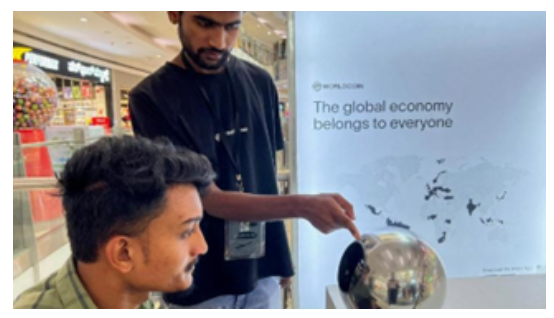
- Worldcoin is an initiative to create a digital network where individuals can claim a stake and join the digital economy.
- This venture runs on a simple model, allow your eyes to be scanned in order to prove your human uniqueness and receive some crypto and an ID (called a World ID) in exchange.
- Using a device called “Orb,” Worldcoin volunteers known as ‘Orb operators’ scan a person’s iris pattern to collect their biometric data and help them get a World ID through the World app.
- In exchange, participants receive a cryptocurrency called Worldcoin [WLD]. The goal is to build the “world’s largest identity and financial public network” accessible globally.
- This process is called “proof of personhood” and makes sure that people do not sign themselves up multiple times in exchange for crypto.
Key features:
- Worldcoin uses biometric data to ensure unique participation and avoid duplications. The company claims to use zero-knowledge proofs (ZKPs) to maintain users’ privacy and comply with Europe’s General Data Protection Regulation (GDPR).
- Worldcoin has been introduced in with Orb operators scanning people’s eyes at various locations in cities like Delhi, Noida, and Bangalore.
GEMINI Blood Test
In News: Recently, researchers have developed a new blood testing technology called GEMINI which uses genome-wide sequencing of single molecules of DNA combined with machine learning.
GEMINI (Genome-wide Mutational Incidence for Non-Invasive Detection of Cancer):
- This technology has the potential to enable earlier detection of lung and other cancers.
- The test starts by collecting a blood sample from individuals at risk of cancer. From this sample, cell-free DNA (cfDNA) shed by tumours is sequenced using cost-efficient whole genome sequencing.
- Cell-free DNA (cfDNA) refers to small fragments of DNA that are released into the bloodstream or other bodily fluids when cells in the body die and break down. These fragments of DNA are not enclosed within cells, hence the term “cell-free.”
- Single molecules of DNA are analyzed for sequence alterations, providing mutation profiles across the genome.
- A machine learning model then identifies changes in cancer and non-cancer mutation frequencies, generating a score indicating the likelihood of having cancer.
- In laboratory tests, the GEMINI test, when combined with computerized tomography imaging, detected over 90% of lung cancers, including early-stage diseases.
- The test also identified altered mutation profiles in cfDNA from patients with other cancers, such as liver cancer, melanoma, and lymphoma, suggesting broader applications.

Scrub Typhus - Edukemy Current Affairs
In News: Recently, the Health department has issued an alert against scrub typhus in Alappuzha.
About:

- Scrub Typhus is a life-threatening infection caused by Orientia tsutsugamushi bacteria which is a major public health threat in South and Southeast Asia.
- Spread: Through bites of Larval Mites of family trombiculid, also called Chiggers.
- It will not spread from person to person.
- Symptoms: fever, chills, headache, body aches, muscle pain, a dark scab-like region at the site of the chigger bite, enlarged lymph nodes, dry cough, skin rashes, red eyes and in some cases mental changes, ranging from confusion to coma.
- Treatment: Scrub typhus should be treated with the antibiotic doxycycline. Doxycycline can be used in persons of any age.
- There is no vaccine available for this disease.
- India is one of the hotspots with at least 25% of the disease burden.
|
Typhus |
|
Hepatitis - Edukemy Current Affairs
In News: World Hepatitis Day is observed recently.
About:
- The day is an opportunity to step up national and international efforts on hepatitis, encourage individual actions and engagement and highlight the need for a greater global response.
- 2023 Theme: 'We're not waiting' -- a call to people around the world to take action because Hepatitis Can't Wait.
Hepatitis:
- Hepatitis means inflammation of the liver.
- Problem causing agents: Heavy alcohol use, toxins, some medications, and certain medical conditions can cause hepatitis.
- However, hepatitis is often caused by a virus.
- There are five main strains of the hepatitis virus, referred to as types A, B, C, D and E.
- While they all cause liver disease, they differ in important ways including modes of transmission, severity of the illness, geographical distribution and prevention methods.
- In particular, types B and C lead to chronic disease in hundreds of millions of people and together are the most common cause of liver cirrhosis, liver cancer and viral hepatitis-related deaths.
- Some common risk factors associated with hepatitis infection, including:
- Poor sanitation and hygiene practices
- Consumption of contaminated food or water
- Being in contact with the infected person
- Having unprotected sex with an infected partner
- Sharing needles or other drug-injection equipment with an infected person
- Pregnant women and babies born to mothers with Hepatitis B
- Symptoms: Fatigue, Jaundice, Loss of appetite, Nausea and vomiting, Abdominal pain, Dark urine, Clay-coloured stools, Joint pain, Fever, Unexplained Weight Loss and Flu-Like Symptoms
- Treatment:
- Hepatitis A: Hepatitis A is a short-term illness and may not require treatment.
- Hepatitis B: There is no specific treatment program for acute hepatitis B.
- Hepatitis C: Antiviral medications can treat both acute and chronic forms of hepatitis C.
- Hepatitis D: The WHO trusted Source lists pegylated interferon alpha as a treatment for hepatitis D. However, this medication can have severe side effects.
- Hepatitis E: Currently, no specific medical therapies are available to treat hepatitis E. However, pregnant women who develop this infection require close monitoring and care.
- Autoimmune hepatitis: Corticosteroids, like prednisone or budesonide, are extremely important in the early treatment of autoimmune hepatitis. They’re effective in about 80 per cent of people with this condition.
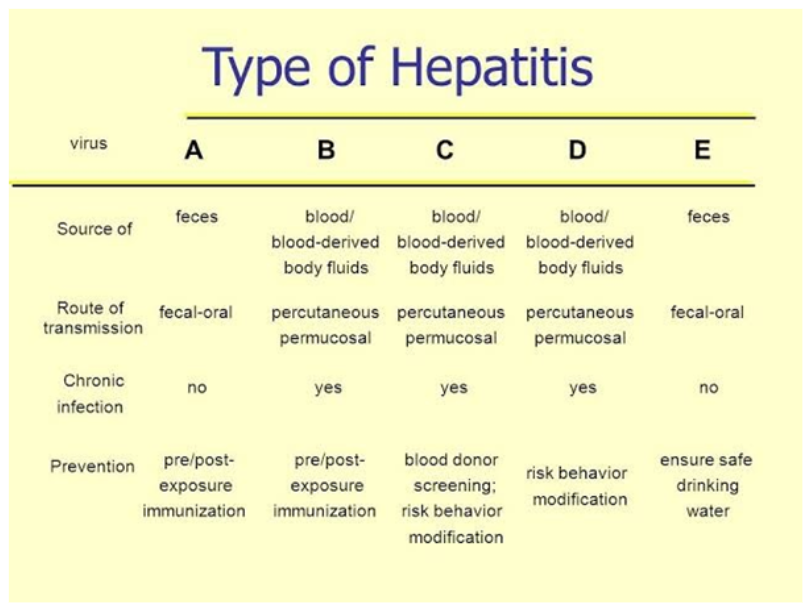
Post-quantum Cryptography - Edukemy Current Affairs
In News: There has been a lot of worry about quantum computing and its potential impact on computer security. Post-quantum cryptography involves exploring alternative techniques to counter vulnerabilities against quantum attacks.
About quantum computing:
- Modern digital computers are all based on the idea of making electricity do certain things using clever circuitry, and pretend that logical operations are occurring.
- When these circuits or gates are built using lasers, all new kinds of gates can be built in addition to the basic ones.
- The principles of quantum mechanics enabled a set of gates that were utterly impossible to build using electronics.
- In other words, using quantum states to represent logic (instead of high and low voltages) allows us to compute very differently.
- For example, one common classical gate is a “not” gate: this simply outputs the opposite of the input. On a quantum computer, one could have a “square root of not” gate.
- This new, different kind of computation is very powerful.
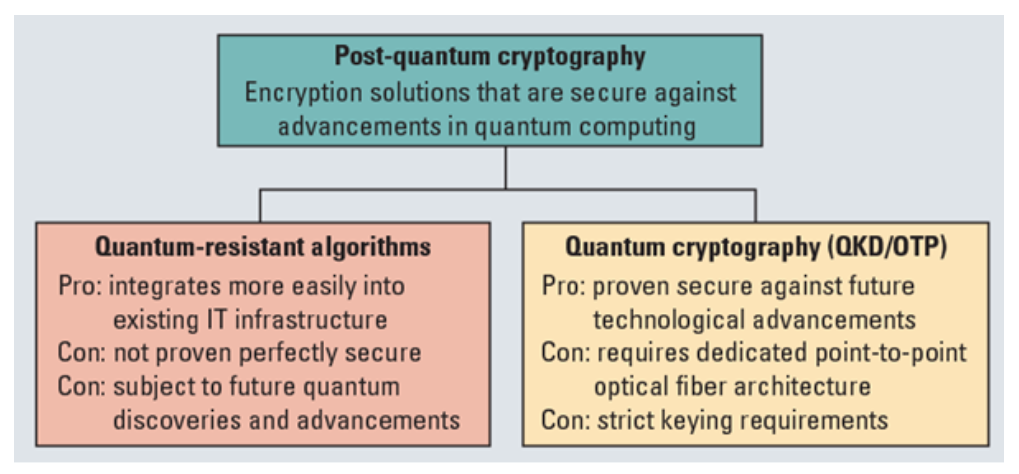
- Many things that were complex and cumbersome when run on electronic logic become incredibly simple on a quantum system.
What is the need for post-quantum cryptography?
- Governments and organisations across the world are rushing to develop quantum computing platforms and advanced security algorithms to defend against such machines.
- One prominent example of the latter is the U.S. National Institute of Standards and Technology’s Post-Quantum Cryptography Standardisation project.
- India has recently announced collaborations with the U.S. in quantum computing and launched the National Quantum Mission.
- Much of our current security is based on techniques such as RSA, elliptic curves, Diffie-Hellman key exchange.
- Unfortunately, in 1994, Peter Shor developed a quantum algorithm that (with certain modifications) can break all of these with ease.
- Quantum computing is a fast-changing field. One promising technique, supersingular isogeny Diffie-Hellman key exchange, was considered secure by many until it was utterly broken by Wouter Castryck and Thomas Decru last year.
- We are probably decades away from a quantum computer powerful enough to do anything meaningful or dangerous.
- However, it is important that we quickly and carefully transition to technologies secure against quantum attacks.
Ureilite - Edukemy Current Affairs
In News: Scientists discovers the Ureilite meteorite's role in the formation of the Dhala crater.
About Ureilite:
- Ureilite is an extraordinarily rare and ancient type of meteorite and constitute only a tiny fraction of all known meteorites on Earth.
- These meteorites are classified as a rare class of primitive meteorites and are composed of a silicate rock, primarily containing olivine and pyroxene minerals.
- They also contain less than 10% of carbon, in the form of either diamond or graphite, along with metal sulfides and some fine-grained silicates.
- The study of rare meteorite and their impacts offers insights into the early history and processes of our solar system.
- There is need for researchers to focus on further uncovering the secrets of ureilite impacts to better understand the dynamics of our infant solar system.
- In this regard, exploration of Dhala impact will help understanding possible role meteors in bringing water to Earth and its impact on the development of life on our planet.
Meteor impact:
- India has three ancient meteor impact craters: Ramgarh (Rajasthan), Lonar (Maharashtra), and Dhala (Madhya Pradesh).
- The Dhala impact structure was created when meteor crashed into Earth around 2500-1700 million years ago at an extraordinary speed of 15 km/s forming impact crater in Madhya Pradesh.
- The Ureilite meteorite responsible for the Dhala crater impact is estimated to be around one kilometer in diameter and is Asia's largest and the world's seventh-largest impact crater.
Trachoma - Edukemy Current Affairs
In News: Recently, World Health Organization (WHO) announced that Iraq has joined the league of 17 other countries that have eliminated trachoma.
About:
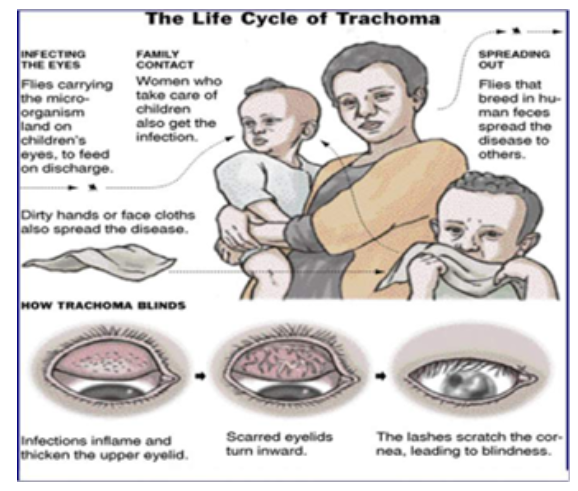
- Trachoma is a neglected tropical disease and the world’s leading infectious cause of blindness.
- It is a disease of the eye caused by infection with the bacterium Chlamydia trachomatis.
- Disease thrives in areas with water shortages, poor sanitation, and fly infestations.
- WHO recommends the SAFE strategy (Surgery, Antibiotics, Facial cleanliness, and Environmental improvement) to eliminate trachoma.
More Information:
- The WHO has recognized Iraq as the 50th country to eliminate at least one neglected tropical disease.
- Despite substantial progress, trachoma is still endemic in six countries in the WHO's Eastern Mediterranean Region.
- The 17 other countries that have eliminated trachoma are: Benin, Cambodia, China, Gambia, Ghana, Islamic Republic of Iran, Lao People’s Democratic Republic, Malawi, Mali, Mexico, Morocco, Myanmar, Nepal, Oman, Saudi Arabia, Togo and Vanuatu.
Nuclear Medicine - Edukemy Current Affairs
In News: Recently, India has expressed its support for South Africa’s Integrated Early Warning systems and Russia’s BRICS Collaboration in Nuclear Medicine.
About:
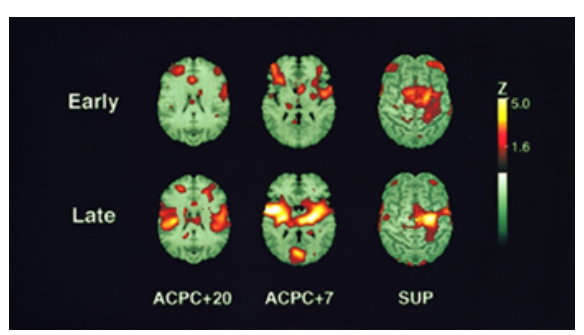
- Nuclear medicine uses radioactive material inside the body to see how organs or tissue are functioning (for diagnosis) or to target and destroy damaged or diseased organs or tissue (for treatment).
- It involves the use of small amounts of radioactive materials, known as radiopharmaceuticals, which are introduced into the body.
- These substances emit gamma rays that can be detected by specialized cameras to create images of organs and tissues.
- This imaging technique helps in diagnosing various conditions, such as cancer, heart disease, and bone disorders, by providing detailed information about the functioning and structure of internal organs.
- Nuclear medicine treatments involve using radioactive substances to target and destroy specific cells or tissues, such as cancer cells.
Eastern Equine Encephalitis - Edukemy Current Affairs
Eastern Equine encephalitis (EEE) virus has been reported in Alabama and New York, with serious implications for public health. Mosquito borne illness continue to pose a significant threat across various parts of the world.
Eastern Equine Encephalitis (EEE):

- It is an extremely rare but serious and often fatal infection that causes encephalitis or inflammation of the brain.
- It spreads to people and animals by the bite of an infected mosquito.
- It was first identified in horses in Massachusetts, United States, in 1831.
- It is caused by the Eastern Equine Encephalitis Virus (EEEV), which belongs to the genus Alphavirus and the family Togaviridae.
- EEE virus has a single-stranded, positive-sense RNA genome.
- The virus does not spread between humans or from animals like horses to humans.
- About 30% of people bitten by an EEE-infected mosquito develop encephalitis and die from the infection.
Symptoms:
- EEEV infections in humans can vary in severity. Many people infected with the virus do not develop any symptoms (asymptomatic).
- However, when symptoms do occur, they can include fever, headache, vomiting, diarrhea, and various neurological symptoms such as encephalitis (inflammation of the brain), which can lead to seizures, coma, and, in some cases, death.
- Severe cases are more common in infants and the elderly.
Treatment:
- Currently, there are no vaccines available to directly treat Eastern equine encephalitis.
- To mitigate the risk of infection, individuals are advised to take several precautionary steps, including avoiding mosquito bites by using repellents and wearing protective clothing.
Nikah Halala - Edukemy Current Affairs
In News: Muslim Law Board’s stand sought on nikah halala.
About
- “Nikah” and “Halala” both are Arabic terms where “Nikah” means Marriage and “Halala” means to make something halal or permissible.
- As per Muslim Law, a man cannot remarry his wife after he divorces her, unless the wife is married to another man and gets divorced from that man (second husband) or after the death of the second husband.
- The process of making the woman permissible for her first husband by giving her marriage to a third person with a pre-condition is known as Nikah Halala also known as Tahleel marriage.
- In this process, the third person consummates the marriage with the object to make the woman permissible for her first husband.
- There is no sanction in the Holy Quran for such marriages.

Casteism in Indian Society - Edukemy Current Affairs
In News: The task of decolonizing the Indian mind-set needs to be complemented with the task of de-casting the society. And the first step in this direction would be acknowledging the existence of caste in Indian society.
About Casteism in India:
- Casteism can be defined as a practice of systemic marginalisation, discrimination, unequal access to opportunities and hierarchical division of society on the basis of birth.
- The caste system is a social hierarchy in India originally based on a person's occupation and birth. It divides society into different groups called castes, which are further subdivided into sub castes.
- Decasting is a process which refers to the dismantling and eliminating of the entrenched caste-based discrimination, inequalities, and social hierarchies present in society. It involves challenging and overcoming the practices, biases, and prejudices associated with the caste system.
Steps taken to eliminate the practice of caste based discrimination:
- Constitutional protection: Prohibition of untouchability as enshrined in Article 17 and ensuring equality of opportunity and prevention of discrimination as established by Article 14 and 15 are some meaningful efforts to eliminate casteism.
- Legislations: Legislations like the Scheduled Castes and the Scheduled Tribes (Prevention of Atrocities) Act, 1989, provide protection against violence and discrimination faced by marginalised communities.
- Social Movements: Various social reform movements, led by activists, organisations, and leaders, have aimed to challenge and change traditional caste-based norms and practices.
- Affirmative action: Policies have been implemented to provide reparations to the historically marginalised sections of society in the form of reservation in educational institutes, employment and political representation.
Evidences of continued existence of caste based discriminations:
- Manual Scavenging: Despite prohibitions of manual scavenging, it is observed that mostly lower caste people are employed in this profession and the profession has been associated with their caste identity.
- Caste based politics: Caste based mobilisation during elections is a true depiction of the continued existence of casteism in the society.
- Hidden discrimination: Despite reaching to important constitutional positions, caste discrimination can be seen in inclusion of lower castes in closed groups such as clubs, elite institutions, intellectual spaces and media.
- Changing nature of caste identities where different caste groups are asserting their separate distinct identity in a more vocal way is creating caste fissures in the society.
- Credibility bias: Often lower caste doctors are avoided, lower caste engineers are searched to place responsibility for failure of projects etc. because of the societal bias against reserved category professionals.
Nutrition's Role in Tuberculosis Prevention
In News: New studies conducted by the Indian Council of Medical Research (ICMR) and published in The Lancet and The Lancet Global Health journals provide evidence that improved nutrition can significantly reduce tuberculosis (TB) incidence and mortality in India.
Tuberculosis:
- Tuberculosis (TB) is an infectious disease caused by the bacterium Mycobacterium tuberculosis.
- It primarily affects the lungs but can also affect other parts of the body.
- Transmission: It is an airborne infection that spreads through close contact with the infected, especially in densely populated spaces with poor ventilation.
- Symptoms: Common symptoms of active lung TB are cough with sputum and blood at times, chest pains, weakness, weight loss, fever and night sweats.
- Treatment:
- Anti-TB medicines have been used for decades and strains that are resistant to 1 or more of the medicines have been documented in every country surveyed.
- Multidrug-resistant tuberculosis (MDR-TB) is treatable and curable by using second-line drugs such as Bedaquiline.
- Extensively drug-resistant TB (XDR-TB) is a more serious form of MDR-TB caused by bacteria that do not respond to the most effective second-line anti-TB drugs, often leaving patients without any further treatment options.
- Status of TB in India and the world:
- As per the WHO Global TB Report 2022: India’s TB incidence for the year 2021 is 210 per 100,000 population (a decline of over 18% from 2020)
- India has a large burden of the world’s TB, with an estimated economic cost of US$100 million lost annually due to this disease.
- As per the WHO Global TB Report 2022, TB cases are attributable to five risk factors — undernourishment, HIV infection, alcohol use disorders, smoking and diabetes.
Major findings of the Studies:

- The Reducing Activation of Tuberculosis by Improvement of Nutritional Status (RATIONS) trial conducted in Jharkhand (the state has a high TB burden) revealed:
- Better nutrition among patients with lung TB can lead to a 39% reduction in all forms of TB and a nearly 49% reduction in infectious TB.
- Underweight TB patients who experience early weight gain can have their risk of mortality reduced by 60%.
- Nearly 30 households would need to be provided nutritional supplementation to prevent one case of TB.
Significance of the Studies:
- The trials’ findings are particularly significant as undernutrition has emerged as a leading risk factor for TB worldwide.
- These results could have policy implications and contribute to India’s goal of eliminating TB by 2025.
Teaching in the mother tongue - Edukemy Current Affairs
In News: Recently, IMF’s executive Director has called the CBSE’s decision a right call. Their Bhasha, Their Future- Research has shown teaching in the mother tongue leads to better skilling as well as a better grasp of English.
Efforts made by India to teach children in their mother tongue:
- Historical Efforts:
- Mahatma Gandhi believed that English as a primary medium created a divide between elites and the masses, hindering knowledge dissemination.
- Leaders like C Rajagopalachari, Bal Gangadhar Tilak, Gopal Krishna Gokhale, and Annie Besant stressed an Indian-controlled education system that values the country’s ethos.
- Government of India Efforts:
- The Central Board of Secondary Education (CBSE) issued a directive, emphasizing the use of the mother tongue for instruction and displaying its commitment to native language education.
- The National Education Policy also encapsulates the intent to promote mother tongue instruction.
UNESCO Findings on Mother Tongue Instruction:
- Global Advocacy: Since 1953, UNESCO has consistently promoted mother tongue education through its Global Education Monitoring Reports.
- Learning Impact: Being taught in a language other than one’s own can have negative effects on learning, especially for children from poor backgrounds.
- Duration Recommendation: At least six years of mother tongue instruction is necessary to reduce learning gaps for minority language speakers.
- Pedagogical Reasoning: A background study for the 2005 UNESCO report emphasized that mother tongue-based bilingual schooling is rarely challenged based on its educational logic.
Way Forward:
- Implement the CBSE’s directive to prioritize mother tongue instruction.
- Address challenges in teacher recruitment, curriculum development, and teaching materials to accommodate linguistic diversity.
- Government schools like Kendriya Vidyalayas and Navodaya Vidyalayas should lead in implementing mother-tongue instruction.
Paharis and Paddaris - Edukemy Current Affairs
In News: The government has brought a Bill to include four communities, namely, “Gadda Brahmin”, “Koli”, “Paddari Tribe”, and “Pahari Ethnic Group” in the list of Scheduled Tribes (STs) in Jammu and Kashmir.
About the Paharis and Paddaris:
- Pahari Ethnic Group:
- The Pahari Ethnic Group includes Hindus, Muslims, and Sikhs, with some Kashmiri-origin settlers in Rajouri and Poonch districts.
- The Advisory Board for Development of Pahari Speaking People defined Paharis as all people living in Rajouri and Poonch except those who were STs.
- Paddari Tribes:
- They live in the remote Paddar area of the hilly Kishtwar district. The Paddari homeland borders Zanskar (Ladakh) in the north and the east, Pangi in Himachal Pradesh in the south, and the rest of J&K in the west.
- The 2011 census recorded the Paddari population at 21,548, comprising 83.6% Hindus, 9.5% Buddhists, and 6.8% Muslims. The people of the area speak the Paddari language.
Issue with proposed bill:
- The proposed bill has been opposed by Gujjars and Bakerwals, the dominant ST communities in J&K, who apprehend that inclusion of Paharis and Paddaris would lead to shrinking of their share of the quota benefits pie.
- The Gujjar-Bakerwal are the third largest group after Kashmiris and Dogras in J&K, with a population of almost 18 lakh. They were given ST status in 1991, along with the two smaller groups of Gaddis and Sippis.
- This entitled these four communities to 10% reservation in government jobs and admission to educational institutions. In 2019, they were empowered politically after the Centre announced a 10% quota for them in Lok Sabha and Assembly seats in J&K.
- The Gujjar-Bakerwal oppose their inclusion in the ST list on the argument that they do not constitute a single ethnic group and are a mix of individuals from different castes and religions who speak a particular language.
Climate change contributes to violence against children
In News: In a recent study on the intersections of climate change, environmental degradation and violence against children found that climate change contributes to violence against children.
About the Study:
- It explored both direct violence — physical, sexual and emotional — and structural violence; that is, rooted in inequitable and unjust systems and institutions.
- It identified five themes: hazards and disaster risk reduction; gender; climate-induced mobility or immobility; child labour; and health.
Key Findings:
- Hazards and disaster risk reduction: Natural disasters create stressful environments, leading to higher risks of violence against children in relief shelters or at home. In post-disaster situations, children might be forced into labour for recovery efforts.
- Gender: The effects of climate change and environmental degradation are not gender neutral. Climate change can exacerbate child marriage in certain regions due to drought-induced economic pressures, affecting girls disproportionately.
- Mobility and Immobility: Climate migrants face increased risks of violence, and separation from families or caregivers makes children vulnerable. Immobility, as in slum areas, can lead to child abuse and violence. Fear of violence in shelters can lead women to remain at home after natural hazards, increasing children’s risk of harm from the hazard or other forms of violence.
- Child Labour: Natural disasters and climate-change-related industries (agriculture, mining, etc.) contribute to child labour, which can expose children to exploitation and violence.
- Health: As temperatures rise, infants will bear the greatest burden of malnutrition and rising food prices. Children will suffer most from the rise in infectious diseases. Climate-related mental health issues can lead to increased perpetration of violence against children, as eco-anxiety and fear of consequences contribute to domestic violence.
Way Forward:
- Understanding these interlinkages is essential for informing policies and interventions that can protect and support children, particularly those most vulnerable to the impacts of climate change and environmental shocks.
- Early warning systems should be installed for climate-related disasters that specifically consider children’s vulnerabilities.
- Provide Psychosocial support like counselling, therapy, and mental health services to help children cope with anxiety and stress.
- Focus on preventing child marriage, human trafficking, and gender-based violence exacerbated by climate change.
- Integrate climate change awareness and preparedness into school curricula to empower children with knowledge and skills to face climate-related challenges.
- Design and set up shelters that prioritize the safety and well-being of children during emergencies.

Children and Domestic Labour - Edukemy Current Affairs
In News: In a recent incident, a couple faced accusations of employing a 10-year-old girl as a stay-at-home caretaker for their 4-year-old son and abused her physically and mentally on multiple occasions.
About
- Child labour in domestic work refers to situations where domestic work is performed by children below the relevant minimum age (for light work, full-time non-hazardous work), in hazardous conditions or in a slavery-like situation.
- The International Labour Organization has highlighted specific hazards that pose a significant threat to domestic workers, with children in domestic service being particularly vulnerable.
- Most prevalent risks faced by children are extended and exhausting working hours, exposure to harmful chemicals, the burden of carrying heavy loads, handling hazardous objects like knives and hot pans, and inadequate access to nutritious food and proper accommodation.
- These dangers become even more severe when a child resides in the same household where they are employed as a domestic worker.
Status of Child Labour in India
- According to the National Crime Records Bureau Report of 2022, approximately 982 cases were reported in 2021 under the Child Labour (Prohibition and Regulation) Act of 1986. The state of Telangana had the highest number of registered cases, followed by Assam.
- A study conducted by the Campaign Against Child Labour (CACL) revealed a concerning trend: the proportion of working children among the 818 surveyed children surged from 28.2% to 79.6%. This increase was primarily attributed to the impact of the Covid-19 pandemic and the closure of schools.
- The states in India with the highest number of child labour employers are Uttar Pradesh, Bihar, Rajasthan, Madhya Pradesh, and Maharashtra.
Reason for the prevalence of Child Labour in India:
- Poverty and economic vulnerability: Many families in India live in poverty and struggle to make ends meet. Children may be forced to work in domestic settings to contribute to the family income, as their labor is often cheaper than that of adults.
- Lack of education: Limited access to quality education in certain regions results in a large number of children dropping out of school. Without proper education, they are more likely to engage in child labor, including domestic work.
- Informal and unregulated nature of domestic work: Domestic work is often carried out within private households, making it difficult for authorities to monitor and enforce child labor laws effectively. This informal nature also makes it challenging to identify cases of child labor and provide the necessary support.
- Traditional cultural norms: In some communities, it is seen as acceptable for children, especially girls, to work in domestic roles from a young age. Gender norms may perpetuate the idea that girls should stay at home and assist with household chores.
- Migration and urbanization: Rural-to-urban migration is common in India, and families often move to cities in search of better opportunities. However, the lack of affordable housing and basic services in urban areas may lead to vulnerable living conditions, which can increase the likelihood of child labor.
- Weak enforcement of child labor laws: India has laws in place to protect children from exploitative labor practices, but implementation and enforcement remain inconsistent in certain areas. This allows some employers to take advantage of child labor without facing consequences.
- Demand for cheap labor: Domestic work is seen as an inexpensive source of labor, leading some households to employ children as domestic help, perpetuating the cycle of child labor.
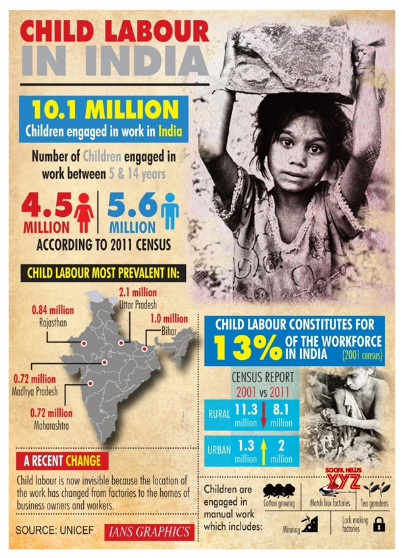
Socio-Economic Impact of Child Labour
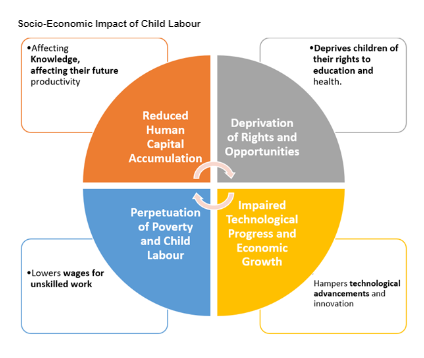
Seethakali folk art (Kerala) - Edukemy Current Affairs
In News: The Perinad Seethakali Sangham member group is all set to perform outside Kerala for the first time.
About:
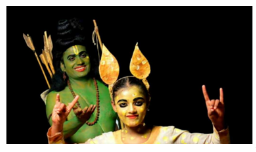
- Seethakali is a traditional folk-dance drama from Desinganad, Kerala, primarily during the Onam festivities.
- It is believed to have originated at Perinad in the Kollam district of Kerala.
- The performance is carried out by Dalit artists belonging to the Veda and Pulaya communities.
- The art form is based on certain episodes taken from the epic Ramayana.
- The performance portrays the tale of Sita’s journey, from vanayatra (exile to the forest) to Sita’s andardhanam (descend into the earth).
- Key Features:
- The art form is a blend of songs, storytelling and fast movements.
- It is accompanied by instruments such as ganjira, manikatta, chiratta and kaimani.
- The costumes and the make-up are loud and eye-catching.
- The characters of Rama and Laxmana appear in green since the color is used to represent gods and goddesses in Kathakali.
- Story conveyed through folk-style songs influenced by Vallappaattu Kuthirappaattu, and Rakshasappattu
- Includes key characters like Sita, Ram, Lakshman, Ravan, Hanuman
- Reason for decline: Seethakali songs were orally transmitted from one generation to the next, which led to a pause in the tradition.
FIDE Chess World Cup 2023 - Edukemy Current Affairs
In News: Recently, In the FIDE World Cup finals, Magnus Carlsen secured his first-ever title, defeating Indian chess prodigy R. Praggnanandhaa in Baku, Azerbaijan.
About:

- The World Cup 2023 is organised by the International Chess Federation (FIDE), the governing body of chess in the world.
- It's constituted as a non-governmental institution.
- FIDE currently has its headquarters in Lausanne (Switzerland), but it was initially founded in 1924 in Paris under the motto “Gens Una Sumus” (Latin for “We are one Family”).
FIDE World Cup:
- The FIDE World Cup, established in 2000 by the International Chess Federation (FIDE), encompasses various iterations.
- Since 2005, it’s been a 128-player single-elimination chess tournament, a vital part of the World Chess Championship qualification.
- The format includes 7 rounds of “mini-matches” with 2 games each, followed by rapid and blitz tiebreaks if needed. The final consists of 4 games before tiebreaks.
More About the News:
- Praggnanandhaa has become the second Indian after Viswanathan Anand to reach a World Cup final.
- Praggnanandhaa’s spirited performance earned him a spot in the prestigious Candidates Tournament, despite his loss.
- He achieved significant victories such as winning the World Youth Chess Championship (under-18) in 2019 and emerging victorious in the Asian Continental Chess Championship (open) in 2021.
More Information:
- World Chess Championship: It determines the world champion in chess. Ding Liren (China) won the 2023 championship, defeating Ian Nepomniachtchi, while Magnus Carlsen opted not to defend his title.
- Candidates Tournament: It has been organized by FIDE since 1950 and determines the challenger for the World Chess Championship. The winner faces the reigning World Champion. Historically held triennially until 1992, since 2013, it follows a 2-year cycle.
Vast megalithic site in Kerala
In News: A recent archaeological salvage excavation conducted by the State Archaeology Department at Nagaparamba, Kuttippuram village, near Tirunavaya, Kerala, has led to the discovery of a large number of megalithic hat stones.
About:
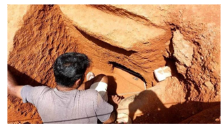
- Hat stones, popularly called Thoppikkallu in Malayalam, are hemispherical laterite stones that were used as lids on burial urns during the megalithic period.
Key Findings:
- The team found numerous megalithic burial sites and relics, including a unique rock-cut laterite burial chamber, during the pipeline work that prompted the excavation.
- This site yielded a large number of earthen urns and distinctive iron implements, shedding light on the culture and life of people who inhabited the area over 2,000 years ago.
- Ashes were discovered within the urns and beneath the hat stones, which is different from the more common occurrence of cremated bones. This suggests unique mortuary practices at this site.
Megaliths:
- Megaliths, large stones used to construct prehistoric structures and monuments, provide valuable insights into ancient civilizations and burial practices.
- These stones were either erected individually or in combination with others to create significant structures.
- They can be categorized into two main types: those used for burial purposes and those erected as commemorative memorials.
- In India, archaeologists trace the majority of the megaliths to the Iron Age (1500 BC to 500 BC).
- In India, these are concentrated in the states of Maharashtra (mainly in Vidarbha), Karnataka, Tamil Nadu, Kerala, Andhra Pradesh and Telangana.
Tirunavaya
- It is the land of ancient Mamankam.
- It is situated on the banks of Bharathapuzha river; it is a place of historical importance.
- In olden days, Mamankam a grand assembly of rulers was held once in 12 years here.
Ancient Mailara cult in coastal Karnataka
In News: The recent discovery of two sculptures, which resembles one belonging to 15th century A.D. and another to 17th century A.D., at Basrur, near Kundapura, in Udupi district has proved that the ancient Mylara cult existed in the coastal region.
Sculptures found:
- One sculpture was found in a well at Basrur and depicts a royal hero on a horse holding a sword and a bowl in his hands. This unique piece lacks the usual Mylaladevi figure on the horse’s back. The sitting posture of the horse is unusual and dates it to the 15th century A.D.
- The second discovery is a small stone tablet depicting Mailara and Mylaladevi both mounted on an ornate horse while holding swords in their right hands. This relief, found in a tank during dredging, is in side profile and appears to be from the 17th century.

Mailara Cult:
- The Mailara cult is a religious tradition centred around the worship of a folk deity named Mailara, who is believed to be a manifestation of Lord Shiva.
- This cult is prevalent in parts of southern India, particularly in the Deccan region, including Karnataka, Maharashtra, Andhra Pradesh, and Tamil Nadu.
- The cult has its own unique rituals, practices, and beliefs that have developed over time.
- Mailara is often associated with other regional deities like Mallanna in Andhra Pradesh and Khandoba in Maharashtra.
- The cult has a diverse following that includes people from various castes and occupations, ranging from agricultural and pastoral communities to martial groups.
Basrur:
- Basrur was a significant trading city during the Medieval period, with trading guilds like Uhayadesi and Nanadesi playing active roles.
- This environment fostered various cults, including the popular Mylara cult that was widespread in the Deccan region.
Karnail Singh Isru - Edukemy Current Affairs
In News: On India’s Independence Day, Punjab Chief Minister paid homage to activist Karnail Singh Isru, who died on the same day in 1955 while participating in the Goa Liberation Movement.
About:
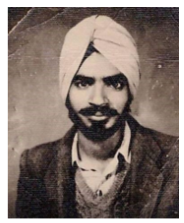
- Karnail Singh Isru was born on September 9, 1930, in the Chak 30 village of the Lyallpur district that is now in Pakistan.
- He joined the Communist Party of India (CPI) and became part of the Goa Liberation Movement, which aimed to hoist the Indian flag in Goa.
- Isru left his home to join the movement without informing his family and was part of a group of Satyagarhis led by Sahodrabai Rai.
- However, upon entering Patradevi village in Goa, Portuguese forces opened fire, and Isru was fatally shot in the chest at the age of 25.
- Goa was eventually annexed by India in 1961 through Operation Vijay.
|
Goa Liberation Movement: |
|
Matangini Hazra and Kanaklata Barua
In News: Recently, President Droupadi Murmu, during her address on the eve of Independence Day, paid tribute to women freedom fighters. She mentioned two notable figures – Matangini Hazra and Kanaklata Barua.
Matangini Hazra:
- She was born in 1869 in a village near Tamluk, West Bengal.
- She was married at a young age and became widowed by 18.
- After her husband’s death, she dedicated herself to social causes and became deeply involved in the Nationalist movement, supporting Mahatma Gandhi’s ideals.
- She participated in various protests, including the Civil Disobedience Movement and the Salt March.
- During the Quit India Movement in 1942, at the age of 73, she led a large procession of around 6,000 protesters, advocating for the takeover of the Tamluk police station.
- In the ensuing clash with British authorities, she was shot and killed.
Kanaklata Barua:
- She was a young martyr of the Quit India Movement.
- At just 17 years old, she led the Mrityu Bahini, a group of freedom fighters, in an attempt to hoist the Tricolour at the Gohpur police station in Assam on September 20, 1942.
- Despite her age, she was determined to lead the procession, and her brave efforts left a lasting impact.
- During the confrontation with the police, she was shot and killed while holding onto the flag.
- In 2020, a Coast Guard vessel was named after her as a tribute to her bravery.
Kirti Chakras and Shaurya Chakras
In News: President of India approves Gallantry Awards for Armed Forces and CAPF Personnel on the eve of the 77th Independence Day.
About Kirti chakras and Shaurya Chakras:
- Kirti Chakras:
- It is the second-highest peacetime gallantry award in India which is conferred for exceptional acts of bravery and sacrifice recognizing outstanding courage and selflessness in adverse situations.
- It is also awarded posthumously to individuals who sacrificed their lives for the greater good showing extraordinary dedication to duty and willingness to risk all.
- It has been awarded to Central Reserve Police Force personnel for anti-Naxal operation in Chhattisgarh (April 2021).
- This year, it has been awarded to four recipients, including Dilip Kumar Das, Raj Kumar Yadava, Bablu Rabha, and Sambha Roy.
- Shaurya Chakras:
- It is the third-highest peacetime gallantry award in India which honours exceptional acts of bravery and courage in non-operational circumstances.
- It is awarded to individuals either alive or posthumously from the Army, Jammu and Kashmir Police, and CRPF recognizing their valour and resolute spirit in challenging situations.
- These awards acknowledge acts of bravery that inspire and uplift society and motivates others to emulate the same level of courage and dedication.
- It also provides a platform to express national gratitude and pride besides encouraging a sense of duty and responsibility among armed forces and security personnel.
- Overall, Kirti Chakras and Shaurya Chakras highlight the human spirit's capacity to rise above adversity and danger, demonstrating the essence of true patriotism and heroism.
Tamil Palm manuscripts: Gnanamuyarchi
In News: Recently, Palm manuscripts from the 18th Century titled Gnanamuyarchi have been discovered in an Armenian monastery in Northern Itlay.
About:

- A manuscript is a handwritten or typewritten document, usually historical or literary in nature, before the age of printing. For example, ancient religious Sanskrit texts written on palm or birch leaf.
More in News (About Gnanamuyarchi)
- The manuscript could be a copy of the first Tamil translation of Spiritual Exercise, written by St. Ignatius of Loyola in the 16th century.
- The translation was mostly done by Michele Bertoldi, known in Tamil as Gnanaprakasasamy.
- The manuscript was initially misclassified as ‘Indian Papyrus Lamulic Language–XIII Century,’ unaware that they were written in Tamil.
- The monastery authorities think the manuscripts might have been brought to Italy by Armenians in Chennai.
Adichanallur archaeological site (Tamil Nadu)
In News: Recently, Union Finance Minister laid the foundation stone for the 'Iconic Site Museum' at the Adichanallur site.
About: 
- Adichanallur is an ancient and historical Iron-age burial site located in Thoothukudi District Tamil Nadu, set along the banks of the Tamirabarani (Porunai) river.
- It holds significance in showcasing the megalithic culture.
- It is one of the five sites selected as ‘Iconic sites’ in the budget 2020-21 for development.
- Other sites are Rakhigarhi (Haryana), Hastinapur (UP), Dholavira (Gujarat), and Shivsagar (Assam).
Other significant initiatives are:
- Development of ‘Panchtheerth’ sites based on Babasaheb Ambedkar’s life.
- Construction of the National War Memorial and National Police Memorial in Delhi
- Establishment of ten new Tribal Freedom Fighter Museums
- Heritage sites like Somnath and Kashi Vishwanath Temple have been revitalized.
- Tourism circuits under the Swadesh Darshan Scheme, such as the Buddhist, Ramayana, Coastal, Desert, and Himalayan Circuits, are being established.
- Over 3 lakh manuscripts containing over 3 crore pages have been digitized for knowledge preservation.
- Plans for a new National Museum in Delhi with 950 rooms spread across the North and South Blocks have been announced.
- ‘Pradhanmantri Sangrahalaya’ has been established to honour every Prime Minister of India since Independence.
Rath Yatra ,Puri , Odisha
In News: Recently, Panel for allowing ASI to carry out an inspection of Puri temple treasury during 2024 rath yatra.
About:
- During the upcoming 2024 rath yatra, the Jagannath Temple Management Committee has put forth a recommendation to permit the Archaeological Survey of India (ASI) to conduct an inspection of the Ratna Bhandar, which is the treasury of the 12th-century Jagannath Temple situated in Puri.
- This decision carries considerable weight as it comes in response to mounting pressure directed at the Odisha government to unlock the treasury. Inside the Ratna Bhandar, there is believed to be a collection of valuable jewelry and precious gemstones.
- Positioned along the eastern coastline of Odisha, the Jagannath Temple in Puri holds immense significance. It stands as a prominent Hindu temple dedicated to Jagannath, an incarnation of Lord Vishnu. The temple's construction was initiated by King Indradyumna of Avanti, reflecting the distinctive Kalinga architectural style. This construction endeavor reached completion in the year 1161 CE.
Jagannath Temple
- The origins of the temple can be traced back to the 12th century, attributed to the efforts of King Anatavarman Chodaganga Deva from the Eastern Ganga Dynasty.
- Recognized as the 'Yamanika Tirtha,' the Jagannath Puri temple holds a distinctive significance in Hindu beliefs. This designation stems from the notion that the presence of Lord Jagannath in Puri neutralizes the dominion of 'Yama,' the deity associated with death.
- Once referred to as the "White Pagoda," this temple holds a prominent place within the Char Dham pilgrimages, which encompass Badrinath, Dwaraka, Puri, and Rameswaram.
- The temple features four entryways: the primary entrance, known as the Eastern 'Singhdwara,' is adorned with a pair of reclining lions; the Southern 'Ashwadwara'; the Western 'Vyaghra Dwara'; and the Northern 'Hastidwara.' Each gate boasts intricate carvings corresponding to distinct divine forms.
- At the temple's threshold stands the Aruna stambha, also recognized as the sun pillar, originally located at the Sun Temple in Konark.

Aadi Perukku 2023 - Edukemy Current Affairs
In News: Recently, Tamil Nadu celebrated the Aadi Perukku 2023 festival.
About:
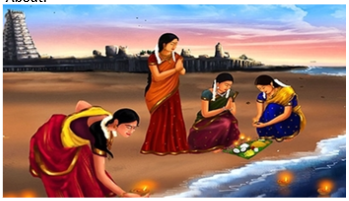
- Aadi Perukku is a significant festival celebrated in Tamil Nadu to express gratitude for the monsoon season and the life-sustaining properties of water.
- Aadi Perukku, is also known as Pathinettam Perukku.
- Falling on the 18th day of the Aadi month in the Tamil Calendar, this festival marks the onset of the monsoon season, which brings increased water levels to the rivers and benefits sowing and vegetation.
- It is considered the ideal time to sow, plant seeds and take up other forms of vegetation.
- During Aadi Perukku, people gather near the banks of rivers, especially the Kaveri River, to perform rituals and offer prayers.
- On this auspicious day, Mother nature is worshipped in the form of Amman deities.
UNESCO heritage danger list - Edukemy Current Affairs
In News: Recently, experts from the United Nations Educational, Scientific and Cultural Organization (UNESCO) have stated in a new report that the Italian city of Venice should be added to a list of world heritage sites in danger.
About:
- Venice has been grappling for years with too many tourists and the effects of climate change.
- The city has been grappling with these issues for years, leading to deterioration and damage to its cultural and environmental attributes.
- Kyiv and Lviv in Ukraine are also recommended to be put on the danger list this year.
List of World Heritage in Danger:
- The United Nations Educational, Scientific and Cultural Organization (UNESCO) compiles the list of World Heritage in Danger.
- The list highlights a number of UNESCO World Heritage Sites which are threatened due to factors like armed conflict and war, earthquakes and other natural disasters, pollution, poaching, uncontrolled urbanisation and unchecked tourist development.
- UNESCO also sets certain guidelines and criteria under the 1972 World Heritage Convention, which decide, whether or not, a property is faced with specific and proven imminent danger or threat.
|
UNESCO |
|
GI Tags of Tamil Nadu - Edukemy Current Affairs
In News: Recently, Tamil Nadu’s Jaderi ‘namakatti’, chedibutta saree and Kanniyakumari Matti banana got GI tag.
About:
- Geographical Indication or GI is a tag used on products, natural or man-made, associated with a particular region or geographical location in a country.
- GI tag can be given to a wide range of products – agricultural, handicraft, foodstuff, or manufactured goods.
- GI tag is an acknowledgment of the intellectual property of the product.
Jaderi namakatti:
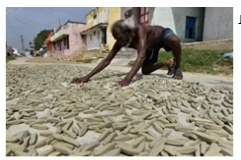
- Clay sticks with white colour, finger-like shape, and smooth texture.
- Made by Jaderi Tiruman (Namakatti) Producers Society in Jaderi, Tiruvannamalai district.
- Place/Origin: Village of Jaderi, Tamil Nadu
Kanniyakumari Matti banana:
- Traditional table banana with medicinal value, highly fragrant, sweet with a sub-acid flavour, and powdery nature.

- Place/Origin: Kanniyakumari district, Tamil Nadu
Chedibutta saree:
- Handloom saree made from art silk and cotton mix fabric, featuring the iconic “plant and flower” motif on the border and pallu.
- Woven by skilled Sowrashtra weavers.
- Place/Origin: Veeravanallur town, Tirunelveli, Tamil Nadu
More Information:
- In addition to these, seven other products from different regions of India (Agra leather footwear, Rajasthan’s Nathdwara Pichhwai Painting, Kashmir’s Mushqbudji rice, Bihar’s Marcha Rice, Jammu Kashmir’s Rajouri Chikri Wood Craft, Agsechi Vayingim (Agassaim Brinjal) of Goa, Sat Shiro Bheno (Sat Shirancho Bhendo) also known as Okra, is a vegetable crop of Goa) also received GI tags.
SDCs to Promote Tribal Culture
In News: Recently, The Odisha government has implemented the Special Development Councils (SDCs) initiative to preserve and promote tribal culture while ensuring economic development.
About:
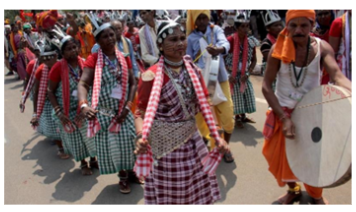
- The Odisha government launched the Special Development Councils (SDCs) initiative in 2017 for preserving, promoting, and popularising tribal culture.
- This is an active effort to preserve the culture and heritage of 62 tribes in the State under one umbrella.
- The scheme, which covered nine tribal-dominated districts has now been expanded to 23 districts covering more than 84 lakh tribal people.
- The SDCs focus on identifying and promoting important cultural markers of tribal identity, such as language, sacred groves, and tribal artisans.
- Over 21 tribal proficiency centres have been established to educate about tribal culture and dialect.
- More than 4,500 sacred groves are being conserved.
- Artisan ID cards have been issued to over 40,000 tribal artisans to preserve culture and create employment opportunities.
- Ensuring cultural context is considered in the development projects.
Hazrat Imam Hussain (626 to 680 AD)
In News: Recently, PM Narendra Modi recalled the sacrifices made by Hazrat Imam Hussain (AS) on the occasion of Ashura.
About:
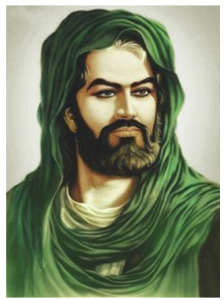
- Hazrat Imam Hussain was a grandson of the Islamic prophet Muhammad and a son of Ali ibn Abi Talib and Muhammad’s daughter Fatima.
- He is the third Imam of Shia Islam after his brother, Hasan, and before his son, Ali.
- He is highly revered for his stand against injustice and tyranny.
Ashura:
- It is a significant day in the Islamic calendar, observed on the 10th day of Muharram.
- It marks the martyrdom of Hazrat Imam Hussain and his followers in the Battle of Karbala in 680 CE.
- Significance:
- The annual commemoration of Ashura is a time for Muslims to reflect on the teachings of Imam Hussain and the values he stood for.
- It is an occasion for renewing the commitment to the principles of justice, compassion, and human dignity that Imam Hussain sacrificed his life for.
- It holds deep religious and spiritual significance for Muslims, especially the Shia community.
Growth with Indian characteristics
Exam View: Status of the Indian Economy; People’s welfare and their quality of life; Raising per capita incomes.
Context: India has registered the highest growth rate amongst G20 countries, surpassing China’s for two successive years. The real challenge for the government is to raise per capita incomes and for politics to jettison competitive populism.
Decoding the editorial: Status of the Indian Economy
- India has ascended from being the 10th largest economy in the world in 2014 to the 5th largest in 2023.
- As per the International Monetary Fund (IMF), India is currently the fifth largest economy with a GDP of $3.7 trillion
- The IMF also projects that India will be the third-largest economy by 2027.
- By 2027, India’s GDP is likely to be $5.2 trillion, while the US will be at $31.1 trillion and China at $25.7 trillion.
- IMF’s historical data shows that India took six decades (1947 to 2007) to cross the one trillion-dollar GDP mark in 2007 ($1.2 trillion).
- But thereafter, it took India just seven years to become a $2 trillion economy in 2014.
- It added another $1.2 trillion by 2021.
- If India hits the IMF’s projected figure of $5.2 trillion by 2027, it would be adding a whopping $2 trillion in just six years.
- India has registered the highest growth rate amongst G20 countries, surpassing China’s for two successive years.
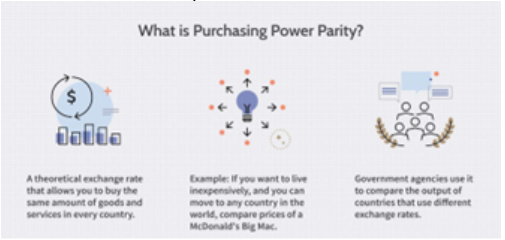
- Measuring GDP on a PPP basis shows that India already has the third highest with a GDP of $13 trillion (PPP), with China at the top and the US is second.
People’s welfare and their quality of life
- It can be inferred from the per capita GDP in PPP terms.
- PPP conversion ratios can vary widely across countries, as price levels of goods and services could differ significantly.
- India’s conversion ratio from dollar to PPP is 3.5, which is almost twice that of China at 1.7.
- For example: If a US dollar can buy a burger in its home country, the currency can buy 3.5 burgers in India and 1.7 burgers in China.
- India’s per capita income is the lowest in G20 countries in both dollar ($2,601) and PPP terms ($9,073).
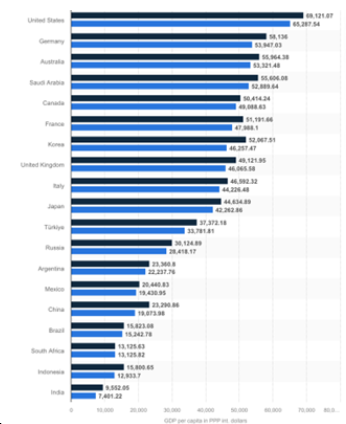
-
- China’s one-child family policy from 1981 to 2016 has given our neighbour the dividend of raising per capita GDP to $23,382 PPP, while the US sits at the top with a per capita GDP of $80,035.
Raising per capita incomes
- India needs to raise agri-productivity and give farmers access to the best agri-markets.
- This would help raise their incomes and help fulfil the vision of doubling farmers’ incomes.
- This would require doubling investments in agri-R&D, irrigation, rural infrastructure, and liberalising agri-markets, both domestic and foreign.
- The resources to do all this can be generated by rationalising various subsidies, especially food and fertiliser subsidies at the central level, and power subsidy at the state level.
- People have to move from low-productivity jobs to high-productivity jobs.
- India needs to invest heavily in the education and skill development of rural people to build new cities and undertake massive construction activities like homes, hotels, hospitals and schools.
- Urbanisation experts remind us that almost 75 percent of New India is yet to be built.
- It will require new skills and millions of people will have to move from rural areas to build New India.
- It will be accompanied by high-productivity jobs in manufacturing and services.
- China followed this developmental pathway. If India has to grow on a sustainable basis, it may have to follow a similar path with Indian characteristics.
The only visible challenge to this seems to be our competitive populism in politics in the run-up to elections. The promised freebies are nothing short of a “bribe for votes”. The Supreme Court and/or Election Commission need to check these freebie promises to ensure meaningful democracy.
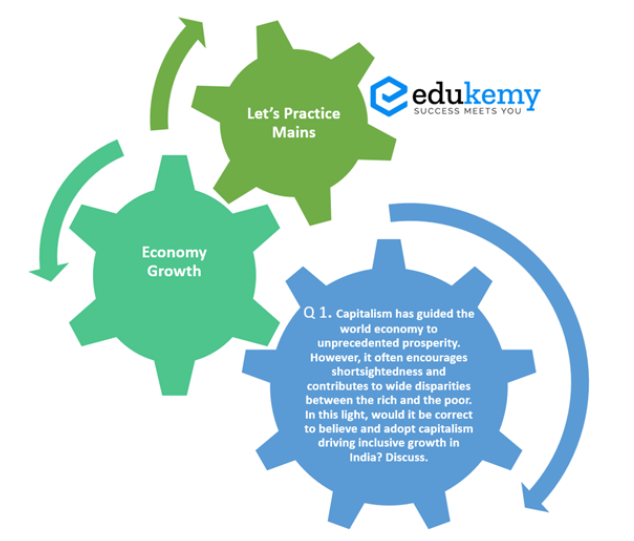
Can AI be ethical and moral? - Edukemy Current Affairs
Exam View: Use of AI in governance; Ethical challenges; Categories of machine agents.
Context: Programming ethics into machines is complex, and the world must proceed cautiously with Artificial Intelligence
Decoding the editorial: Use of AI in governance
- Increasingly, machines and Artificial Intelligence (AI) are assisting humans in decision-making, particularly in governance.
- Several countries are introducing AI regulations.
- Government agencies and policymakers are leveraging AI-powered tools to analyse complex patterns, forecast future scenarios, and provide more informed recommendations.
- In some countries, decision-making algorithms are even being used to determine the beneficiaries of social sector schemes.

- Programming ethics into a machine and AI is even more complex.
Ethical challenges
- Inherent challenges in translating human moral complexity into algorithmic form:
- Isaac Asimov’s ‘Three Laws of Robotics’ were designed to govern robotic behaviour, aiming for ethical actions, but within Asimov’s fictional world, the laws lead to unexpected and often paradoxical outcomes.
- The attempts to codify ethics into rules, whether for robots or complex AI-driven governmental decision-making, reveal the inherent challenges in translating human moral complexity into algorithmic form.
- Threat to the capacity for moral reasoning:
- Immanuel Kant’s ethical philosophy emphasises autonomy, rationality, and the moral duty of individuals.
- Applying Kantian ethics to the use of AI in decision-making within governance could lead to serious concerns.
- If decisions that were once the purview of humans are delegated to algorithms, it could threaten the capacity for moral reasoning.
- The person or institution using AI could be considered to be abdicating their moral responsibility.
- Skewed or unjust outcomes:
- The biases inherent in AI are often a reflection of the biases in the data they are trained on or the perspectives of their developers.
- It can represent a significant challenge in the integration of AI into governance.
Despite this, it is inevitable that AI would be used in governance decisions.
Categories of machine agents
- In Moore’s 2006 classification, four categories of machine agents relating to ethics are defined.
- Ethical impact agents: machines with ethical consequences, like robot jockeys, which don’t make ethical decisions but pose ethical considerations, such as altering the sport’s dynamics.
- Implicit ethical agents: machines with embedded safety or ethical guidelines, such as a safe autopilot system in planes, which follow set rules without actively deciding what is ethical.
- Explicit ethical agents: machines which go beyond set rules, using formal methods to estimate the ethical value of options, like systems that balance financial investments with social responsibility.
- Full ethical agents: machines which are capable of making and justifying ethical judgments, including reasonable explanations. An adult human is a full ethical agent, and so would be an advanced AI with a similar understanding of ethics.
- A wide body of literature suggests that machines can, in some sense, be ethical agents responsible for their actions, or autonomous moral agents (AMAs).
- It is not that easy to create AMAs, especially the third and fourth because:
- A peer-reviewed paper published in Science and Engineering Ethics found that from a technological standpoint, artificial agents are still far from being able to replace human judgement in complex, unpredictable, or unclear ethical scenarios.
- Bounded ethicality:
- Hagendorf and Danks (2022) fed prompts to Delphi, a research prototype designed to model people’s moral judgments.
- They found that similar to humans, machines like Delphi may also engage in immoral behaviour if framed in a way that detaches ethical principles from the act itself.
- This suggests that human patterns of moral disengagement could translate into machine-bounded ethicality.
- Moral disengagement is a key aspect of bounded ethical decision-making, allowing people to act against their ethics without guilt through techniques like moral justifications.
Eventually, governments would delegate a few rudimentary decisions to the machines. But there are several challenges that still need to be considered like who would be responsible for immoral or unethical decision making or the notion of punishing the AI system becomes problematic, as it lacks the ability to experience suffering or bear guilt.
Source: https://www.thehindu.com/opinion/op-ed/can-ai-be-ethical-and-moral/article67227803.ece
Caste has no Place in a Modern Democracy
Exam View: Caste-Based Discrimination; Safeguards against Caste-based discrimination; Relevant data.
Context: Political dispensation has little impact on crime rates, highlighting the need for effective prosecution to combat caste crimes.
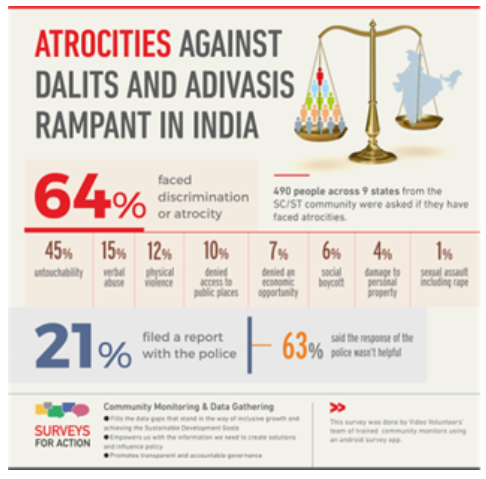 Decoding the editorial: Caste-Based Discrimination
Decoding the editorial: Caste-Based Discrimination
- An enduring paradox of independent India has been crimes against Dalit communities.
- Despite the rising economic and political heft of caste-marginalized groups, violence against them spans the length and breadth of India.
- Regional specificities exist, as do differences in the strategies employed by various states to fight them.
- Any reboot of a national strategy to curb such cases will need to learn from these nuances.
Safeguards against Caste-based Discrimination
- Constitutional Provisions:
- Article 15: The State shall not discriminate against any citizen on the basis of religion, race, caste, sex, place of birth or any of them.
- Article 16: No citizen shall be disqualified for any office under the State on the basis of religion, race, caste, sex, descent, place of birth or any of them.
- Article 335: Provides that the claims of the members of the SCs/STs shall be taken into account, along with the maintenance of efficiency of administration, in the making of appointments to services and posts in connection with the affairs of the Union or of a State.
- Article 330 and Article 332: Reservation of seats for SCs/STs in the Lok Sabha and State legislative assemblies.
- Constitutional Bodies:
- National Commission for Scheduled Castes.
- National Commission for Scheduled Tribes.
- Statutory Provision:
- Scheduled Castes and the Scheduled Tribes (Prevention of Atrocities) Amendment Act, 2018.
Relevant data
- Madhya Pradesh (MP) had the highest crime rate against people belonging to Scheduled Castes (SCs) in 2021.
- The state also had the highest crime rate against SCs in 2020, and was ranked second (behind Rajasthan) in 2019.
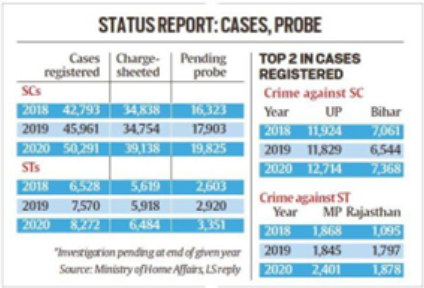
-
- The rate at which charge sheets were filed was higher in MP than in most Indian states. Its neighbour, Rajasthan, was far lower on this aspect, highlighting that state police needed to do a lot more.
- The data holds two takeaways.
- When it comes to crimes against Dalits, the political dispensation in power appears to have little impact.
- MP was ruled by two different regimes in the past four years, but this appears to have had little impact on crime rates.
- There is no obvious correlation between administrations run by the BJP or the Congress, and a rise or dip in caste crimes.
- While states should strive to prevent such crimes, the least they can do is to effectively prosecute them (as MP has sought to).
- When it comes to crimes against Dalits, the political dispensation in power appears to have little impact.
Caste crimes are a result of impunity and deep prejudice. If social attitudes are sedimented, governments have a duty to spur change by effectively prosecuting such crimes, underlining that in a democracy, caste bias has no space.
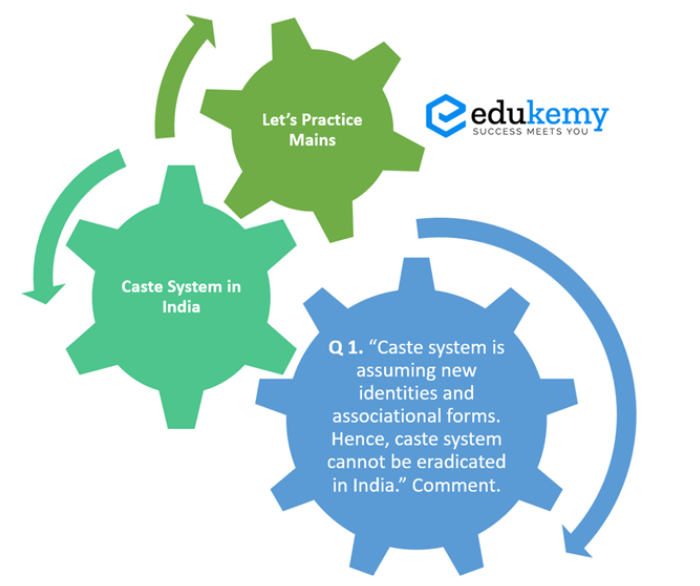
Nuh clashes - Edukemy Current Affairs
Exam View: Communal tension in the region; Classic pattern in the ways of the administration; Nuh: A study in unprofessional law enforcement.
Context: Law enforcement agencies mishandled communal violence in Nuh, Haryana, showing bias and inadequate response. After the communal violence, Rapid Action Force (RAF) has been deployed in sector-57 near Tigra Village to maintain law & order, in Gurugram, India
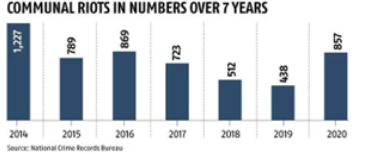
Decoding the editorial: Communal tensions in the region
- The protests against cow vigilantism only mounted after the brutal killing of Junaid and Nasir in Rajasthan’s Bhiwani district earlier this year.
- Many first information reports (FIRs) of mob violence against cow vigilante groups were registered.
- Most of the victims in these cases were Muslims; but the police inactivity in many of these cases fuelled a general impression that administrative action in these cases was not only inadequate but full of communal prejudice.
Classic pattern in the ways of the administration
- The violence always initially begins as a clash between communities, but over time, morphs into a fight between the groups and the police.
- The riots break out in an apparently spontaneous moment, but, later, it transpires that preparations were going on for quite some time.
- Finally, at the end of the day, minority communities are left with the perception that the State did not do what it was supposed to do, or in some cases, did what was constitutionally inappropriate.
Nuh: A study in unprofessional law enforcement
- The response and reaction in Nuh of Haryana’s police force, which is supposed to be better equipped than most other state forces in the country and is responsible for safeguarding law and order in regions of rapid economic growth, was found wanting.
- The first response of the administration was poorly planned and inadequate, and its subsequent inaction smacked of bias.
- Pre-planning failure:
- The usual police practice is to discourage any religious procession, especially in communally sensitive areas. Here, it was allowed.
- For any procession, the timing, route, number of participants, slogans to be raised, or weapons to be carried, are meticulously documented.
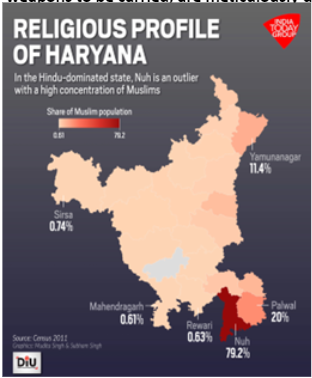
-
- On occasions such as this, leaders of communities reach a certain understanding in the presence of police officers and magistrates and assure the local authorities to abide by it in writing.
- It is unclear if any such steps were taken in Nuh, where the police appeared to have been taken by surprise by the widespread use of firearms late into the night on the first day of violence.
- Also, provocative videos were in circulation for many days, without any response from the local authorities.
- Botched response:
- Certain visuals appeared in which policemen were seen hurling stones. This is not unusual in the situation they were in.
- A large hostile mob was roughly 100 yards away from them and was pelting stones and other projectiles; with the police were two useless weapons, a cane and a gun.
- The hail of stones didn’t allow them to move closer, making their canes ineffective, and guns couldn’t be used against supposedly unarmed citizens.
- So, they responded by throwing back the stones, to keep the hooligans away.
- But there were other civilians seen in these visuals, standing next to the police and also throwing stones. Other videos showed both sides with guns.
- Many instances of mob violence of a communal nature start as a fight between Hindus and Muslims, but soon transform into a conflict between the police and Muslims.
- Some sections of the police, which should have played the role of neutral referees, instead become part of a warring group.
- Similarly, the role of the administration is also suspect.
The violence in Nuh holds a lesson that we must learn urgently because such instances can throw a spanner in the works of making India into a $5 trillion economy.
India’s hunger challenge
Exam View: India’s growth story; Way forward: Gender-led development.
Context: Accelerating economic growth and making it more inclusive, coupled with an increase in farm productivity, can help end malnutrition
Decoding the editorial: India’s growth story
- Reduction in poverty
- When India got freedom more than 80 percent of people were in extreme poverty, which today hovers around 15 percent as per MDPI and about 11 percent based on income criterion ($2.15 PPP).
- But the pace of reduction has been much faster since 2005-06 than at any time in the past.
- India seems to be on track to almost abolish poverty in the next five to 10 years.
- As per the Multidimensional Poverty Index (MDPI) by NITI Aayog, in the last five years, from 2015-16 to 2019-21, the government has lifted 135 million people out of poverty.
- As per the UNDP, India lifted 415 million people out of poverty (MDPI) over the period 2005-06 to 2019-21.
- Green Revolution
- It turned India from a “ship to mouth” economy to the largest exporter of rice.
- It has also enabled India to give free rice or wheat (5kg/month/person) to more than 800 million people under the PM Garib Kalyan Yojana, thus improving their economic access to basic staples.
- White Revolution
- It helped India emerge as the largest producer of milk (222 MT), with the US coming at number two with just 102 MT of milk production.
- Gene revolution in cotton
- It was triggered by the then PM’s decision in 2002 to introduce Bt cotton, making India the largest producer of cotton (39 million bales in 2013-14, up from just 13 million bales in 2002-03).
- Liberalisation, Privatisation and Globalisation post-1991
- Its biggest achievement that can be seen today is in foreign exchange reserves that hover around $600 billion, up from a meagre $ 1.4 billion in July 1991.
- This has made the Indian economy much more resilient to any external shocks.
- In the absence of this, India could have been in a similar crisis as some of our neighbours like Pakistan and Sri Lanka.
- Malnutrition is still on the table
- Although India made reasonably good progress in reducing infant mortality from 57 per 1,000 in 2005-06 to 35 per 1,000 in 2019-21, the progress on other indicators of malnutrition is not very satisfactory.
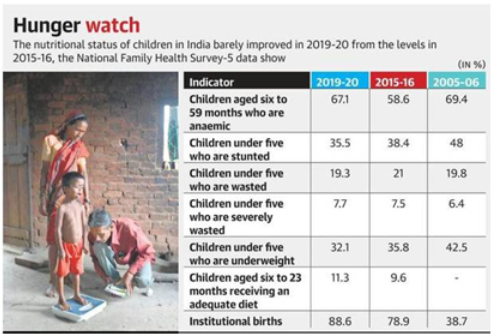
-
- On top of this, climate change and the increasing frequency of extreme weather events, from heat waves to flash floods, pose a big challenge not only to India’s food system but also poverty alleviation gains could reverse with these shocks.
Way forward: Gender-led development
- Providing necessary skills to women.
- India is giving training to women in 15,000 self-help groups, and these women will fly drones for agriculture use.
- If implemented, India could be at the top rank in women-driven drones.
- Increasing women’s participation rate in our labour force (age group 15-59 years).
- It is pitiably low at about 30 percent (2021-22).
- Incentivise and improve the access and quality of education for women.
- This can be done through liberal scholarships, especially after 10th grade to Master’s level.
- This can give high returns, limiting family size and contributing significantly to the nation’s growth story.
- Research has found that women’s education beyond 12th grade is a key determinant of nutrition amongst children, as is access to better sanitation and more nutritious food.
- Improve productivity in agriculture while making food more nutritious and the food system more climate resilient.
- This will require doubling or even tripling R&D expenditures in agriculture to make abundant food available at reasonably competitive prices.
- Putting export controls and stocking limits to push prices down is no solution.
- The Punjab Agriculture University which played a yeoman’s role in spreading the Green Revolution, and still ranks at the top, can be roped in to usher in a new revolution of sustainable growth and more nutritious food in agriculture.
Big concerns over big cats - Edukemy Current Affairs
Exam View: Tiger Survey; Karnataka’s tiger population; The growth is skewed; Challenges in Karnataka.
Context: Tiger numbers and density are high in Bandipur and Nagarahole in Karnataka. An increase in the tiger population could escalate the man-animal conflict.
Background: Tiger Survey
- The latest survey on tiger population have been published by
- the Karnataka Forest Department, based on camera trap images, and
- the all-India figures published by the National Tiger Conservation Authority (NTCA), based on direct and indirect evidence apart from camera trap images.
- These figures indicate that the number of big cats has grown in Karnataka.

- According to the NTCA status report, Karnataka has the second highest number of tigers (563) after Madhya Pradesh (785).
Decoding the editorial: Karnataka’s tiger population
The growth is skewed
- The Bandipur and Nagarahole reserves together account for 290 out of the 563 tigers in the State.
- In the Bandipur Tiger Reserve, tigers have been protected ever since the inception of Project Tiger 50 years ago.
- Bandipur was brought under protection by the maharajas as early as in 1941 when 800 sq km of forest was designated as the Venugopal Wildlife Park.
- Nagarahole, too, has enjoyed such protection since the 1950s.
Challenges in Karnataka
- High prey base: Some argue that a high prey base will reduce the range of the resident tigers and their propensity to stray into human habitats.
- Experts have cautioned against artificial intervention or habitat manipulation in order to augment the population of tiger prey.
- They say that an increase in tiger density beyond the carrying capacity of the habitat could adversely impact the population of other co-predators such as leopards and dholes, which are equally important to conserve.
- Man-animal conflict: Any further increase in the tiger population may escalate the man-animal conflict, which is especially high in habitats with elephants.
- Local communities in these habitats suffer crop damages (by elephants) and human deaths (due to tiger and elephant attacks).
- Threat to livestock: There are 136 villages in a radius of 1 km around Bandipur and nearly as many villages around Nagarahole with a large livestock population.
- Livestock are easy prey for tigers lurking in the forest fringes.
- Strengthening corridor: This is another long-term challenge in Karnataka.
- Protecting potential tiger habitats with low densities and strengthening corridor connectivity will facilitate the dispersal of tigers in ranges where the forests are contiguous.
- Case in point: The Malai Mahadeshwara Hills Wildlife Sanctuary
- It is spread over 906.18 sq km and is said to be ideal as a sink to absorb the surplus tiger population.
- This sanctuary was mooted as a tiger reserve.
- The Malai Mahadeshwara Hills Wildlife Sanctuary is linked to the Cauvery Wildlife Sanctuary in Karnataka to its north and east, the Sathyamangalam Tiger Reserve in Tamil Nadu to its south, and the BRT Tiger Reserve in Karnataka to its west.
- It is therefore considered vital for securing the future of tigers in the State.
- The NTCA supported the proposal on the grounds that additional inviolate space could be created for the dispersal of both tigers and prey.
- But political compulsions before the Karnataka Assembly elections forced the Bharatiya Janata Party government to put the proposal on hold.
Providing a viable wildlife habitat and creating additional space for tigers calls for ensuring strict implementation of Eco Sensitive Zone rules, reducing anthropogenic pressure on existing habitats, taking the local populace into confidence and allaying their fears of displacement. All of this requires both political and administrative will.
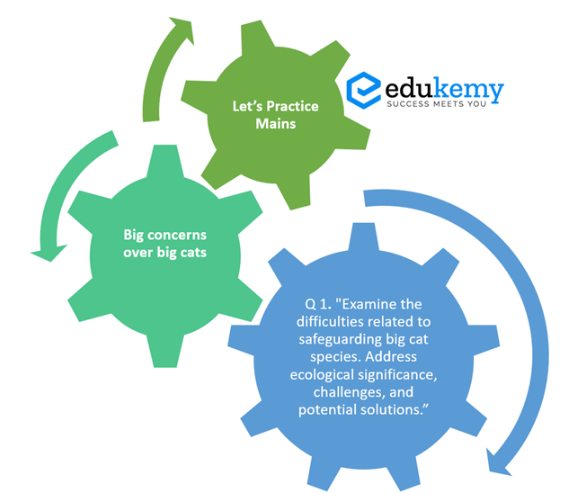
Source: https://www.thehindu.com/opinion/op-ed/big-concerns-over-big-cats/article67141397.ece
Net zero lessons from Bhutan - Edukemy Current Affairs
Exam view: Net Zero Emissions; UN Climate Change Conference (COP21) in France; Stupendous achievements of tiny countries; Case study of Bhutan.
Context: Forests are part of Bhutan’s sacred cultural heritage, and the government follows a climate-smart forest economy.
Decoding the editorial: Net Zero Emissions
- The World Economic Forum reported in December last year that eight countries, Bhutan, Comoros, Gabon, Guyana, Madagascar, Niue, Panama, and Suriname, had reached net zero emissions, as per collated research from Energy Monitor.
- This meant that these eight countries had become carbon sinks, absorbing more carbon dioxide (CO2) than they emitted.
- Bhutan’s forests may be small, but they are in no way insignificant.
UN Climate Change Conference (COP21) in France
- In 2015, 196 Parties entered into the Paris Agreement, a legally binding international treaty on climate change.
- The goal of the agreement was to hold the increase in the global average temperature to well below 2°C above pre-industrial levels and to limit the temperature increase to 1.5°C above pre-industrial levels.

- Yet, according to research, by 2030, the world will still be emitting 50 Giga-tonnes of carbon dioxide, with greenhouse gas (GHG) emissions growing rapidly.
Stupendous achievements of tiny countries
All these countries are committed to sustainability and have strict environmental protection policies in place.
- Comoros, in the Indian Ocean, is a poor and densely populated country, yet it has low emissions from agriculture, fishing, and rearing livestock and follows strict environmental protection policies.
- Madagascar’s economy, too, is that of agriculture and fishing.
- However, large-scale deforestation might change all this.
- Gabon, in Central Africa, is fortunate to be blessed with the Congo rainforests, which act as a carbon sink.
- It is committed to non-deforestation and sustainable management of its natural resources.
- The UN has even called Gabon a model of environmental conservation.
- Guyana, on the northern coast of South America, is surrounded by the Amazon rainforest, another carbon sink. And so is the small Amazon nation of Suriname.
- Niue, in the South Pacific Ocean, has a small population, and fishing, agriculture, and tourism are its main economies.
- Panama, another net zero emitter, is blessed with rainforests and has a low population.
- The government here plans to reforest 50,000 hectares of land by 2050.
Case study of Bhutan
- According to media reports, Bhutan charges a $200 sustainable development fee per day to tourists, doubling the cost for visitors.
- A small price to pay for eco-tourism and protecting the environment.
- It has protected natural parks and runs on hydropower, and tourism is its main economic activity.
- With a population of 800,000 and 70 percent of its land covered by forests, Bhutan practises sustainable organic farming and forestry.
- It is the first nation in the world to reach net zero emissions.
- Forests are part of Bhutan’s sacred cultural heritage, and the government follows a climate-smart forest economy.
- Smart forest management helps minimise GHG emissions, encourage wildlife, limit forest fires, and sustainably manage forest produce for wood, fruit, and rubber, thus creating a circular economy.
- Bhutan’s forests had shrunk to 60% in 1990 due to excessive logging, but with strict laws and a systemic crackdown on illegal timber operations, forest coverage grew to 71% in just a decade.
- The country has launched a few pilot projects as a testbed for sustainable timber construction solutions.
- There are challenges of maintaining a climate-smart forest economy, especially when demand outstrips supply.
- There’s a danger of degradation and deforestation, as has happened to some of the rainforest nations earlier.
In India, Sikkim aims to become carbon negative with the initiative of planting 100 saplings for every newborn. A Forest Department study stated that 112 government schools in Chandigarh had become carbon negative as part of an effort to make Chandigarh carbon neutral by 2030.
Source: https://www.deccanherald.com/opinion/net-zero-lessons-from-bhutan-2647602
Climate change and women in agriculture
Exam View: Climate Change; Women’s role in agriculture; Climate Change’s impacts on women; Way forward.
Context: Women constitute a significant force in global agriculture, accounting for around 43 percent of agricultural labourers. Changing weather patterns and extreme events deeply impact women’s roles in agriculture.
Decoding the editorial:
Climate Change
- Its roots lie in anthropogenic greenhouse gas emissions from activities such as fossil fuel combustion and deforestation.
- Its far-reaching effects disrupt ecosystems, with agriculture being especially vulnerable.

- Altered precipitation patterns, shifting growing seasons, and increased extreme weather events challenge established farming practices and livelihoods.
Women’s role in agriculture
- In countries like India, where subsistence farming is prominent, women constitute 33 percent of the workforce and nearly half of self-employed farmers.
- Their roles span from crop cultivation and livestock rearing to food processing and marketing.
- Despite these vital contributions, women grapple with barriers such as cultural norms, limited resource access, and unequal decision-making power.
- Changing weather patterns and extreme events deeply impact women’s roles in agriculture.
Climate Change’s impacts on women
- Decreased productivity:
- Variability in rainfall and prolonged droughts lead to reduced crop yields, jeopardising food security for farming-dependent households.
- Floods and extreme weather events can devastate crops and infrastructure, compelling women to prioritise family care and alternative income generation.
- This potential shift away from farming can contribute to decreased agricultural productivity, as women have traditionally been integral to on-farm operations.
- Reduced incomes:
- The economic implications of climate change for women in agriculture are substantial.
- Diminished crop yields translate to reduced incomes.
- Increasing gender inequalities:
- Diminished incomes exacerbate existing gender inequalities.
- Discriminatory cultural dynamics:
- Climate change also influences cultural dynamics and gender roles within agricultural communities.
- Cultural norms and discriminatory practices hinder women’s access to land ownership, a critical asset in agriculture.
- Women’s lack of control over assets restricts their access to credit, loans, and insurance, rendering them vulnerable to climate-induced losses.
- Disproportionate effects of water scarcity:
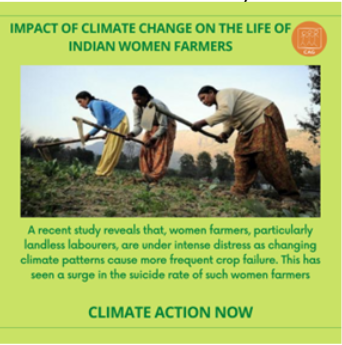
-
- Water scarcity, a climate change consequence, disproportionately affects women who often bear the responsibility of water collection.
Way forward
Women’s expanded responsibilities can challenge traditional norms, leading to shifts in perceptions of their roles.
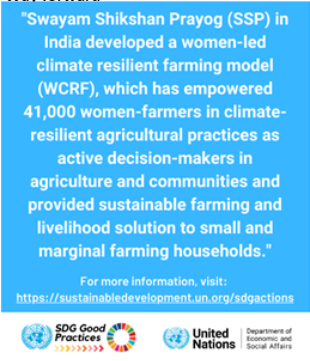
-
- Women farmers need to adopt adaptive strategies, including income diversification and cultivating climate-resilient crops.
- These strategies enhance their resilience in the face of the evolving agricultural landscape.
- Recognising women’s unique challenges in agriculture, gender-responsive policies are pivotal for effective adaptation.
- Governments and organisations must ensure equal resource access, credit availability, and decision-making power for women.
- Land tenure reforms that prioritise women’s rights and insurance mechanisms tailored to their needs can bolster resilience against climate-induced risks.
In conclusion, the intricate relationship between climate change and women in agriculture demands a comprehensive approach to adaptation. Women’s vulnerabilities underscore the need to address their specific challenges.

Himalayan blunders - Edukemy Current Affairs
Exam View: Incidents of disaster in the Himalayas; The Chardham Mahamarg Vikas Pariyojna of 2016; Unanswered questions, violations; Saving the Gangotri, need for regulation.
Context: India’s Himalayan region is being destroyed by greed outstripping the need along with manipulative political, bureaucratic and real estate lobbies.
Decoding the editorial: Incidents of disaster in the Himalayas
- Blocked roads after a landslide at Chamoli
- Sinking in Joshimath in Uttarakhand,
- Road caving in Chamba in Himachal,
- Accidents on the Char Dham routes, and
- Deaths on the all-weather road

The Chardham Mahamarg Vikas Pariyojna of 2016
- It has destroyed natural resources.
- The project has claimed lakhs of trees and acres of forest land, many human and animal lives, and also the fertile topsoil of the fragile Himalaya.
- The tons of muck generated have choked water sources.
- The dense forests around Chamba, Agrakhal Maletha, Shivpuri, Rudraprayag, Chamoli, Agustmuni, Karnaprayag and Kund (all Uttarakhand) and other such lush green sites are vanishing.
- Only one pristine patch, i.e., the Bhagirathi Eco Sensitive Zone (BESZ), remains.
- A massive infrastructure project of road widening to double-laning with a paved shoulder (DLPS) design.
- It has become infamous for bypassing the rules.
- By law, a project of more than 100 km needs environmental clearance.
- But ambitious projects for tourism and plans that are the result of election agendas are time bound.
- The mandatory and detailed EIA was not done.
- This massive project was broken up into 53 small projects, each less than 100 km long, thus by-passing environmental impact assessment (EIA) requirements.
- BESZ has the only natural free flow that is left of the Ganga river and was declared a protected site in December 2012 under the Environment Protection Act, 1986.
- This stretch of approximately 100 km could not be touched by the Chardham Mahamarg Vikas Pariyojna project without an approved zonal master plan (ZMP) and a detailed EIA.
- To facilitate the Chardham Mahamarg Vikas Pariyojna, the ZMP was given hasty approval, negating the directions of even the Supreme Court of India.
- The BESZ monitoring committee’s approval was overseen by most of the State officials on the committee without any discussion or suggestions being made.
- Before the monsoons, the Uttarakhand government increased the carrying capacity of all the Char Dhams.
- The carrying capacity for the Gangotri shrine (i.e., BESZ) was increased to 9,000 passenger carrying units per day even though the BESZ notification calls for a “regulation of vehicular traffic”.
- Experts have repeatedly pointed out that the Chardham shrines of Uttarakhand are already overburdened.
Unanswered questions, violations
- By widening hill roads to DLPS alignment, the Ministry of Road Transport is only contradicting its own notification.
- It states the challenges that come to the fore in adhering to the DLPS standards in the context of national highways and roads in hilly and mountainous terrains.
- These challenges arise on account of destabilisation of hill slopes and progressive damaging effects on road alignments and structures.
- It goes on to recommend the carriageway width shall be of intermediate lane configurations.
- The Supreme Court Bench headed by Justice R. Nariman reprimanded the Ministry and directed implementation of its own notification “prospectively and retrospectively” in September 2020.
- The government produced the reason of “national security” even though when the Chardham Mahamarg Vikas Pariyojna was announced, only the core reason of “faster” movement of vehicular traffic was stated.
- Eventually, a Bench headed by Justice D.Y. Chandrachud in December 2021 permitted the government to do whatever it desired.
Saving the Gangotri, need for regulation
- Conservation of the Gangotri glacier
- It is one of the most challenging issues for the Ganga’s rejuvenation
- The Gangotri glacier is the fastest receding glacier.
- With an increase in vehicular movement and episodes of forest fires, black carbon deposits are rising on the glacier, escalating its melting.
- Tailored fit approach
- For such sensitive regions, the Parliamentary Standing Committee on Science and Technology, Environment, Forests and Climate Change has pointed out to the Ministry of Environment, Forest and Climate Change that a one size fits all approach to environment clearance should not be followed.
- Ecologically sensitive areas of the country require a more meticulous approach with the only aim of furthering the environmental interests rather than economic interest.
Perils of Unplanned Urbanization
Exam View: Urban Flooding; Loss of water bodies; Way forward; Case study: Mangalore; Case study: Kaikondrahalli Lake in Bengaluru.
Context: In the past few weeks, Delhi, Ahmedabad and Mumbai have been flooded. Other major cities like Hyderabad (in 2000), Srinagar (in 2014), Chennai (in 2021) and Bengaluru (in 2022) have also seen some areas being submerged during heavy rainfall.
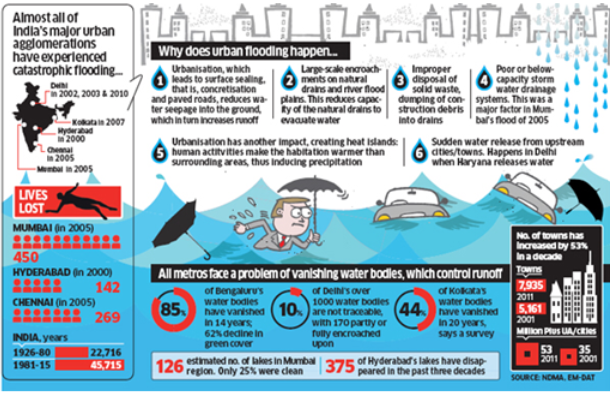
Decoding the editorial: Urban Flooding
Loss of water bodies
- Most Indian cities are situated beside a river, with extensive floodplains and wetlands. In an ideal world, such areas would have been left untouched.
- Instead, India has lost 40 percent of its wetlands in the past 30 years.
- Delhi had 1,000 waterbodies in 1997, but now has just 700. With such a loss of natural “blue infrastructure”, flooding risks have increased.
Way forward
Cities must take lead on climate change, rather than simply reacting to untoward events.
- Urban planning has to improve.
- In Delhi, a range of civic agencies manage the city’s drains, leading to coordination challenges.
- The DDA, Delhi Jal Board, Public Works Department, and municipal corporations, all regulate water bodies in Delhi.
- Coordination between agencies must improve.
- Revamping and expanding drainage and stormwater networks across cities is needed.
- Existing pipelines need to be surveyed (whether drain or stormwater), and water-logging locations identified.
- Investments in city-wide databases that enable the provision of immediate relief in the event of a flooding-related disaster.
- Investments needs to be done in early warning systems (including Doppler radar).
- Local rainfall data can be integrated with the Central Water Commission and regional flood control efforts.
- Short, medium and long-term measures to rejuvenate water bodies
- Studies must be conducted in all cities to understand the catchment area and flooding risk associated with urban water bodies and land use.
- Lake and river management plans should be defined and include the participation of the local citizenry in upkeep and a push to remove encroachments.
- Geographic information systems (GIS) may be used to tag local water bodies, to help keep track of encroachments and understand their seasonality.
- Awareness about wetland/water body conservation must be improved.
- The Wetland Authority of Delhi recently received requests to delist waterbodies from institutions like the Delhi Development Authority, highlighting limited awareness.
- A well-defined urban water policy must be prepared.
- Regulatory bodies like the Central Wetland Regulatory Authority can be granted statutory powers, while participation of local communities is welcome.
- Civic participation must be encouraged.
Case study: Mangalore
- Until the mid-2000s, in Mangalore, wastewater from urban consumption would flow through open drains and into the city’s water bodies, polluting the freshwater sources.
- The Mangalore City Corporation (MCC) established wastewater treatment plants and offered to supply treated effluent to Mangalore Special Economic Zone Ltd (MSEZL) to meet its industrial need, with MSEZL-based private players pitching in with sourcing for 70 percent of operations and maintenance costs of the pumps and the sewage treatment plant.
Case study: Kaikondrahalli Lake in Bengaluru
- It suffered from severe sewage inflow, with silting and land formation due to eutrophication.
- Meanwhile, encroachment on the lake bed was a cause for concern, along with the dumping of debris and waste.
- BBMP sought to adopt a community-driven approach to reviving the lake in a phased manner as funds came by.
- Encroachers were served eviction notices, and the lake was secured.
- Sewage inflow was diverted away via a tapping pipeline.
- De-silting of the lake was conducted.
- Further restoration was carried out by developing inlets and outlets for the lake and creating embankments and a pathway around the waterbody.
- The original DPR was rather engineering-focused, pushing for creating gardens and fencing off the lake from the local underprivileged communities.
- Citizen engagement ensured that the DPR was modified, with a push for improving the local ecology, instead of mere aesthetics.

Rural poverty declines, but lifestyle issues emerge
Exam View: NITI Aayog’s Multidimensional Poverty Index (MPI); Points of concern.
Context: The rural economy is looking up, but substance abuse, addiction to social media and waste disposal have become areas of concern.
NITI Aayog’s Multidimensional Poverty Index (MPI)
- It captures the progress of the country in three equally weighted dimensions
- health,
- education and
- standard of living.
- The Progress Review 2023 reveals a steep decline in the proportion of population in multidimensional poverty, from 24.85 percent to 14.96 percent between 2015-16 and 2019-21.
- This means that about 135.5 million persons have exited poverty between 2015-16 and 2019-21.
- The Intensity of Poverty (extreme poverty in common parlance) has also reduced from 47.14 percent to 44.39 percent.
- Scenes from aspirational villages of Bundelkhand region of Uttar Pradesh

-
- In rural areas, the number of ‘pucca’ or semi-pucca houses has increased manifold.
- Almost everyone has a cellphone, mostly smart ones.
- Motorbike, and not the bicycle, is the most common means of transport.
- Village shops are well stocked with consumer goods of various brands.
- Girls are going to schools, and no marriage happens without DJ systems and videography.
- These changes are welcome and corroborate the facts pointed out in the Review, that the incidence of poverty fell from 32.59 percent to 19.28 percent in rural areas between 2015-16 and 2019-21.
- However, there are certain concerns which need deliberations.
Points of concern
- Addiction to tobacco/gutka/liquor is on rise.
- Unfortunately, there are hardly any villages where liquor is not available, legally or illegally.
- This is having an adverse impact on people’s ability to work.
- Acute shortage of labour.
- Large scale migration from rural areas to urban or semi-urban areas is creating ghost villages.
- Farming, especially vegetable cultivation, takes a hit because of labour shortage.
- Farmers seem to be losing interest in agriculture and more and more land is coming under ‘lease’ arrangement, which often results in lesser investment and hence, lesser productivity.
- Addiction to the ‘phone’.
- People of all ages are spending a huge part of their day on various social media apps.
- It is taking a serious toll on physical and mental health of the rural populace, damaging the social fabric in villages and resulting in crimes against women and Scheduled Castes.
- This is also leading to various misinformation campaigns and spreading of ‘afwaah’ at times.
- Cleanliness and hygiene.
- The Swacch Bharat Mission has resulted in the building of toilets in homes, but filth and squalor in common areas of villages continue to be an issue.
- Disposal of waste is still at a nascent stage in villages.
More employment opportunities near villages, curbing the availability of tobacco products and liquor, awareness campaigns on the ill-effects of spending too much time on the Internet, and launching of Swachh Abhiyan 2.0 with focus on waste management at the village level could be the way forward. It is time to move forward on the social front also and work on personal lifestyle aspects of the people to make economic upliftment more wholesome and meaningful.
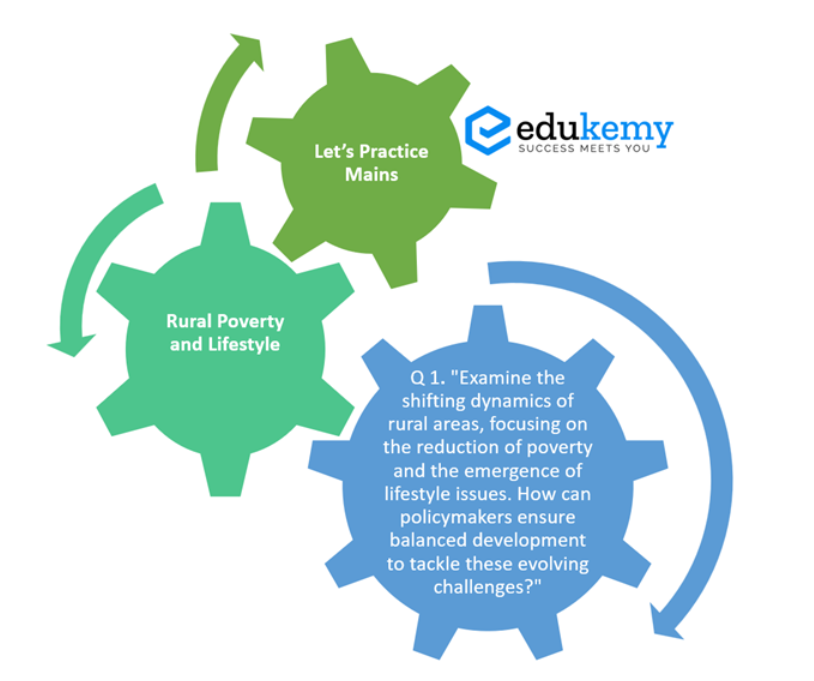
Seeds for growth - Edukemy Current Affairs
Exam View: Indian agriculture; Challenges; The Indian seed industry; Seed Technology.
Context: New seed technologies supported by scientific validation and enabling regulatory mechanisms offer significant advantages for sustainable agriculture at little additional cost.
Decoding the editorial: Indian agriculture
Challenges
- Coarse cereals, pulses, oilseeds, and vegetables
- The demand for these has not fully been met.
- They are not affordable for a large part of the population.
- All this has led to a high proportion of the under or malnourished population, with a sizable percentage of child wasting (19.3 percent).
- Increasing profitability in agriculture.
- Increasing share of exports in the world market.
- Closing the gap between potential and achievable productivity in most grain crops and vegetables.
- Reducing the cost of production.
- Promoting cultivation and consumption of nutritionally-rich crops like millets.
- Focusing on the quality of the agricultural produce.
- Depleting natural resources, a burgeoning population, extreme weather conditions and natural disasters because of climate change.
The Indian seed industry
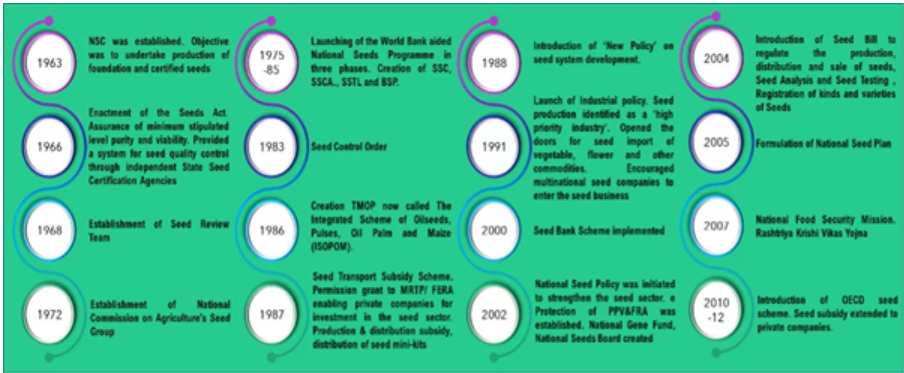
- The focus of the seed industry should be:
- To promote varieties and technologies to combat the serious threats posed by climate change.
- To effectively utilise every available technology including traditional knowledge in agriculture.
Seed Technology
- R&D efforts of the public and private sectors can complement each other in developing environment-friendly, better-performing seeds at affordable costs.
- The cost of seed is typically ~3 to 6 percent of the total cost of production, though it can contribute up to 15-20 percent yield advantage over and above the genetic potential under different cultivation conditions.
- The use of farm-saved seed, which was estimated to be >60 percent even a decade ago, is reducing considerably.
- An encouraging trend of public-private partnership (through licensing agreements) has emerged in the last 10 to 15 years.
- This has improved both Variety Replacement Rates (VRR) and Seed Replacement Rates (SRR) in field crops and vegetables (ISC, 2023).
- In this scenario, sustainable seed technologies, available with the private sector can further boost the planting value of seeds.
- Crop variety development will become faster and more precise in the coming years by using technologies. These technologies would comprise:
- Genetic manipulation in variety development, subject to regulatory compliances.
- Priming or physiological advancement protocols
- These are especially beneficial in agro-eco-regions that frequently experience moisture, temperature, and other abiotic stressors, or are prone to diseases and pest damages.
- Such treatments can work independently or complement the genotype of the seed in a manner that enhances its overall performance.
- Film coating, pelleting with or without active formulations
- Incorporation of pesticide formulations through film coating on seed can reduce the amount and cost substantially and provide better protection during germination and vegetative growth stages.
- Seed treatments with biologicals, or chemical pesticides having contact or systemic mode of action.
- Bio-stimulants and nutrients for higher germination and faster seedling establishment.
- Incorporation of AI responsive sensors/substances in seed to help modulate plant responses to external stimuli; and
- Production of “clean and green” planting materials in horticultural crops.
- Supportive regulatory guidelines will go a long way in the adoption and popularisation of seed technologies.
- “Next Gen” technologies may also introduce AI-based responses from seeds, which will require appropriate guidelines for application.
- The Fertiliser (Inorganic, Organic or Mixed) (Control Order, 1985, has been amended to Fertiliser (Inorganic, Organic or Mixed) (Control) Amendment Order, 2021 now includes bio-stimulants, which is an important component in seed-enhancement technology.
- Modifications are needed to include coated/pellet seed under the Certified Seed (CS) category.
- At present coated seeds can be sold only as Truthfully labelled (TL) seed.
- New seed technologies supported by scientific validation and enabling regulatory mechanisms offer significant advantages for sustainable agriculture at little additional cost.
- A robust regulatory mechanism covering quality seedlings and planting materials is needed under the newly proposed “Clean Green Mission” by the Government of India as part of its G20 commitment to “Green Development”.
The Indian government, quite rightly, is promoting technology-enabled sustainable farming, including natural, regenerative and organic systems, during its G20 presidency.
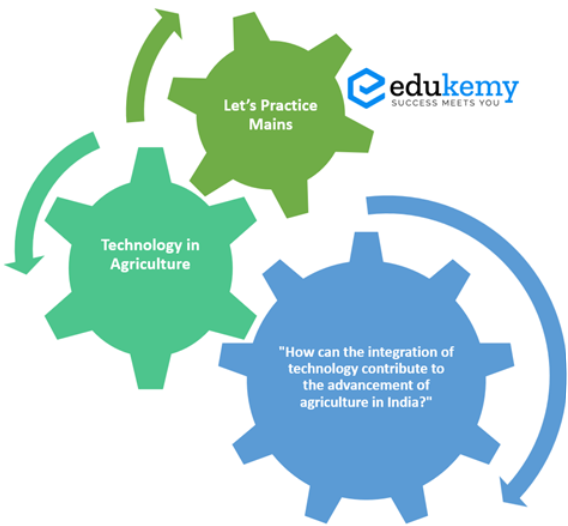
Geo-economics in a new age of geopolitics
Exam view: Use of rupee for international payments; Challenges; Agreements in the past; A new financial architecture.
Context: Currencies of the South are ready to replace the hegemonic order enjoyed by currencies of the North. That India is a favoured trading partner, has been quite evident, since March 2018 when 23 advanced and developing countries agreed to have currency swap arrangements with India.
Decoding the editorial:
Use of rupee for international payments
- Russia-India agreement
- When it comes to the modalities, payments from either India or Russia now go to the Rupee Vostro accounts, opened in Russian banks by the authorised dealer banks in India, which take care of settling payments between the two countries.
- An alternative route was chosen to settle payments between India and Russia by using the Indian rupee in transactions related to trade between the two countries.

-
- The Ukraine-Russia war began in early 2022 led to sanctions imposed by the United States and the European Union on Russia.
- Rupee-Dirham agreement
- It is meant to cover transactions in trade, remittances and capital flows.
- The process will help to avoid exchange risks for both trade partners and save, for India, dollar payments for its imports of crude oil and minerals from the UAE.
- In addition the agreement provides for interlinking their payment and messaging systems.
- It makes for quick and cost-effective transfers of money for an estimated 3.5 million Indian community in the UAE, an 18% share in terms of the total remittance flows into India.
- Negotiations are on with Indonesia to launch a similar agreement using the rupiah for transactions with India.
Challenges
- Russia continuing with a trade surplus
- The sum in 2020-21 amounted to $3.42 billion, followed by similar surpluses in the following years.
- Russia is reluctant to hold more of the Indian rupee as an asset in the Vostro account.
- The sanctions prevent some Russian banks from making or receiving international payments using SWIFT.
- The rupee has a low rank in the global currency hierarchy
- It may be subject to depreciation.
- Arranging for payments on Russia’s reluctance
- The options were few, with the dollar or the Euro not permissible or by purchasing the rouble at an exchange rate which is too volatile in the market.
- Indian refiners for instance have settled some payments for Russian oil imports using the Chinese yuan, which seems to be acceptable to Russia.
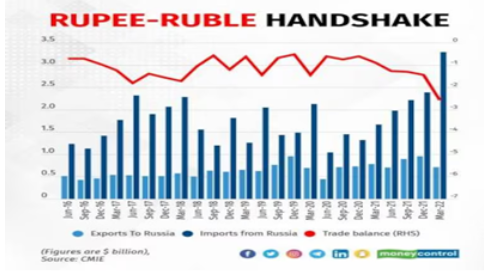
-
-
- This is in the backdrop of Russia selling oil to China and accepting yuan payments.
-
Agreements in the past
- India had initiated similar bilateral trade and clearing arrangements in the 1950s.
- This was a major tool used in conducting trade with the former Soviet Union and countries in the Soviet bloc.
- It began in the 1950s, with the Soviet Union setting up a steel plant in Bhilai, defying the opposition from western nations.
- Problems similar to concerns now
- The choice of a suitable currency to settle trade surpluses when the Soviet Union began having trade surpluses on a consistent basis.
- The floating of the dollar in 1971 led to a turmoil in the currency market.
- The Balkanisation of the former Soviet Union left Russia standing separate.
- The India-Soviet Agreement had a natural ending at that stage.
A new financial architecture
- Problems in the past, in settling payments on trade surpluses relate to a different geopolitical scenario if one compares the situation prevalent now.
- While the purchase of the yuan to settle Russian surpluses in the prevailing rupee account is currently approved as a convenient step by Russia, there is a history of opposition, in the context of BRICS, to similar use of the Chinese currency by the non-Chinese members of BRICS.
- The Indian rupee, the Russian rouble, China’s yuan, the UAE’s dirham and even Indonesia’s rupiah share the common goal of local currency transactions.
- There is a visible geo-economic and political turn with countries in the South getting ready to trade and settle their payments with one another without the use of the hegemonic currencies from the advanced economies in the North.
- The set up will also avoid seeking the help of institutions in the advanced countries, which include the International Monetary Fund and the World Bank as well as private capital.
Consumption-based poverty estimates
Exam view: Status of poverty in India; The estimates of poverty based on multidimensional indicators; The estimates of poverty based on consumer expenditure.
Context: A recent report by NITI Aayog on multidimensional poverty shows that the percentage of the poor has gone down but these estimates are not substitutes for National Sample Survey consumption-based poverty ratios.
Decoding the editorial: Status of poverty in India
- The Global Multidimensional Poverty Index (MPI) report of 2018 by UNDP and OPHI
- The incidence of multidimensional poverty was almost halved between 2005/06 and 2015/16, climbing down to 27.5 percent.
- Thus, within ten years, the number of poor people in India fell by more than 271 million.
- The Global Multidimensional Poverty Index report of 2023

-
- The incidence of the multidimensional poverty index declined from 27.5% in 2015-16 to 16.2% in 2019-21.
The estimates of poverty based on multidimensional indicators
- Aggregation
- In principle, indicators should be independent.
- For example: Access to safe drinking water, cannot be aggregated with indicators such as child mortality.
- Even in respect of independent indicators, analytically appropriate rules of aggregation require that all of them relate to the same household. This requirement poses data constraints.
- For example, there is a problem with the child mortality indicator as it is for population groups and not for households.
- In principle, indicators should be independent.
- The search for non-income dimensions of poverty stems from a view that in terms of the capabilities approach to the concept and measurement of poverty, some of these ‘capabilities’ may not be tightly linked to the privately purchased consumption basket in terms of which the poverty lines are currently drawn.
- As per the Expert Group to Review the Methodology for Measuring Poverty (2014), these measures raise several issues regarding their
- measurability,
- aggregation across indicators, and
- databases that provide the requisite information at reasonably short intervals.
- Converting all of them into an index poses several problems.
- The Human Development Index pioneered by the United Nations Development Programme is an example of an arbitrarily weighted sum of non-commensurate indexes.
- The non-income indicators of poverty are reflections of inadequate income.
- Defining poverty in terms of income or in the absence of such data in terms of expenditure seems most appropriate, and it is this method which is followed in most countries.
The estimates of poverty based on consumer expenditure
- The Tendulkar committee methodology: The number of poor came down by 137 million over a seven-year period between 2004-05 and 2011-12, despite an increase in population.
- The Rangarajan Committee methodology: The decline between 2009-10 and 2011-12 is 92 million, which is 46 million per annum.

-
- In absolute terms, the poverty ratios based on the Tendulkar and Rangarajan Committee methodologies are lower than as estimated by global MPI.
- Issues:
- There is no official data on consumer expenditure after 2011-12 to make a comparison with trends in the multidimensional poverty index.
- The survey data on consumption expenditures done in 2017-18 have not been released officially.
- In the absence of such data, there have been several studies on poverty using indirect methods and using the Centre for Monitoring Indian Economy (CMIE) and Periodic Labour Force Survey (PLFS) data sources, and they have come up with differing conclusions.
- The widening differences in aggregate consumption estimates between National Accounts Statistics (NAS) and NSS data.
- These two estimates of consumption (NSS and NAS) do not match in any country.
- However, the difference in India between the NSS and the NAS consumption has widened from less than 10% in the late 1970s, to 53.1% in 2011-12, i.e., the Survey Estimate is only 46.9% of NAS estimates.
- The National Statistical Office must study the problem and come out with possible suggestions to improve the collection of data through both routes.
- There is a need to supplement the results of consumption surveys with a study of the impact of public expenditure on health and education of different expenditure classes.

Minimum Support Price Hike
Exam View: NITI Aayog’s stand; Stand of various departments; Agriculture Ministry’s rationale.
Context: The Cabinet approved the increase in MSP ranging from 6 percent to 10 percent by stating that the increase was in line with the Union Budget 2018-19 announcement of fixing MSP at a level of at least 1.5 times the cost of production.
Decoding the editorial:
NITI Aayog’s stand

- The cabinet note, in most cases, keeps prices at 1.5 times the projected cost for kharif season 2023-24.
- Niti Aayog stated that if this much increase is given to MSP, it will be very difficult to keep food inflation in the stipulated range of 4-6 percent, which is very important for macro-economic stability.
- It implies that a 6 to 10 percent increase in MSP is based on the same percent increase in cost of production.
- According to Niti Aayog, actual data on some of the cost items shows that
- The real wages in agriculture are not rising.
- The increase in price of urea has been absorbed by the Government of India by increasing subsidies.
- The increase in price of diesel is also expected to be small between 2022-23 and 2023-24.
- Therefore, there is a need for close examination of projected cost which has necessitated 6 to 10 percent increase in MSP.
- It also said that the Ministry and CACP should collaborate to verify the on-ground situation at the state level regarding the effects of both price and non-price recommendations.
Stand of various departments
- The Department of Commerce highlighted the need to adhere to the World Trade Organisation’s clause that subsidies should not go beyond the prescribed limit.
- As per WTO’s AoA (Agreement on Agriculture), Market Price Support (MSP, in case of India) is required to be notified to the WTO.
- Further, it needs to be ensured that product and non-product specific support is within the de-minimis limit, that is, 10% of the value of the production.
- Procurement under MSP should not be open-ended and predetermined targets should be specified simultaneously.
- The Investment and Price Support division of the Ministry of Agriculture stated that there will be a financial implication of Rs 126.99 crore due to higher MSP.
- The Department of Food and Public Distribution supported the proposal.
- However, it also said that the additional financial burden as a result of increase in MSP of paddy for kharif marketing season (KMS) 2023-24 will be Rs 13,819.80 crore and total implication will be Rs 2,12,907.60 crore.
- The Department of Expenditure supported the CACP recommendations, but said the price increase in crops should be accompanied by implementation of key non-price recommendations.
- According to CACP, labour shortage and rising wages are key concerns in Indian agriculture. Key strategy:
- Farm mechanisation could overcome labour shortages.
- Collective ownership of machinery through self-help groups, cooperative societies, custom hiring centres, etc could make high-cost farm machinery and implements affordable.
- Supply side bottlenecks such as storage, warehouse infrastructure and transportation should be addressed in a mission mode.
Agriculture Ministry’s rationale
- Response to the department of expenditure:
- For promotion of agricultural mechanisation in the country, a centrally sponsored scheme, ‘Sub-mission on Agricultural Mechanisation’, is being implemented.
- Rashtriya Krishi Vikas Yojna (RKVY) also has this component.
- Response to Niti Aayog:
- Increase in MSP is in the range of 5.3% to 10.4%. Increase in estimated cost of production over previous year varies from 6.13% and 10.52%.
- It is essential to ensure remunerative prices for farmers, encouraging them to invest more in production and to ensure food security in the country.
- Higher MSP for crops such as oilseeds, pulses and Shree Anna aims to promote crop diversification.
- All India weighted average cost of production is one of the important factors in the determination of MSP.
- While recommending MSP, CACP considers the cost of production and overall demand-supply situations of various crops in domestic and world markets.
- The Composite Input Price Index (CIPI) is based on the latest prices of major inputs like human labour, machine labour, fertilisers and manures, seeds, pesticides and irrigation.
- For WTO commitments:
- While calculating the aggregate support, ‘inflation’ since 1986 has not been factored in.
- This leads to an understated External Reference Price (ERP) making the aggregate support overstated.”
Infrastructure investments slowing job creation
Exam View: The coexistence of high economic growth and high unemployment; Physical infrastructure vs Human infrastructure; Challenges to education; Way forward.
Context: For a young country like India, high growth and unemployment is not a reflection of automation or artificial intelligence, but lopsided development policies that have resulted in fewer jobs being created for millions who join the labour force every year.
Background: The coexistence of high economic growth and high unemployment
- As the fastest-growing large economy in the world, India’s high growth has attracted headlines.
- But, with nearly a quarter of the youth being unemployed, India’s youth unemployment has also attracted attention.
- India has the largest concentration of illiterate people in the world.
- More than one-third of India’s adult population remains illiterate.
- More than 50 percent of India’s population is below the age of 25 and more than 65 percent is below the age of 35.
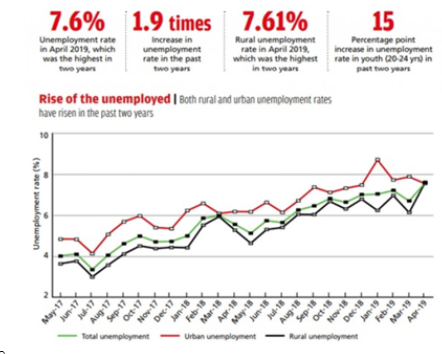
-
- India’s young demographic is an asset in an ageing world, and changes in the trajectory of globalisation have opened new doors for India.
Decoding the editorial: Physical infrastructure vs Human infrastructure
- Physical infrastructure investments are focused on urban areas, but the manufacturing sector is de-urbanising to remain cost-competitive.
- In the early 1990s, India’s manufacturing sector walked hand in hand with urbanisation.
- This process has reversed from 2000 onwards, with the pace of de-urbanisation of manufacturing gathering momentum.
- However, poor physical and human infrastructure in rural areas has constrained the growth drivers and limited the size of the manufacturing sector in India.
- Physical infrastructure in the absence of good human infrastructure has slowed the pace of job growth.
- India needs good infrastructure, both physical and human, to create more jobs.
- Most of the jobs are created by new enterprises, and enterprises, both domestic and foreign, look for both skilled workers and a good physical infrastructure.
- Education and skills are becoming more important as new enterprises make their location decisions based on the education and skills of the local workforce.
- There are well-understood limits to the pace with which India can accumulate physical infrastructure.
- But there are no limits to the pace at which India can accelerate human capital.
- Returns to investment in education are much higher than the returns to investment in physical investment.
- The average social rate of returns to primary education is nearly 20 percent and returns to higher education are increasing rapidly.
Challenges to education
- They are multidimensional — access, quality, relevance, finance and governance.
- The challenges are enormous in rural areas.
- There are a few excellent public and private universities in India.
- Concerns have been raised about the quality of education due to a huge variation in the quality of graduates from both the public and private systems.
- Effective systems of quality assurance do not exist, either for the public or the private sector.
- There is a shortage of qualified faculty due to
- poor compensation,
- rigidities in the number of places allocated to different disciplines in the public system,
- outdated curricula and
- pedagogical methods that still rely too much on rote learning rather than creative thinking and problem-solving and teamwork that is needed by the market.
Way forward
- The governance of the education system needs to be improved as the education system becomes more complex with multiple players and multiple pathways.
- It needs better incentives, monitoring, performance assessment, and accountability both for the internal processes of the education process as well as for students.
- Scaling up tertiary education will increase the cadres of professionals who can create new enterprises and maximise job creation.
- Tertiary education increases the dissemination of knowledge beyond universities, through interactions between firms and the rest of society.
- The future of economic growth will be in tier II cities.
- It will not be in tier I cities, which are already dense with India’s best and brightest.
- New cities have the potential to generate 70 percent of the country’s new jobs and GDP over the next 20 years, a process that could drive a four-fold increase in per capita incomes.
- India needs a broader focus on rural structural transformation to accelerate job creation.
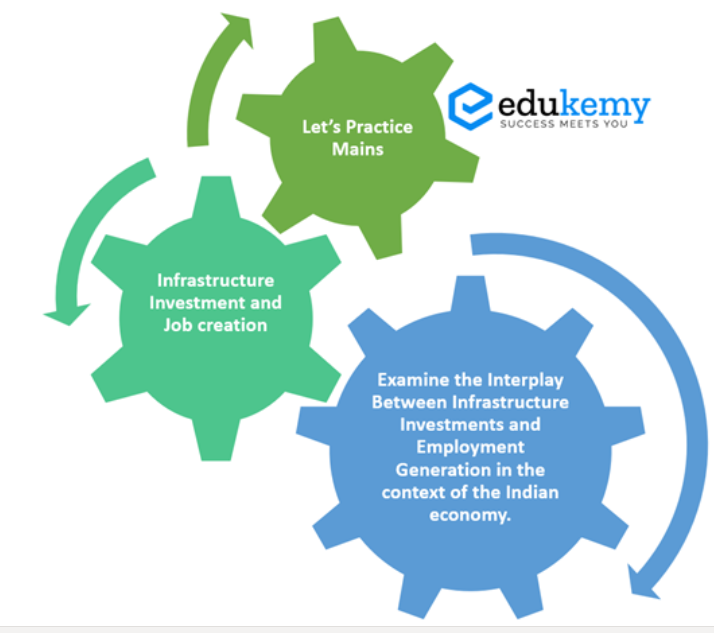
South Asia, now open to business
Exam View: South Asian regionalism; History of South Asian regionalism; New factors accelerating regional economic integration.
Context: South Asia’s new economic openness, Delhi’s vigorous neighbourhood policies, and Western support for an India-centred regionalism in South Asia could transform the Subcontinent's economic landscape.
Decoding the editorial: South Asian regionalism
The pessimistic discourse on South Asian regionalism is trapped in two old propositions:
- South Asia is the least integrated region and insufficiently connected to the world.

- The road to regional integration in the Subcontinent must necessarily run through the SAARC.
History of South Asian regionalism
- The 1990s saw liberalisation and globalisation of the South Asian economies.
- It saw the injection of the language of regionalism in the sub-continent and a new interest in trade and connectivity.
- Economic reform, however, was uneven across the region and tentative even in the capitals, with some support for change.
- And it was hard to mobilise support for cross-border connectivity projects amidst the region’s security challenges.
- The post-colonial and partitioned sub-continent chose economic autarky.
- It devalued regional integration.
- Endless conflict reinforced the lack of political appetite for cross-border commercial engagement.
- The trans-regional connectivity inherited from the British Raj steadily withered as the newly-independent countries focused on import substitution.
- The 21st century has seen considerable improvement within the Subcontinent.
- The share of intra-regional trade in the Subcontinent’s trade with the world has grown from about 2 percent in 1990 to about 6 percent today, but is nowhere near the potential or the achievements of other parts of Asia.
- SAARC is moribund.

-
- Its last summit was held in 2014.
- Pakistan’s priority for the last three decades has been to wrest concessions from India on Kashmir.
- However, the rest of the region has moved forward through bilateral, sub-regional, and trans-regional mechanisms outside of SAARC. A successful SAARC is not a precondition for thriving economic regionalism.
New factors accelerating regional economic integration
- The renewed pressure to undertake economic reform.
- The recent economic crises in Sri Lanka and Pakistan are compelling the elites in Colombo and Rawalpindi to embark on serious and painful economic change.
- Nepal and Sri Lanka are today more open to trade, investment and connectivity with India.
- Pakistan is turning to the Gulf to end its dependence on loans and bailouts.
- The region is looming larger in India’s economic calculus.
- As India’s relative economic weight in the world has grown, its commercial ties with neighbours have increased.
- Bangladesh, for example, is the fourth-largest destination for Indian exports, valued at about $16 billion in 2022.
- India’s exports to Sri Lanka at about $6 billion are comparable with India’s exports to Japan.
- Trans-border projects to promote rail, road, energy, power, financial, and digital connectivity have all gained new impetus in India’s engagement with its neighbours.
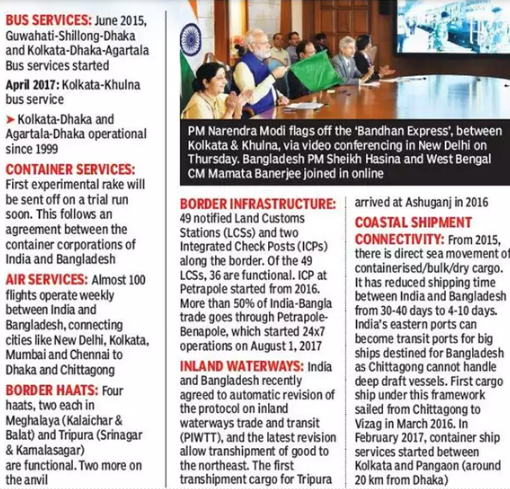
- Renewed rivalry between the US and China and deepening conflict between Delhi and Beijing, have altered the Subcontinent’s geo-economic template.
- In de-risking their commercial ties with China, the US and its allies now actively promote economic and technological engagement with India.
- They are also promoting economic integration between India and its smaller neighbours.
- The US, for example, helped Nepal’s energy and road connectivity with India with the $500 million Millennium Challenge Grant.
- Kathmandu approved it last year despite considerable opposition from China.
- Japan is now promoting sub-regional connectivity between India and Bangladesh that can potentially transform the economic map of the eastern subcontinent and the Bay of Bengal.
- Tokyo and Paris also joined hands with Delhi to help Colombo navigate its economic crisis.
- Macron’s visit to Sri Lanka, the first by a French President, is an attempt to integrate Colombo into Paris’s Indo-Pacific outreach.
- India, which was complacent about China’s growing economic presence in the region a few years ago, has offered a measure of competition in the Subcontinent with its own bouquet of regional infrastructure projects.
Source: https://indianexpress.com/article/opinion/columns/south-asia-is-open-for-business-8871973/
BRICS isn’t NAM
Exam View: The story of BRICS expansion; BRICS vs NAM.
Context: The leaders from BRICS are beginning a three-day summit in Johannesburg, where they are discussing expanding the club that harbours ambitions of becoming a geopolitical alternative to Western-led forums such as the Group of 7.
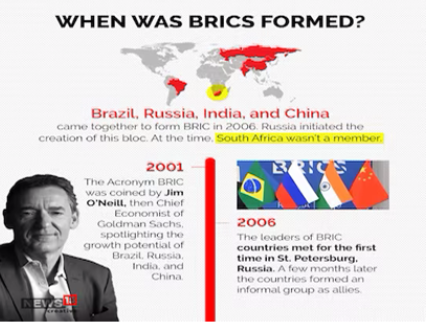
Decoding the editorial: The story of BRICS expansion
- Bigger numbers are more likely to undermine the coherence of any group.
- The widespread interest in joining BRICS reveals its greater relevance to world affairs.
- However, the larger the membership, the smaller the least common political denominator.
- The tensions between India and Pakistan, for example, have long limited the effectiveness of the South Asian Association for Regional Cooperation.
- The SCO has struggled to manage India-Pak and India-China differences.
- The conflict between India and China has already cast a shadow over BRICS.
- China and Russia’s “alliance without limits” could have boosted BRICS to the forefront.
- In February 2022, China and Russia announced their “alliance without limits”.
- They appeared well-placed to deliver the final blow against the Western dominance of the world.
- Since then, Russia has been locked in a prolonged and unwinnable war against Ukraine, is isolated from its natural partners in Western Europe, and faces heavy international sanctions.
- China has disappointed the world with its sputtering economy.
- The international focus is instead on the several structural challenges, including debt, demographic decline, and decoupling from the West.
- Meanwhile, the US, which was supposed to be in terminal decline, has bounced back on economic and geopolitical fronts.
- The talk of China overtaking the US economy has now been relegated to the distant future.
- In February 2022, China and Russia announced their “alliance without limits”.
- Washington has mounted relentless pressure against Beijing with its economic and technological measures.
- It has put together new strategic coalitions on China’s periphery, including the Quad (with Australia, India and Japan), the AUKUS (Australia and the UK), and the trilateral coalition with Japan and South Korea.
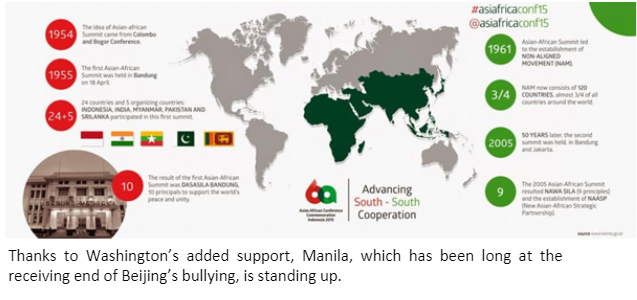 Thanks to Washington’s added support, Manila, which has been long at the receiving end of Beijing’s bullying, is standing up.
Thanks to Washington’s added support, Manila, which has been long at the receiving end of Beijing’s bullying, is standing up.
BRICS vs NAM
- Bipolar confrontation vs avoiding polarisation
- Beijing and Moscow began BRICS to limit the “unipolar world” and promote a “multipolar world”, but have forced it into a bipolar confrontation with the West.
- If NAM was about avoiding East-West rivalry, the Global South addressed the contradictions between developing countries and the developed world, or the Global North.
- But today, China is the world’s second-largest economy, and its capital has made great strides in penetrating the Global South.
- Some in the developing world argue that China’s rough and ready “neocolonialism” is worse than Western “imperialism” tempered over the centuries.
- The political intentions
- Beijing sees BRICS as a political platform to mobilise the non-Western world in its rivalry with the US.
- Balancing the US was also the original motivation for Moscow in promoting the BRICS.
- The interests of the “Global South” are confused with Sino-Russian geopolitical games.
- The presence of many African special invitees does not make Johannesburg comparable to the gathering of the Afro-Asian leaders in Bandung, Indonesia, in 1955.
- One of the principal objectives of the Bandung movement that morphed into NAM eventually was to stay away from rivalrous power blocks, the US-dominated Western one and the Eastern one led by Soviet Russia.
- The BRICS, in contrast, is led by one of the competing power blocs, the Sino-Russian alliance.
- Beijing sees BRICS as a political platform to mobilise the non-Western world in its rivalry with the US.
- Membership race
- Countries want membership of BRICS to enhance their bargaining power with the US.
- On top of it, posturing against the West plays well at home for most political elites.
- Unlike in Bandung, the post-colonial elites are not today animated by ideology.
- Countries want membership of BRICS to enhance their bargaining power with the US.
India’s G-20 opportunity for an African Renaissance
Tag: GS Paper – 2: Groupings & Agreements Involving India and/or Affecting India's Interests; Effect of Policies & Politics of Countries on India's Interests.
Exam View: Representation of Africa; Challenges and disruptors for Africa; India’s robust ties; India’s G20 opportunity.
Context: Africa is flagging its demands nowadays on multilateral fora such as BRICS, the G-20 and the United Nations General Assembly. India is well placed to leverage its comprehensive profile with Africa to help the continent either bilaterally or through multilateral forums.
Decoding the editorial: Representation of Africa
- For a continent with 54 countries, over a quarter of the “Global South”, Africa is populated at BRICS and the G-20 by South Africa, an atypical representative of the Black continent.
- The 15th BRICS summit took place in South Africa on August 23-24 with the theme “BRICS and Africa”.

- It would be followed up early in September in the 18th G-20 Summit hosted by India where several issues of the “global south” with Africa as a focus would come up.
Challenges and disruptors for Africa
Africa, in general, and the Sahel region in particular, are passing through several existential challenges that have strained the traditional socio-political fabric.
- Dictatorship:
- Past military interventions by France, the United States and Russia’s Wagner Group to curb the militancy have shown that they frequently become part of the problem.
- These interventions have costs of keeping dictatorships in power to protect their economic interests, such as uranium in Niger, gold in the Central African Republic and oil in Libya.
- Due to the socio-political disorders, the past decade has seen the generals coming back in Egypt, Burkina Faso, Mali, and Niger.
- The reasons for the return of generals are complex and often specific to the national situation.
- Their earlier regional and continental prescription of delegitimization and containment of the putschists is becoming increasingly less effective as such regimes have proliferated.
- When the Economic Community of West African States (ECOWAS) recently threatened to act militarily against Niger’s junta, two member-States, Mali and Burkina Faso, both run by military governments, opposed the idea.
- Past military interventions by France, the United States and Russia’s Wagner Group to curb the militancy have shown that they frequently become part of the problem.
- New disruptors:
- Islamic terror,
- Changing climate,
- Inter-tribal scrimmage,
- Runaway food inflation,
- Urbanisation, and
- Youth unemployment.
- Traditional:
- Mis-governance,
- Unplanned development,
- The dominance of ruling tribes,
- Bonapartism, and
- Corruption.
- Eroding international support
- China has been Africa’s largest trading partner and investor, but a slowing economy and trade have reduced its appetite for Africa’s commodities.
- Its Belt and Roads Initiative has raised the debts of some African countries to unsustainable levels, in turn causing them to cede control of some of their assets to China.
- Russia previously promoted the Wagner Group in Africa as a shortcut for security, but after the militia’s mutiny against the Kremlin, the situation is unclear.
- Russia, which is under western economic sanctions, hosted an African summit in July that saw tepid participation.
- France, the United Kingdom and other colonial powers as well as the United States have continued to exploit mineral wealth in Africa, but their economic downturn has limited their outreach.
- Europe’s main concern is limited to stopping illegal migration from African shores.
- China has been Africa’s largest trading partner and investor, but a slowing economy and trade have reduced its appetite for Africa’s commodities.
India’s robust ties
India’s ties with Africa are deep, diverse and harmonious that range from Mahatma Gandhi’s satyagraha against the apartheid to the UN peacekeeping role.
- Trade: Although India now imports less oil from Africa and sells fewer agricultural products, India-Africa trade reached $98 billion in 2022-23.
- Socio-economic engagements: India’s engagement is robust in sectors such as education, health care, telecom, IT, appropriate technology and agriculture.
- It has provided 42,000 scholarships since 2015.
- Approximately three million people of Indian origin live in Africa, many for centuries. They are Africa’s largest non-native ethnicity.
- Investment: India was the fifth largest investor in Africa and has extended over $12.37 billion in concessional loans.

India’s G20 opportunity
- India could consult like-minded G-20 partners and multilateral institutions for a comprehensive semi-permanent platform to resolve the stalemated security and socio-economic situations in several parts of Africa.
- It should deliver political stability and economic development by combining peacekeeping with socio-political institution building.
- India can offer force multipliers such as targeted investments and transfer of relevant and appropriate Indian innovations, such as the JAM trinity, DBT, UPI, and Aspirational Districts Programme.
By offering a more participative and less exploitative alternative, New Delhi can make the India-Africa ecosystem an exemplary win-win paradigm for the 21st century.
Manipur internet shutdowns - Edukemy Current Affairs
Exam View: Internet shutdowns deepen digital divide; Internet shutdowns affect fundamental rights; Internet shutdowns have real economic costs; Accountability for shutdowns; Lessons from the past.
Context: Nearly three months after an internet shutdown was first imposed across Manipur, people in the state still do not have unhampered access.

Decoding the editorial:
Internet shutdowns deepen digital divide
- Mobile internet services in Manipur remain suspended. These services
- have far greater penetration than broadband and wi-fi, particularly in rural areas, and
- are used by the majority of internet subscribers (more than 90 percent).
- On July 25, the Manipur government permitted certain types of limited and conditional access following some of the recommendations of an expert committee.
- Permitted Internet Lease Line or Fibre to the home connections is limited to a small section (less than five per cent), and largely urban institutional users.
- As a result, this disproportionately hurts those with fewer resources and only deepens the digital divide. It contradicts the government’s vision of a Digital India.
Internet shutdowns affect fundamental rights
Ban on social media continues in Manipur. Internet access is also conditional on MAC Address binding, static IPs, and a ban on Virtual Private Networks.
- Unreasonable restrictions
- Fundamental rights can only be limited in a reasonable and proportionate manner.
- Restricting people’s ability to connect, and then effectively bringing all the ways in which they can connect under surveillance, is neither reasonable nor proportionate.
- Right to carry out one’s trade or profession through the internet
- It is a fundamental right as per the Supreme Court, which has become affected.
- Rights to free expression, freedom of assembly and privacy
- Greater monitoring of all online activities, and tracing of the user’s location impedes the exercise of fundamental rights amid a crisis when people’s need for them is even more pressing.
- Right to information
- Lack of access to an open and secure internet and social media affects the flow of information from and to the state, weakens reporting, and therefore the ability to bring those responsible for the ongoing violence to account.
- People’s ability to share and verify information, and access online civic spaces has also become limited.
Internet shutdowns have real economic costs
- These impact individuals as well as the country at large.
- The six-month communication blockade in Kashmir in 2019 left more than five lakh people unemployed, and Rajasthan saw losses of Rs 800 crore due to shutdowns over one month in 2021.
- In 2016, a Brookings paper estimated that India suffered a loss of Rs 7,932 crores due to shutdowns between July 2015 and June 2016.
- These figures understate the problem, not just because all shutdowns are not reported, but also since they do not include the unorganised sector.
Accountability for shutdowns
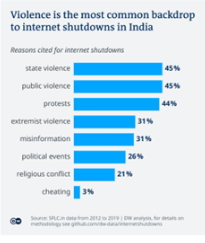
- Shutdowns are often imposed by state authorities.
- The responsibility to reform the legal framework authorising the imposition of shutdowns through the Telegraph Act and its rules, and implement rights-respecting changes, rests with the central government.
- Impunity and lack of answers from authorities remain an issue.
- On July 26, the central government was asked in the Lok Sabha about the number of shutdowns in the last three years, estimated losses, and whether it intended to do anything to minimise these, eliciting recrimination and no concrete answers.
Lessons from the past
- The Manipur government needs to recall the lessons from the Jammu and Kashmir communications blockade of 2019-2020.
- The Union government had initially imposed a complete internet shutdown for six months, and gradually lifted suspensions after a court intervention, starting with painfully ineffective 2G connections, blocking VPNs and social media.
- However, the government is simultaneously ignoring the law that resulted from the Kashmir shutdown. The Government of India revoked the special status, or autonomy, granted under Article 370 of the Indian Constitution to Jammu and Kashmir.
Supreme Court in the Anuradha Bhasin judgment held that shutdowns violate fundamental rights, and may be imposed only when it is proportional, reasonable, necessary, and the least restrictive measure. It continues to be ignored.
Source: https://indianexpress.com/article/opinion/columns/manipur-internet-shutdown-kashmir-8864472/
Pathways for digital inclusion
Exam View: India Stack; Pathways for digital inclusion.
Context: The Indian DPI ecosystem envisioned as “India Stack” has been pivotal in unlocking the power of identity, payments, and data sharing to drive economic growth and foster a more inclusive digital economy.
Decoding the editorial: India Stack
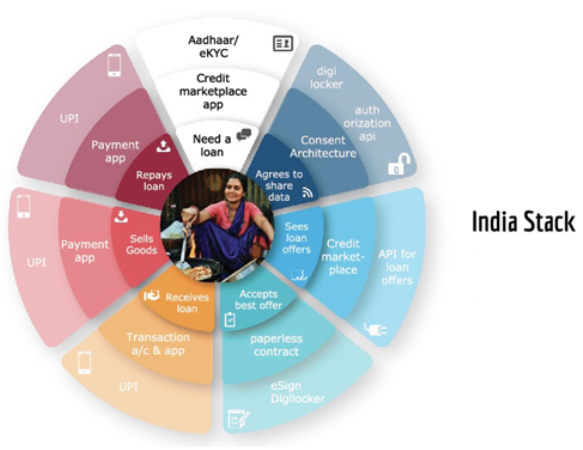
- The India Stack can be imagined as an interconnected yet independent “blocks of a stack”.
- Each block serves as a vehicle for inclusion across sectors, ultimately catering to our diverse population.
- Transformative ability: This ability of India Stack gives it the potential to drive innovation, inclusion and competition in the digital realm through its modular layers.
- Social and financial inclusion: The Jan Dhan-Aadhaar-Mobile trinity has played a pivotal role in transparent direct benefit transfers of welfare subsidies to bank accounts of the underserved.
- Digital inclusion: On the payments front, Unified Payments Interface has empowered us to conveniently transfer money from one bank account to another bank account digitally and in real-time.
- Bridging the wealth gap: Indian DPIs hold the promise to bridge the wealth gaps and build an efficient and resilient digital economy that supports citizens and organisations.
- The next decade of India’s DPI journey will witness sector-specific DPIs such as
- Account aggregators,
- Open Network for Digital Commerce,
- Ayushman Bharat Digital Mission and
- Agristack.
Way Forward
As India leads the conversation on DPIs and digital transformation at the G20, it is an opportune moment to steer the wheel towards inclusive DPIs, both globally and locally.
- The importance of placing users at the forefront.
- India must prioritise user-centric design to reduce inequalities amongst rural and urban populations, genders or economic groups.
- Enabling compatible protocols for feature phones, assisted-tech models and Interactive Voice Response System should be explored and implemented.
- Offering handholding support to consumers with limited smartphone access or low digital literacy should be looked into.
- The RBI’s launch of UPI123Pay is a notable step towards inclusivity, which gives feature phone owners an app that enables them with most UPI features.
- The RBI has even enabled card-less cash withdrawals at ATMs through the UPI app.
- Inclusion should be a key policy objective.
- By prioritising inclusion from the outset, DPIs can create an ecosystem that benefits all individuals, regardless of their digital literacy, thereby cultivating a more equitable and accessible digital economy.
- Estonia’s information policy emphasises avoiding information disparities between regions or communities.
- Several jurisdictions, including Nigeria, the UK and Brazil, have embraced open banking with the aim of financial inclusion within the regulatory framework itself.
- Underserved target segments must be identified and use cases proactively developed, tailored to their needs.
- For instance, for the MSMEs, who have limited access to formal sources of credit, the account aggregator ecosystem holds immense potential to enable access to low-cost, low-ticket-size, collateral-free sources of credit.
- This can be done by utilising the digital trail of all consented transactional data, including cash flows generated by the enterprise.
- Moreover, monitoring the impact of DPIs on vulnerable consumers through disaggregated data collection is essential to prevent the deepening of gaps for underserved customers and foster equitable growth.
- For instance, for the MSMEs, who have limited access to formal sources of credit, the account aggregator ecosystem holds immense potential to enable access to low-cost, low-ticket-size, collateral-free sources of credit.
- Build engagement with the DPI.
- Digital connectivity and literacy pose obstacles in India.
- Offline channels must be considered, alongside building institutional capacity to generate trust and awareness.
- It would not only ensure last-mile access but also foster digital comfort among vulnerable consumers, empowering them to leverage these tools for their benefit.
- Business correspondents are a vital cog on which banks rely to increase access to and usage of financial products.

Source: https://indianexpress.com/article/opinion/columns/pathways-for-digital-inclusion-8868325/
The Digital Personal Data Protection Bill 2023
Exam View: The right to privacy; The right to information; Complementary or competing rights; Problems with the Bill.
Context: The Digital Personal Data Protection Bill 2023 makes the government less transparent to the people and ends up making them transparent to both the government and private interests.
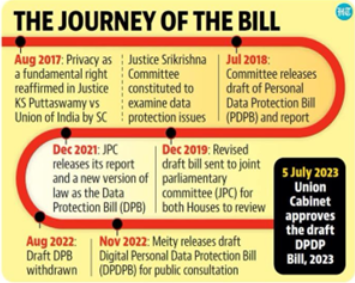
Decoding the editorial:
The right to privacy
- It was reaffirmed by a nine-judge Constitutional bench of the Supreme Court in 2017.
- It set an international benchmark and illustrated the new challenges to the right to privacy posed by the digital age.
The right to information
- It provides us access to government documents to ensure transparency and accountability of the government.
- Enacted as a law, the Right to Information Act (RTI) 2005 has played a critical role in deepening democratic practices.
Complementary or competing rights
- In a crucial way, the two rights complement each other.
- The right to information seeks to make the government transparent to us, while the right to privacy is meant to protect us from government and private intrusions into our lives.
- Yet, there are some tensions between the right to information and the right to privacy.
- For example, under MGNREGA, mandatory disclosure provisions are meant to ensure that workers can monitor expenditure and also facilitate public scrutiny through social audits.
- Everyone has access to data about individuals registered under the Act, including when and how much was paid to each worker.
- Unscrupulous operators can monitor, even scrape this data systematically to swindle workers of their hard-earned wages (for example, showing up at their doorstep with offers of lucrative ‘savings’ or ‘insurance’).
Problems with the Bill

- Data mining can continue: Section 4(2) defines “lawful purposes” in the broadest possible manner as “any purpose which is not expressly forbidden by the law”.
- As scraping information on wages/pensions paid to workers/pensioners or mobile numbers of government scheme beneficiaries from government portals is “not expressly forbidden”, data mining can merrily continue.
- Section 36 allows the central government to ask the Board, data fiduciary or others to “furnish such information as it may call for”.
- Sections 4(2) and 36 together make our data fair game for both government and private entities.
- Undermines our rights: Our right to information is undermined without doing much to protect our right to privacy.
- Section 8(1)(j) of RTI, grants exemption from disclosure if the information which relates to personal information sought “has no relationship to any public activity or interest, or which would cause unwarranted invasion of the privacy of the individual”, unless a public information officer feels that larger public interest justifies disclosure.
- It set a high benchmark for exemption, “information which cannot be denied to the Parliament or a State Legislature shall not be denied to any person.”
- The DPDP Bill 2023 suggests replacing Section 8(1)(j) with just “information which relates to personal information”.
- Makes the government less transparent: The undermining of rights also makes us increasingly transparent to both the government and private interests.
- The current requirement for public servants (including judges, and Indian Administrative Service officers) to disclose their immovable assets will likely be off limits.
- This is indeed “information related to personal information”, but it serves a larger public interest (for example, to identify public servants with disproportionate assets).
- Lame-duck as a watchdog: The Data Protection Board, an oversight body will be under the boot of the government as the chairperson and members are to be appointed by the central government (Section 19).
- Ignoring social, political and legal context: In Europe, the General Data Protection Regulation (GDPR) has a strong watchdog that operates in a society with universal literacy.
- Yet, Edward Snowden warned of that the problem isn’t data protection, the problem is data collection.
- Restricting data collection is not even being discussed in India.
A weak board combined with the lack of universal literacy and poor digital and financial literacy, as well as an overburdened legal system, mean that the chances that citizens will be able to seek legal recourse when privacy harms are inflicted on them are slim.

China-Bhutan Boundary Dispute - Edukemy Current Affairs
Why in news? China and Bhutan recently held boundary talks to expedite efforts to resolve their disputed border issue.
About:
- Bhutan shares a 477 km-long border with China.
- The disputed regions between China and Bhutan include Doklam, Gamochen, Batangla, Sinchela, Sakteng and Amo Chhu.
- The China-Bhutan border dispute involves territorial claims and tensions between the two countries over parts of Bhutan’s territory, particularly in areas bordering Tibet.

Sulina Channel (Danube River) - Edukemy Current Affairs
Why in news? The Sulina Channel holds immense importance for Ukraine’s grain trade as an alternative passage after Russia’s withdrawal from the Black Sea grain deal.
About:
- This deal was used to provide safe passage for cargo ships carrying grain from Ukrainian Black Sea ports.
Sulina Channel

- Sulina Channel is a 63 km long distributary of the Danube. It lies completely within the borders of Romania.
- Of the three major channels of the Danube River, the Sulina Channel is the only one deep and wide enough for freight transport.
- It is a sort of a riverine ‘expressway’, crucial for transport of goods from inland to the Black Sea.
- It plays a crucial role in this new trade route, connecting major Ukrainian ports to the Black Sea within Romania’s borders.
Danube River:
- Danube is the second-longest river in Europe, after the Volga in Russia.
- It flows through much of Central and Southeastern Europe, from the Black Forest into the Black Sea.
- Near Romania, the river begins to spread out into its delta which has three major channels – Chilia, Sulina and St George.
- It passes through or forms the border of ten countries, making it one of the most international rivers in the world.
- The countries it flows through include: Germany; Austria; Slovakia; Hungary; Croatia; Serbia; Bulgaria; Romania; Moldova; Ukraine.
North Sea Transition Authority (NTSA)
Why in news? The U.K. plans to conduct more fossil fuel drilling in the North Sea, sparking concerns about its alignment with climate goals.
About:

- The North Sea Transition Authority (NSTA), known as the Oil and Gas Authority (OGA) until March 2022, is a private company limited by shares wholly owned by the Secretary of State for Energy Security and Net Zero.
- It is responsible for maximising the economic recovery of oil from the North Sea.
- It is empowered to license and regulate activity in relation to oil and gas in the United Kingdom, including oil and gas exploration, carbon capture and storage, and offshore gas storage.
North Sea:
- North Sea, shallow, northeastern arm of the Atlantic Ocean, located between the British Isles and the mainland of northwestern Europe.
- The sea is bordered by the island of Great Britain to the southwest and west, the Orkney and Shetland islands to the northwest, Norway to the northeast, Denmark to the east, Germany and the Netherlands to the southeast, and Belgium and France to the south.
- It is connected to the Atlantic by the Strait of Dover and the English Channel.
- Almost the entire seabed of the North Sea is a continental shelf (depth of only about 200 meters).
- The geological formations beneath the North Sea, such as porous rocks and structural traps, provide suitable environments for the collection of oil and gas reserves.
Trinidad and Tobago - Edukemy Current Affairs
Why in news? Recently, India and Trinidad and Tobago signed a memorandum of understanding (MoU) for sharing India Stack.
About:
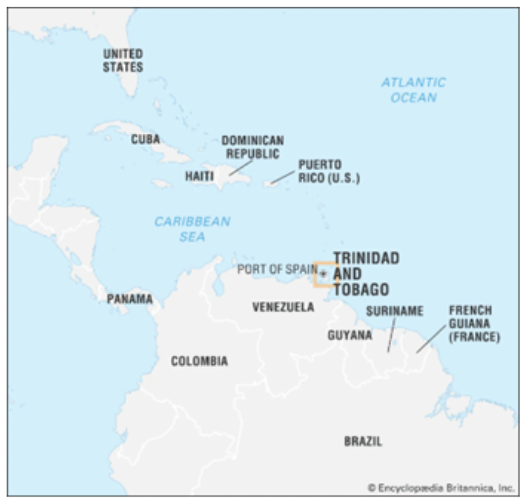
- India Stack is a collection of open APIs and digital public goods that aim to facilitate identity, data, and payment services on a massive scale.
Trinidad and Tobago
- Trinidad and Tobago, island country of the southeastern West Indies.
- It consists of two main islands, Trinidad and Tobago, and 21 smaller islands.
- It is located in the southern Caribbean Sea, and lie close to the continent of South America, northeast of Venezuela and northwest of Guyana.
- The climate of Trinidad and Tobago is tropical, with high relative humidity.
More about the news:
- India and Trinidad and Tobago agreed to cooperate in the areas of digital transformation by means of capacity building, training programmes, exchange of best practices, exchange of public officials and experts, development of pilot or demo solutions etc.
‘Likaru-Mig La-Fukche’ road (Ladakh)
Why in news? Border Roads Organisation (BRO) has commenced the construction of a 64-km long Likaru-Mig La-Fukche road in Eastern Ladakh's Demchok sector.
About:

- This road project aims to provide connectivity to the military outposts in the sensitive Fukche sector, lying near the contested Line of Actual Control (LAC).
Likaru-Mig La-Fukche road:
- It is located close to Hanle in Eastern Ladakh.
- The 64-km long road will connect Likaru to Fukche, situated 3 km from the Line of Actual Control (LAC).
- Once completed, it will be the world’s highest motorable road at a height of 19,400 ft in Mig La.
- Currently, Umling La in Ladakh holds the title of the highest motorable road at 19,024 ft.
- It is the first project in India to be carried out entirely by an All-Woman Road Construction Company.
- It is led by a five-member All Woman Border Road Task Force.
- Additionally, the BRO is undertaking other significant projects, including the Shinku La tunnel and the construction of the ‘Nyoma Airfield’.
|
Umling La Pass: |
|
Maharashtra’s 1st elephant reserve
Why in news? In response to the frequent movement of elephants in the Gondia and Gadchiroli districts, the Maharashtra state wildlife department has proposed creating the Navegaon Elephant Reserve in an area (in Gondia and Gadchiroli districts).
About:

- This move aims to conserve wild elephants in the region, where around 23-25 elephants have been residing.
- This initiative follows the Maharashtra government’s 2020 decision to designate nearly 3,000 hectares of forest land as an elephant reserve in the Sindhudurg district, marking the first instance of such a reserve being established in the state.
significance of this proposal
- At present, there are 33 elephant reserves in the country.
- If approved, Navegaon Elephant Reserve could become the 34th elephant reserve in India and the 5th largest in terms of area.
|
Elephant Conservation in India: |
|
Panama Canal - Edukemy Current Affairs
Why in news? Recently, A severe drought in Panama is causing extensive delays for cargo ships transiting the Panama Canal, a vital route connecting almost 2,000 ports across 170 countries.
About:
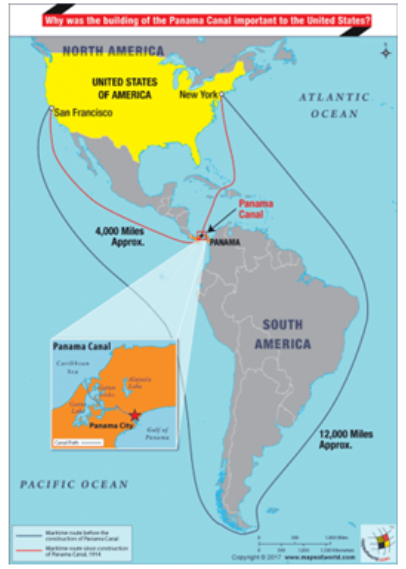
- Panama Canal is a constructed waterway that connects the Atlantic and Pacific oceans across the Isthmus of Panama.
- It is approximately 82 kilometers long.
- It is one of the two most strategic artificial waterways in the world, the other being the Suez Canal.
- It allows ships to avoid the lengthy and dangerous voyage around Cape Horn.
- Panama itself forms an isthmus (a narrow land strip connecting two larger landmasses) between North and South America.
- Originally under French control in the late 1800s, the United States completed the project in 1914 and managed it until 1999 when Panama took over. It’s now operated by the Panama Canal Authority.
- The Panama Canal consists of a series of locks that raise and lower the water level to facilitate the passage of ships through the continental divide.
Dibang Multipurpose Project - Edukemy Current Affairs
In News: Recently, NHPC signed an MoU with RITES, Ministry of Railways for construction of railway siding for the Dibang Multipurpose Project, Arunachal Pradesh
About
- Dibang Multipurpose Project is a flood control cum hydroelectric power project planned to be developed on the Dibang River (Tributary of Brahmaputra River) in Arunachal Pradesh.
- It will be the country’s biggest hydropower facility with a capacity of 2880MW
- National Hydroelectric Power Corporation (NHPC) is developing this project.
Dibang hydroelectric plant makeup:
- The project aims to build the tallest dam in the nation, standing at 278 meters in height and stretching 375 meters in length.
- This concrete gravity dam will give rise to a reservoir spanning 43 kilometers and boasting a total storage capacity of 3.85 billion cubic meters.

Denmark - Edukemy Current Affairs
In News: Denmark to ban Quran burnings, says justice minister
About
- Denmark, positioned in Scandinavia, encompasses the Jutland Peninsula and an array of islands. It is connected to its neighboring country Sweden by means of the Öresund Bridge.
- The capital, Copenhagen, boasts royal residences, the vibrant Nyhavn harbor, the Tivoli theme park, and the renowned "Little Mermaid" sculpture.
- Denmark is attached directly to continental Europe at Jutland’s boundary with Germany.
- All the frontiers with surrounding countries are maritime, including that with the United Kingdom to the west across the North Sea. Norway and Sweden lie to the north, separated from Denmark by sea lanes linking the North Sea to the Baltic Sea.
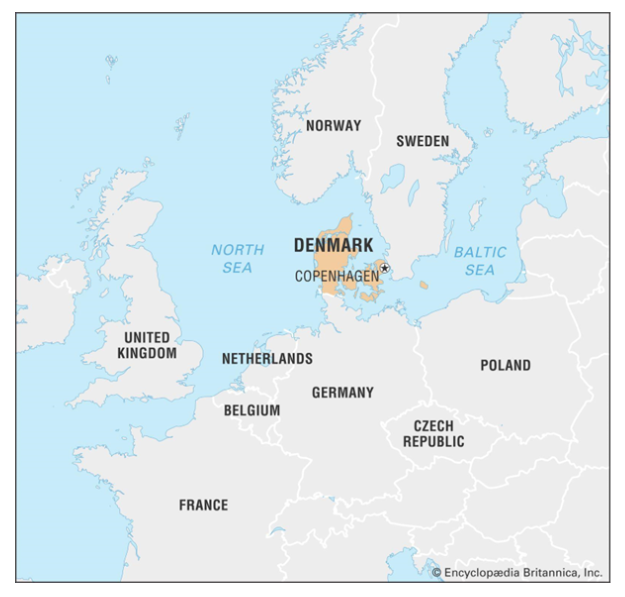
https://www.dw.com/en/denmark-to-ban-quran-burnings-says-justice-minister/a-66629928
Katchatheevu Island (Tamil Nadu)
Why in news? Recently, Prime Minister Narendra Modi, in his speech in the Parliament mentioned the island of Katchatheevu.
About:
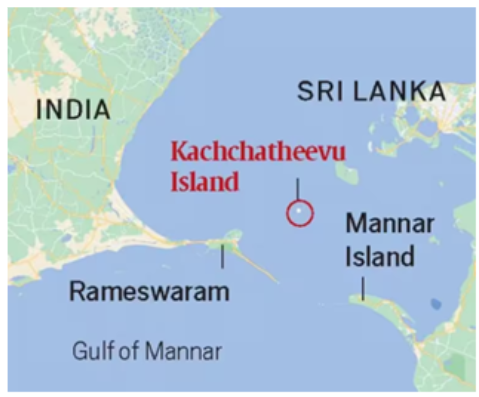
- Katchatheevu Island is a tiny uninhabited landmass located in the Palk Strait between India and Sri Lanka.
- It is between Tamil Nadu and Sri Lanka.
- Formation: It was formed due to volcanic eruptions in the 14th century.
- Katchatheevu is not suited for permanent settlement as there is no source of drinking water on the island.
- History:
- In the early medieval period, it was controlled by the Jaffna kingdom of Sri Lanka.
- In the 17th century, control passed to the Ramnad zamindari based out of Ramanathapuram.
- It became part of the Madras Presidency during the British Raj. But in 1921, both India and Sri Lanka, at the time British colonies, claimed Katchatheevu in order to determine fishing boundaries.
- In 1974, Indira Gandhi made attempts to settle the maritime border.
- As a part of this settlement, known as the ‘Indo-Sri Lankan Maritime agreement’, Indira Gandhi ‘ceded’ Katchatheevu to Sri Lanka.
- Today, the uninhabited island is administered by Sri Lanka.
Peru
In News: Tears down wall of shame separating Rich and Poor


Hawaii - Deadliest wildfires in US History


Reasons for Flood in Libya
Reasons for Flood in Libya:
- Despite being a port city there was a lack of a functioning weather agency and early warning system.
- Lack of maintenance of dam which caused the failure of the dam.

https://epaper.hindustantimes.com/Home/ShareArticle?OrgId=159f374cb52&imageview=0
Iberian Penisula
In News: Heatwave swept across the Peninsula
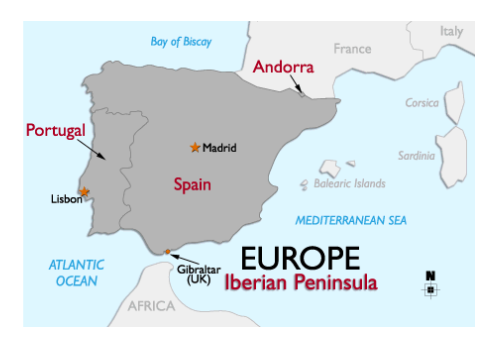
Lake Titicaca
In News: Water levels falls to historic lows due to climate change

Gabon
In News: Military coup took place after the president won disputed election in Gabon.

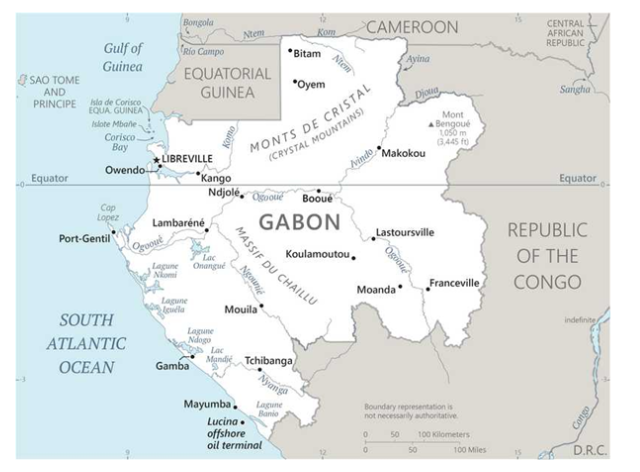
Ethiopia - Edukemy Current Affairs
In News: Government declared state of emergency in its largest Region Amhara.

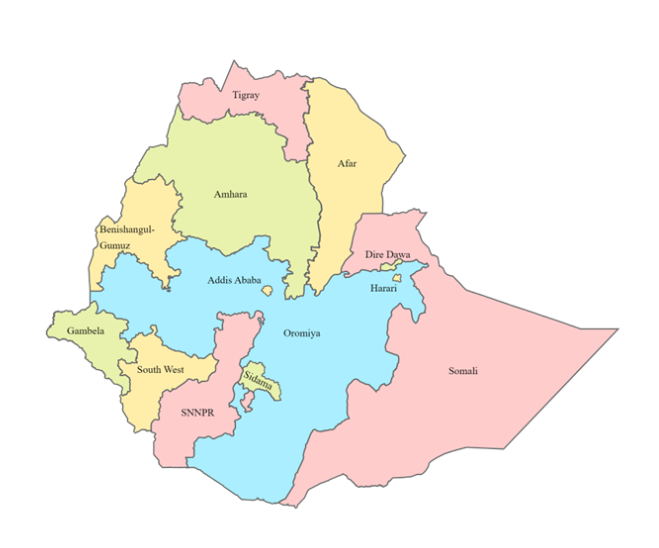
Kaimur Wildlife Sanctuary - Edukemy Current Affairs
In News: Bihar is set to get a second tiger reserve in Kaimur district (Kaimur Wildlife Sanctuary) by the end of 2023 or early 2024.
About:
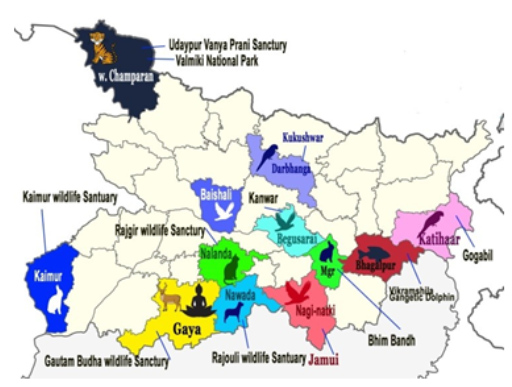
- Kaimur Wildlife Sanctuary, Bihar’s largest, covers Kaimur and Rohtas Districts.
- It was established in 1979.
- It is home to rare and endangered flora and fauna. Rohtasgarh Fort and Shergarh Fort are also located in these forests.
- Kaimur district has a large forest cover and is home to tigers, leopards and chinkaras.
- Vegetation: Tropical Dry Mixed Deciduous, Dry Sal Forests, Boswellia Forests and Dry Bamboo Brakes.
- There are several waterfalls of which the finest are Karkat Waterfall, Manjhar Kund, Dhua Kund.
- There are several Dams and lakes, including Anupam Lake, Karamchat dam and Kohira Dam.
More Information:
- 1st tiger reserve of Bihar:
- The Valmiki Tiger Reserve (VTR) in West Champaran district, is currently the 1st and only tiger reserve of the state.
- Need for the 2nd tiger reserve:
- A report of the NTCA said that the tiger population in the Valmiki reserve has increased from 31 in 2018 to 54.
- The total tiger count in the State currently is 54.
- There is a need for the second tiger reserve in the state as Valmiki TR has reached its saturation point of 50 tigers.
Kigali (Rwanda) - Edukemy Current Affairs
Why in news? Recently, The International Solar Alliance (ISA) hosted its 5th regional meeting in Kigali, Rwanda.
About:
- Kigali, city and capital of Rwanda.
- It is located in the centre of the country on the Ruganwa River.
- Rwanda is a landlocked country in the Great Rift Valley of Central Africa, where the African Great Lakes region and Southeast Africa converge.
- Located a few degrees south of the Equator, Rwanda is bordered by Uganda, Tanzania, Burundi, and the Democratic Republic of the Congo.
More About the News:
- ISA grants have facilitated the implementation of nine solar power demonstration projects in Uganda, Comoros, and Mali. These projects included the solarization of rural healthcare centres and primary schools in these countries.
- ISA also launched the SolarX Startup Challenge, promoting entrepreneurship and clean energy in Africa.
- The Global Solar Facility aims to boost innovative solar technologies in Africa through private investment and guarantees.

Vizag International Cruise Terminal
Why in news? The Vizag International Cruise Terminal (VICT) in Visakhapatnam will be inaugurated by the Ministry of Ports, Shipping and Waterways.
About:
The enhancements at the Visakhapatnam Port Authority (VPA) include the Vizag International Cruise Terminal, which is designed to accommodate passenger vessels with a capacity of 2,000 passengers per vessel and a draft of 8.1 meters.
Key statistics and facts about India's port sector:
- India enjoys a strategic geographical advantage with a coastline spanning 7,517 kilometers.
- Maritime transport plays a pivotal role in handling 70% of India's trade.
- India commands a significant share, accounting for 30% of the global ship-breaking market.
- The Sagar Mala Program is a prominent initiative that prioritizes port-led development and involves a substantial investment of $123 billion.
- India permits 100% Foreign Direct Investment (FDI) in the port sector through both government approval and automatic routes.
- India's port infrastructure includes 12 major ports and approximately 200 non-major or intermediate ports.
- Among major ports, the Jawaharlal Nehru Port Trust stands out as the largest, while Mudra Port holds the distinction of being the largest private port in the country.
- The Jawaharlal Nehru Port is notably India's first 100% Landlord Major Port.

Siang River - Edukemy Current Affairs
Why in news? Recently, The Centre has proposed to construct a large barrage on the Siang River to protect it from potential hazards posed by the massive Chinese dam being built on river Tsangpo in Tibet.
About:
- The Tsangpo flows through Tibet before entering Arunachal Pradesh as the Dihang or Siang. It becomes the Brahmaputra in Assam and the Jamuna in Bangladesh before it empties into the Bay of Bengal.
- It originates at Angsi Glacier in western Tibet, southeast of Mount Kailash and Lake Manasarovar.
- It is the longest river in Tibet and the fifth longest in China.
- The river forms the world’s largest and deepest canyon, YarlungTsangpo Grand Canyon.
- The YarlungTsangpo River is the highest major river in the world.
- Its longest tributary is the Nyang River.

In India, its main tributaries are:
- Main tributaries on the North are: namely Subansiri, Ronganadi, Dikrong, Buroi, Borgong, Jiabharali, Dhansiri (North) Puthimari, Manas, Beki, Aie, Sonkoshare.
- Main tributaries on the south are: Noadehing, Buridehing, Desang, Dikhow, Bhogdoi, Dhansiri (South), Kopilli, Kulsi, Krishnai, Dhdhnoi, Jinjiran.
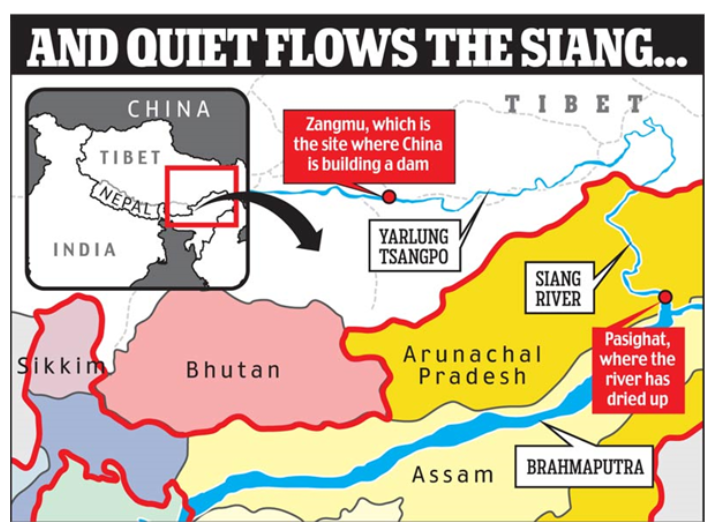
More Information:
- The Chinese government is planning to build a dam over the Siang River with a capacity of around 60,000 MW on the Tibet side.
- It is expected to produce triple the electricity produced by the Three Gorges – the world’s largest power station.
Eastern Maritime Corridor (EMC)
In News: Recently, the Ministry of Ports extended an invitation for an Indo-Russian Workshop on Eastern Maritime Corridor in Chennai
About
- The Eastern Maritime Corridor (EMC) is a proposed sea route that would connect the Indian port of Chennai with the Russian port of Vladivostok.
- This corridor is expected to reduce the transportation time between Indian and Russian ports in the Far East Region by as much as 40 percent, bringing it down from the current 40 days to 24 days.
- Currently, the trade route between Mumbai, India, and St. Petersburg, Russia, covers a distance of 8,675 nautical miles.
- EMC is projected to cover a distance of approximately 5,600 nautical miles, which is significantly shorter than the existing route via the Suez Canal.
- Once completed, the EMC is expected to facilitate the transportation of goods from India to Far East Russia in just 24 days, which is a significant improvement over the current journey duration of over 40 days.
- For India, the EMC holds the potential to offer a more efficient and shorter route to access the markets of the Far East, including countries like China and Japan. This improved connectivity can have positive implications for trade and economic relations in the region.
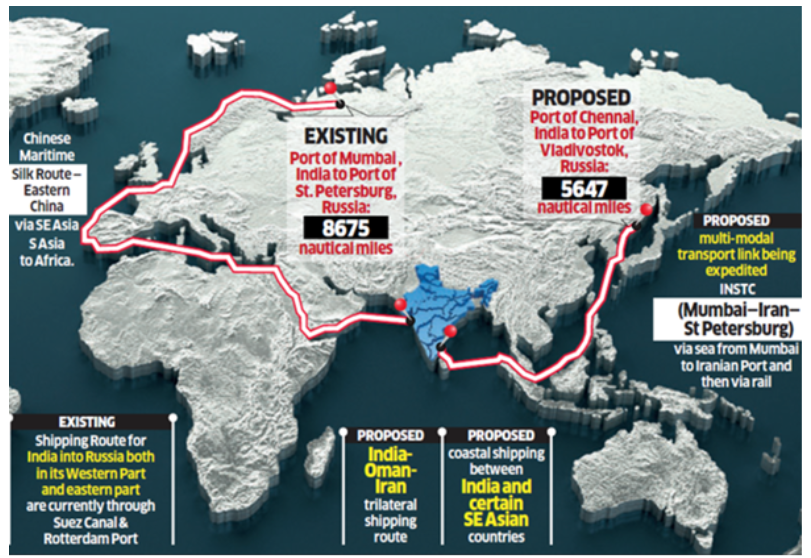
Harami Nala (Sir Creek, Gujarat)
In News: The Union Home Minister’s visit to Harami Nala on the India-Pakistan border last month highlights the enhanced security measures in place.
About
- Harami Nala is a 22-kilometer tidal channel that serves as a natural demarcation line between India and Pakistan.
- This channel plays a vital role in carrying water and sediment, and it is home to protected marine species.
- The area around Harami Nala consists of extensive marshy mudflats, where temperatures can soar to over 50°C during the summer.
- Sir Creek, originally known as Ban Ganga, is a 96-kilometer tidal estuary situated in the uninhabited marshlands of the Indus River Delta.
- It lies on the border between India and Pakistan, ultimately flowing into the Arabian Sea. This creek serves as a geographical divider, separating India's Gujarat state from Pakistan's Sindh province.
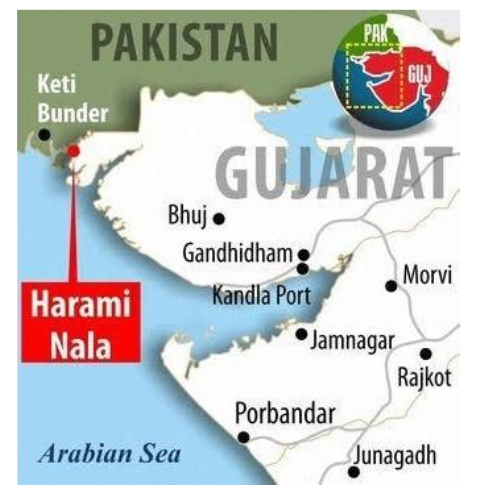
Narmada River - Edukemy Current Affairs
In News: Severe rains in Gujarat caused the Narmada River to flood, displacing thousands.
About:
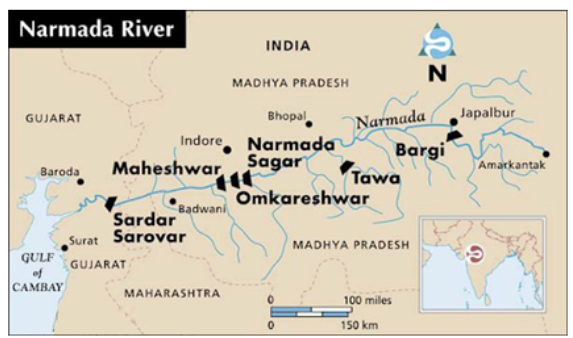
- Some blame the Sardar Sarovar Dam operators for their delayed actions.
Narmada River
- Narmada is the largest west flowing river of the peninsular region flowing through a rift valley between the Vindhya Range on the north and the Satpura Range on the south.
- It rises from Maikala range near Amarkantak in Madhya Pradesh.
- It flows through Madhya Pradesh, Maharashtra, and Gujarat before reaching the Gulf of Cambay.
- The river near Jabalpur (Madhya Pradesh) forms the DhuanDhar Falls.
- It is the fifth largest river in India.
- Major Tributaries: Hiran, Orsang, the Barna and the Kolar.
- Notable dams in the Narmada Basin include the Sardar Sarovar Dam, Rani Avanti Bai Sagar (Bargi) Dam, and Maheshwar Dam.
Sardar Sarovar Dam
- The Sardar Sarovar Dam is a concrete gravity dam erected on the Narmada River near the town of Kevadiya in Gujarat’s Narmada District.
- The dam was constructed to provide water and electricity to four Indian states: Gujarat, Madhya Pradesh, Maharashtra, and Rajasthan.
- The dam is located on the boundary between Gujarat and Maharashtra in Gujarat’s Narmada district.
- To the west of the dam lies the Malwa plateau of Madhya Pradesh.
Azerbaijan (Nagorno-Karabakh) - Edukemy Current Affairs
In News: Recently, Azerbaijan launched an operation against Armenian forces in Nagorno-Karabakh.
About:
Azerbaijan:
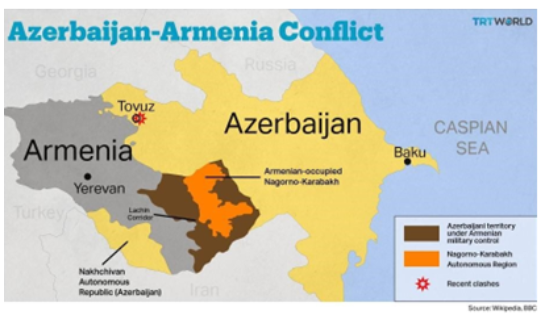
- It is a former Soviet republic nation.
- Occupying an area that fringes the southern flanks of the Caucasus Mountains, it is bounded on the north by Russia, on the east by the Caspian Sea, on the south by Iran, on the west by Armenia, and on the northwest by Georgia.
- Its capital, Baku, is famed for its medieval walled Inner City.
Nagorno-Karabakh conflict:
- Nagorno-Karabakh is a mountainous and heavily forested region that under international law is recognized as part of Azerbaijan.
- However, ethnic Armenians who constitute the vast majority of the population there reject Azeri rule (the legal system of Azerbaijan).
- A ceasefire mediated by Russia in 1994 left the region under Armenian control, though it’s still recognized as part of Azerbaijan.
- The area is now governed by separatist Armenians and called the “Nagorno-Karabakh Autonomous Oblast.”
- Strategic Significance:
- The energy-rich Azerbaijan has built several gas and oil pipelines across the Caucasus (the region between the Black Sea and the Caspian Sea) to Turkey and Europe.
- In an open war between the two countries, the pipelines could be targeted, which would impact energy supplies and may even lead to higher oil prices globally.
Kaobal Gali-Mushkoh Valley - Edukemy Current Affairs
In News: Kaobal Gali-Mushkoh Valley, once a battleground during the Kargil war, has now opened up for tourists.
About:
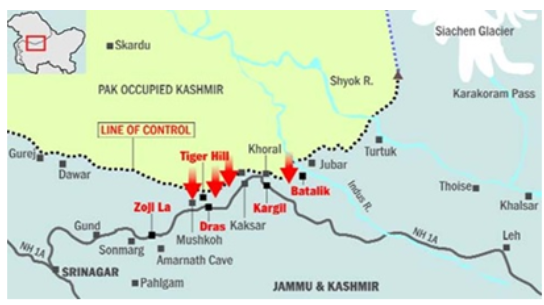
- This transformation is attributed to the enduring ceasefire between India and Pakistan sparking hope that tourism-driven commerce will thrive in the region.
Kaobal Gali-Mushkoh Valley
- It is located in Kargil’s Drass Sector and was a battlefield during the 1999 Kargil war between India and Pakistan.
- The region includes the Gurez Valley in north Kashmir, which was previously inaccessible to civilians due to shelling from Pakistan but now connects with the Mushkoh Valley in Kargil’s Drass Sector.
- Kaobal Gali, the highest pass at a height of 4,167 meters in Gurez, connects Gurez to Mushkoh Valley.
Gurez Valley
- The Gurez Valley is close to the Line of Control (LoC), in north Kashmir, with the Kishanganga river demarcating the line in several parts.
- It is also home to ibex, musk deer and marmots, Himalayan brown bear and snow leopard.
- The Gurez valley is one of few habitations in Kashmir where villages with only log houses exist, with no intervention of urban concrete materials.
Mushkoh Valley
- The Mushkoh Valley is situated in Dras, Ladakh.
- It is home to boisterous wild tulip flowers and endangered Himalayan yew.
Micronesia and COFA - Edukemy Current Affairs
Why in news? Recently, The United States signed agreements with Micronesia to extend economic assistance to the island state.
About:
- The U.S. is also signed a renewed COFA agreements with Palau and the Marshall Islands.
- Aim: The agreements were part of a strategic pact that the U.S. is using to counter China in the Pacific.
Micronesia:
- Micronesia is a region of islands in the western Pacific Ocean.
- It is made up of thousands of islands, atolls, and reefs.
- It is divided roughly along cultural and linguistic lines into the states of—from west to east—Yap, Chuuk, Pohnpei, and Kosrae.
- The capital of Micronesia is Palikir, which is located on the island of Pohnpei.
- To the west of the Federated States of Micronesia lies the Republic of Palau, also in the Caroline archipelago, and to the east is the Republic of the Marshall Islands.
The Compact of Free Association (COFA)
- The Compact of Free Association (COFA) is an international agreement between the U.S. and the three Pacific Island states (Micronesia, Palau, and Marshall Islands).
- The COFA allows the U.S. to base troops in these countries in exchange for economic and migratory benefits.
- The COFA also denies military access to these countries by any outside party without U.S. consent.
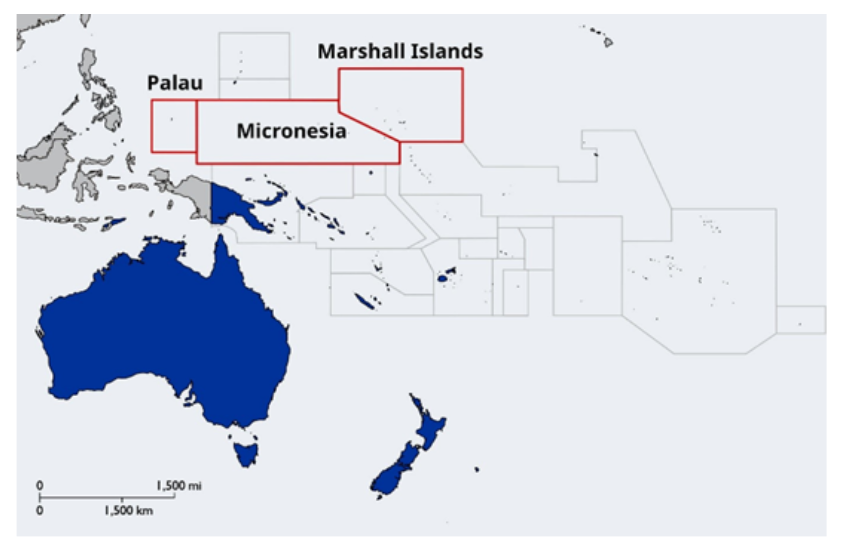
Papua New Guinea - Edukemy Current Affairs
Why in news? Recently, Ministry of Electronics and Information Technology (MeitY) of India and the Ministry of Information and Communication Technology (MICT) of Papua New Guinea have signed a Memorandum of Understanding (MoU) to share INDIA STACK.
About:
- INDIA STACK is a collection of open APIs and digital public goods that aim to facilitate identity, data, and payment services on a large scale.
Papua New Guinea
- Papua New Guinea, island country in the southwestern Pacific Ocean.
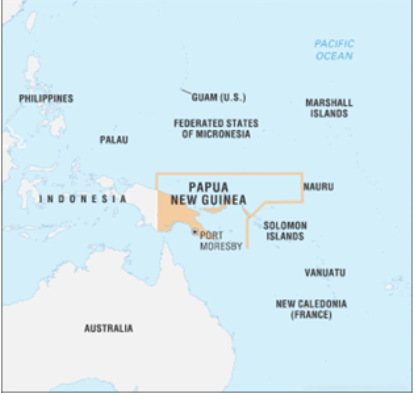
- It shares land borders with Indonesia and water border with Australia, and the Solomon Islands.
- It includes the eastern half of New Guinea and many small offshore islands.
- The capital is Port Moresby, Papua New Guinea is mainly mountainous but has low-lying plains in southern New Guinea.
- A country of immense cultural and biological diversity, it’s known for its beaches and coral reefs.
Cocos (Keeling) Islands - Edukemy Current Affairs
Why in news? Recently, Two Indian military aircraft visited Australia’s strategic Cocos Islands.
About:

- Expanding the strategic reach of the Indian military and improving interoperability with Australia, an Indian Navy Dornier maritime patrol aircraft and an Indian Air Force (IAF) C-130 transport aircraft visited Australia’s Cocos (Keeling) Islands (CKI) in the Southern Indian Ocean, close to Indonesia.
Cocos (Keeling) Islands
- The Cocos (Keeling) Islands are a remote territory of Australia in the Indian Ocean, approximately 3,000 km northwest of Perth in Western Australia, and comprise two coral atolls made up of 27 smaller islands.
- The territory’s administrative headquarters are on West Island in the southern atoll.
Deepor Beel - Edukemy Current Affairs
Why in news? Deepor Beel, a vital wetland in Guwahati, Assam, faces anthropogenic threats despite its protected status.
About:
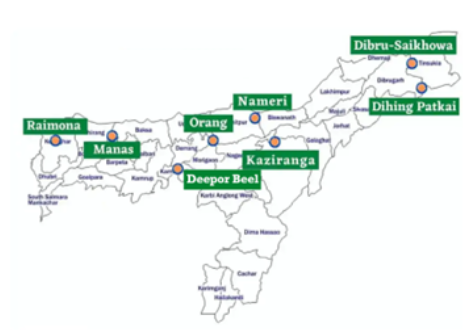
- Word ‘deepor’ comes from the Sanskrit word dipa, which means elephants and ‘beel’ means lake in Assamese.
- It is one of the largest freshwater lakes in Assam and an Important Bird Area by Birdlife International.
- Deepor Beel has been designated as a Ramsar Site in November 2002 and it is the only Ramsar site in Assam.
- It is located towards the southwest of Guwahati city, Assam and is the erstwhile water channel of River Brahmaputra.
- It constitutes a unique habitat for aquatic flora and avian fauna.
- Deepor Beel adjoins the Rani Reserve Forest from where herds of elephants come periodically to forage in the wetland.
- Some globally threatened birds are supported, including Spot-billed Pelican, Lesser Greater Adjutant Stork and Baer's Pochard.
Arash-Dorra Gas Field - Edukemy Current Affairs
Why in news? Recently, Saudi Arabia and Kuwait have rejected Iran’s claims to a disputed gas field located in the offshore area known as Arash in Iran and Dorra in Kuwait and Saudi Arabia.
About:
- The offshore field, known as Arash in Iran and Dorra in Kuwait and Saudi Arabia, has long been a focal point of contention between the three countries.
- The field holds significant natural gas reserves, making it a highly valuable resource for all involved parties.
- It was discovered in 1967. It began production in 2013 and produces natural gas and condensates.
- The dispute over this field dates back to the 1960s between Saudi Arabia, Iran and Kuwait.

Mali - Edukemy Current Affairs
Why in news? Recently, France and Mali have suspended issuing visas to each other's citizens in a heightening of a row between the former allies.
About:
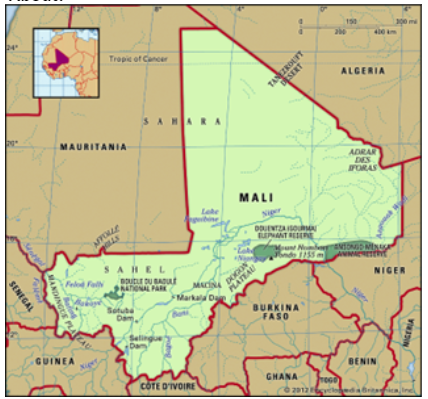
- Mali is a landlocked country of western Africa, with the Niger River flowing through its central region.
- It is bounded on the north by Algeria, on the east by Niger and Burkina Faso, on the south by Côte d’Ivoire and Guinea, and on the west by Senegal and Mauritania.
- It is the eighth-largest country in Africa.
- The climate is hot and dry in the north, and more humid in the south.
- The major ethnic groups in Mali are the Bambara, Malinke, Songhai, and Tuareg.
- The Desert covers about 65 per cent of Mali’s total area.
Indonesia’s Aceh Province
Why in news? Recently, Authorities in Indonesia’s Aceh province have issued an order requiring men and women not immediately related or married to stay apart in vehicles and public spaces.
About:
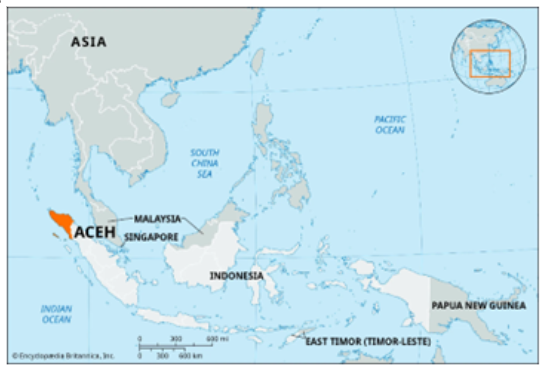
- This move aims to enforce stricter adherence to Islamic law in the ultra-conservative province of Aceh.
Aceh Province
- Aceh is a province in Indonesia located on the northwestern tip of Sumatra Island.
- Aceh is surrounded by water on three sides: the Indian Ocean to the west and north and the Strait of Malacca to the east.
- Its boundary with the province of North Sumatra (Sumatera Utara) to the southeast extends north-south from Salahaji, on the northeastern coast just north of Aru Bay, to a point on the southwestern coast about midway between Singkil and Barus.
- The capital is Banda Aceh.
Hawaii, USA - Edukemy Current Affairs
Why in news? Recently, A devastating wildfire swept through Maui, Hawaii, leading to destruction, fatalities, and evacuations.
About:

- The Hawaiian Islands are an archipelago of eight major volcanic islands, several atolls, and numerous smaller islets in the North Pacific Ocean.
- The eight major islands at the eastern end of the chain are, from west to east, Niihau, Kauai, Oahu, Molokai, Lanai, Kahoolawe, Maui, and Hawaii.
- The capital is Honolulu, located on the island of Oahu.
- Formation:
- The Hawaiian Islands were formed by a hot spot occurring in the middle of the Pacific Plate. While the hot spot itself is fixed, the plate is moving. So, as the plate moved over the hot spot, the string of islands that make up the Hawaiian Island chain was formed.
- Maui is an island in the Central Pacific, part of the Hawaiian archipelago.
Share the article
Get Latest Updates on Offers, Event dates, and free Mentorship sessions.

Get in touch with our Expert Academic Counsellors 👋
FAQs
UPSC Monthly Current Affairs refers to a compilation of relevant and significant news, events, and developments from various fields that are important for the UPSC (Union Public Service Commission) civil services examination. This curated collection helps aspirants stay updated with recent happenings, enhancing their knowledge and analytical skills, which are crucial for various stages of the UPSC exam, including the Preliminary, Main, and Interview rounds.
UPSC Monthly Current Affairs plays a crucial role in UPSC preparation as it helps aspirants cover a broader range of current affairs topics within a specific time frame. By reviewing monthly current affairs, aspirants can gain a deeper understanding of significant events and issues, analyze their implications, and connect them with the UPSC syllabus. It aids in building a holistic perspective and enhances the ability to answer questions effectively.
UPSC Monthly Current Affairs provides a comprehensive overview of important events and developments across various domains. It covers national and international news, government policies, economic updates, scientific advancements, environmental issues, social issues, sports events, cultural festivals, and more. The content typically includes summaries, analysis, infographics, and practice questions to facilitate effective learning and revision.
You can access UPSC Monthly Current Affairs through various sources and platforms:
- Online Education Websites: Websites like Edukemy, Unacademy, BYJU'S, and others often provide monthly current affairs compilations tailored specifically for UPSC aspirants.
- Newspapers and Magazines: Reputed newspapers like The Hindu, The Indian Express, and magazines like Yojana and Kurukshetra provide comprehensive coverage of current affairs. Many coaching institutes also compile and publish monthly magazines focusing on UPSC-related current affairs.
- Mobile Apps: There are dedicated mobile apps that are available on platforms like Google Play Store and Apple App Store that provide UPSC-focused current affairs content. Edukemy's app is the best in the industry for current affairs preparation.
- YouTube Channels and Podcasts: Many educators and institutes have YouTube channels and podcasts that discuss and analyze current affairs topics relevant to the UPSC exam. Visit Edukemy's YouTube channel and get covered with all the current affairs required for UPSC preparation.
- Coaching Institutes: Many offline and online coaching institutes like Edukemy offer UPSC Monthly Current Affairs as part of their study materials or subscription plans.
When accessing UPSC Monthly Current Affairs, ensure that the content is reliable, well-researched, and covers a wide range of topics relevant to the UPSC syllabus. It's essential to stay updated with national and international developments, government policies, socio-economic issues, and more to excel in the UPSC exam.


